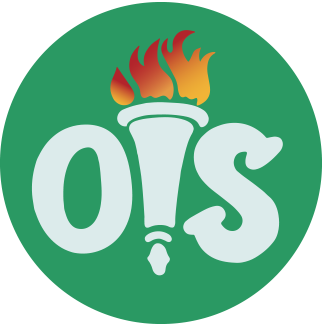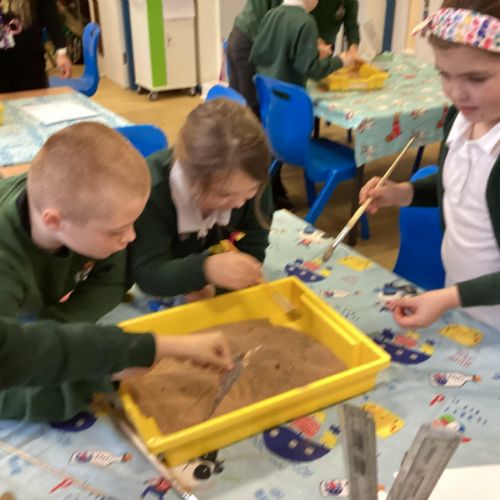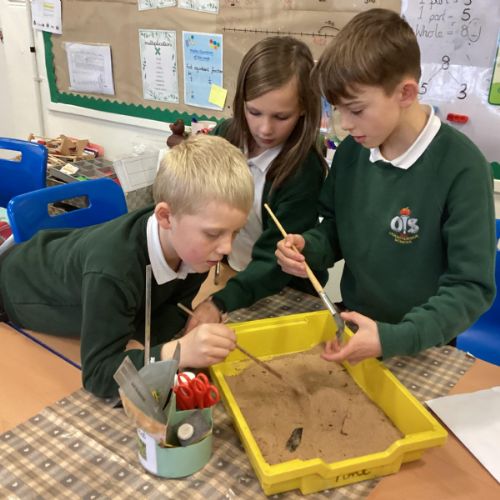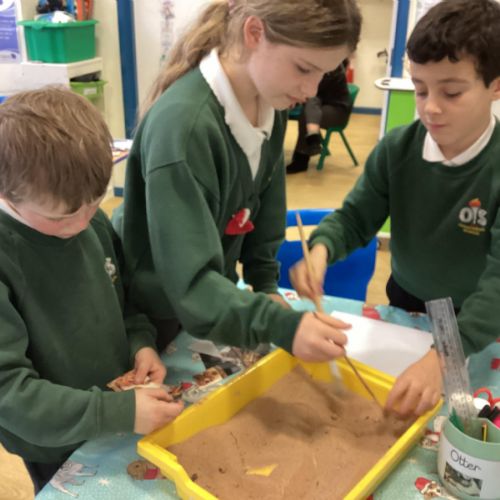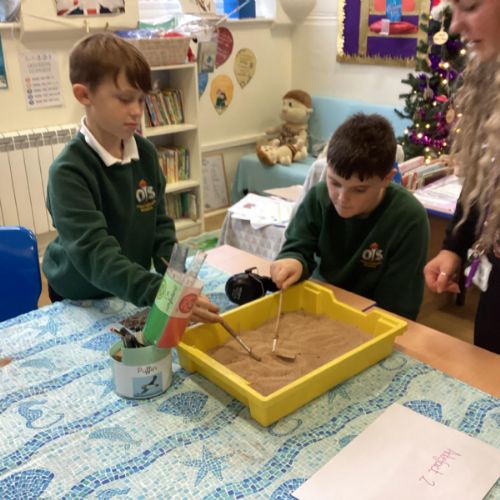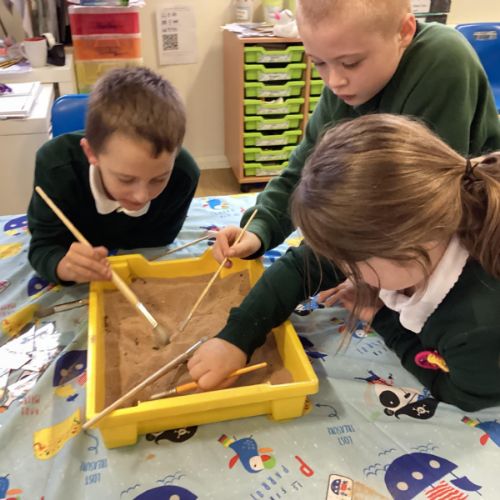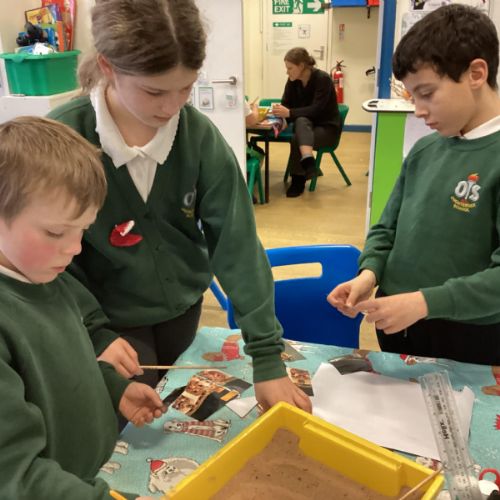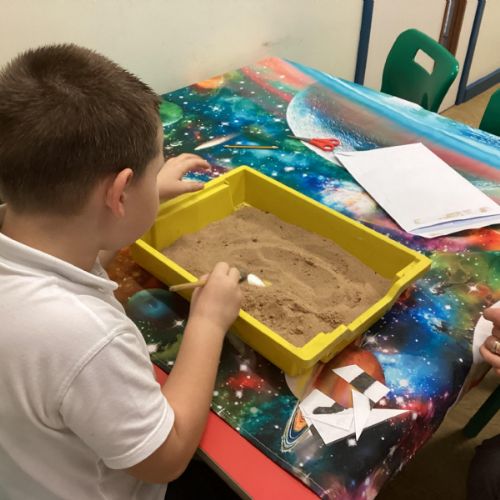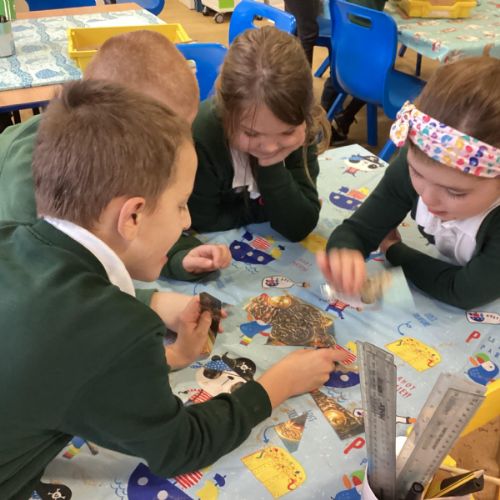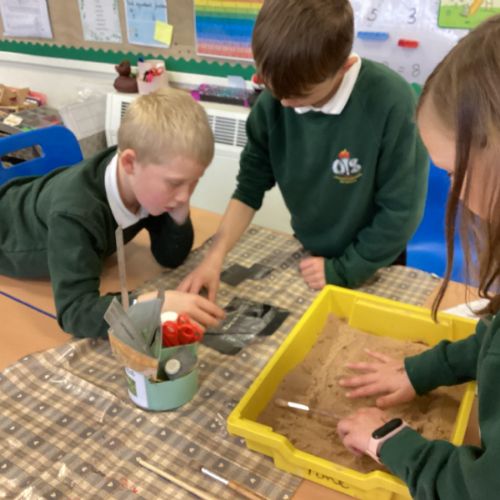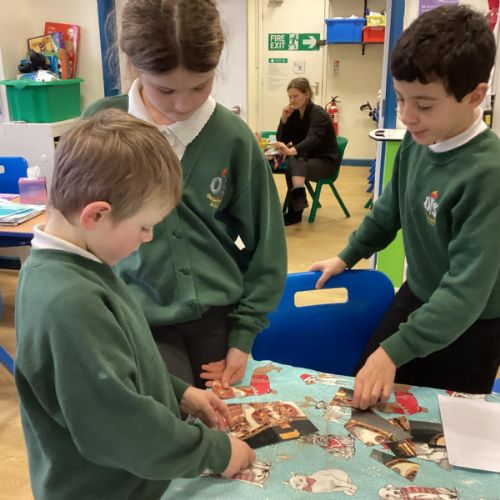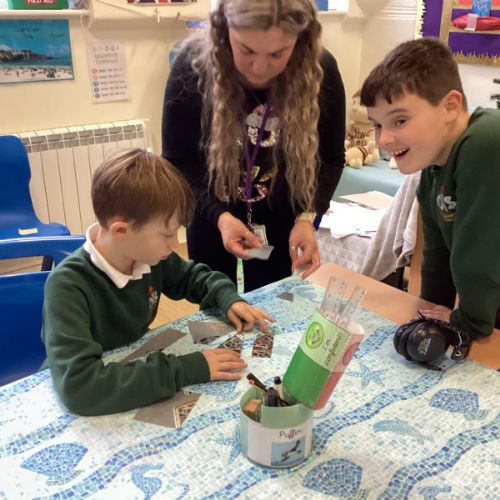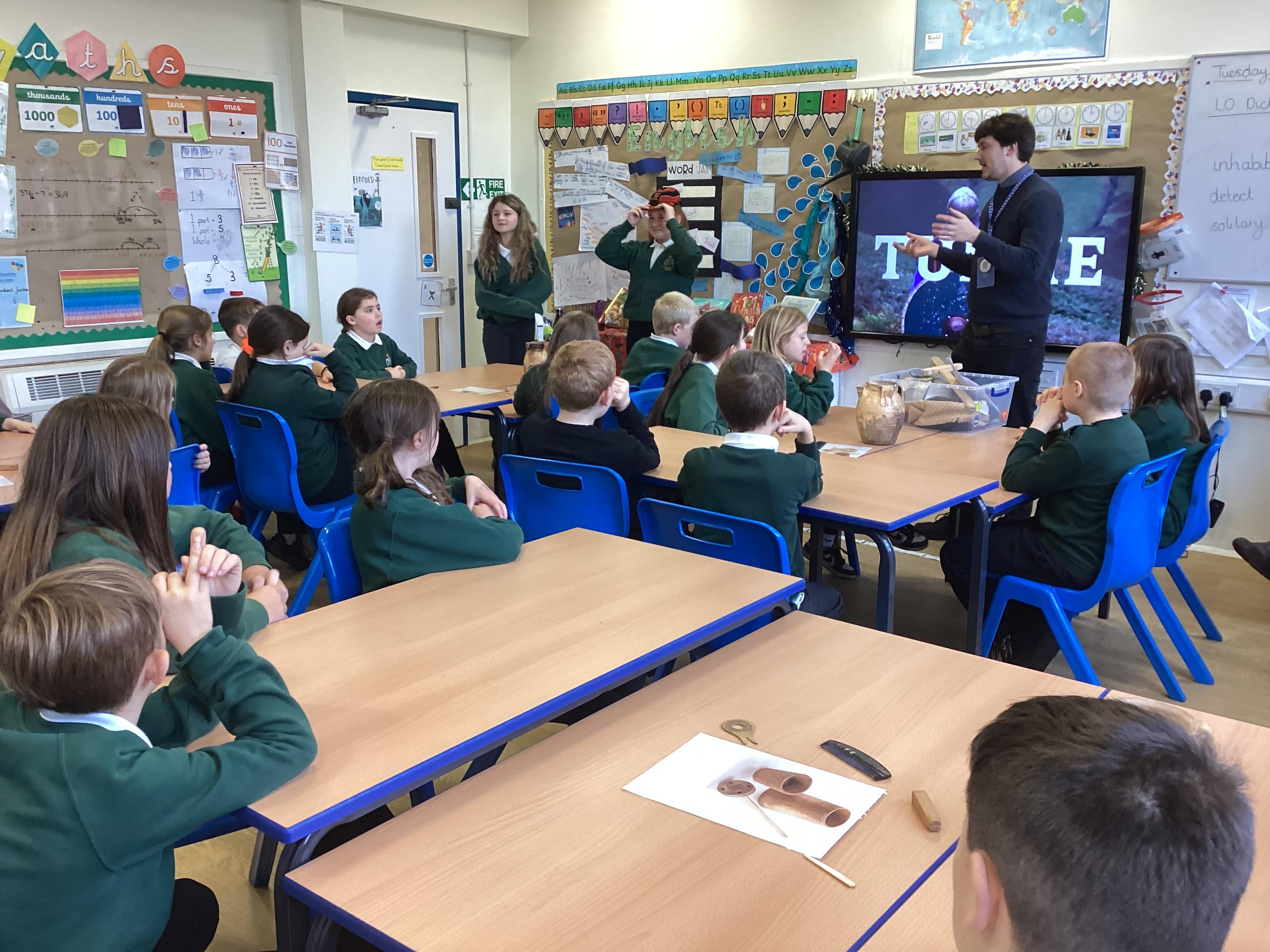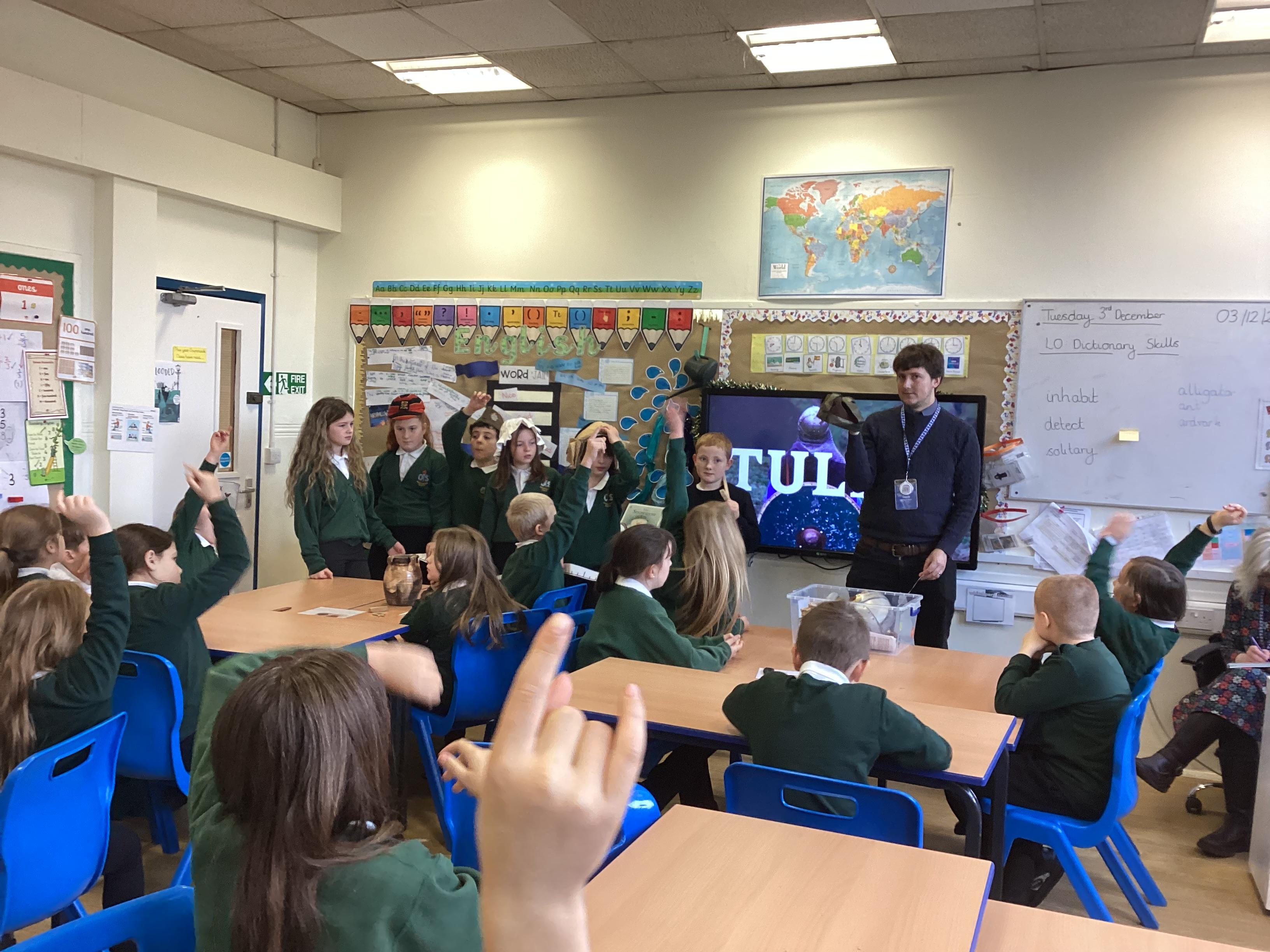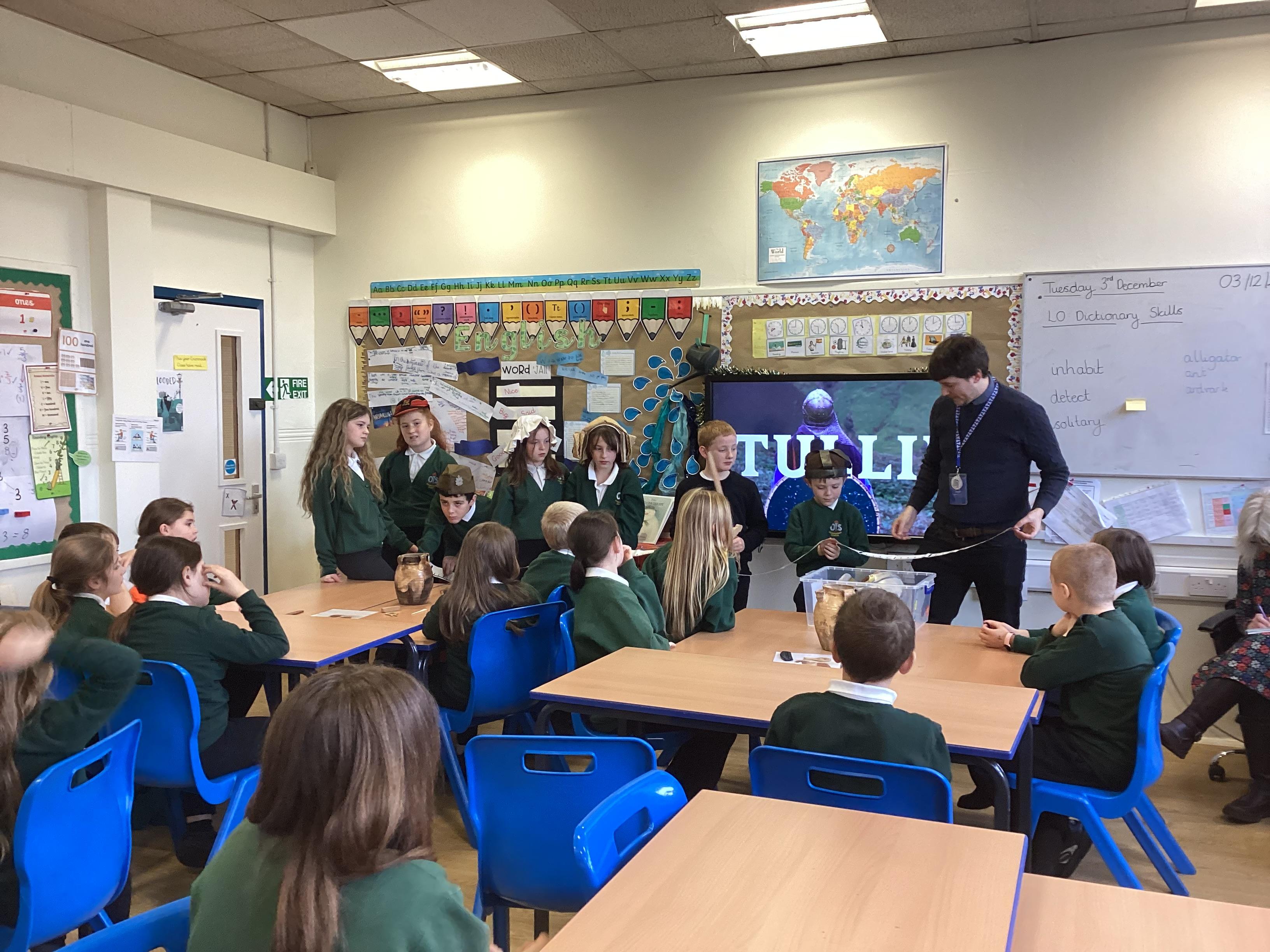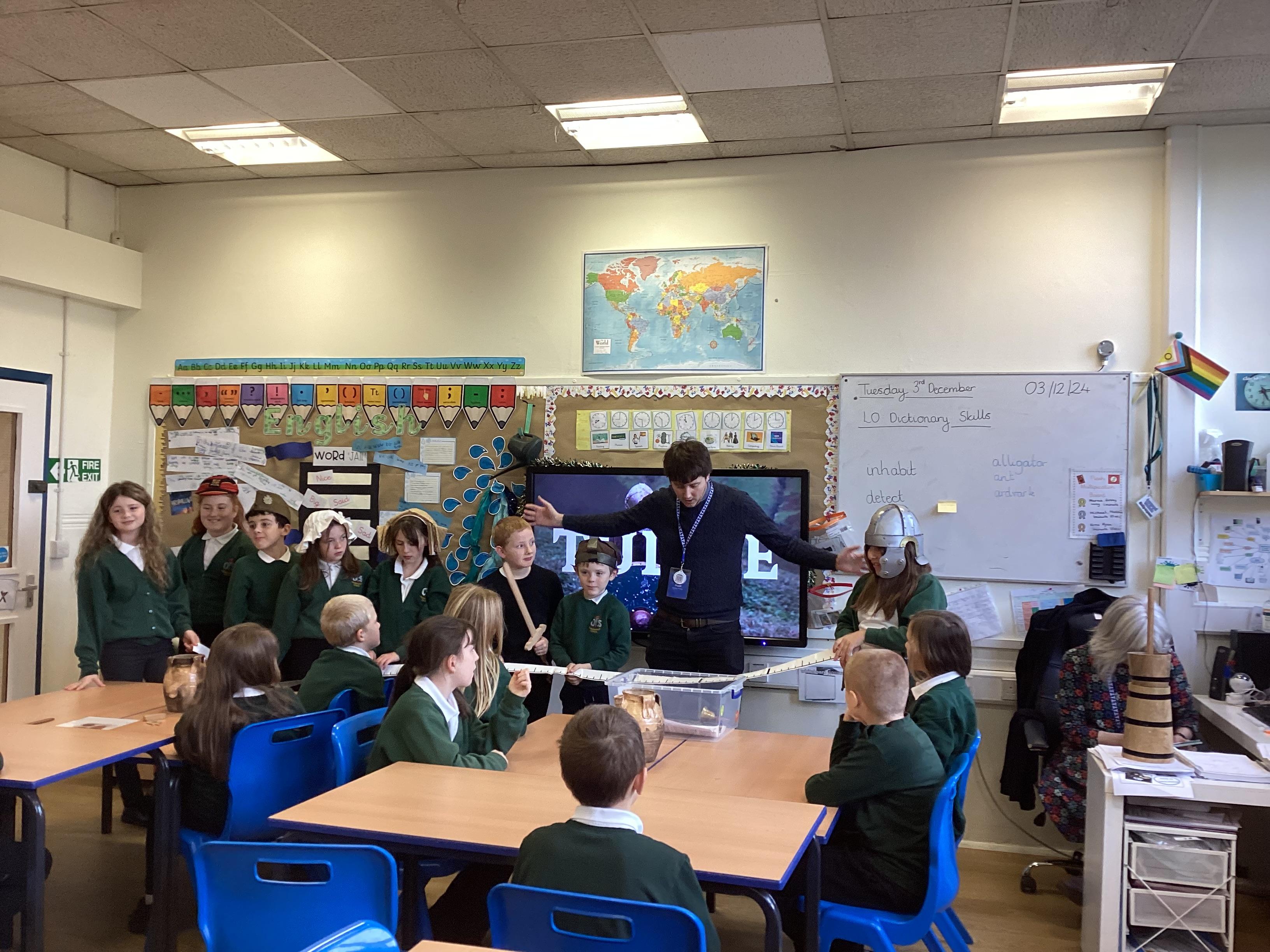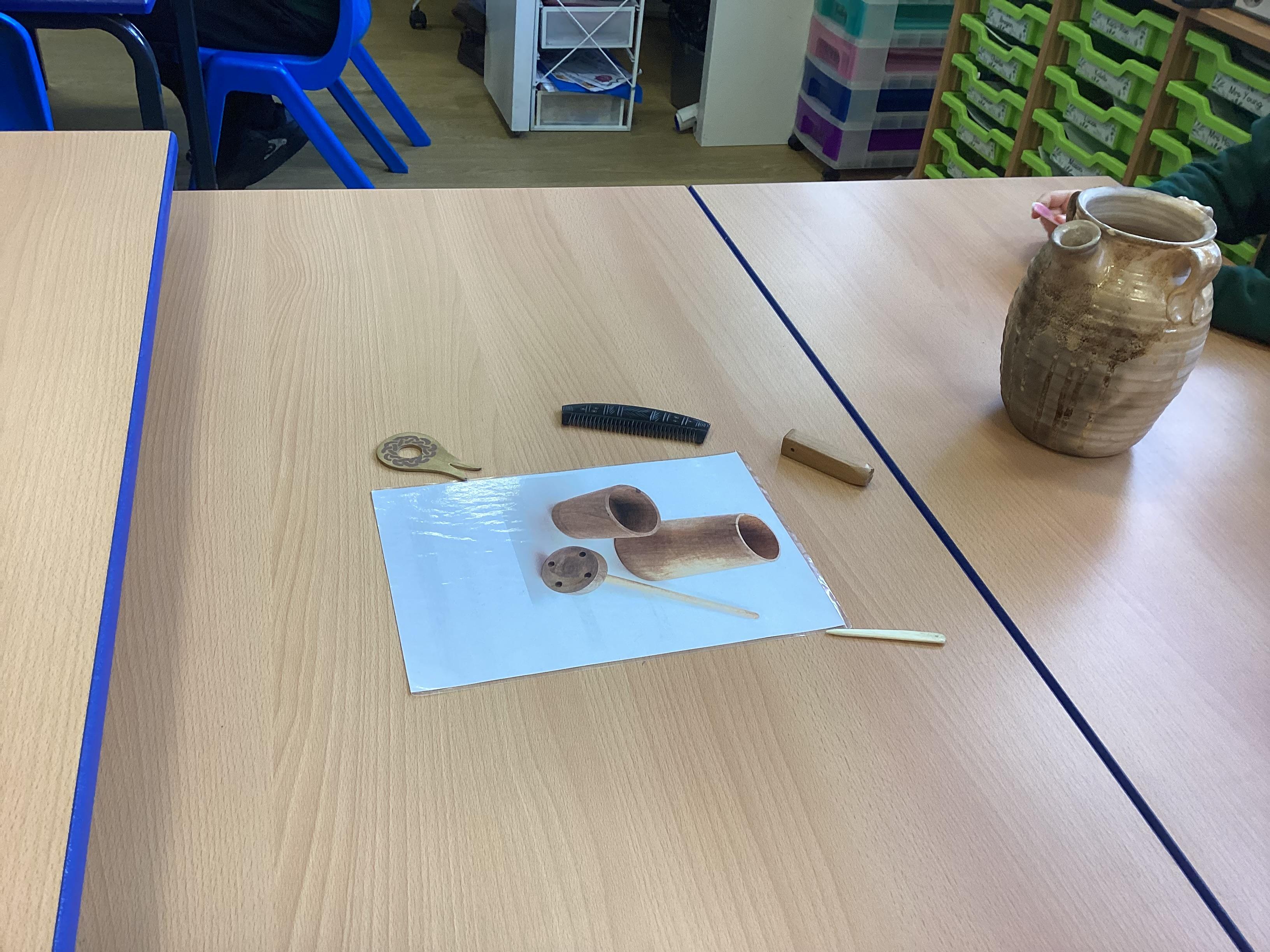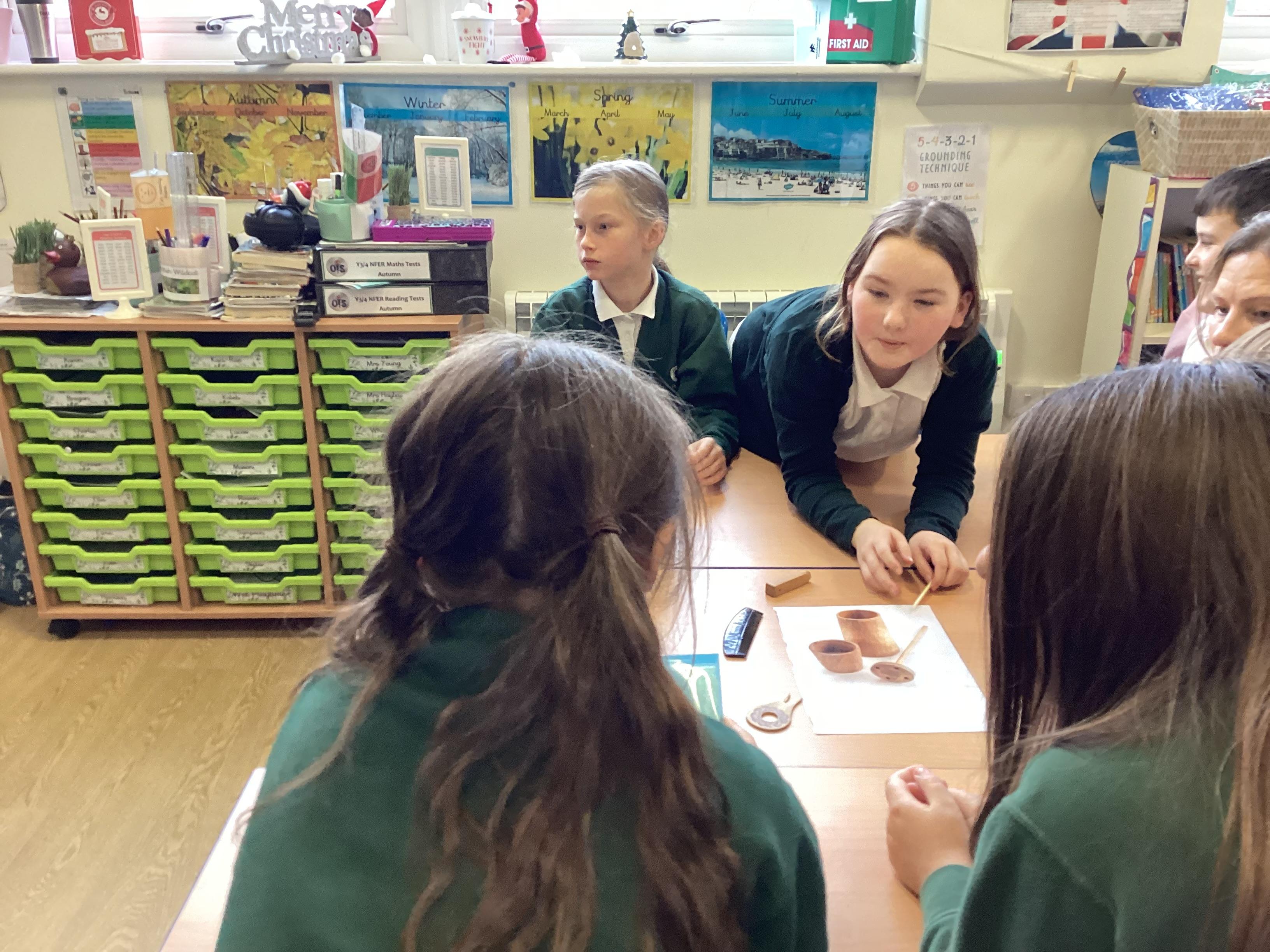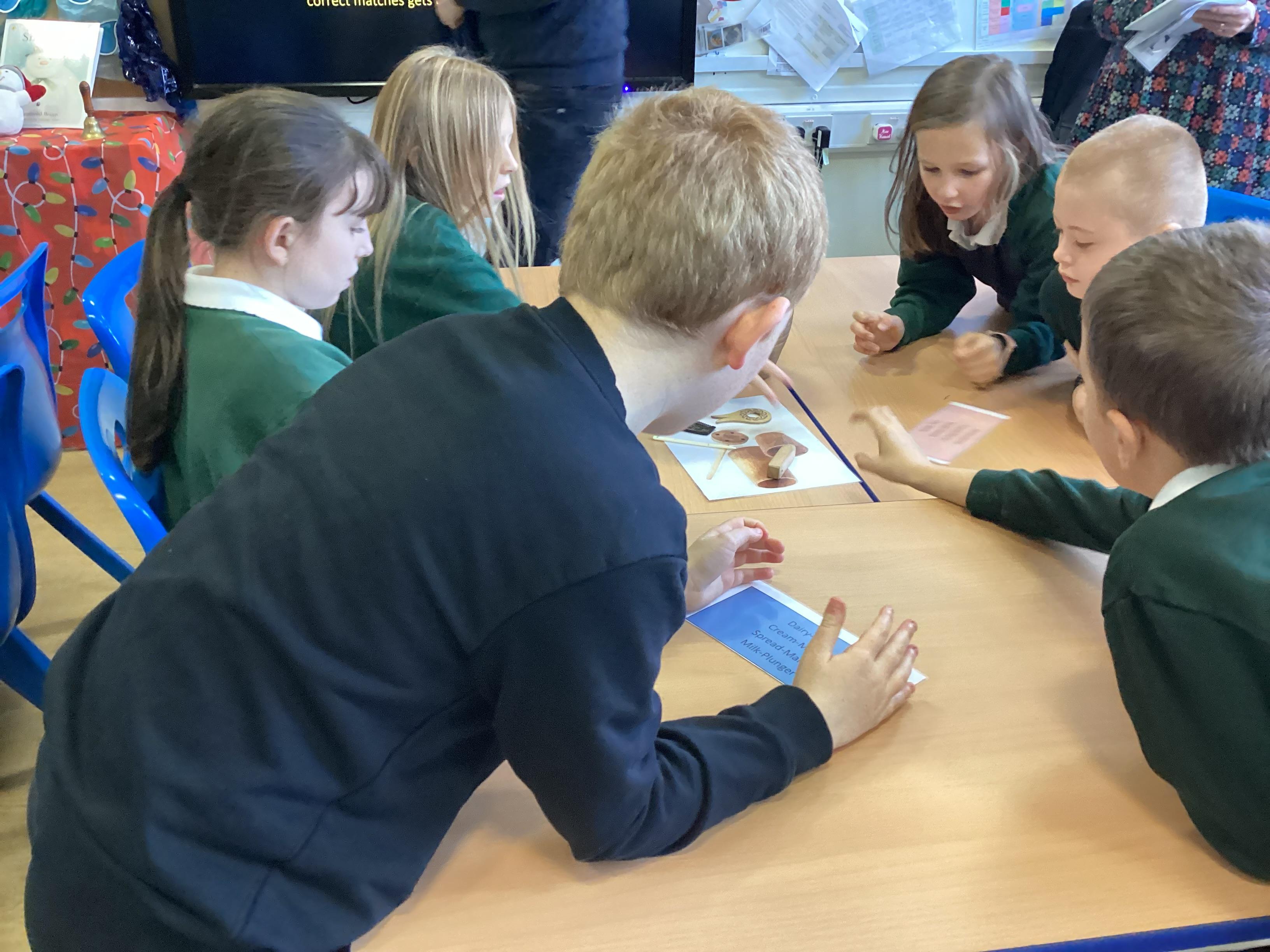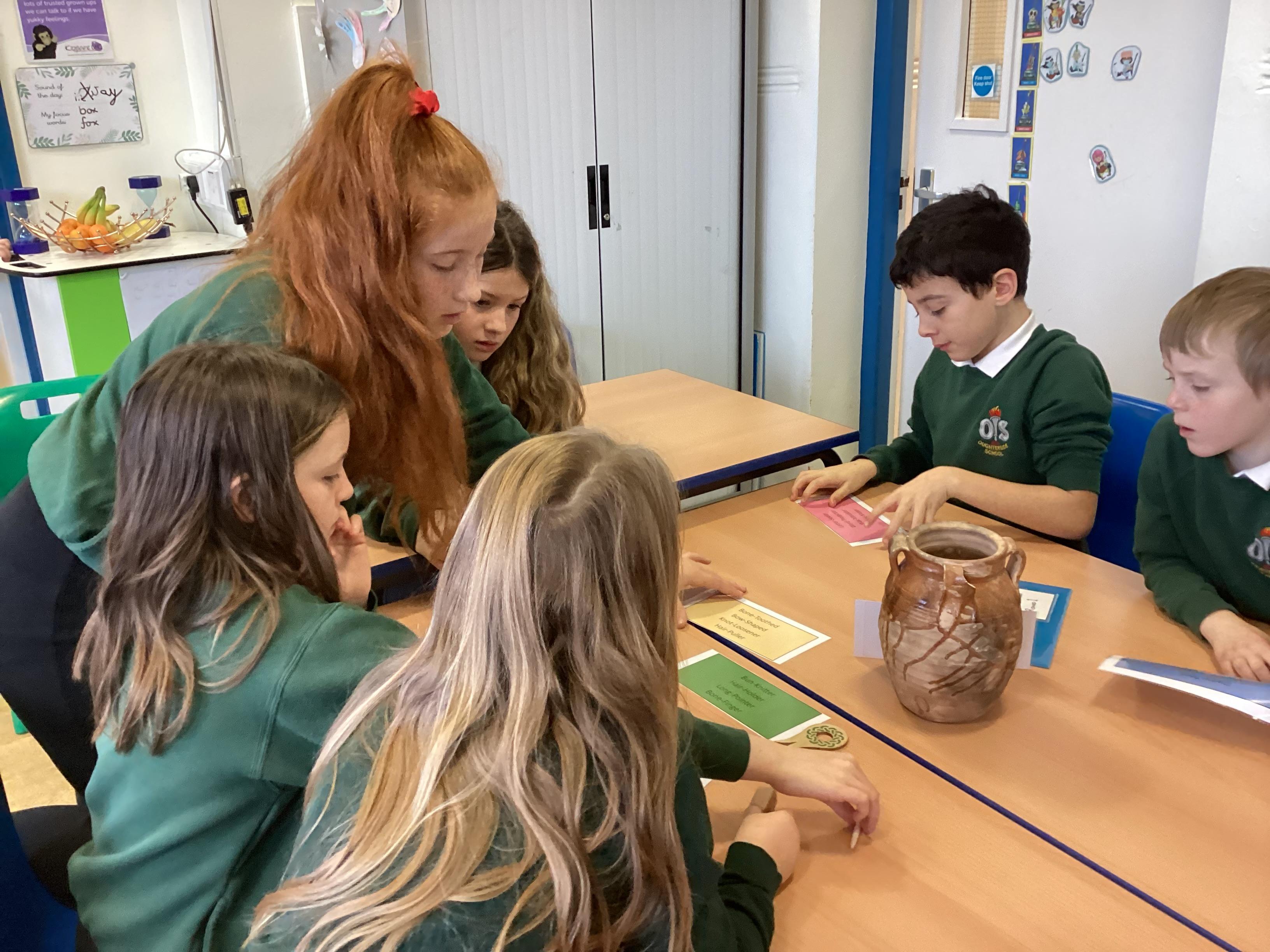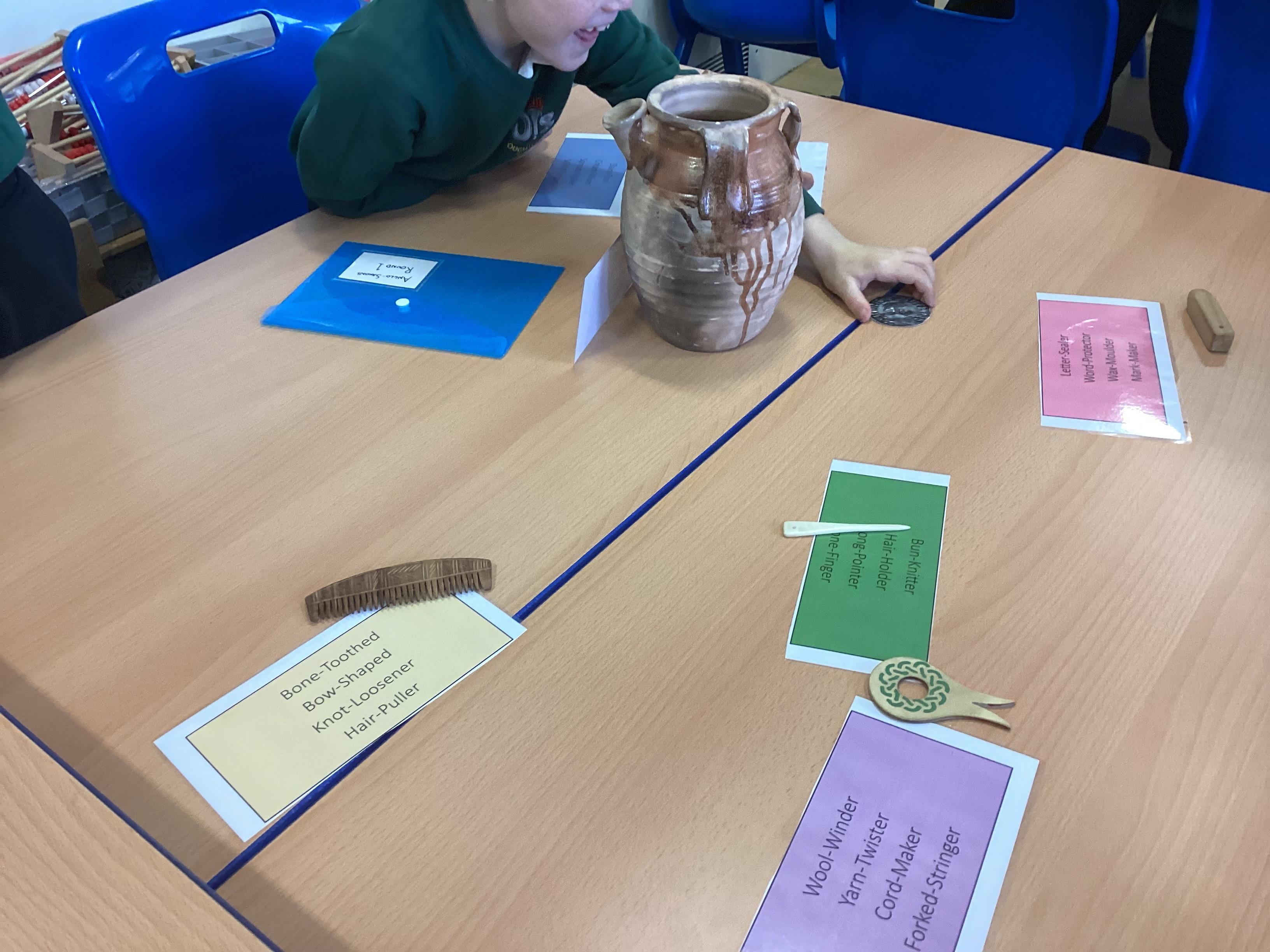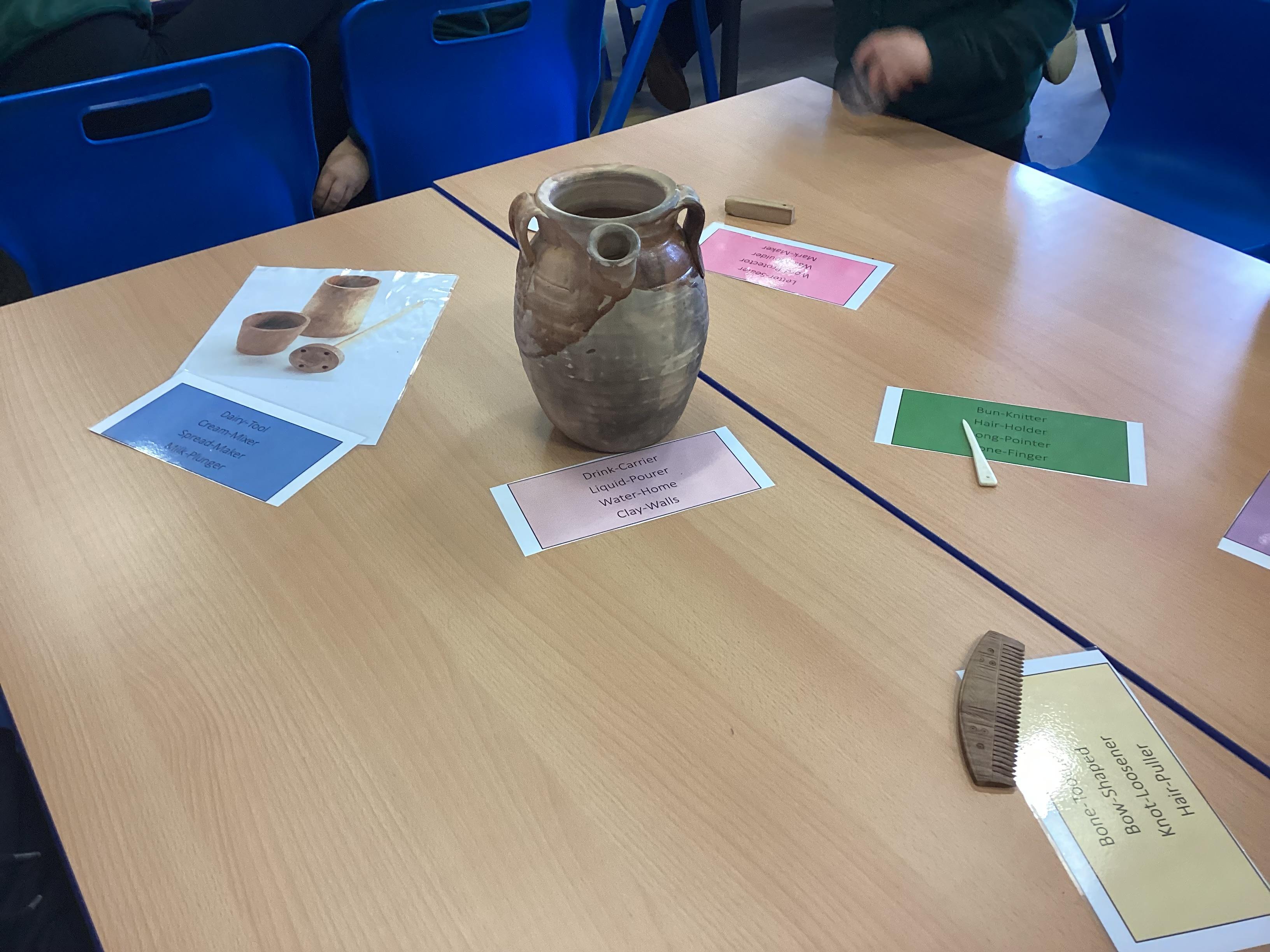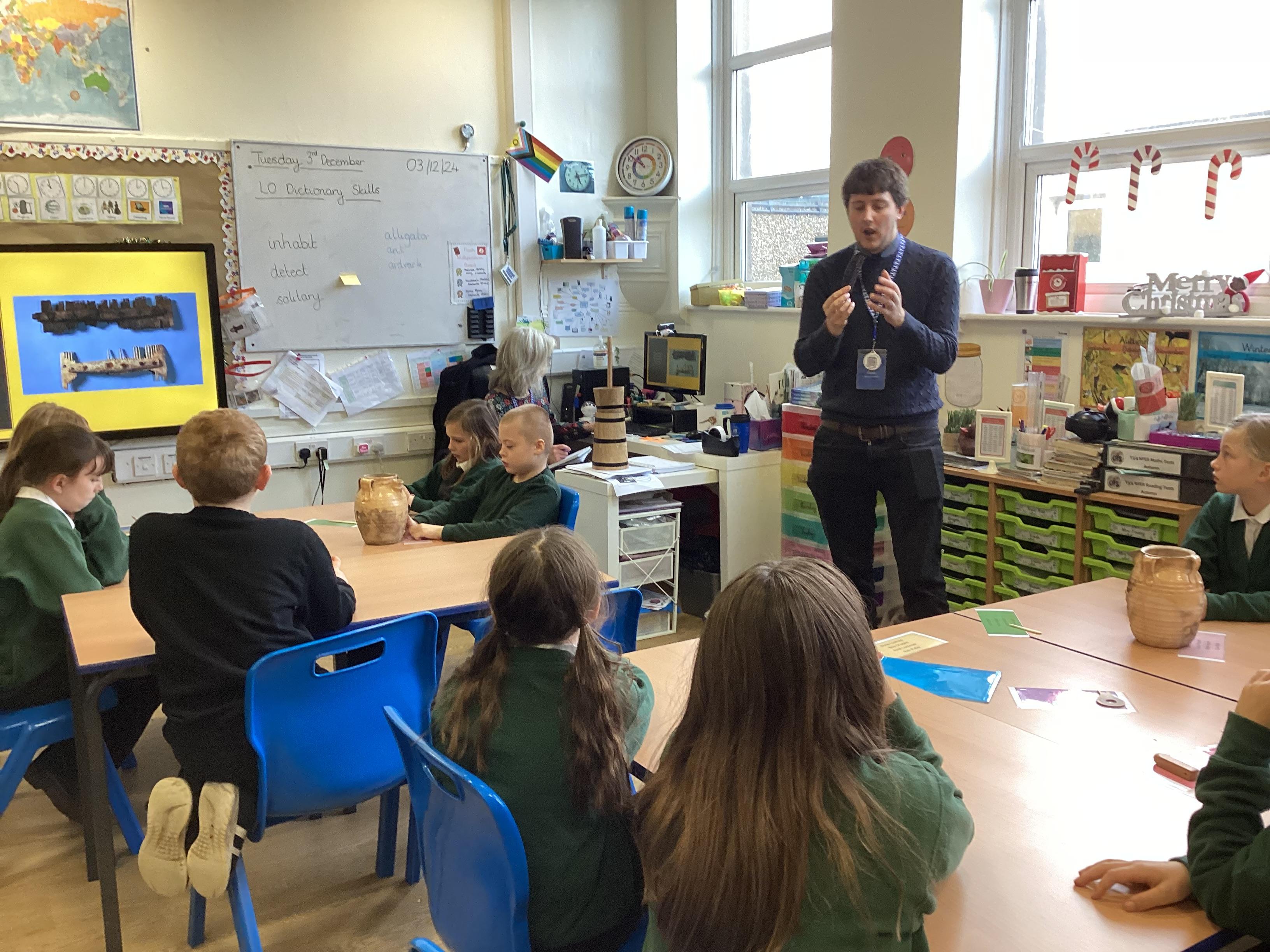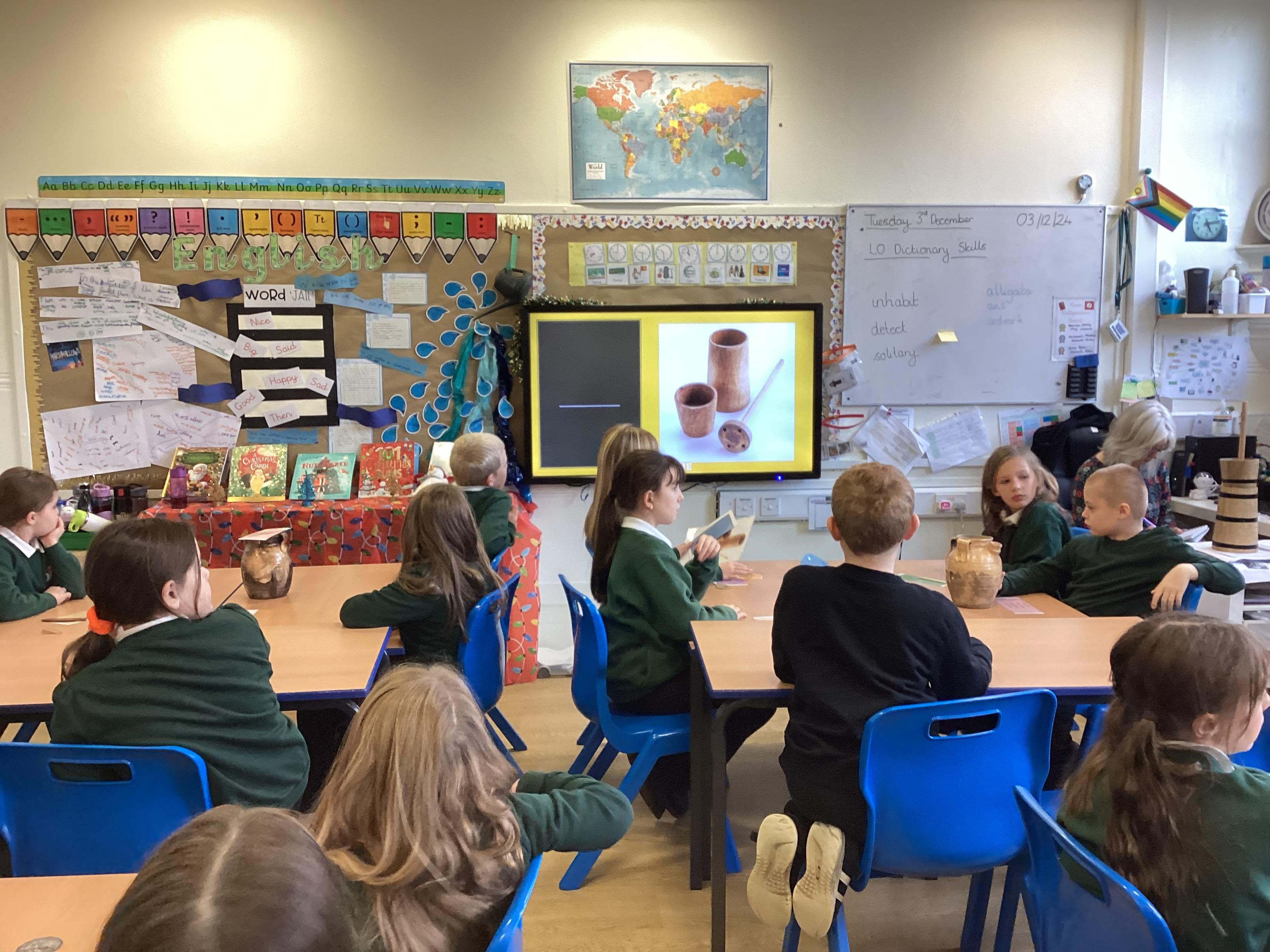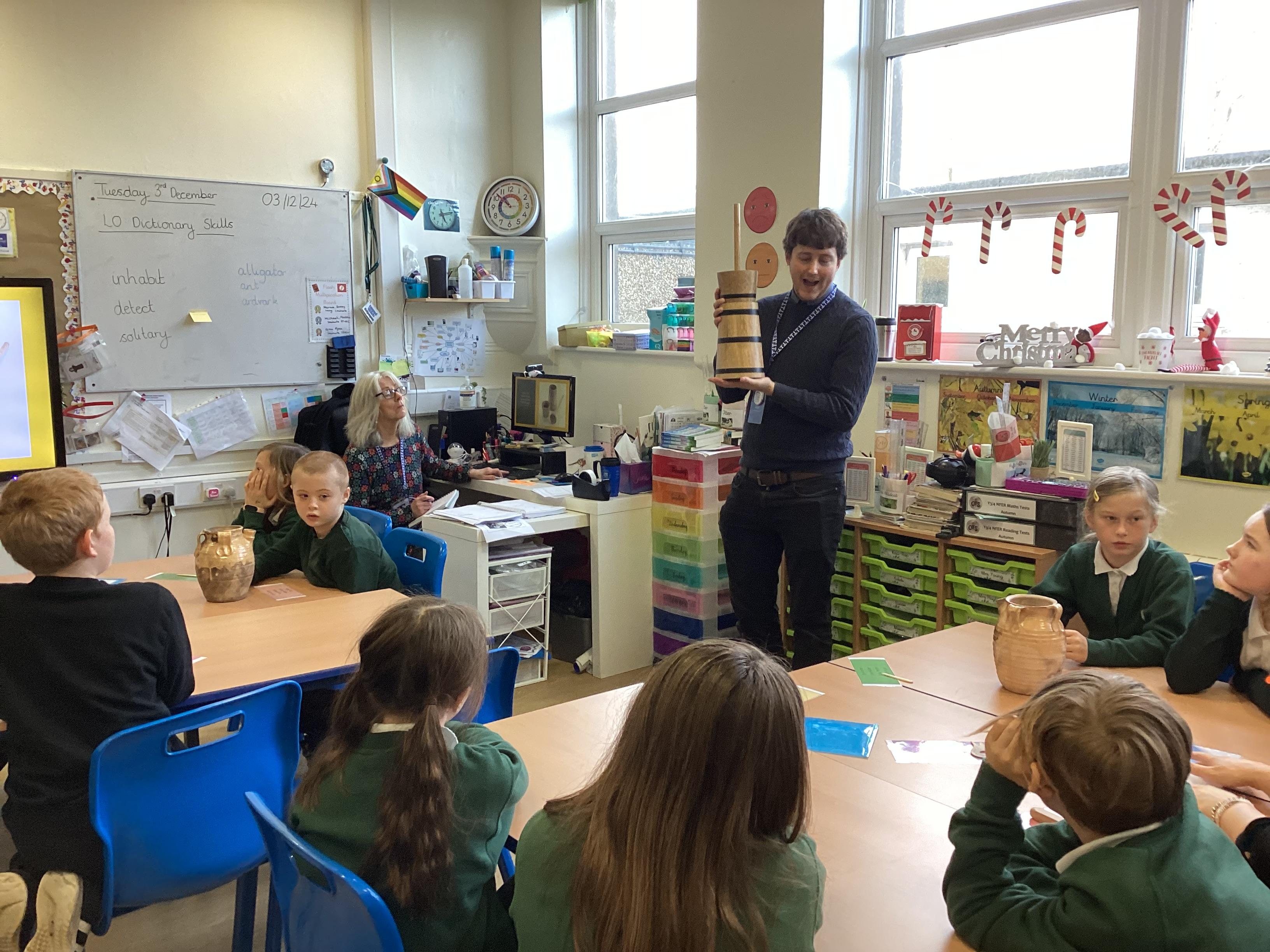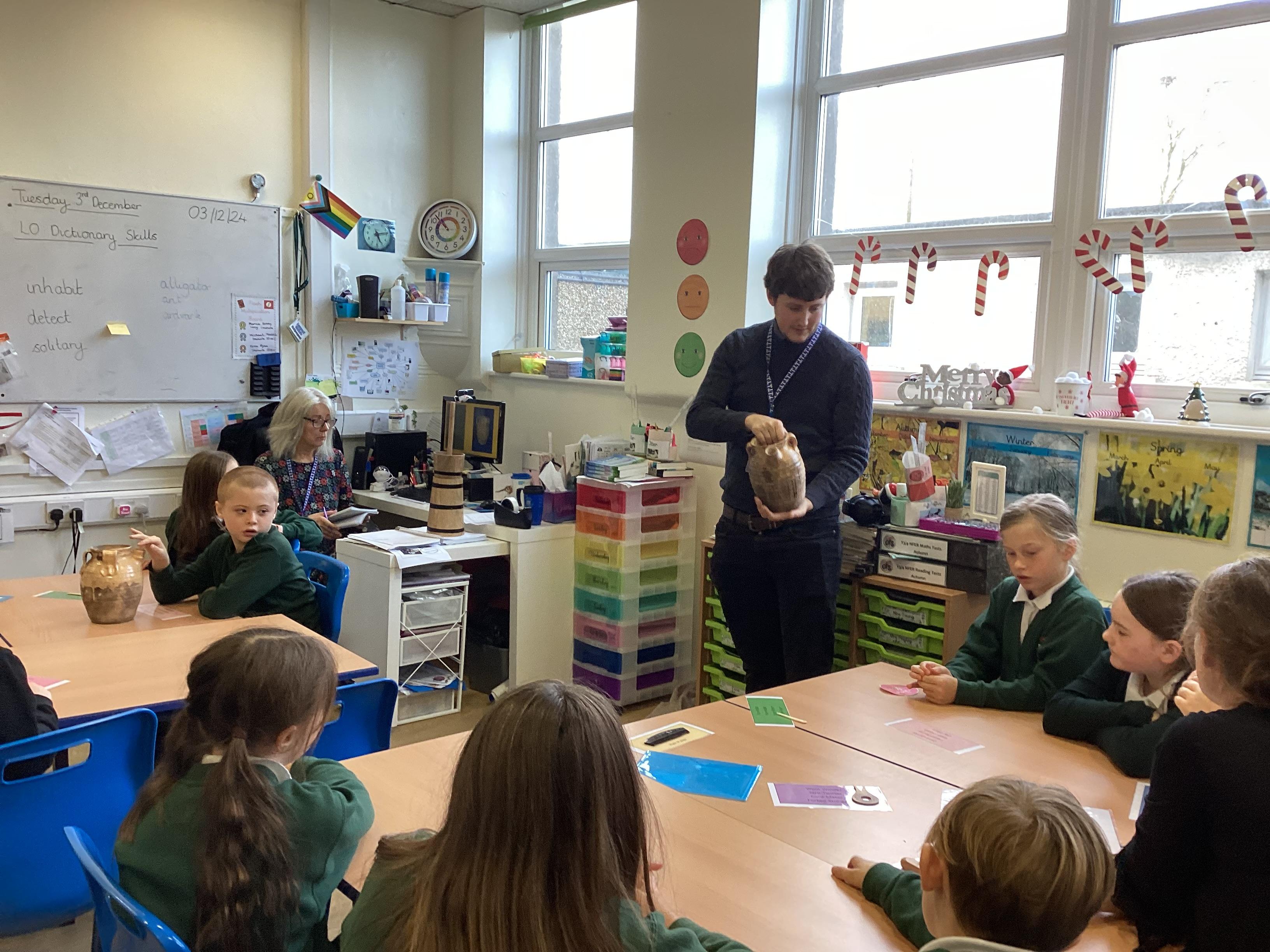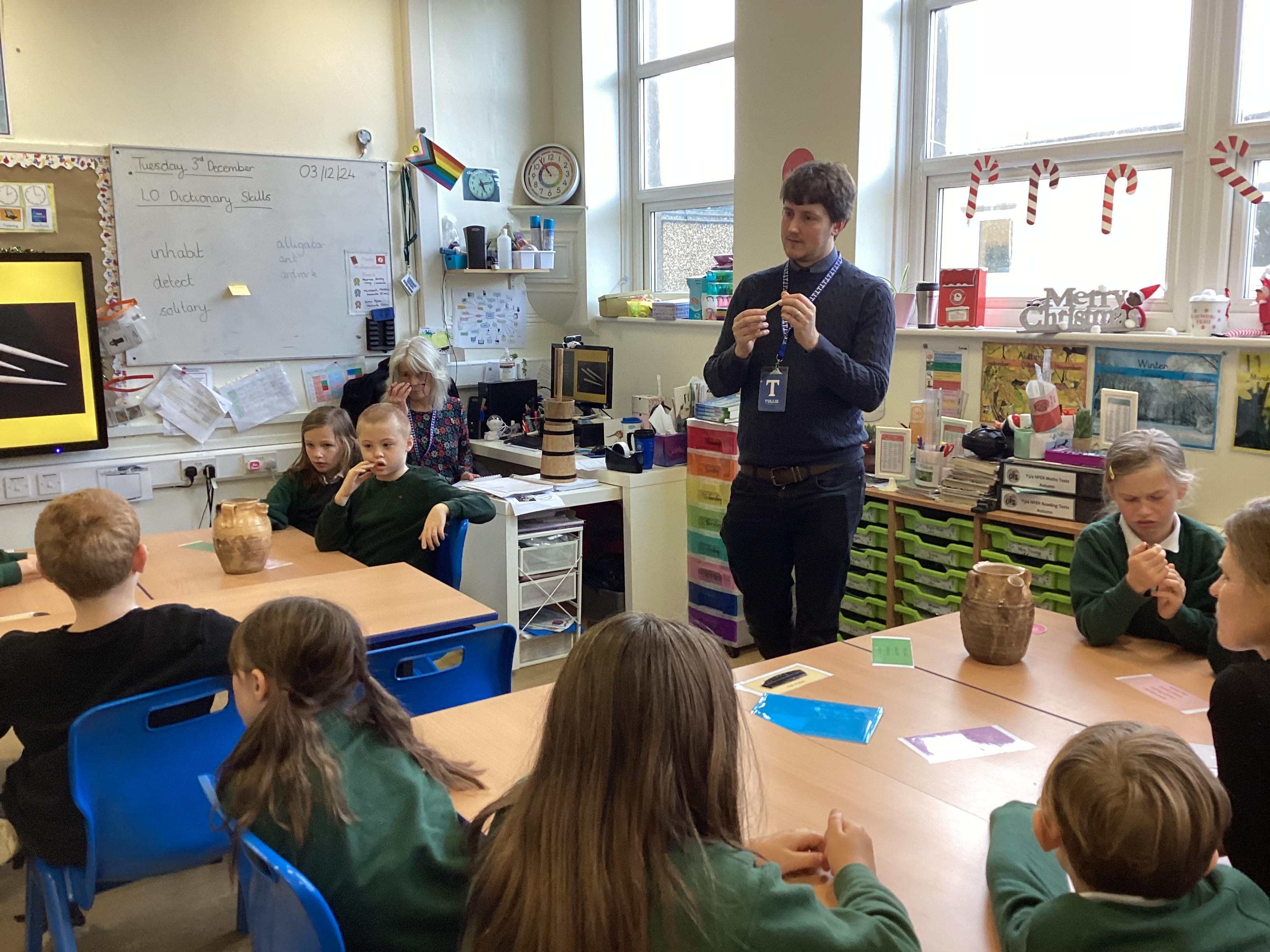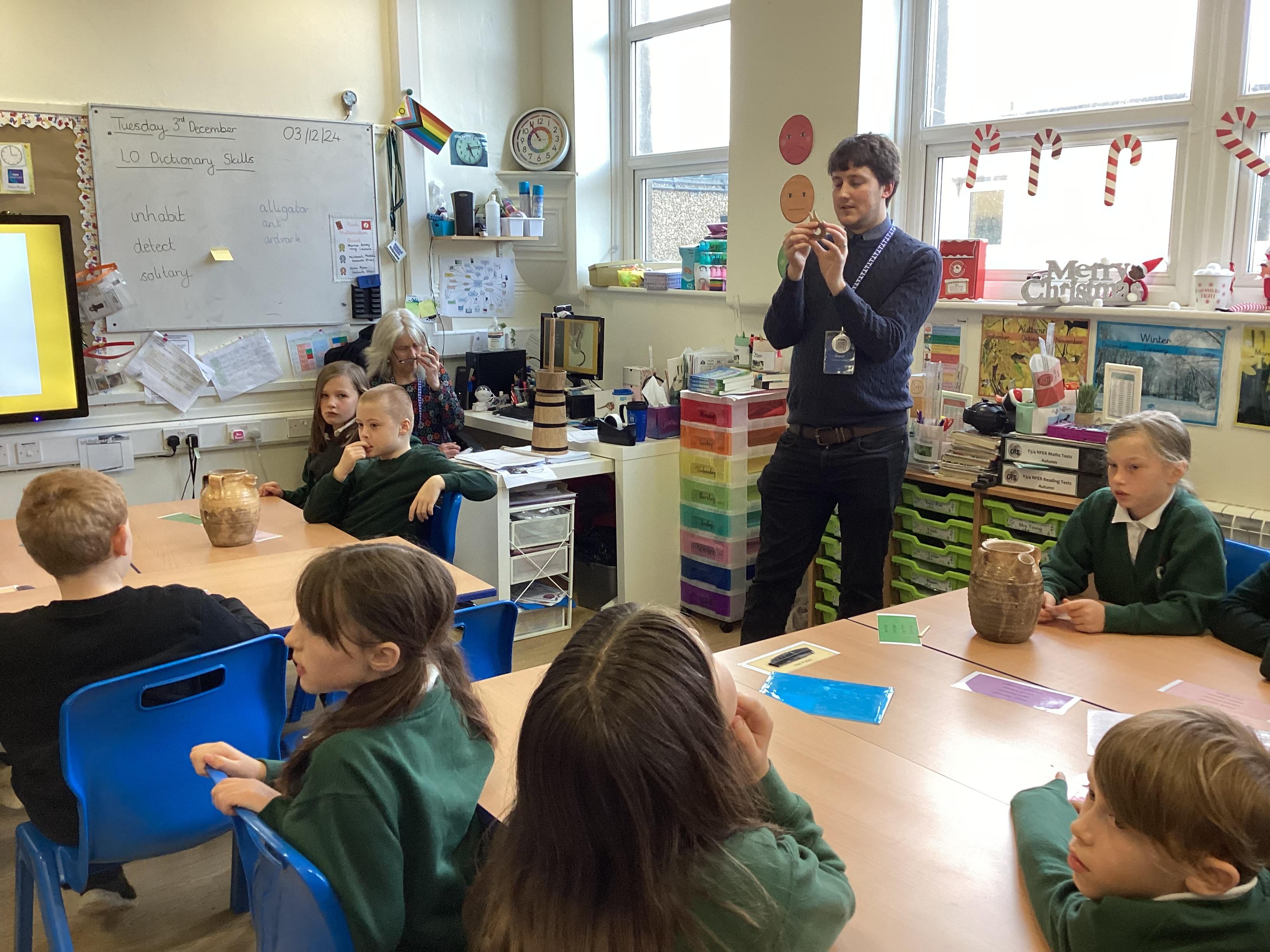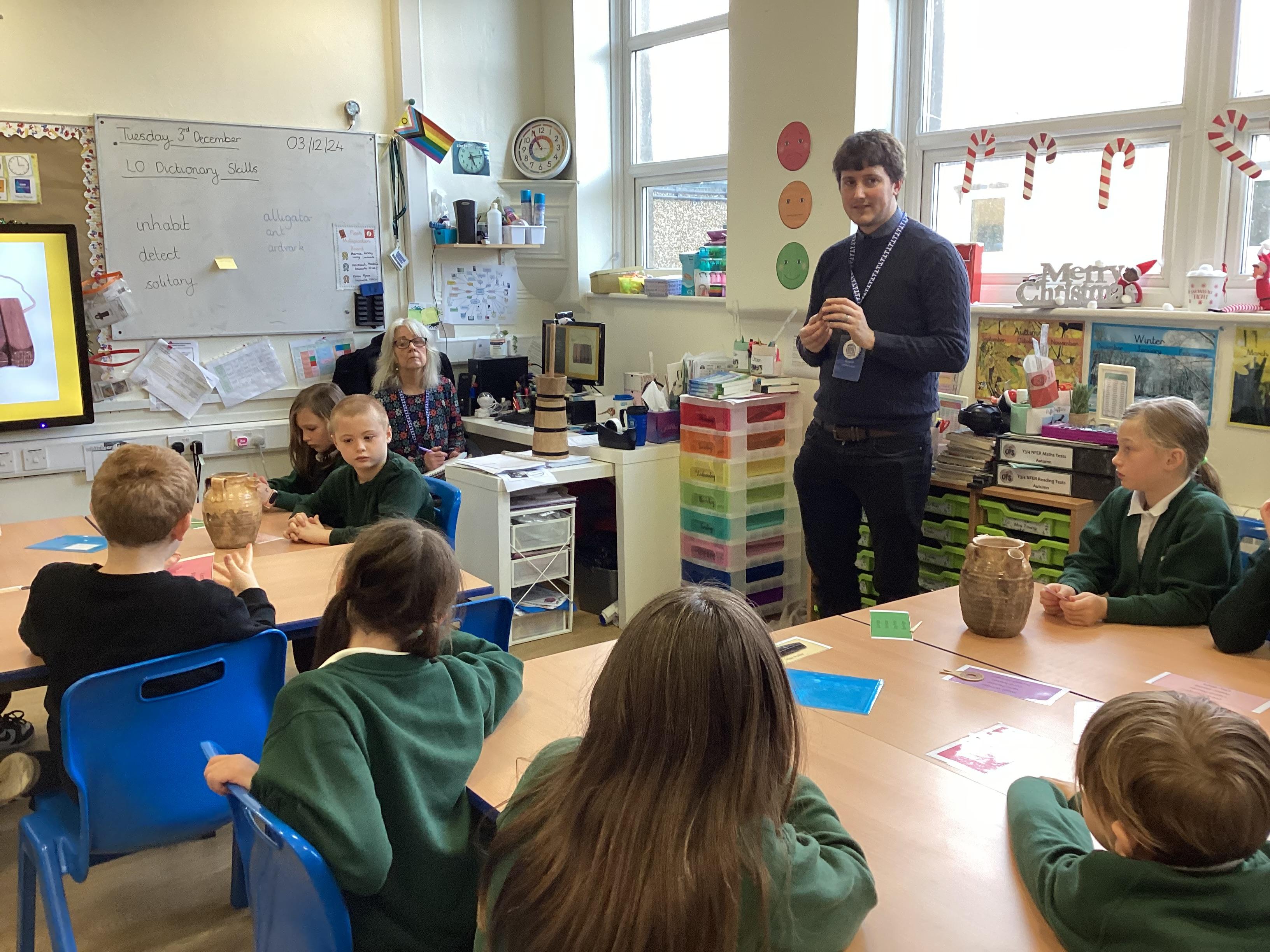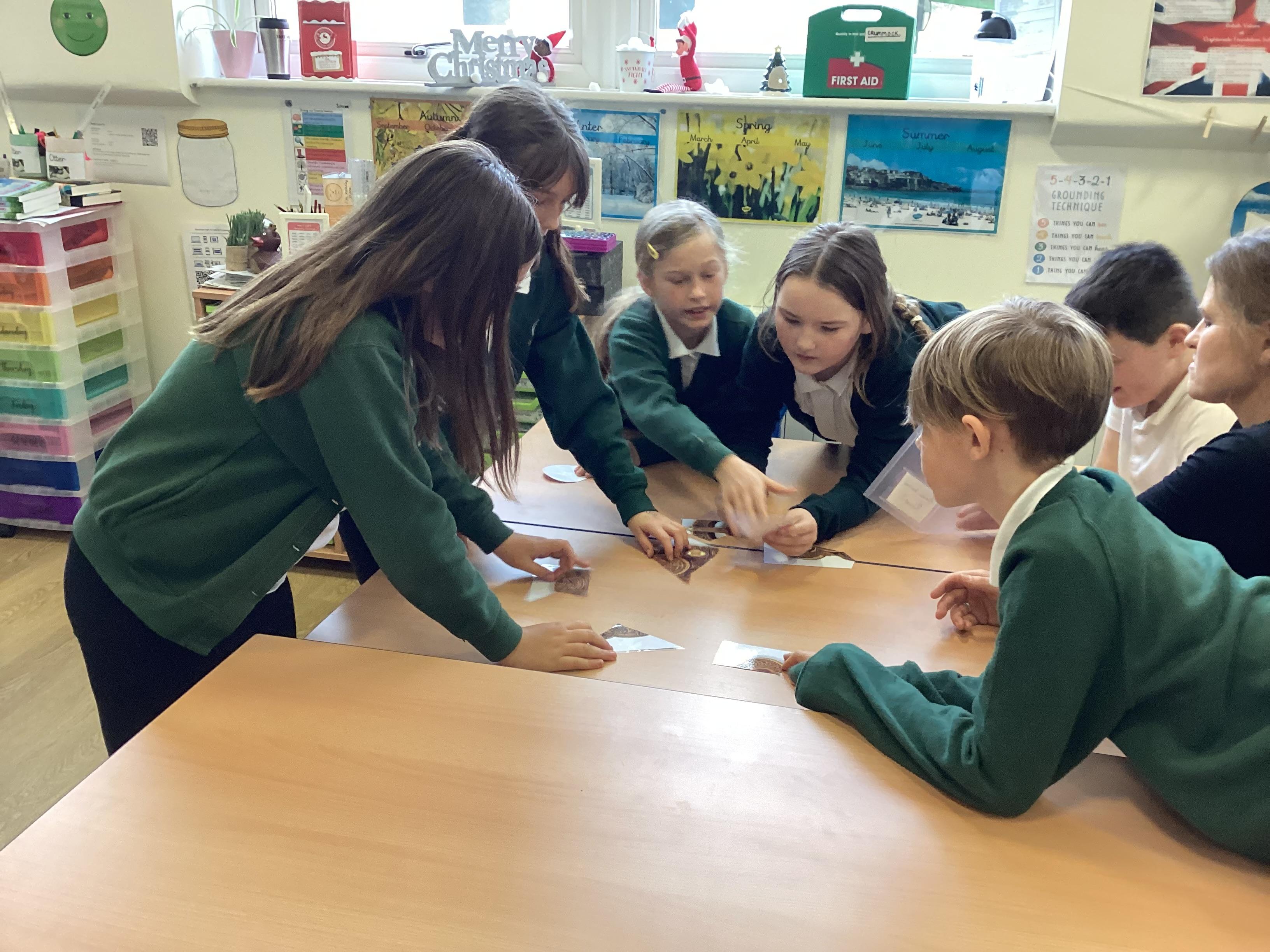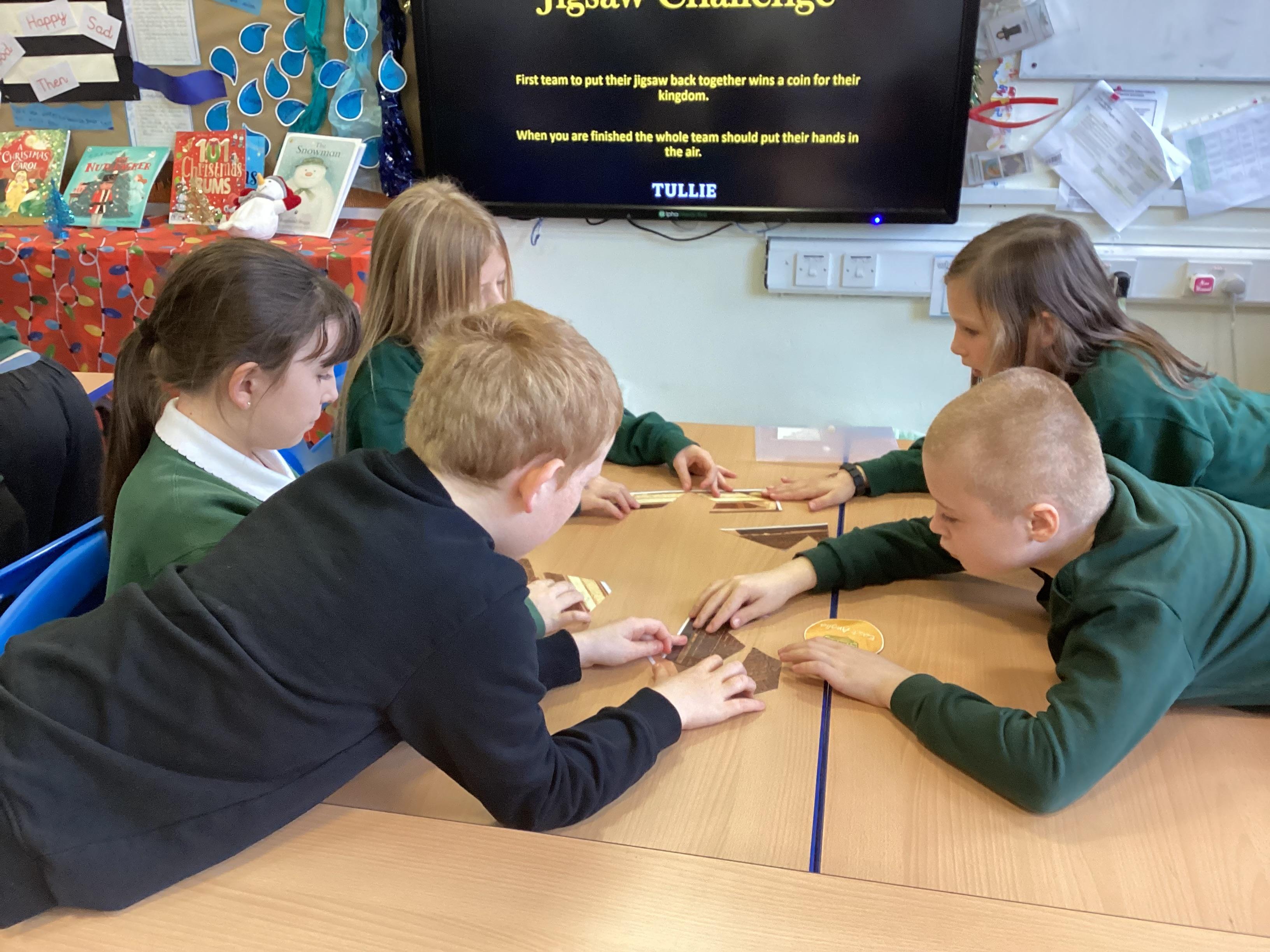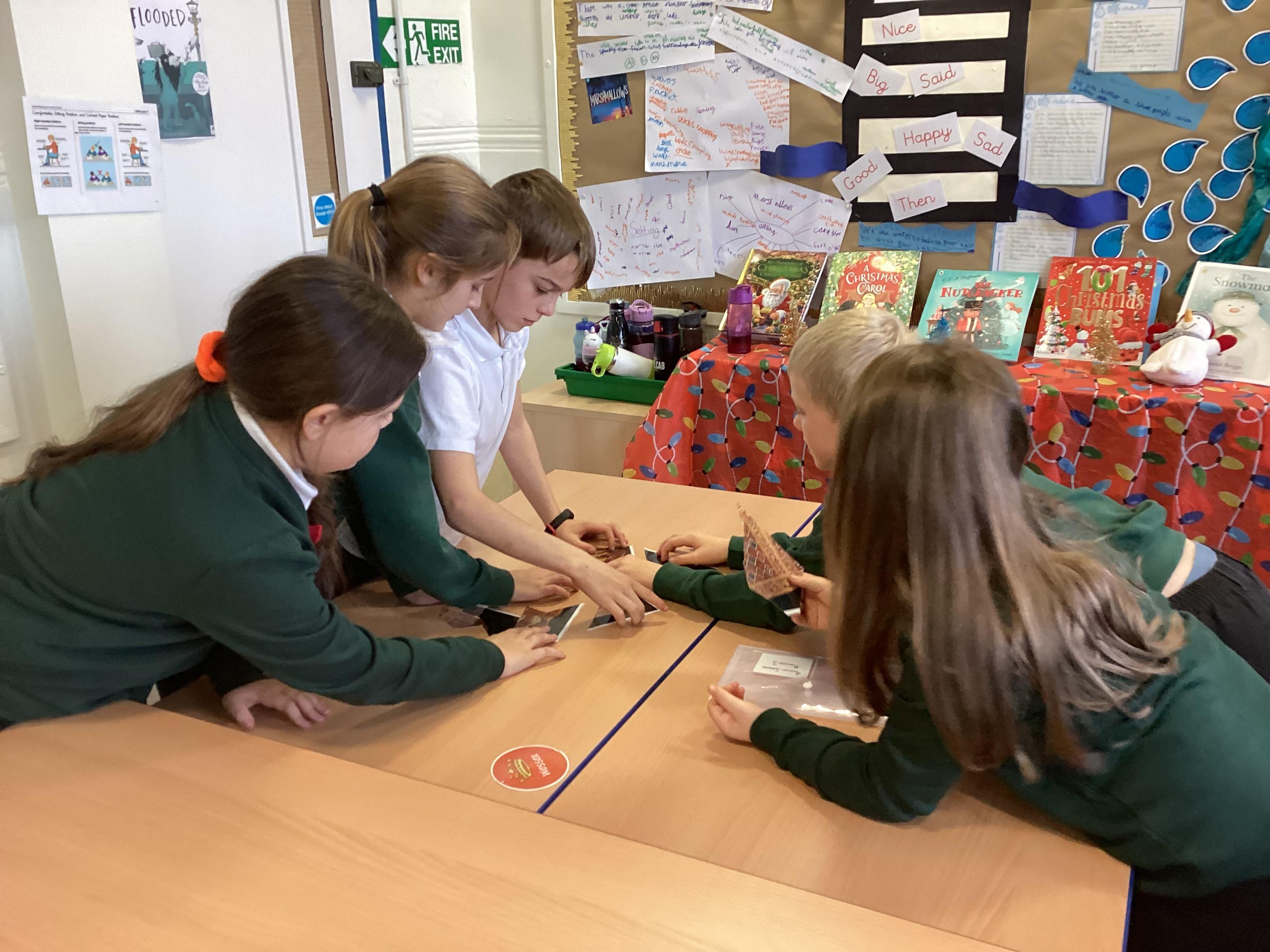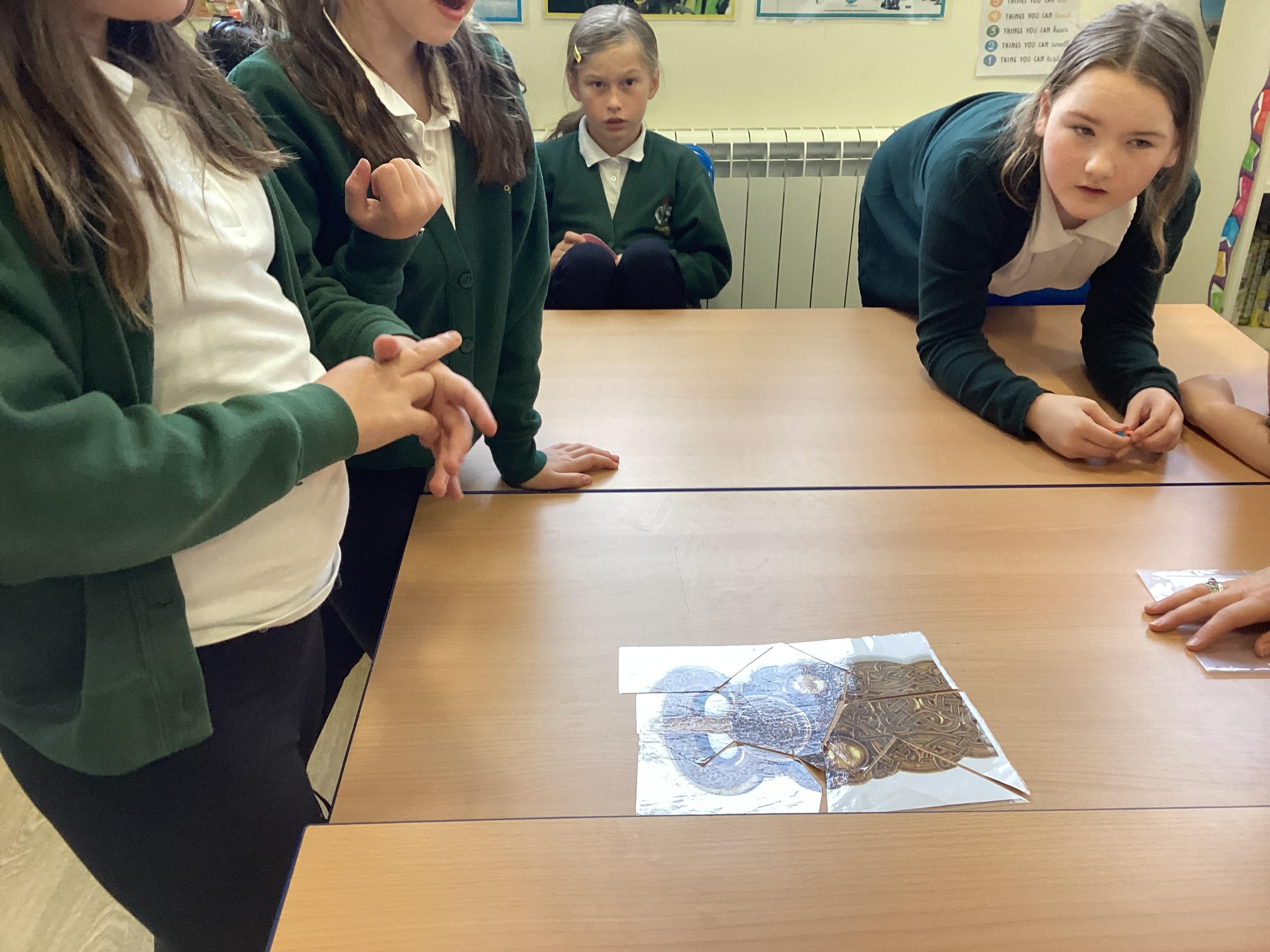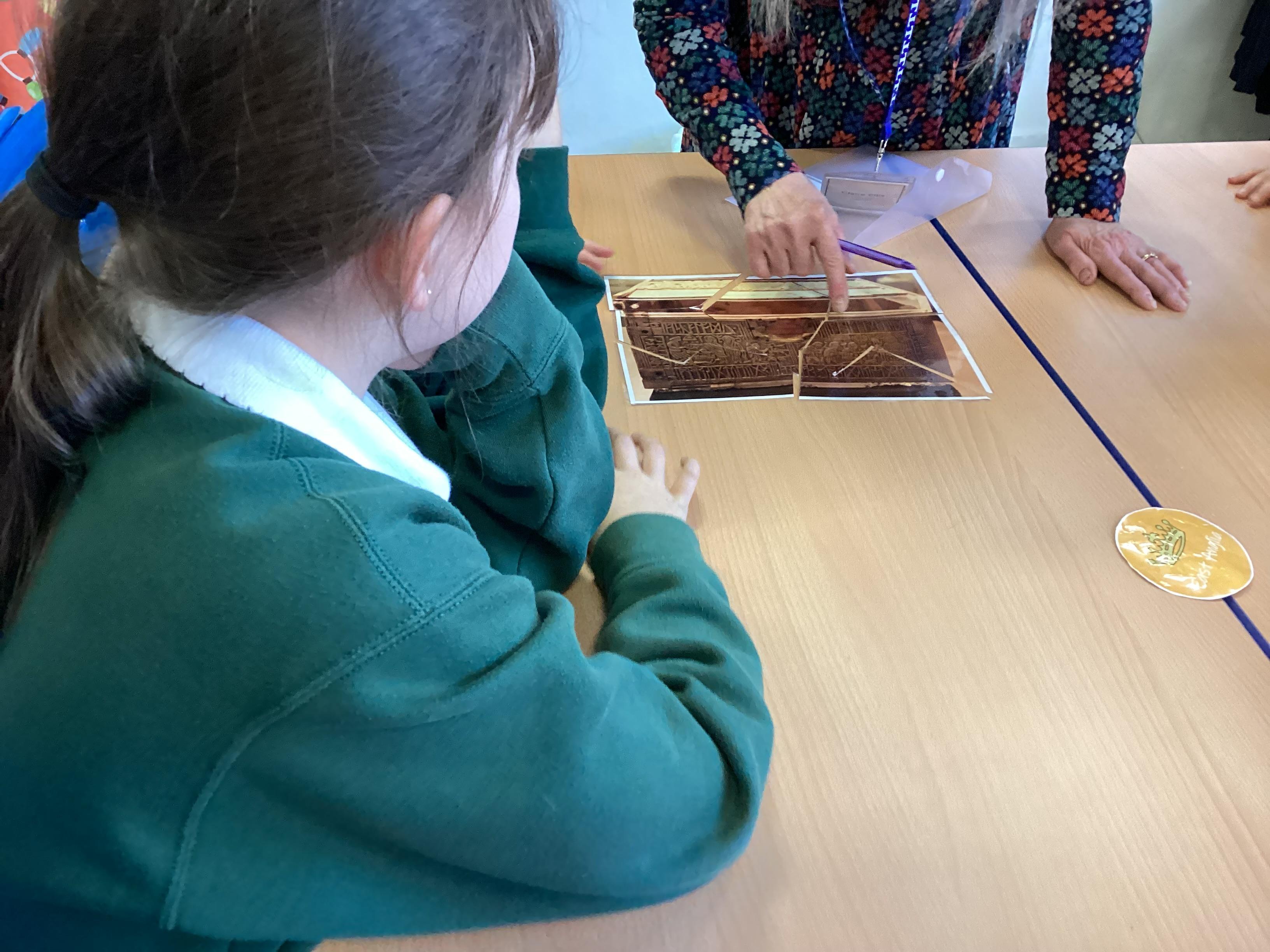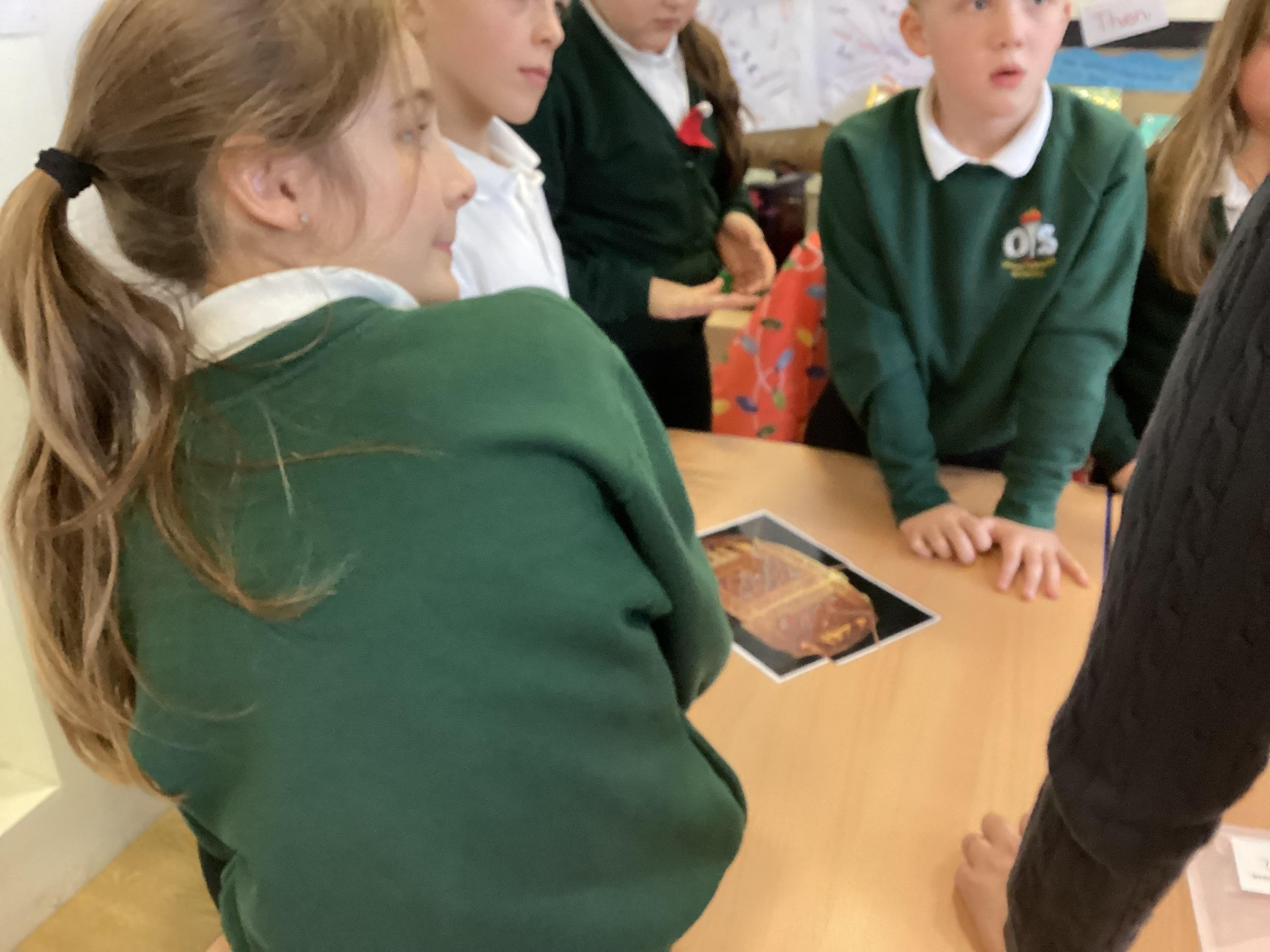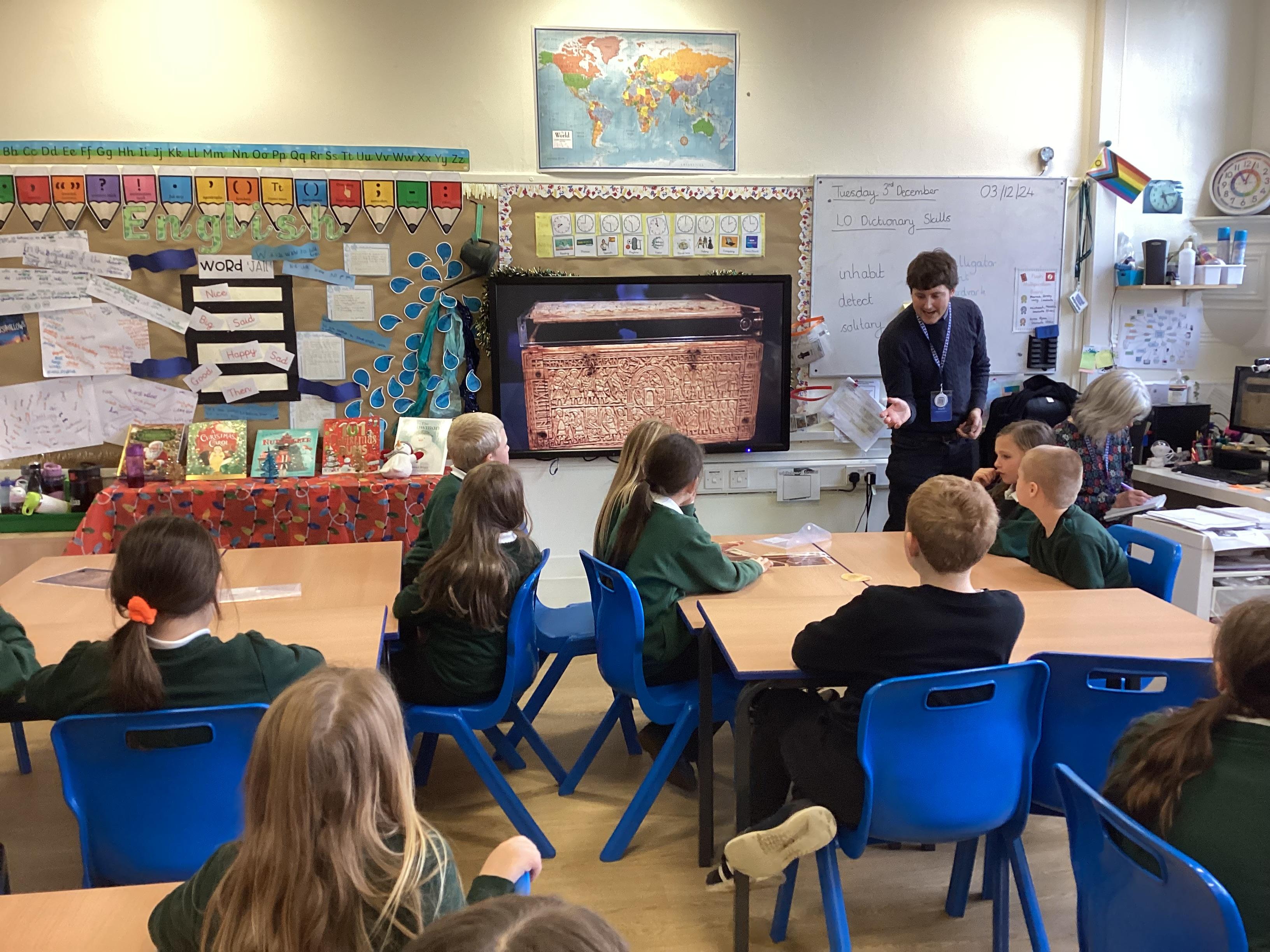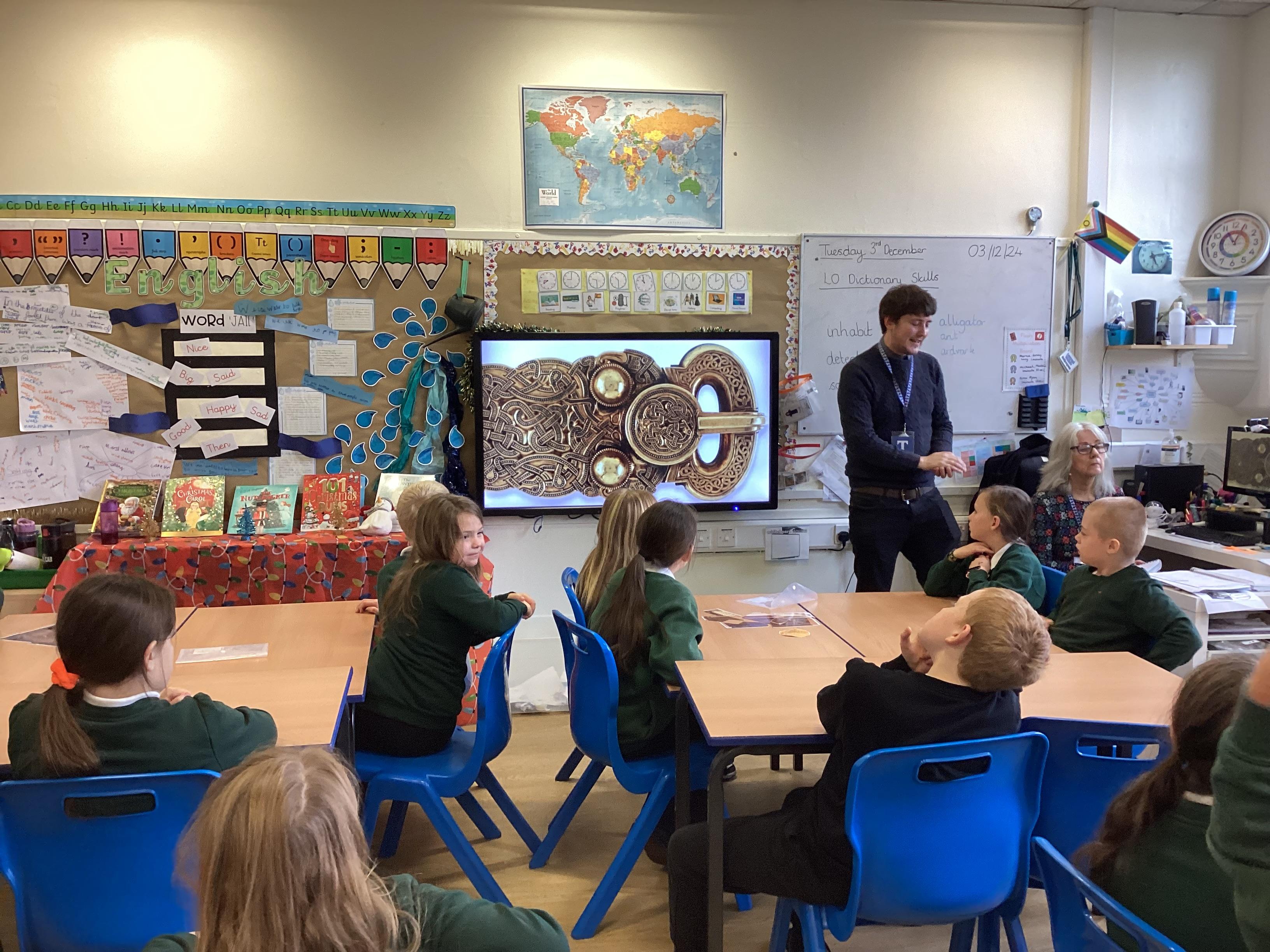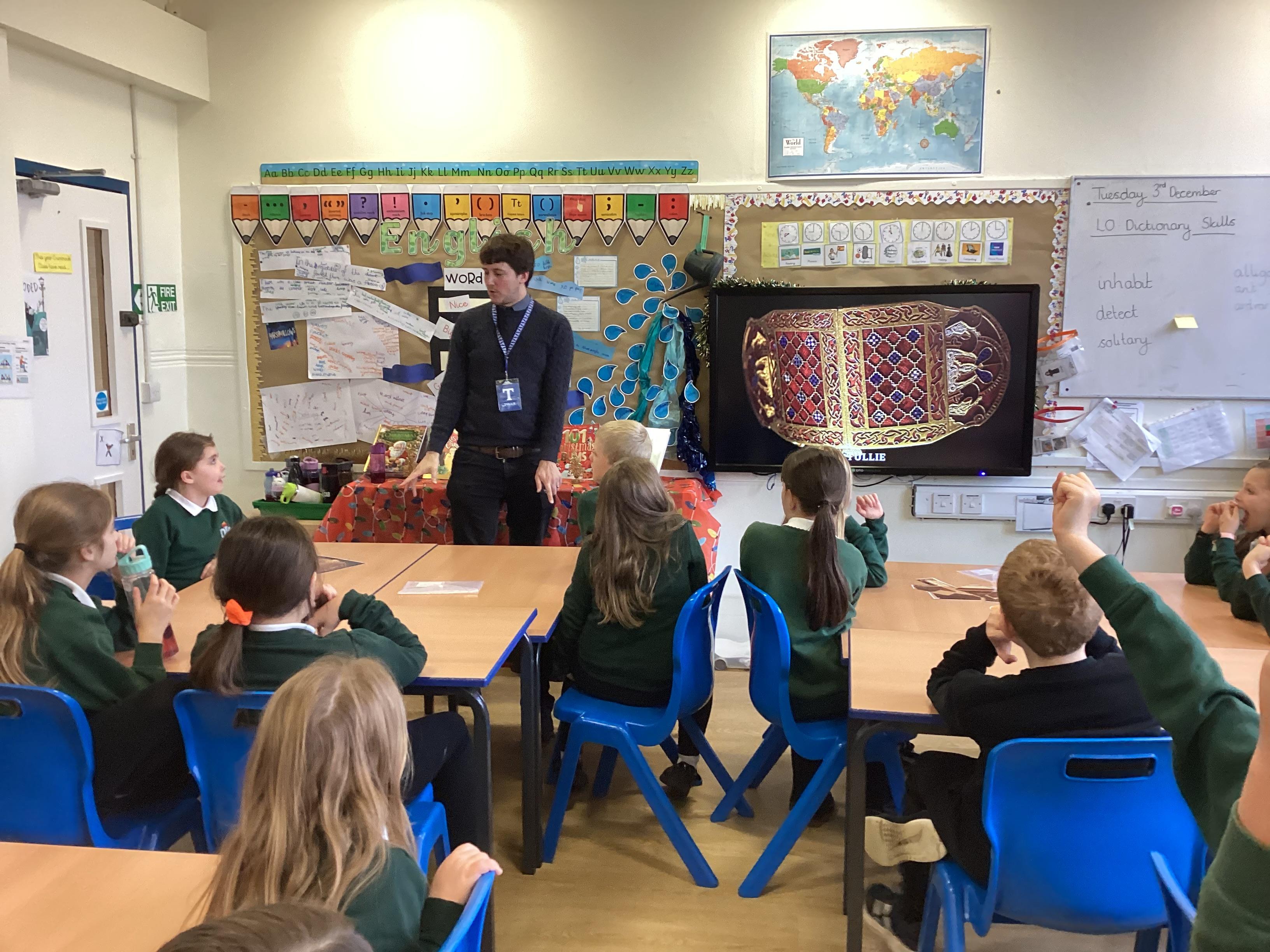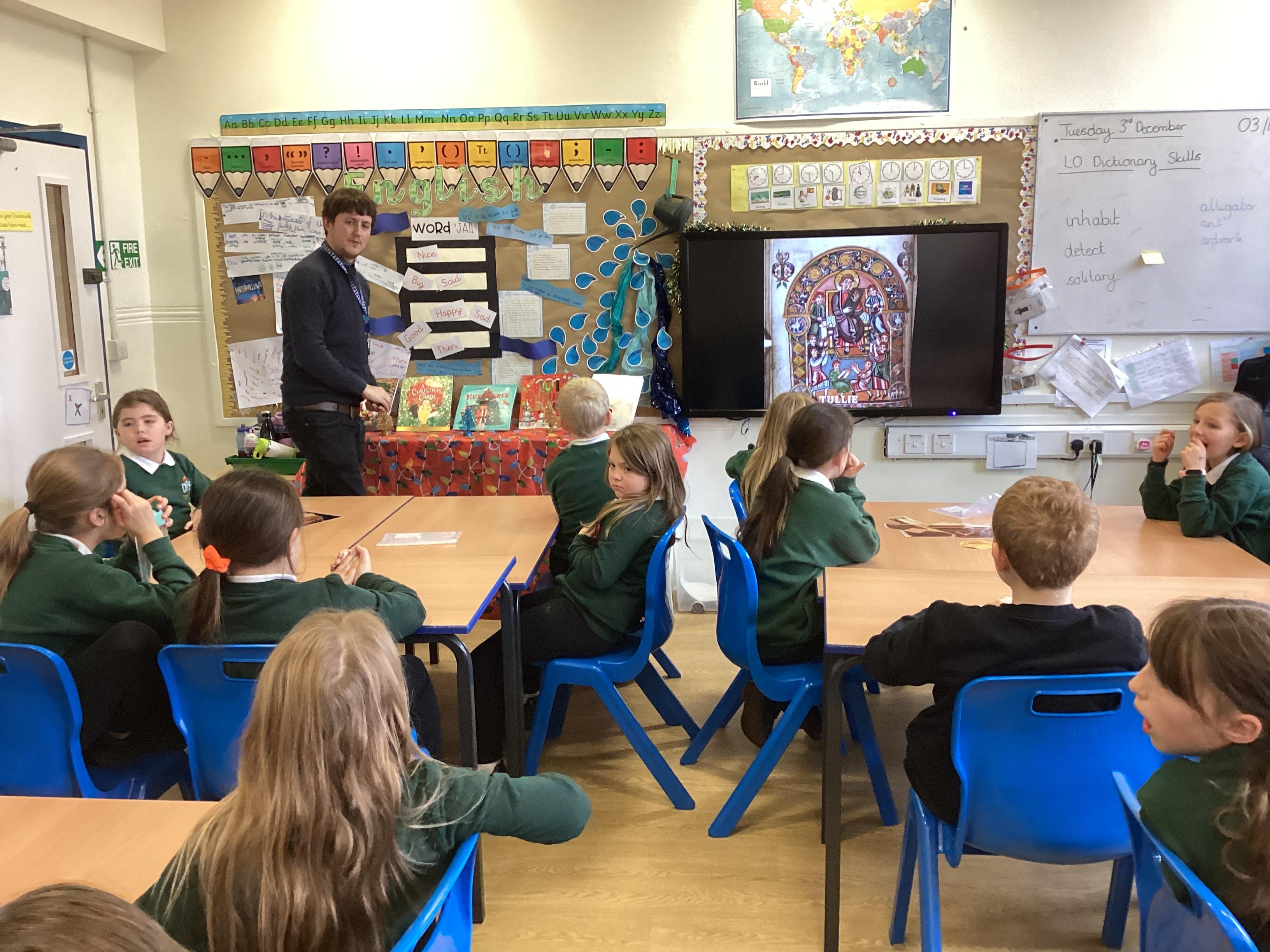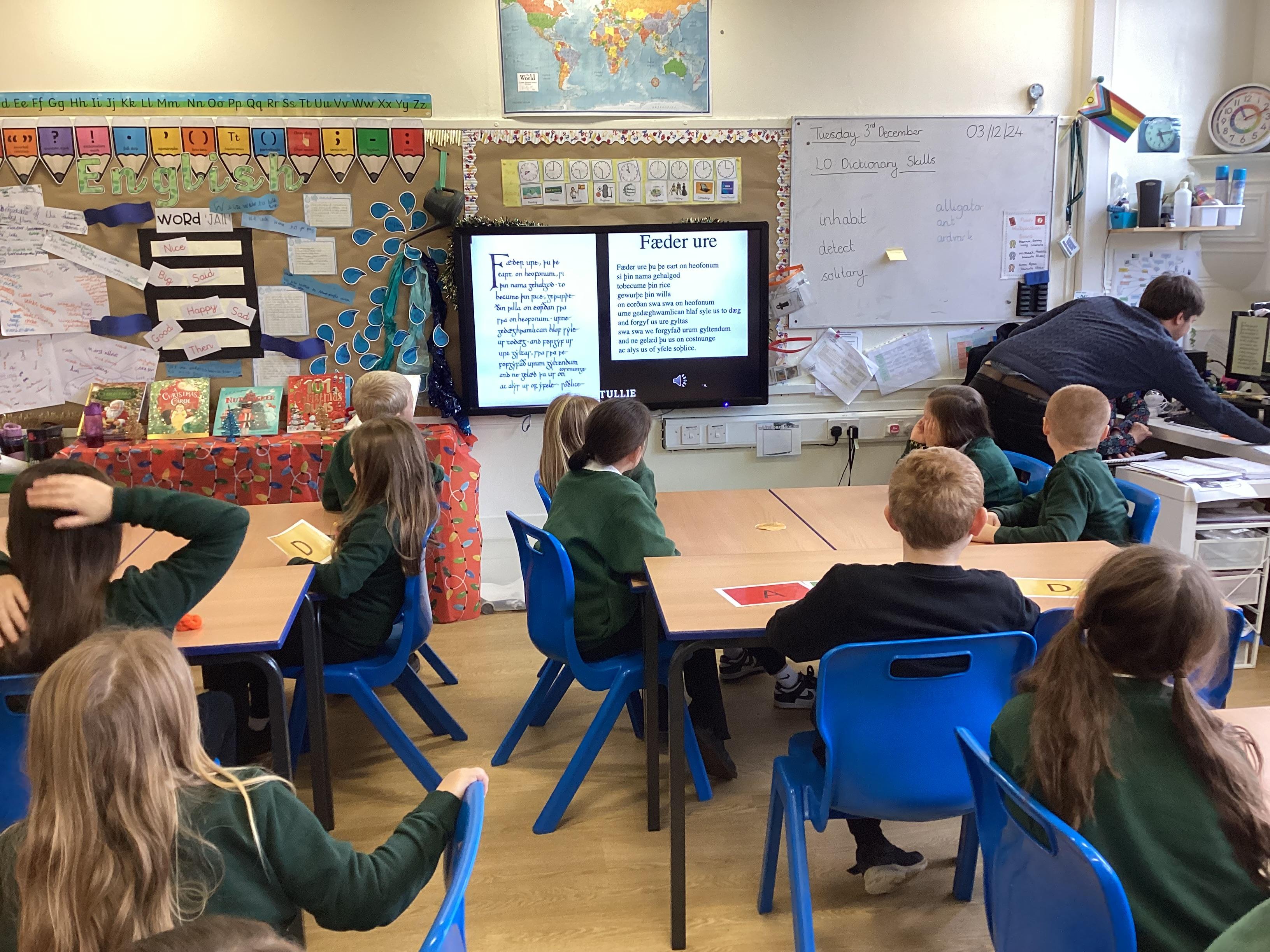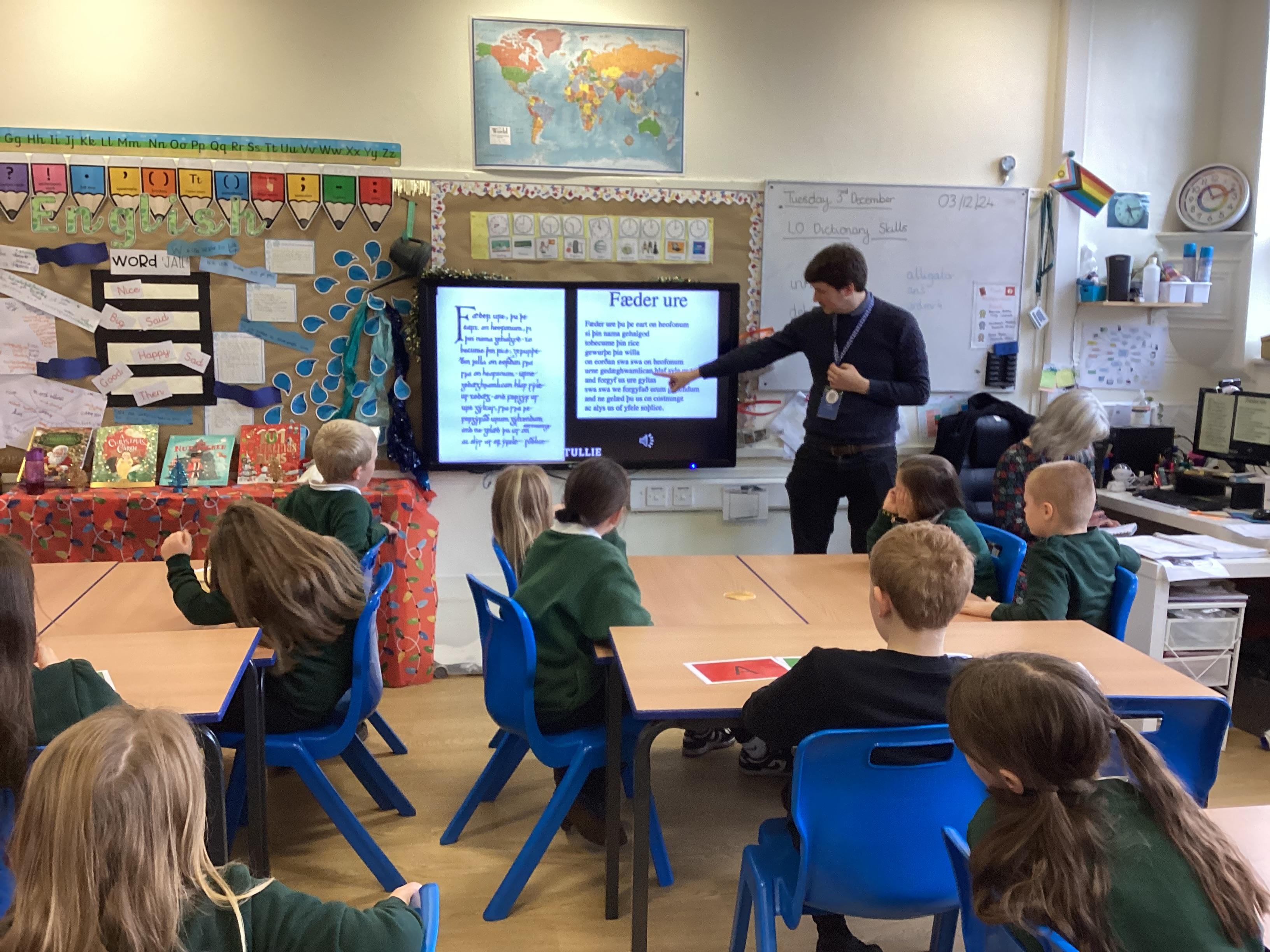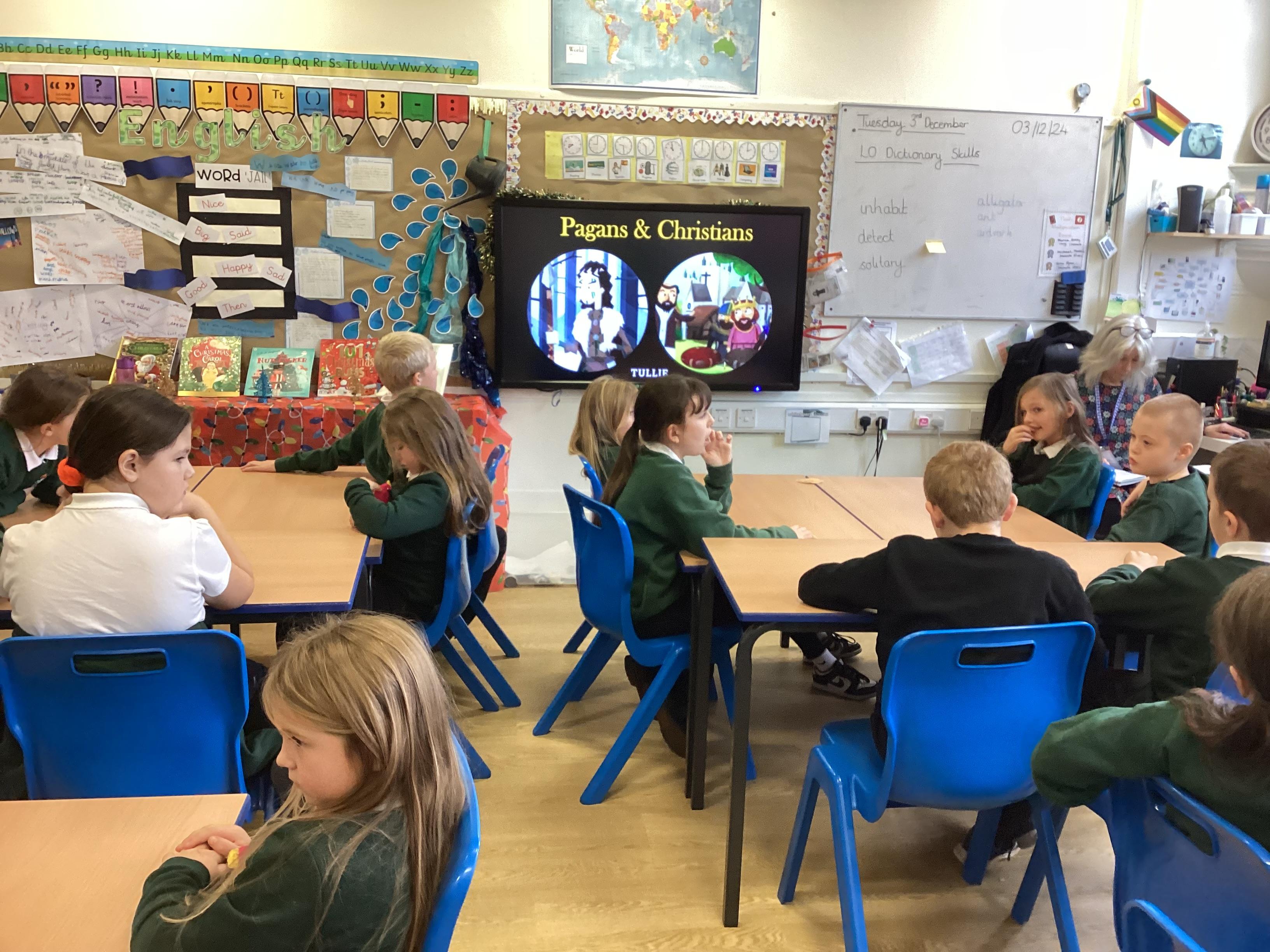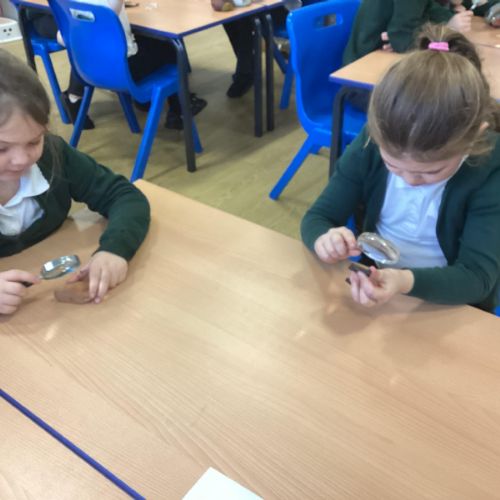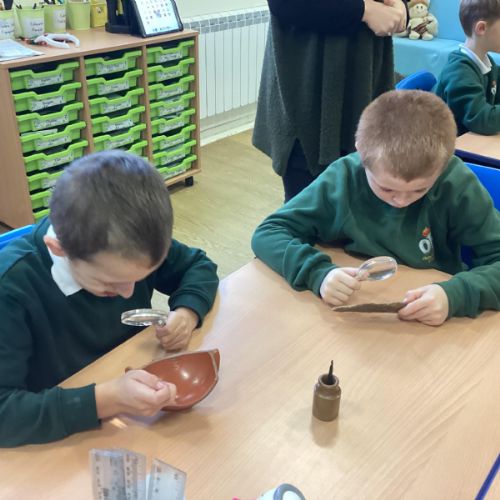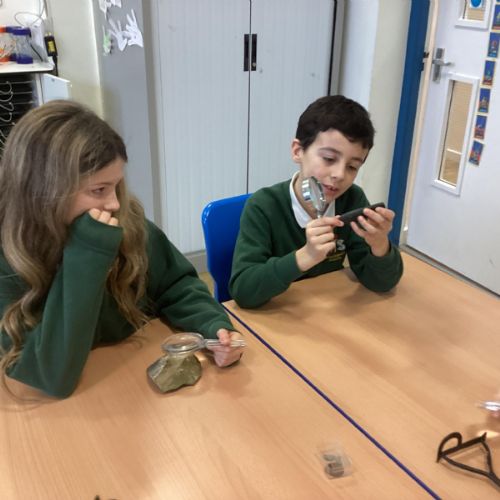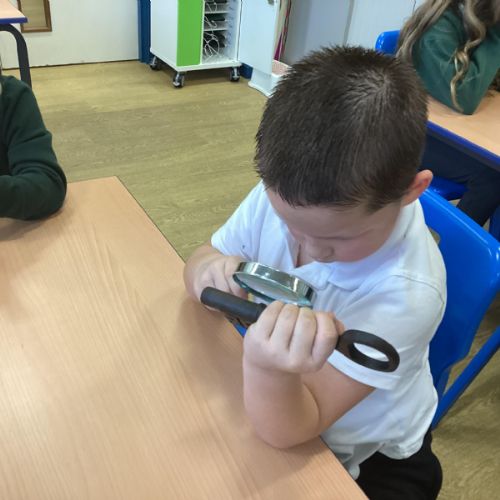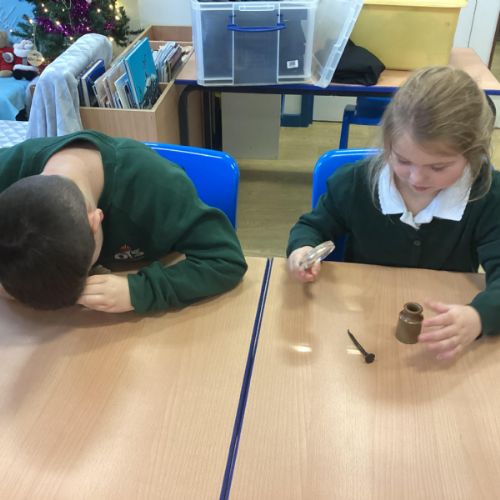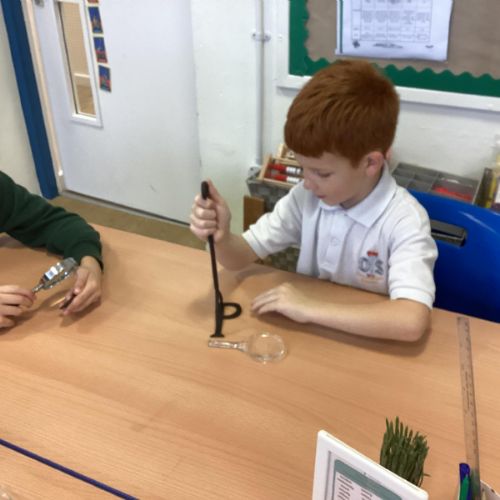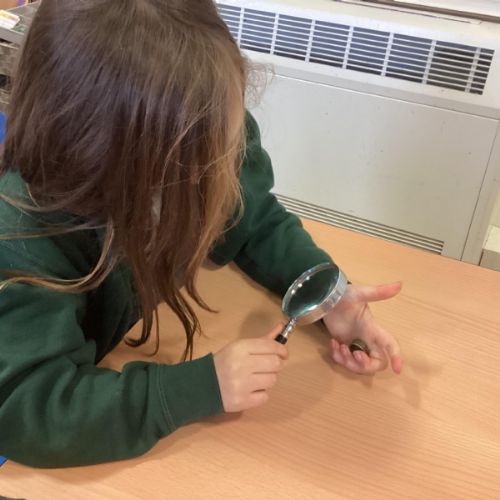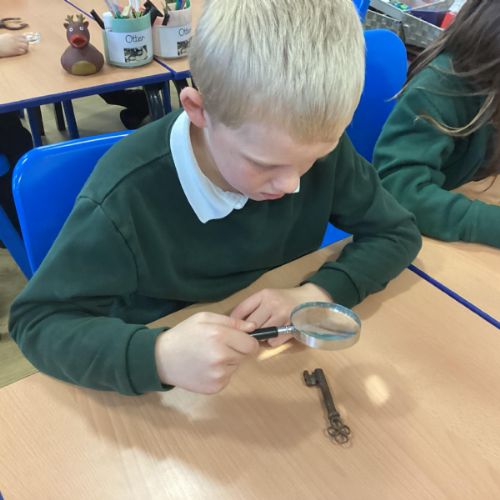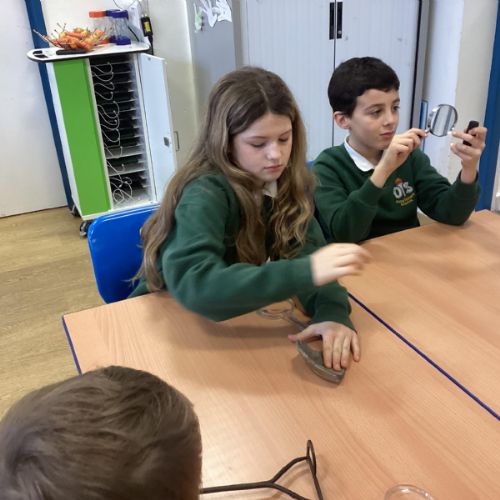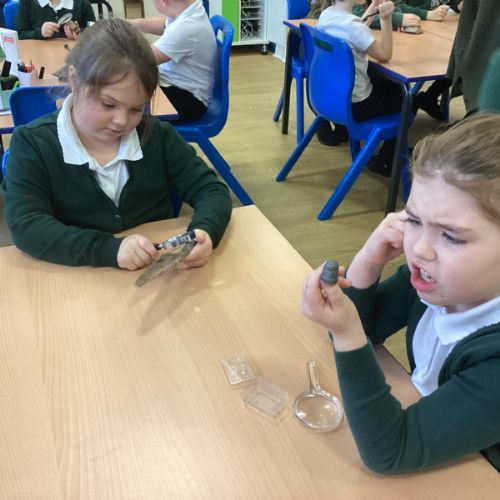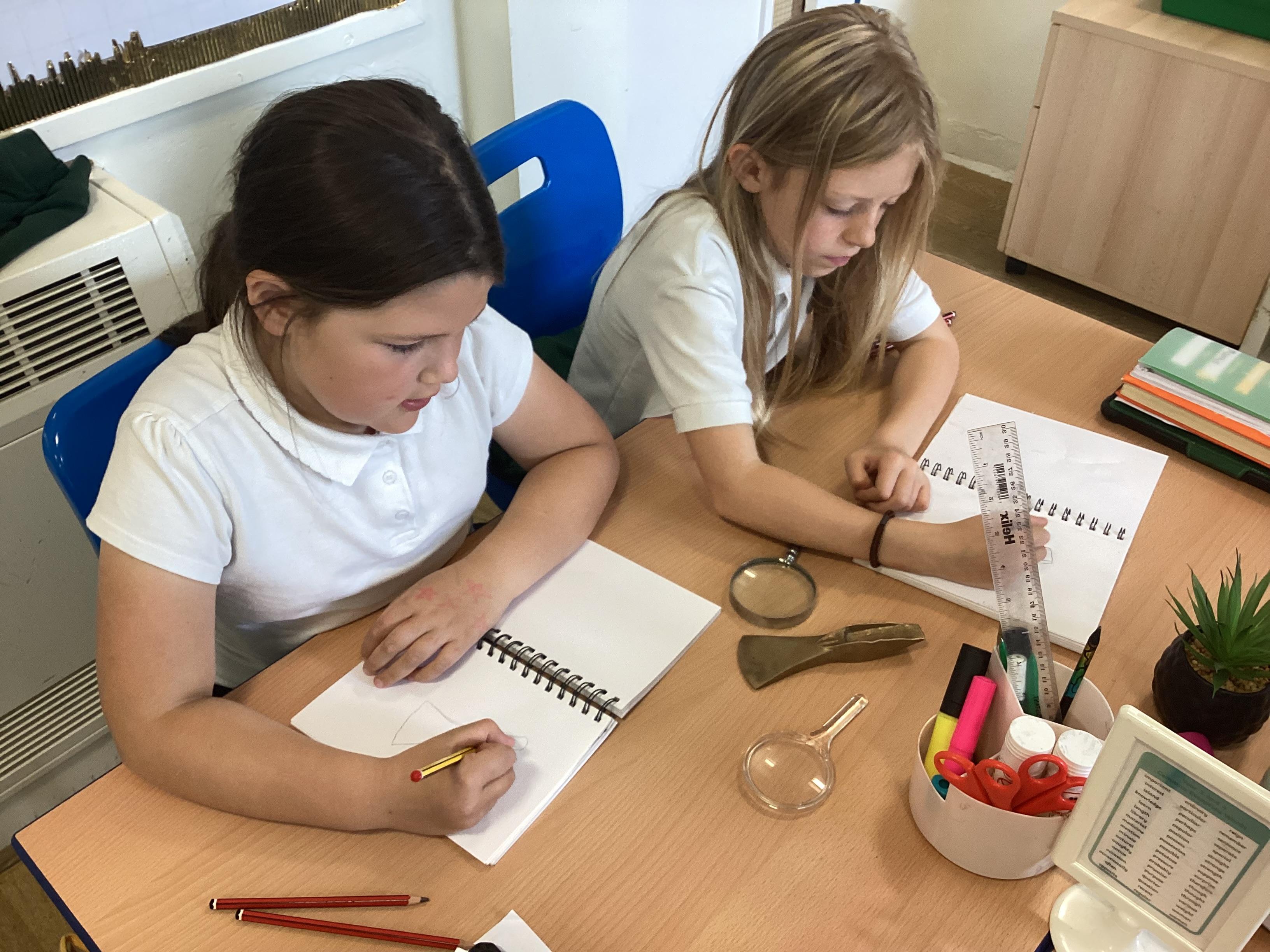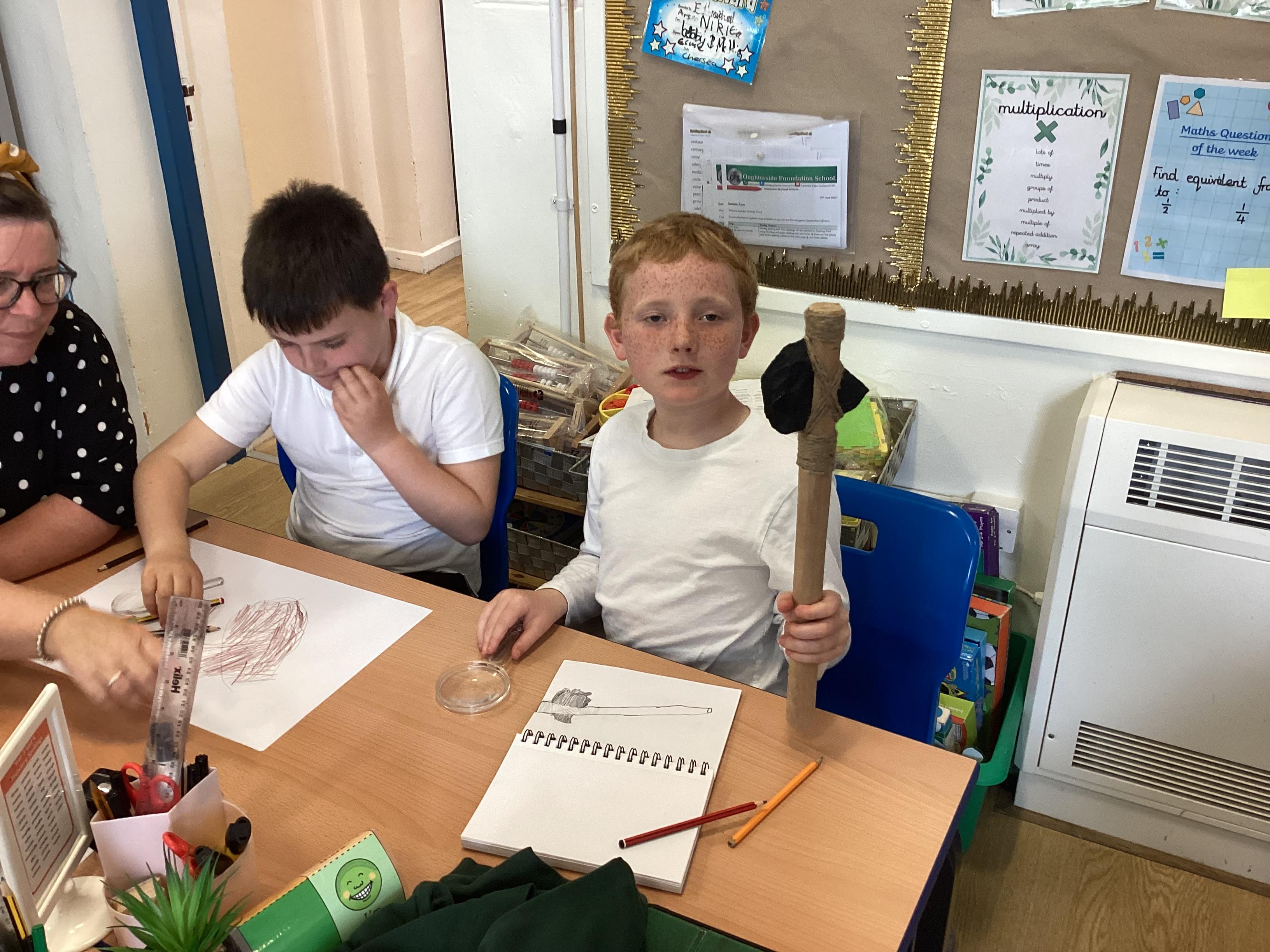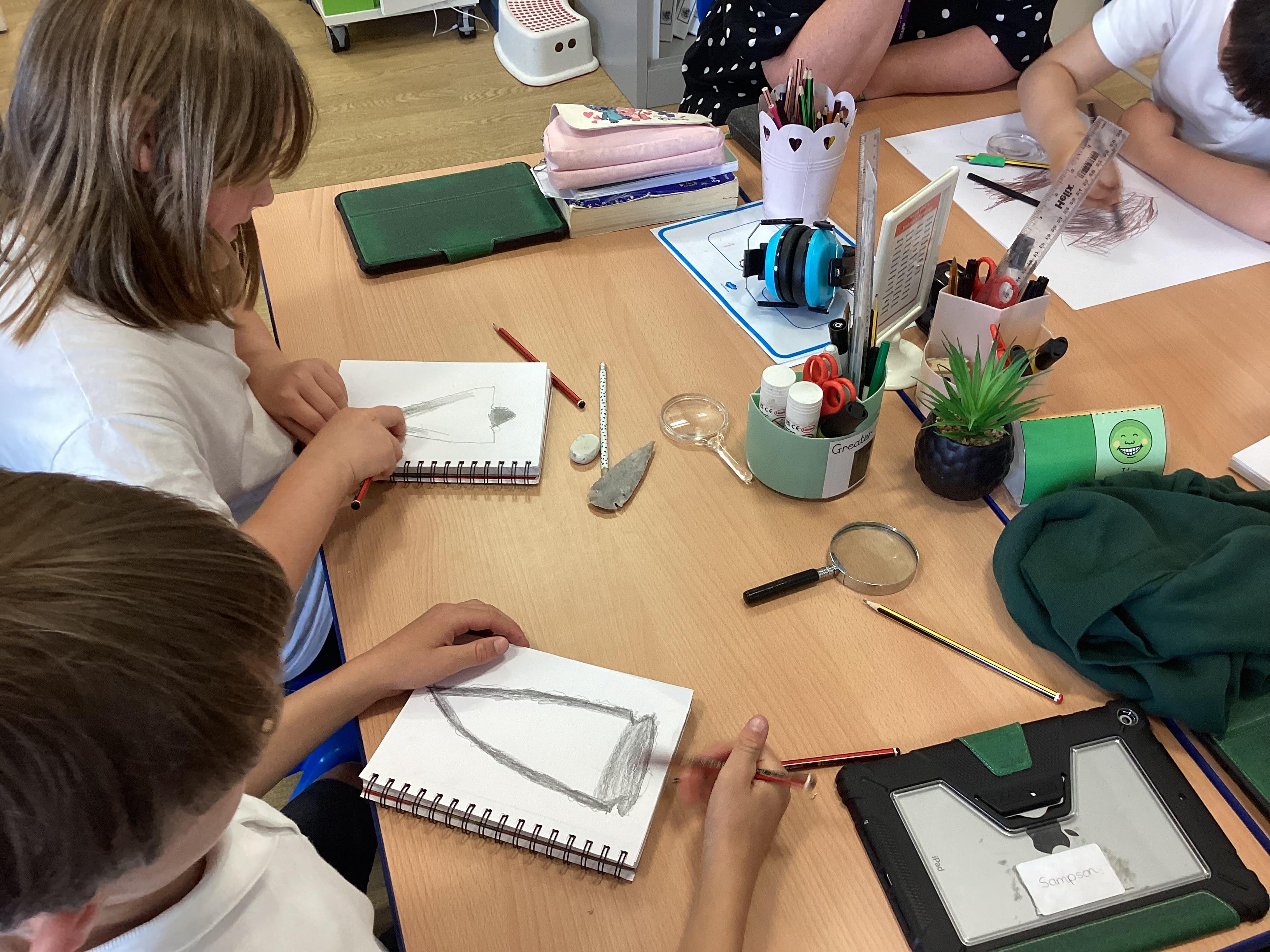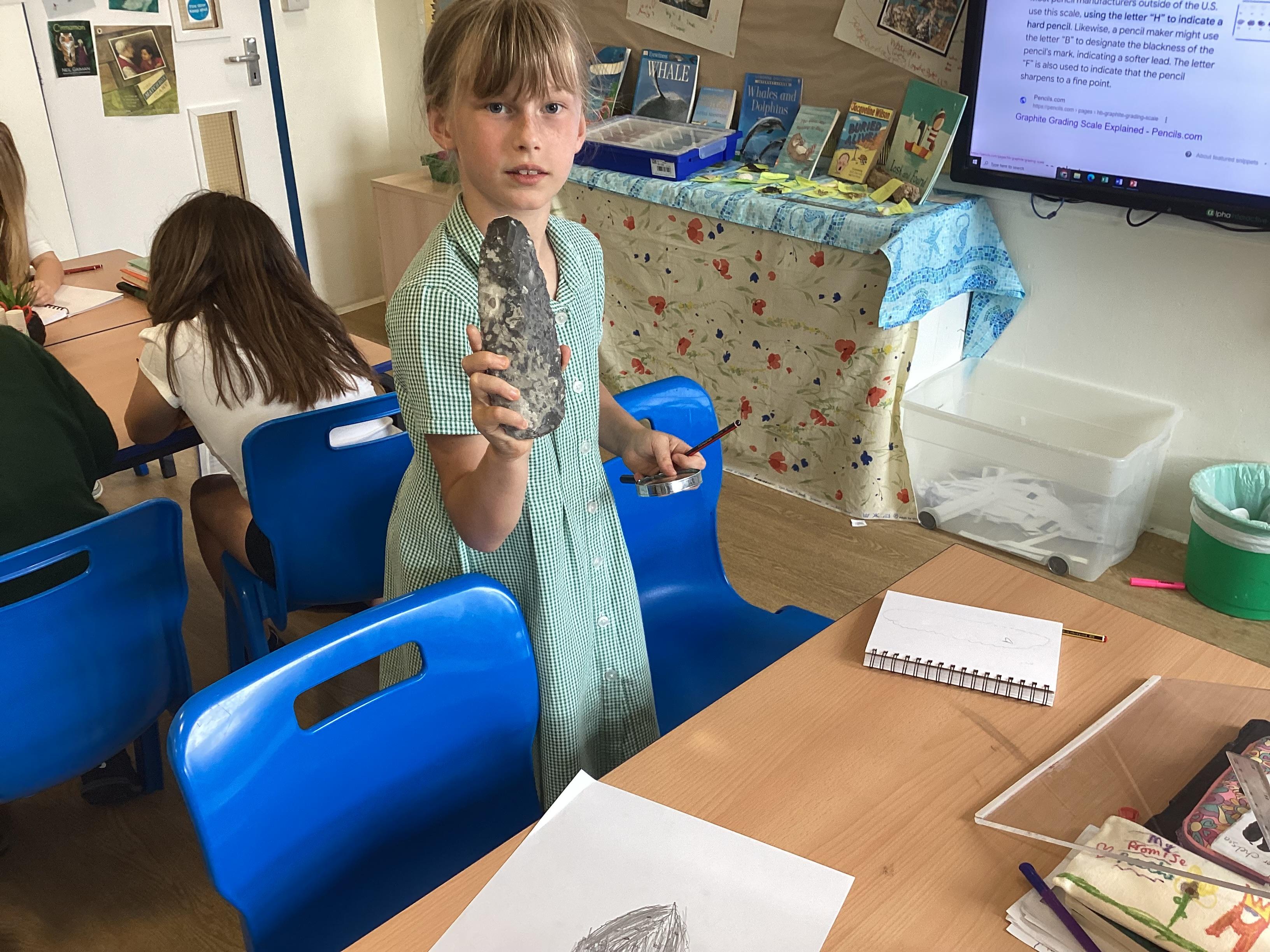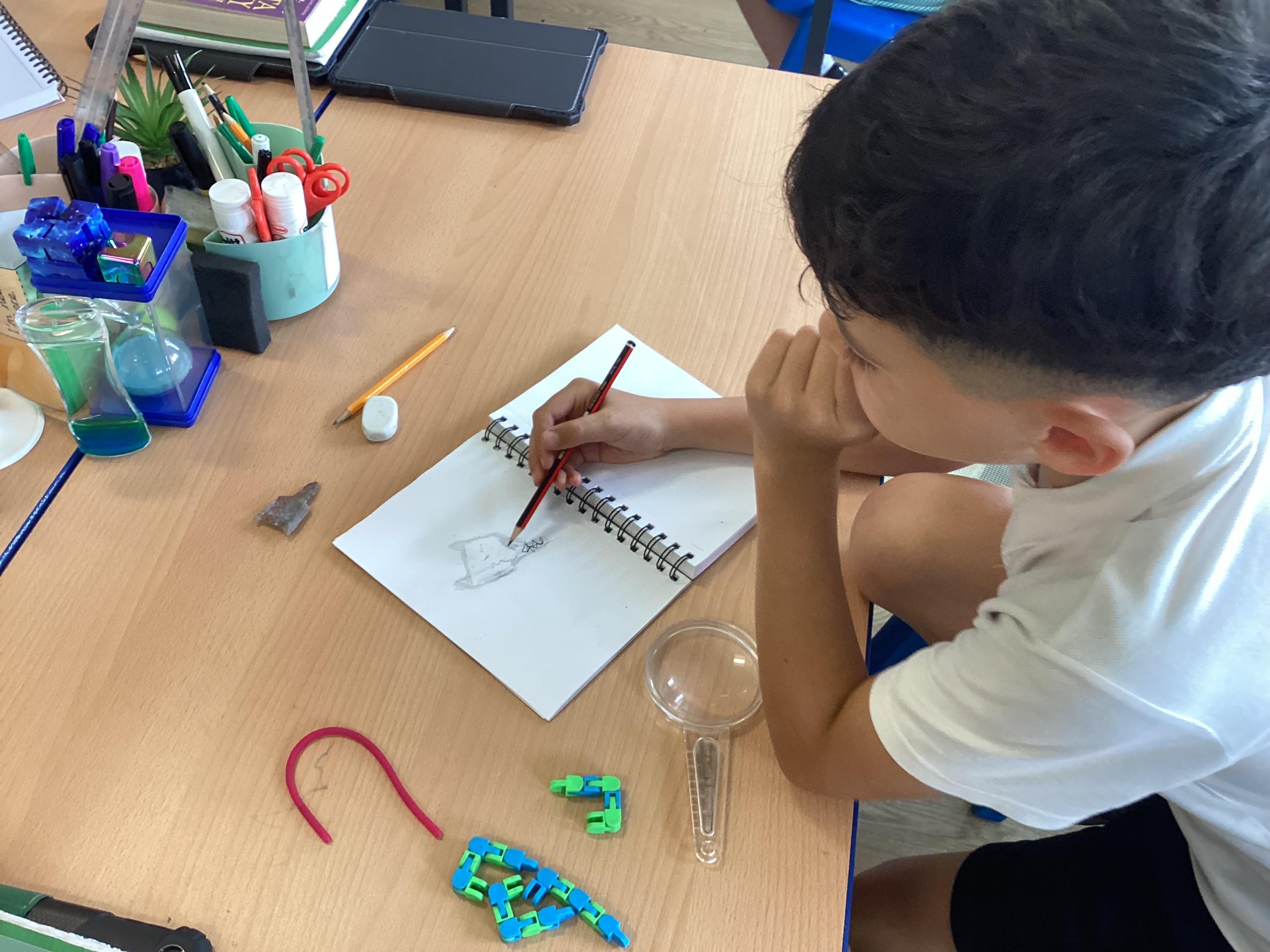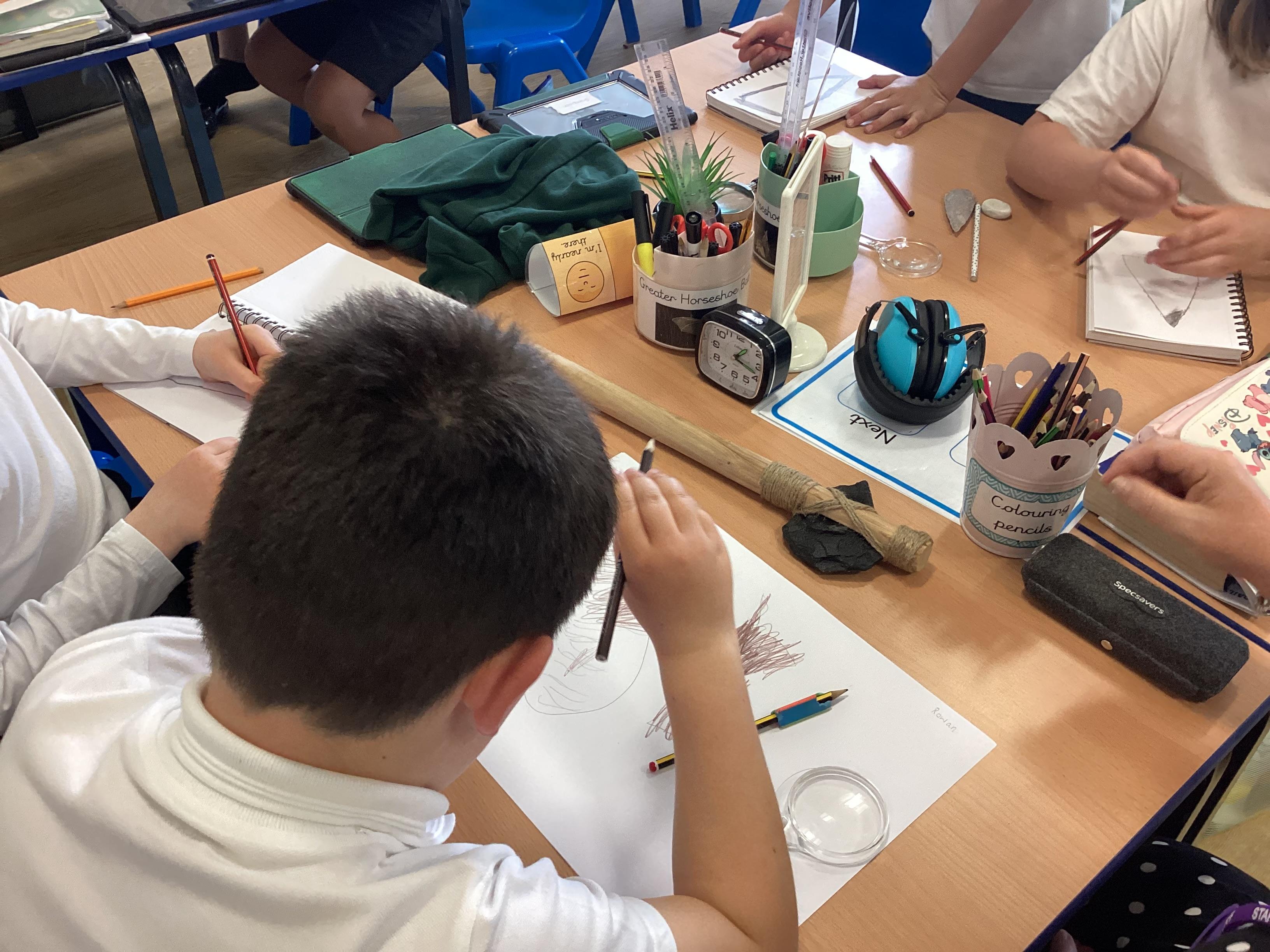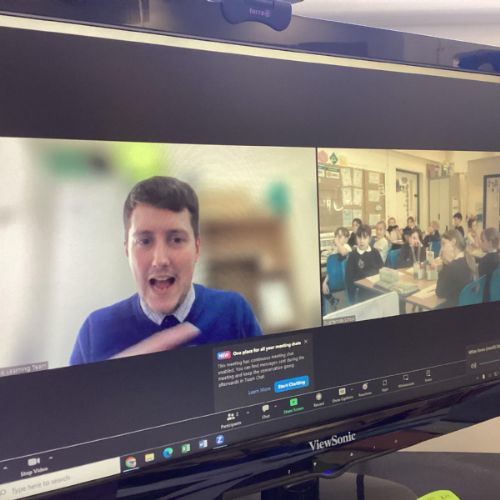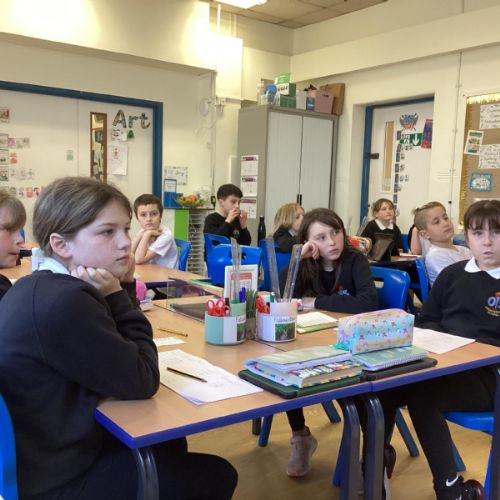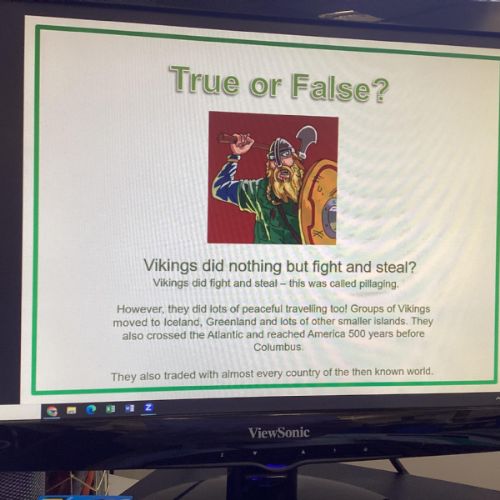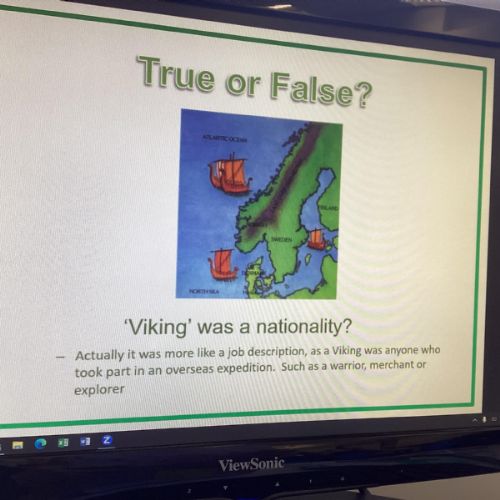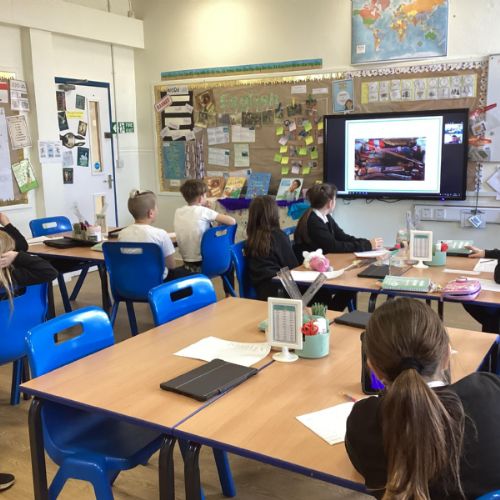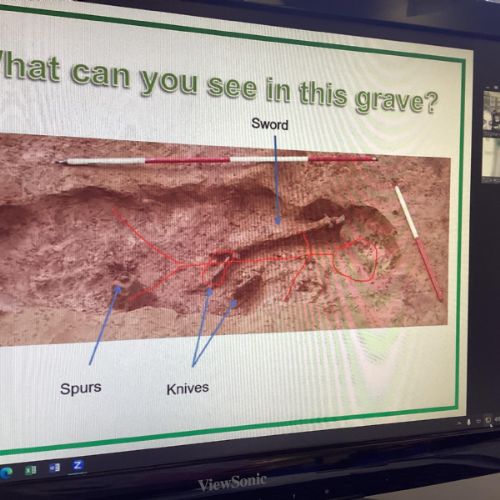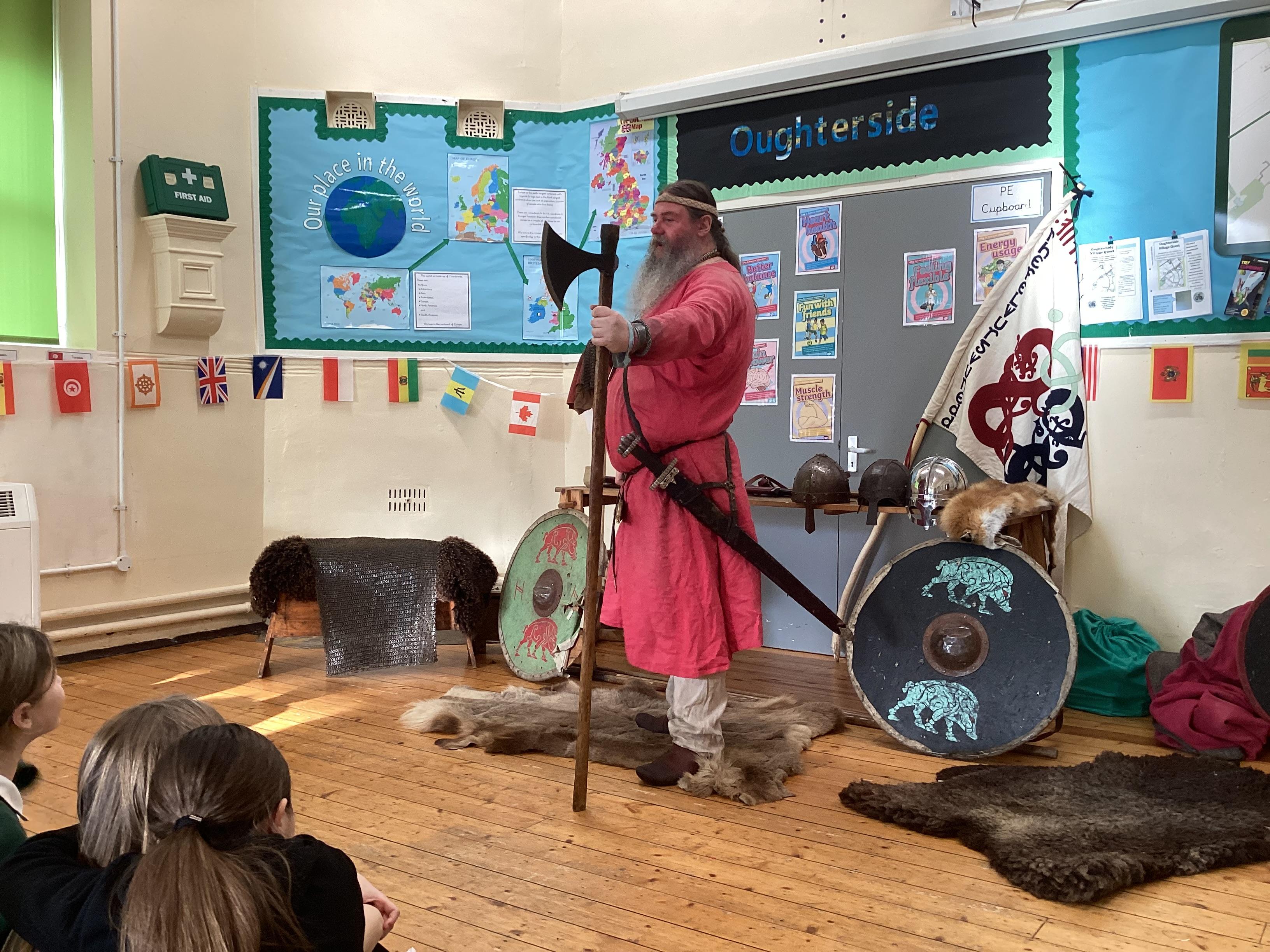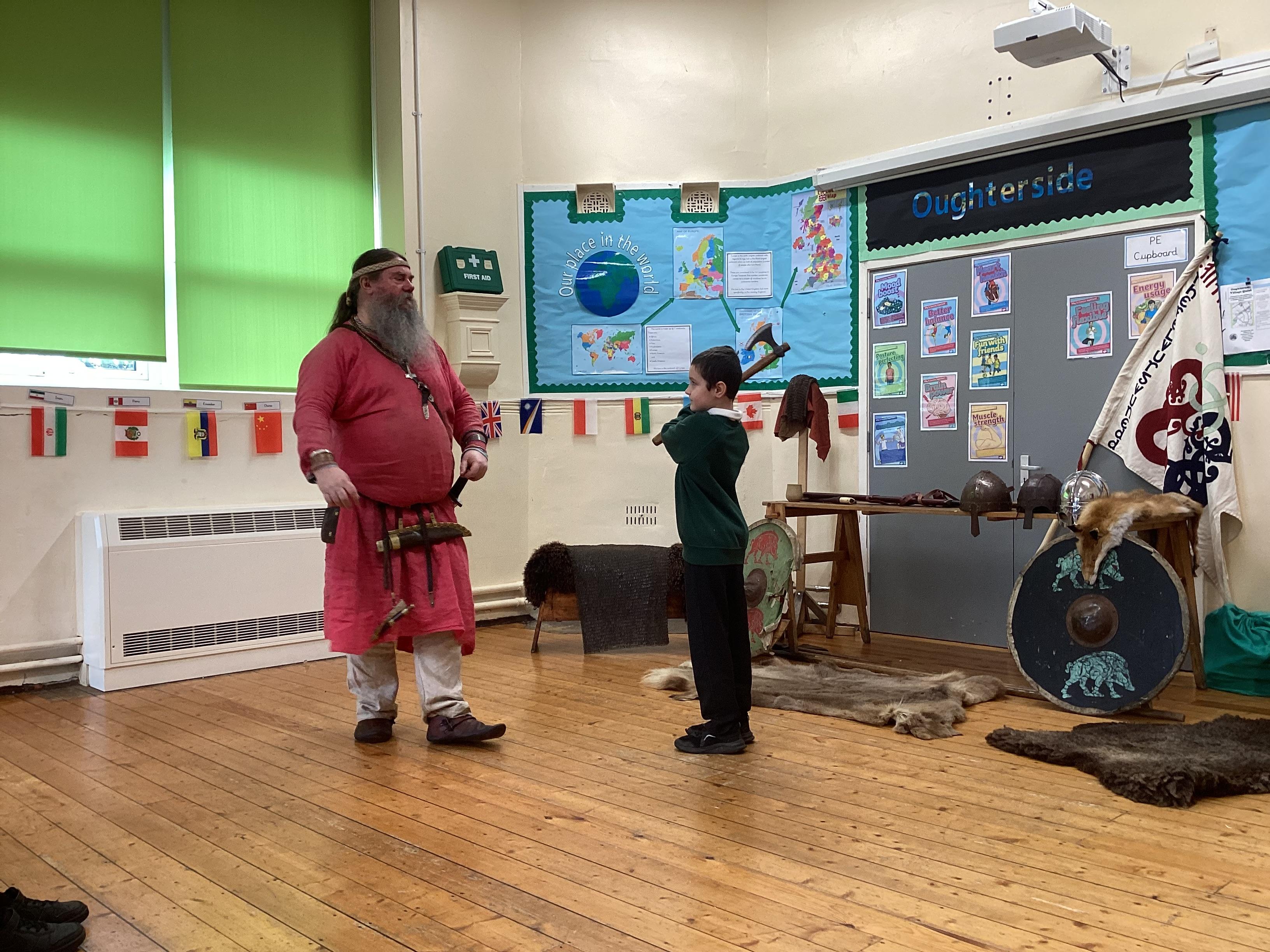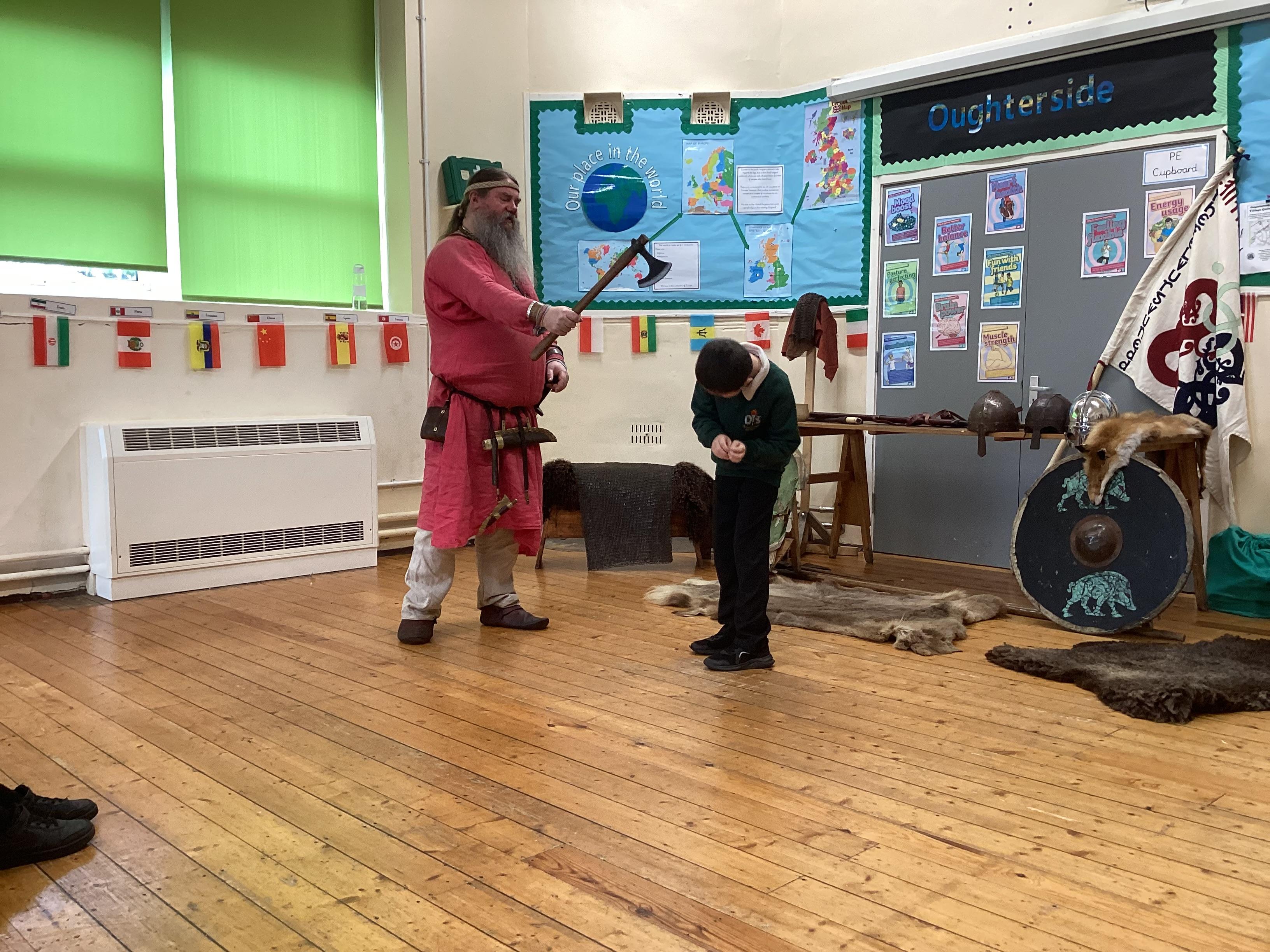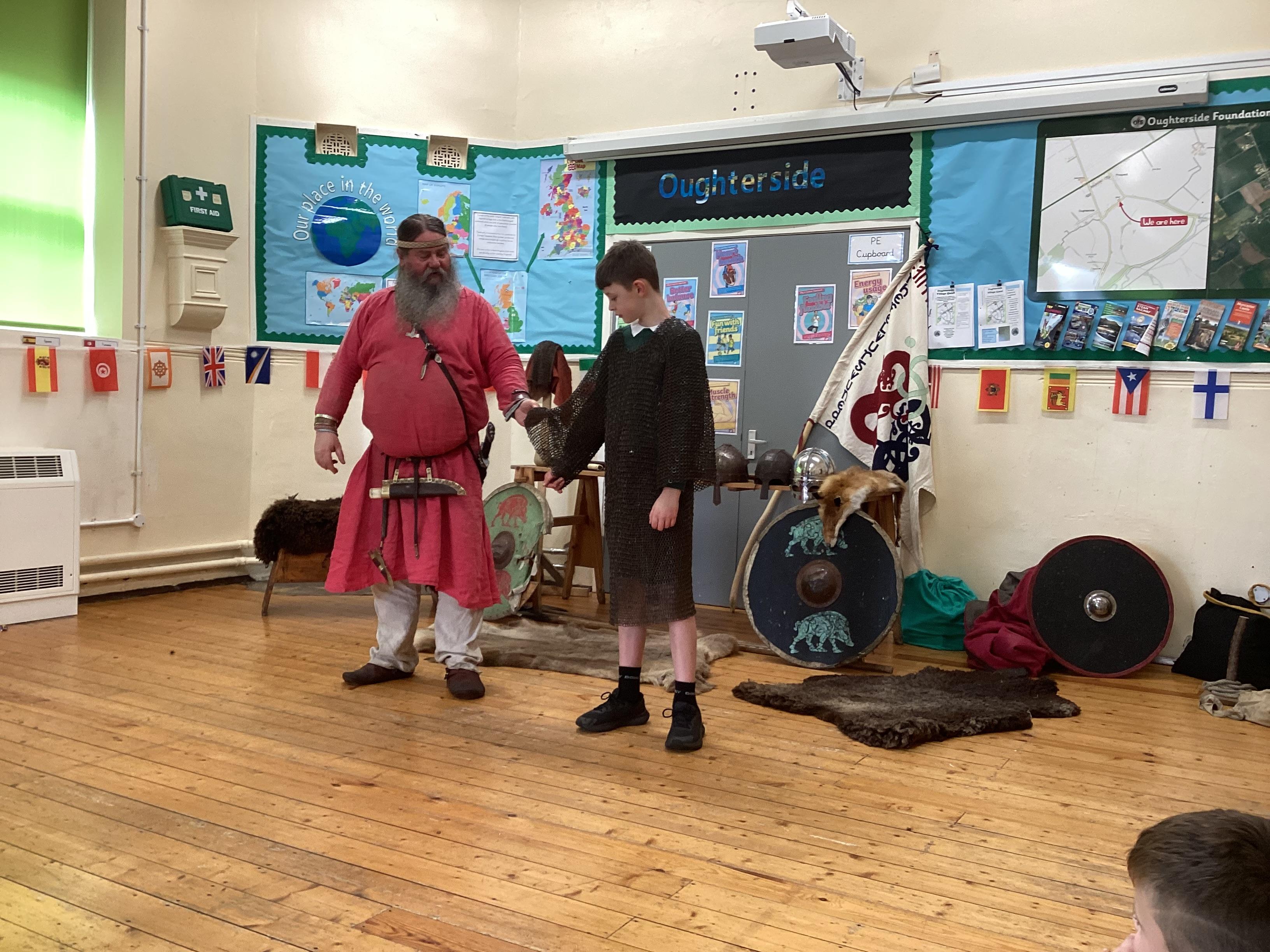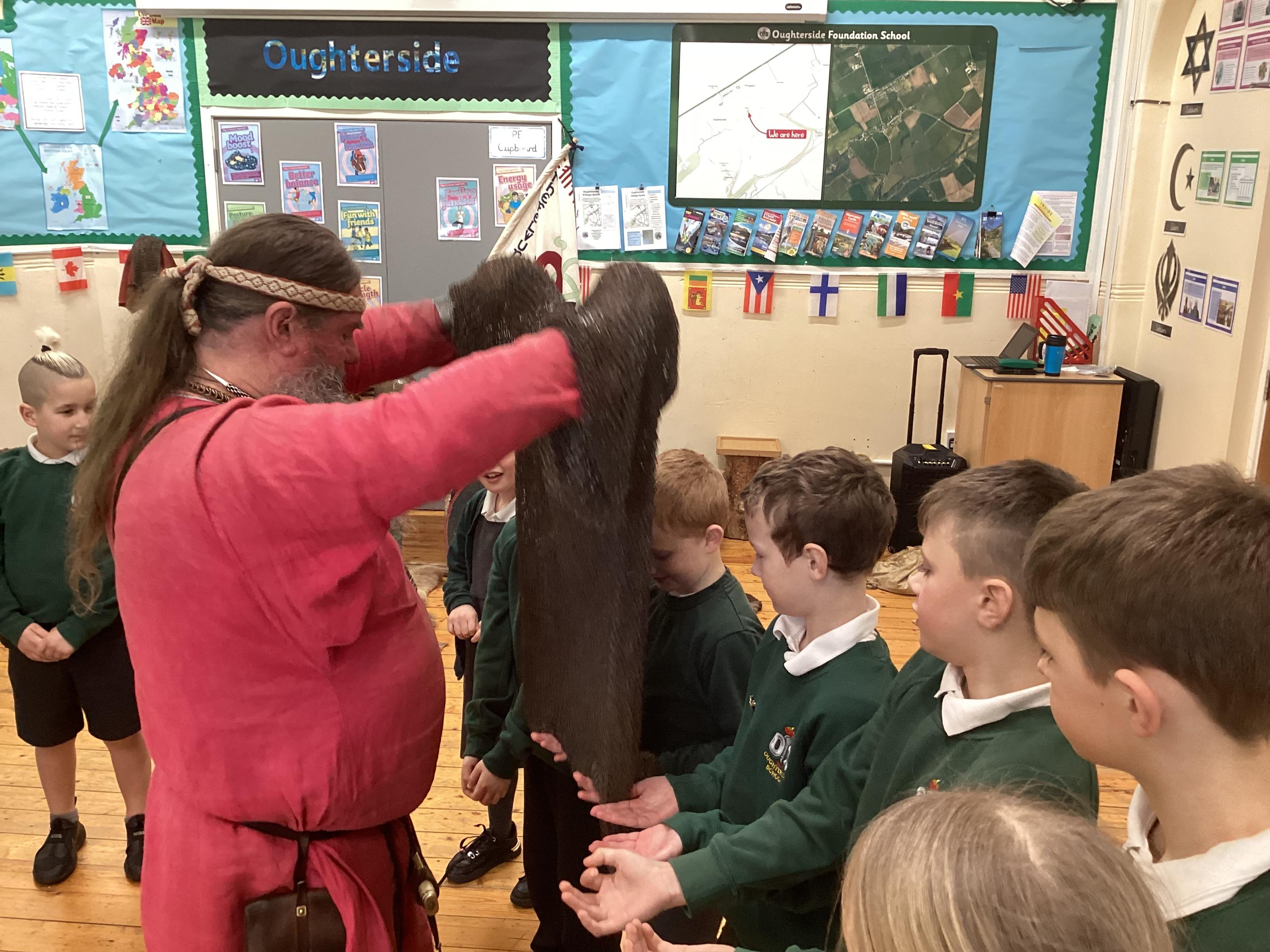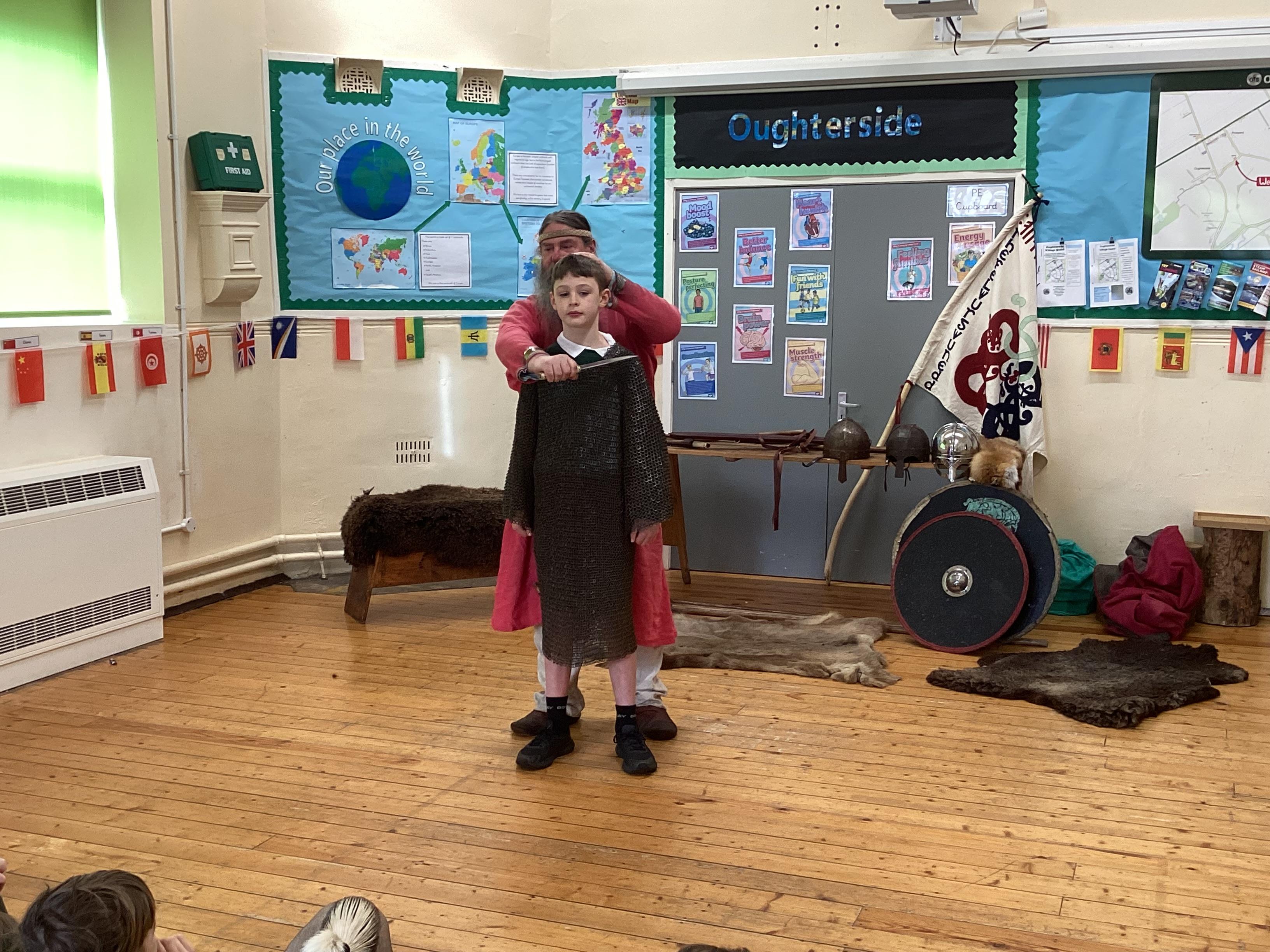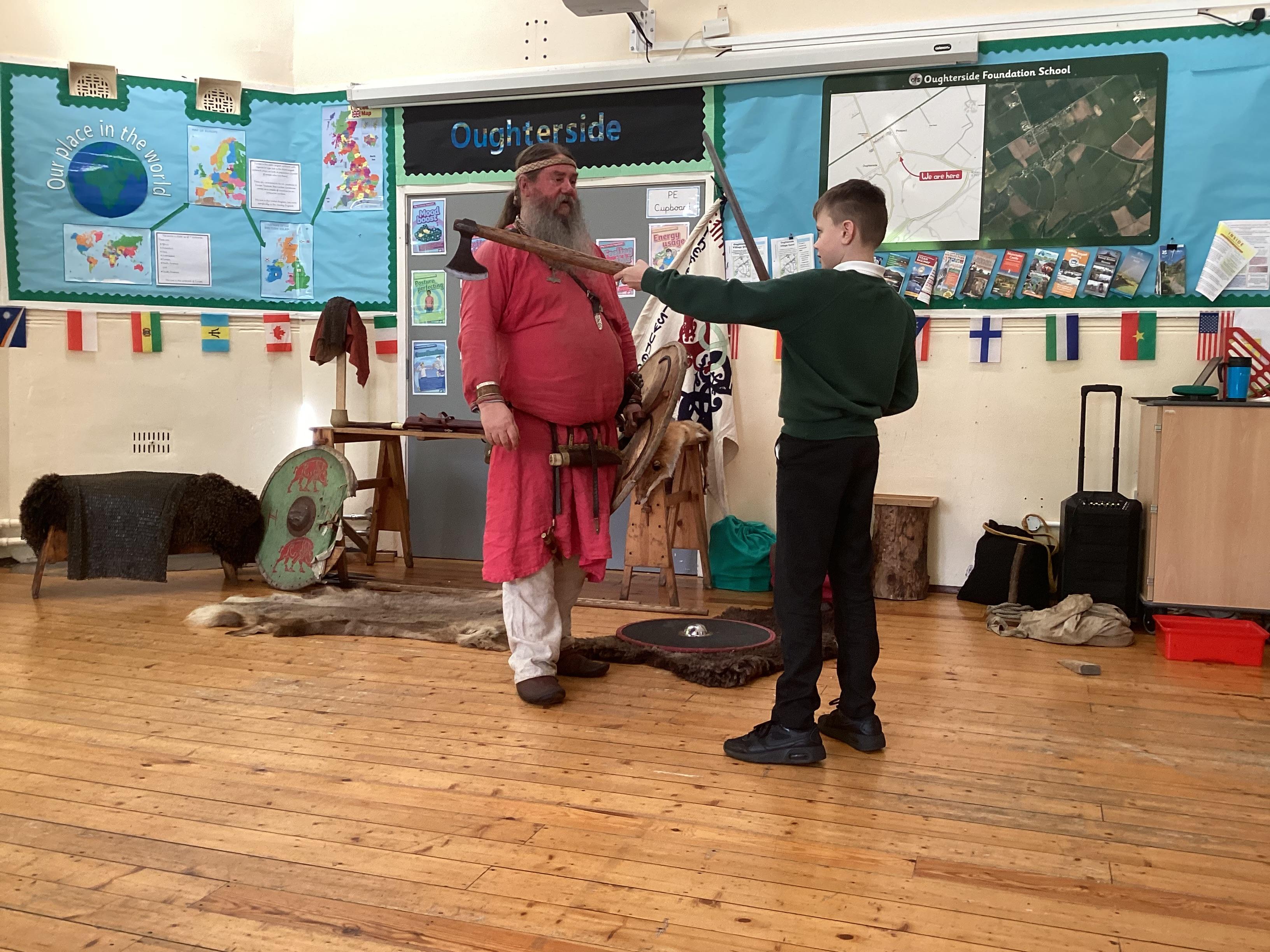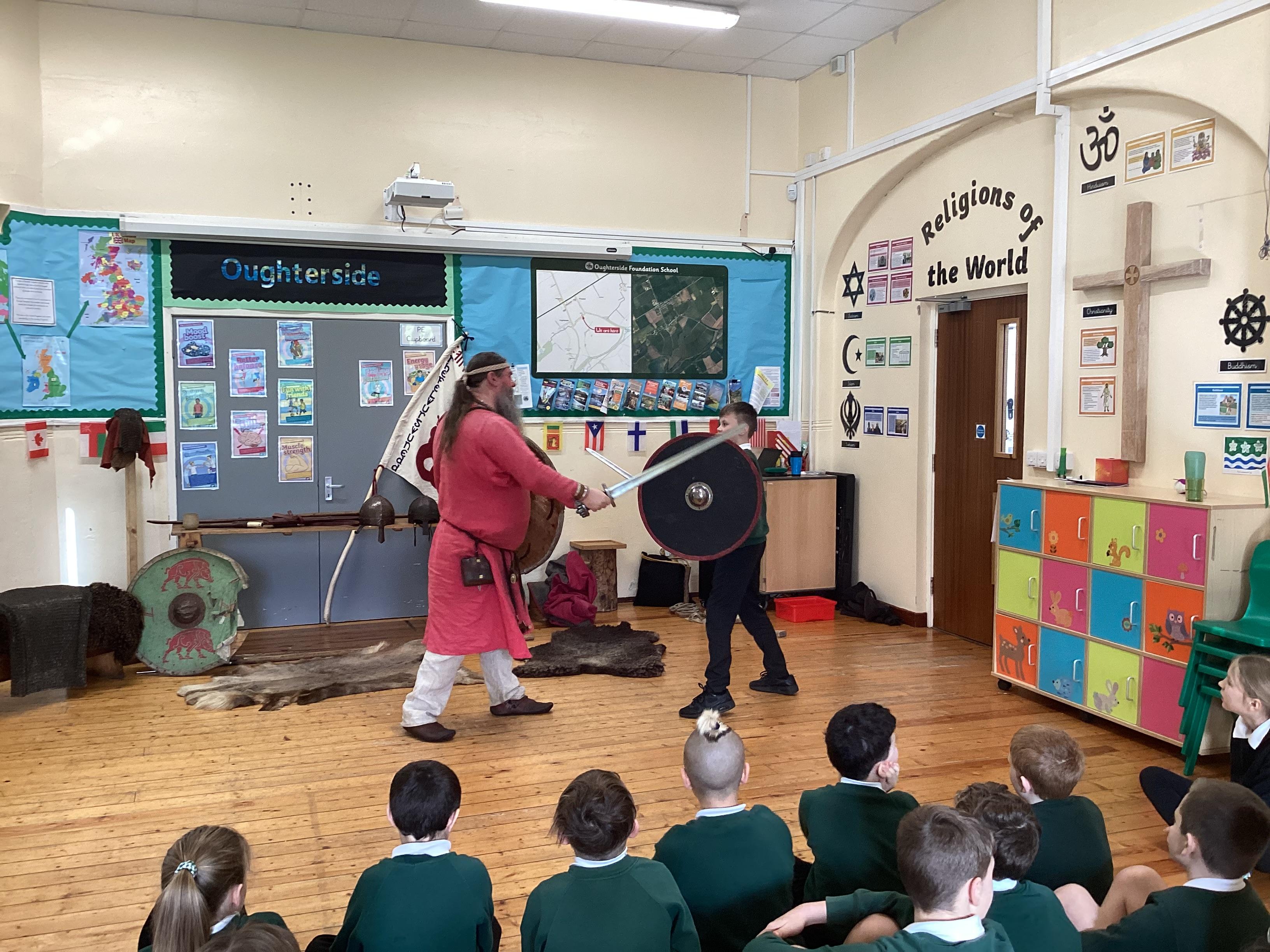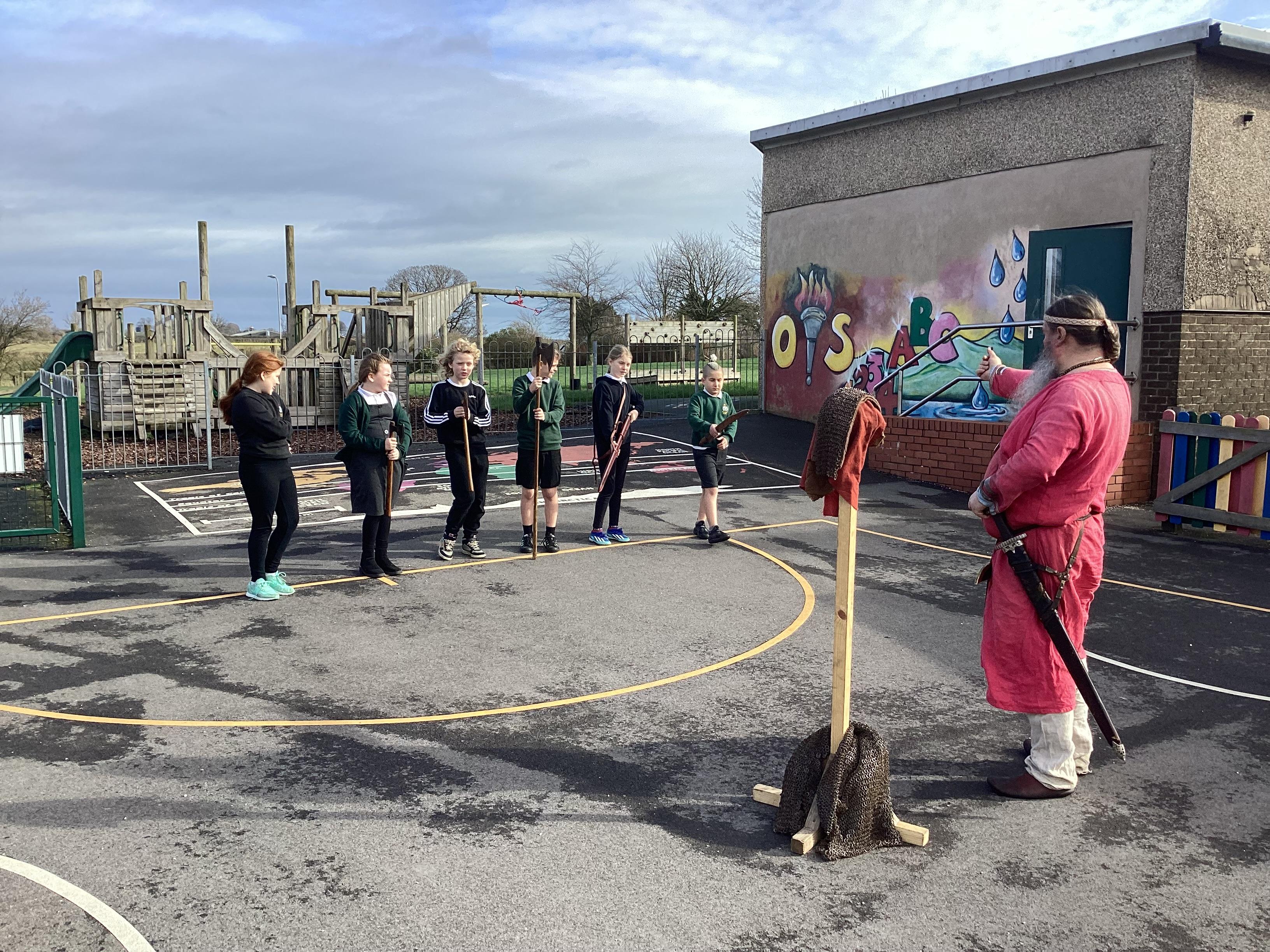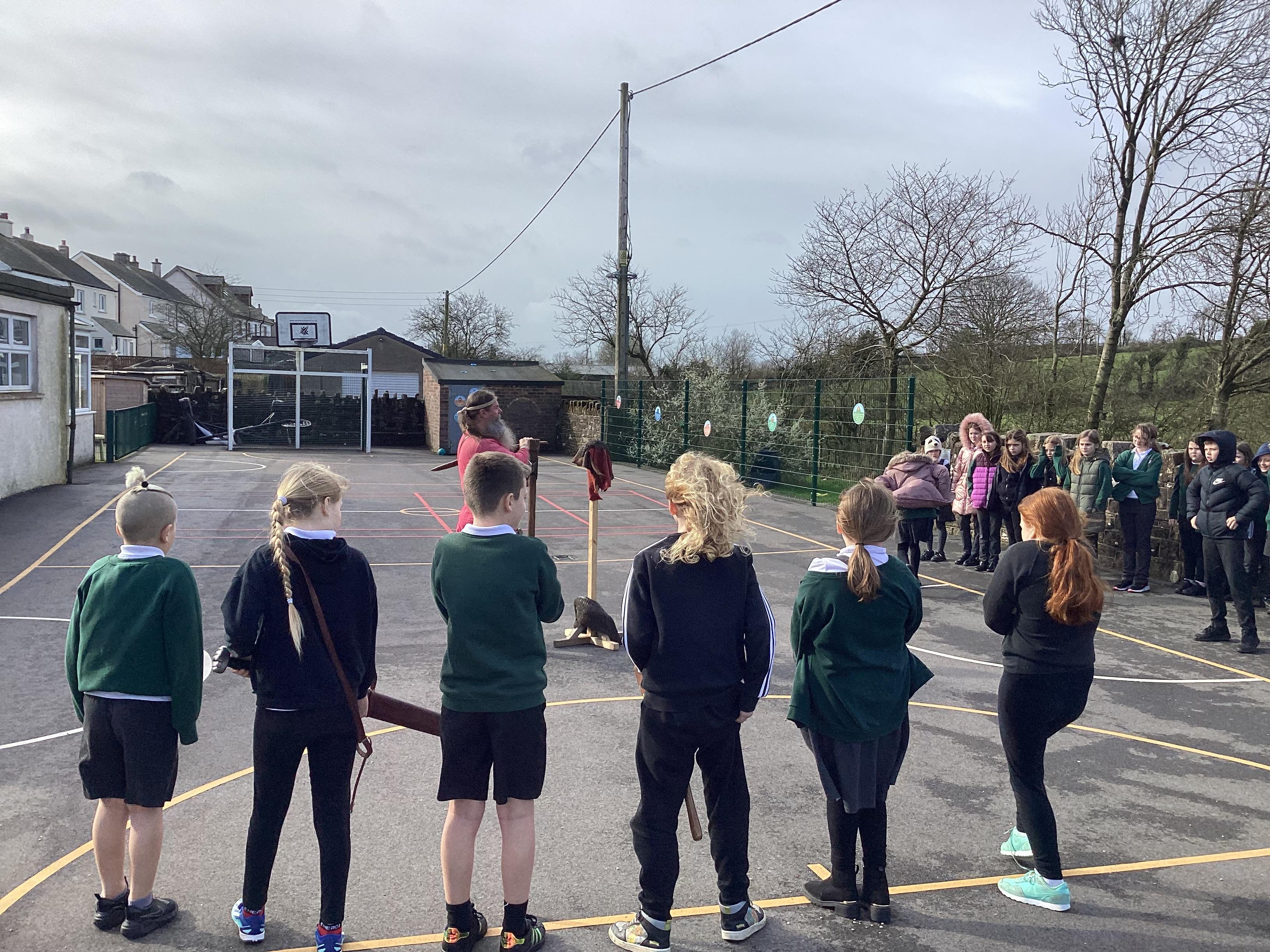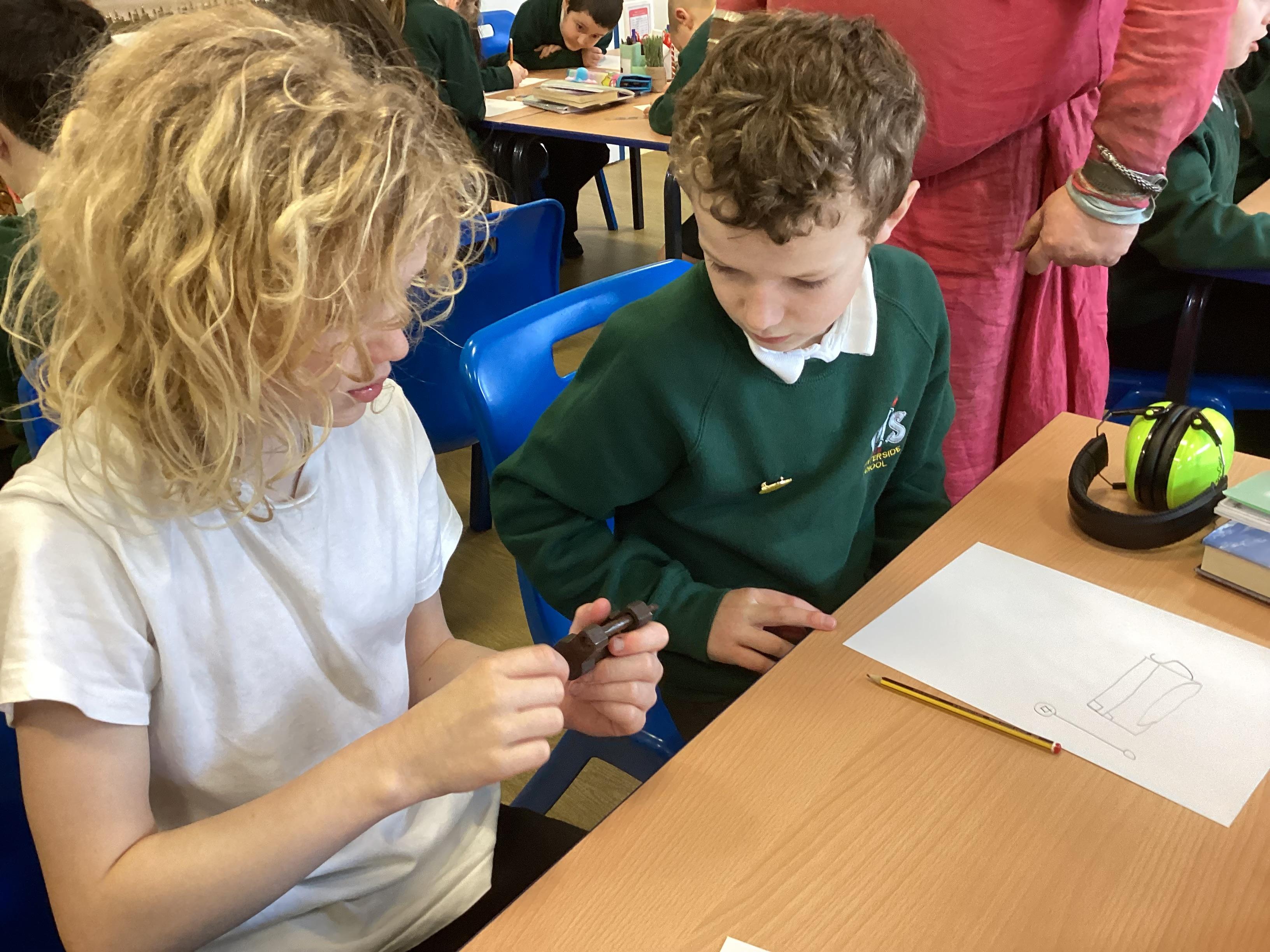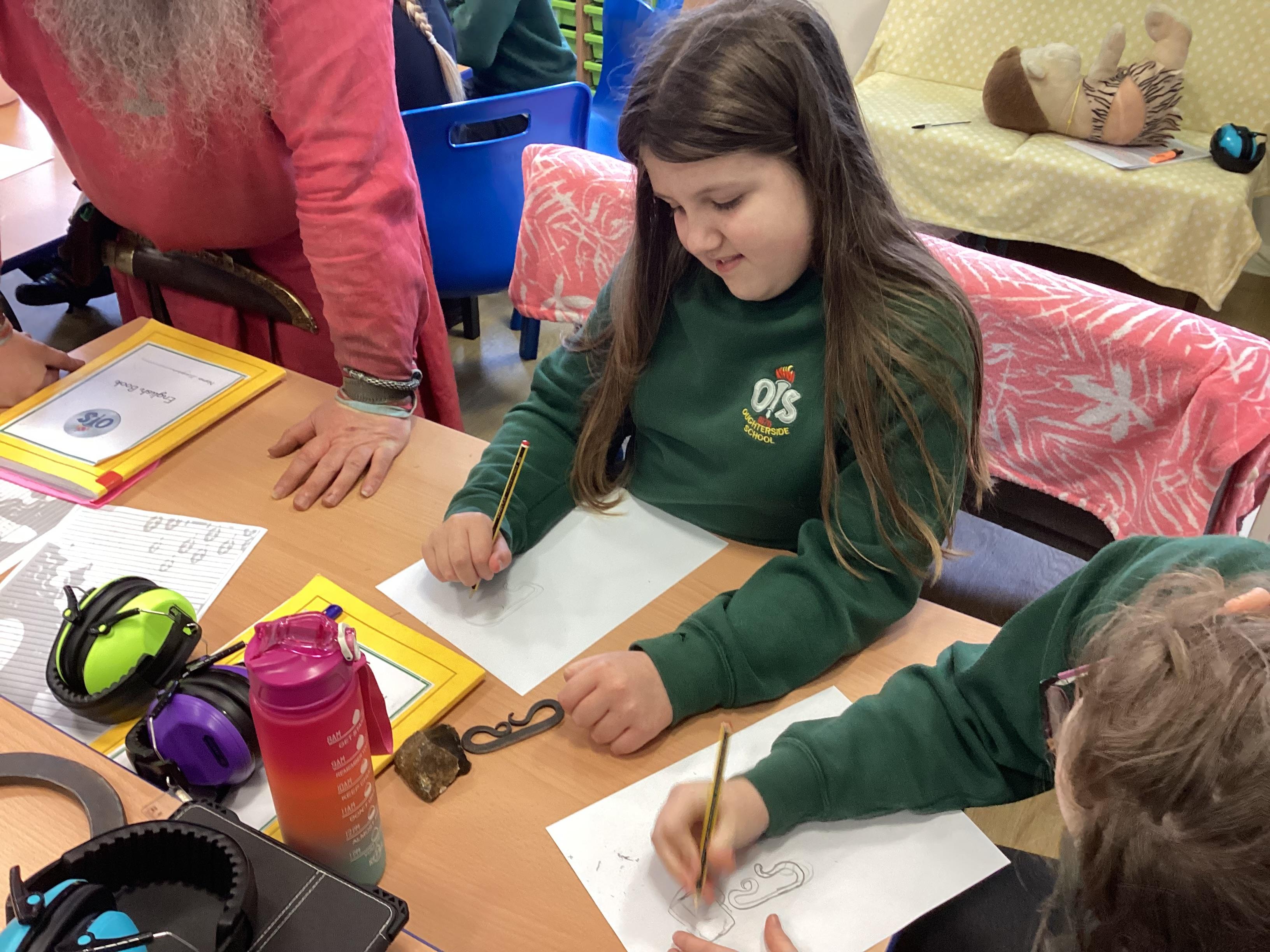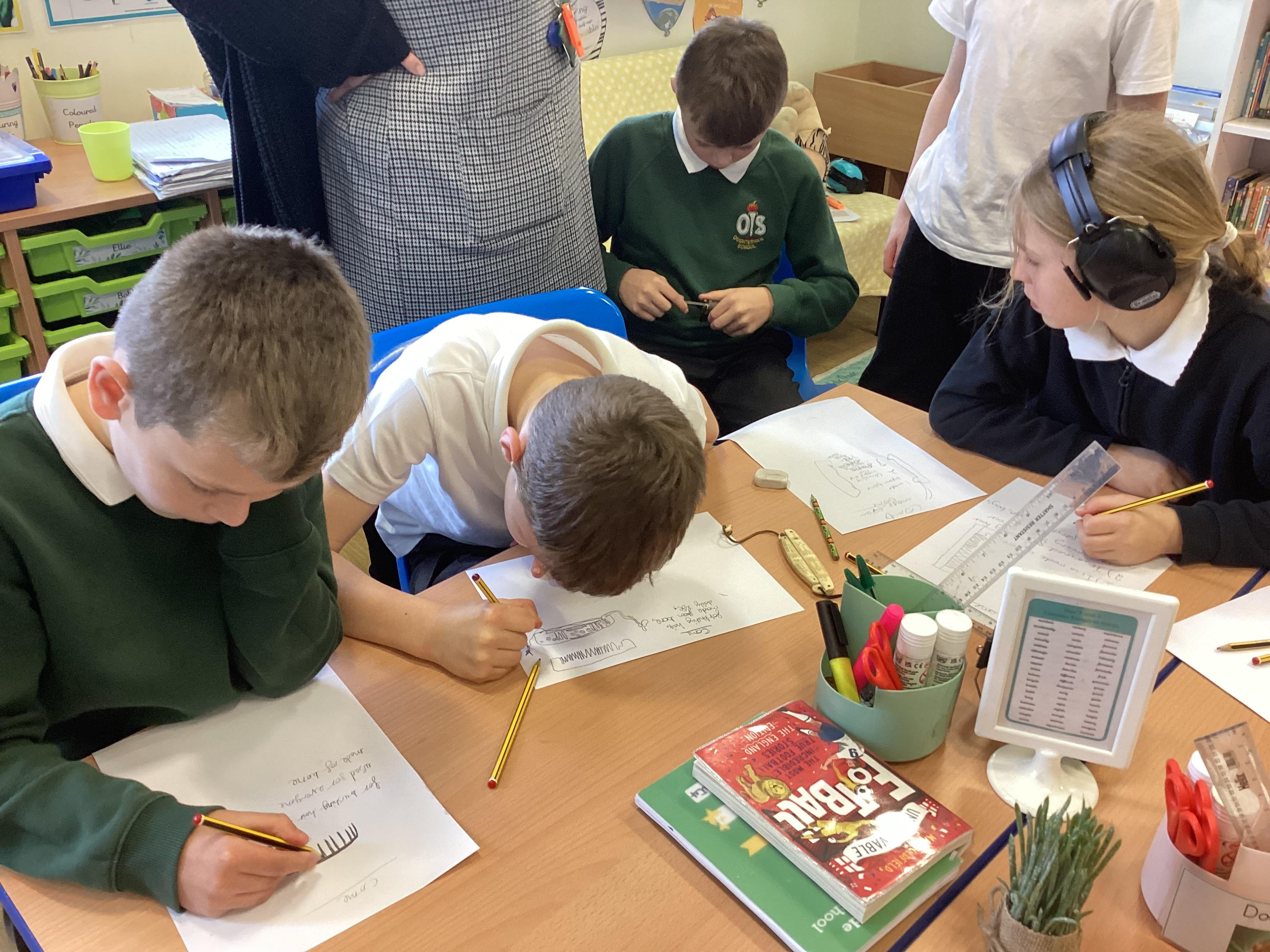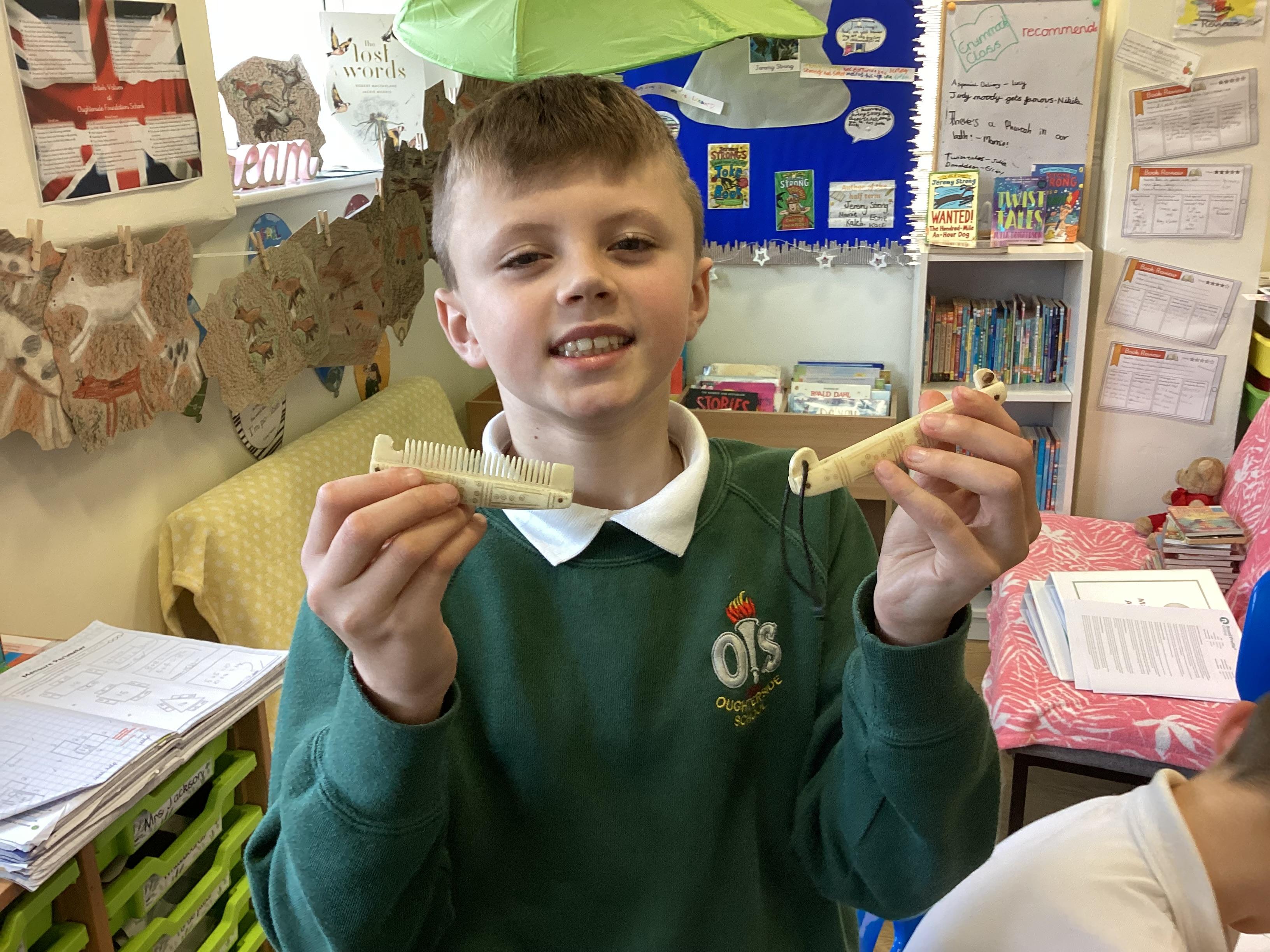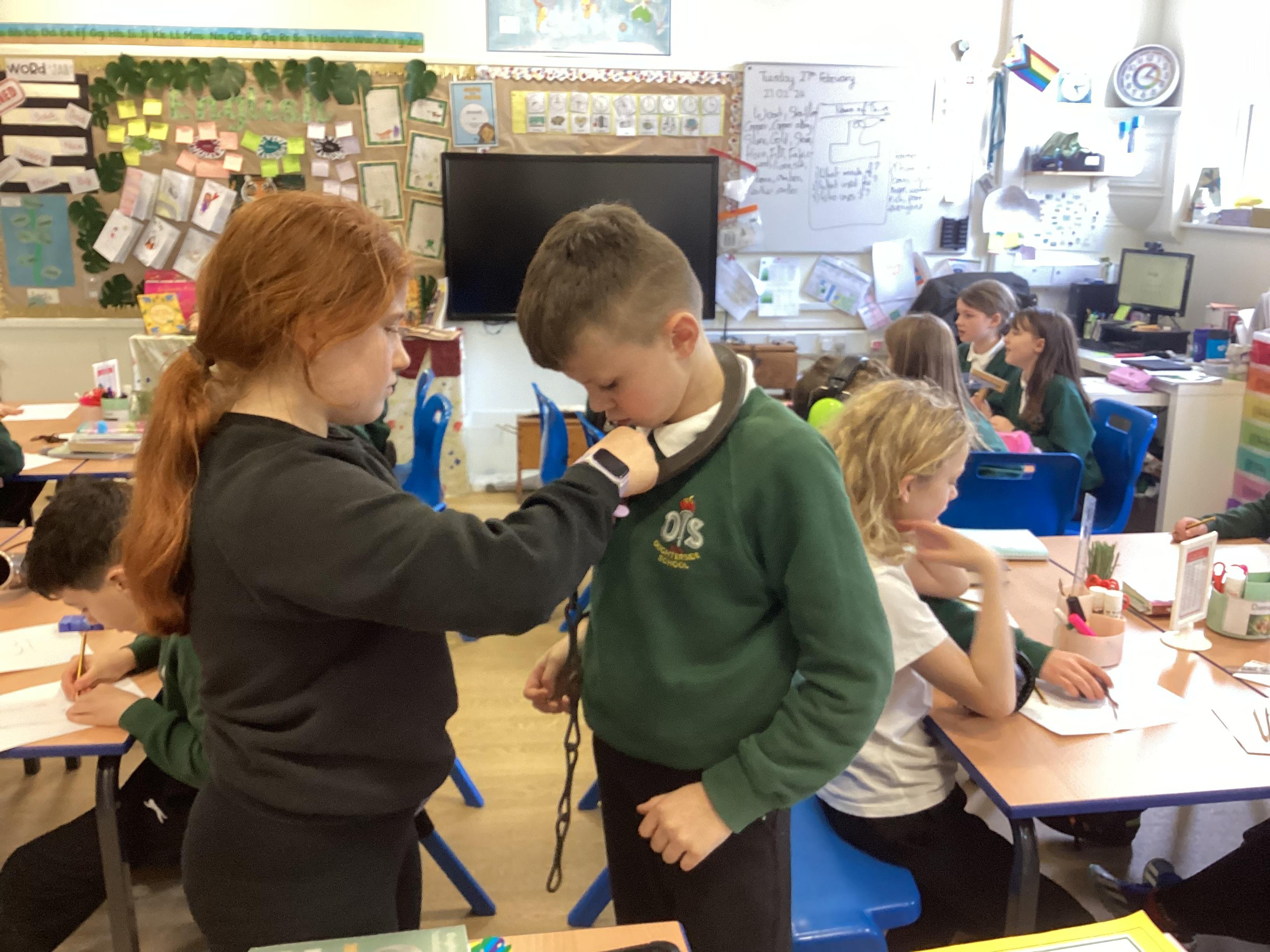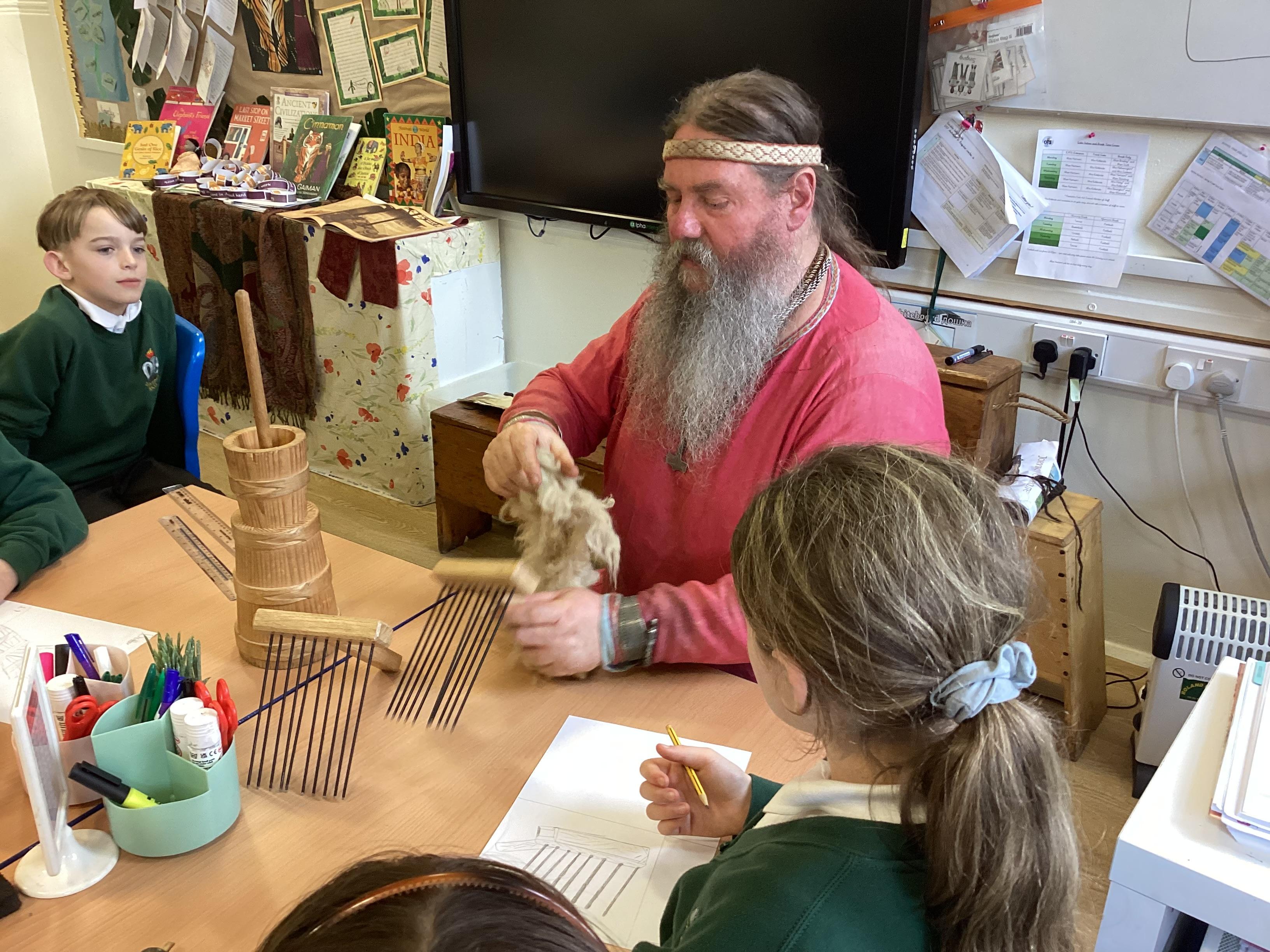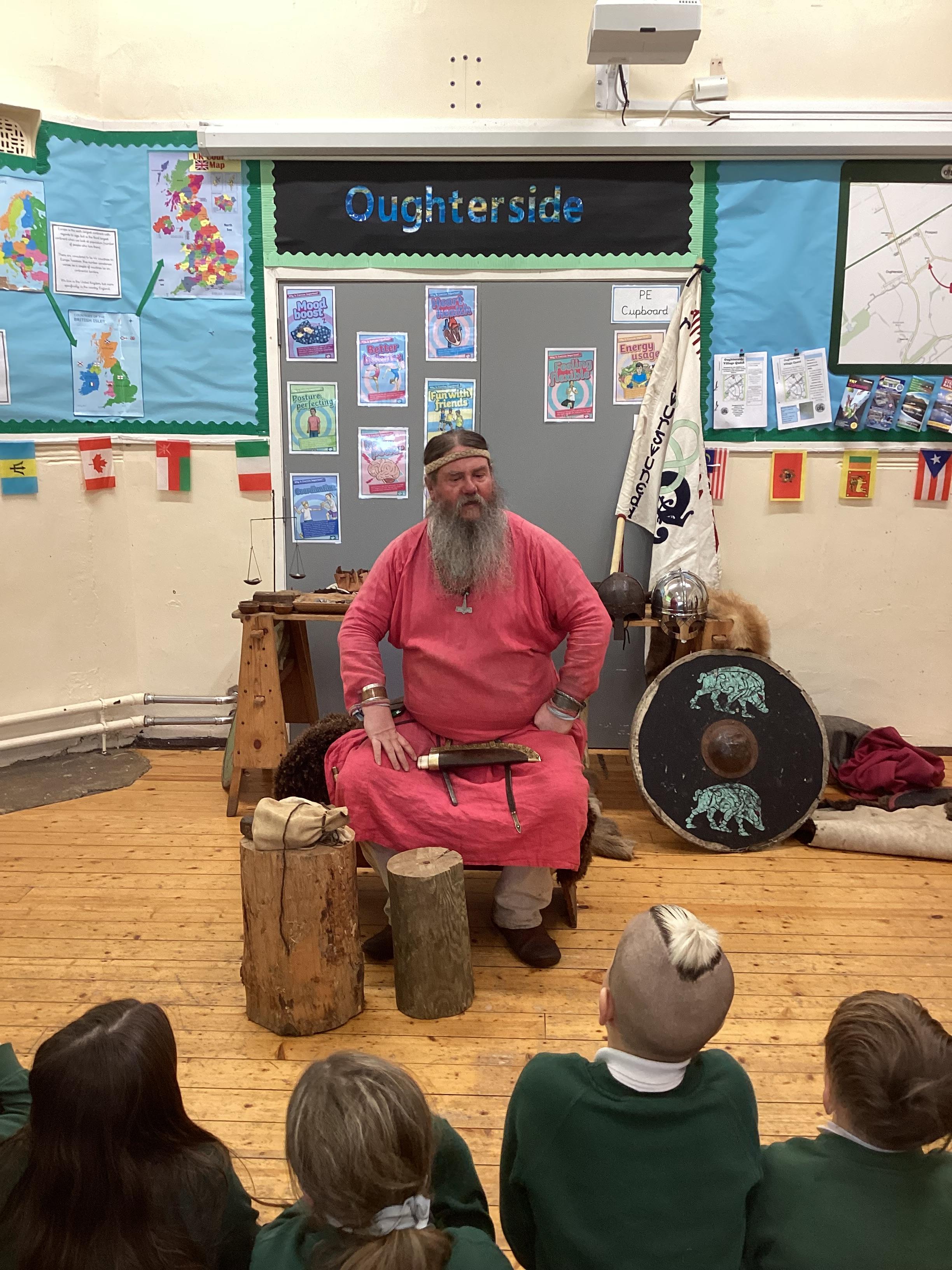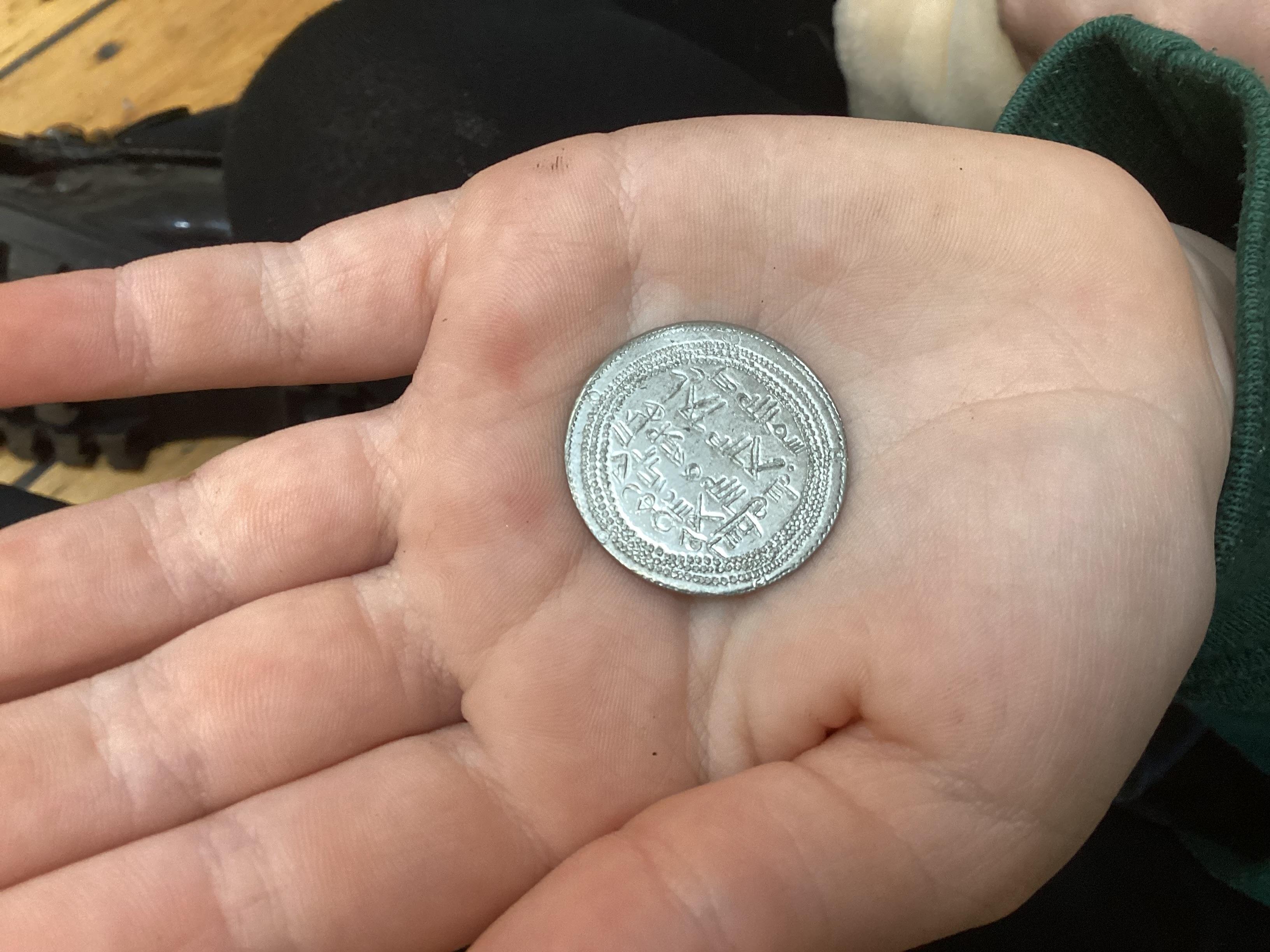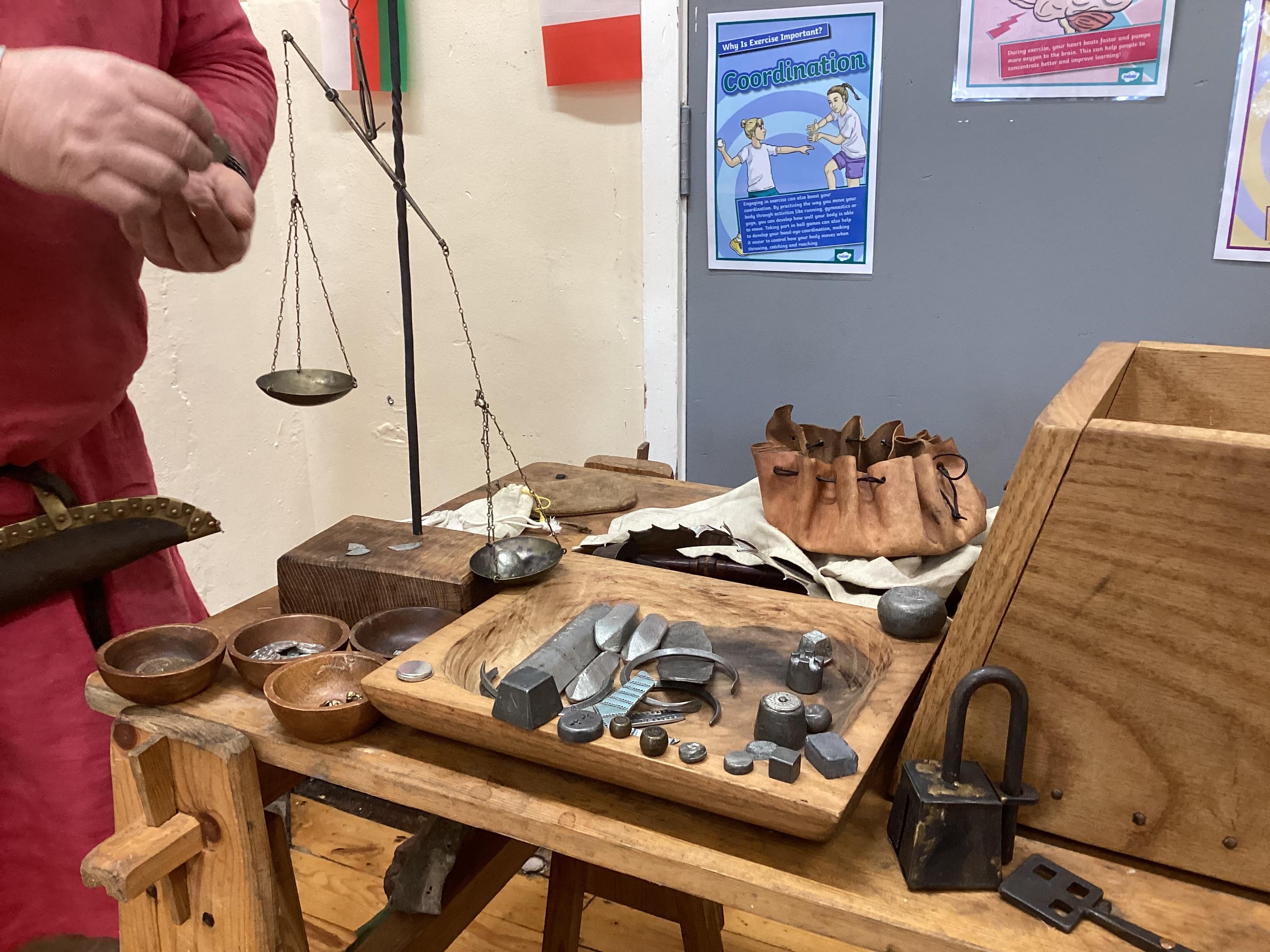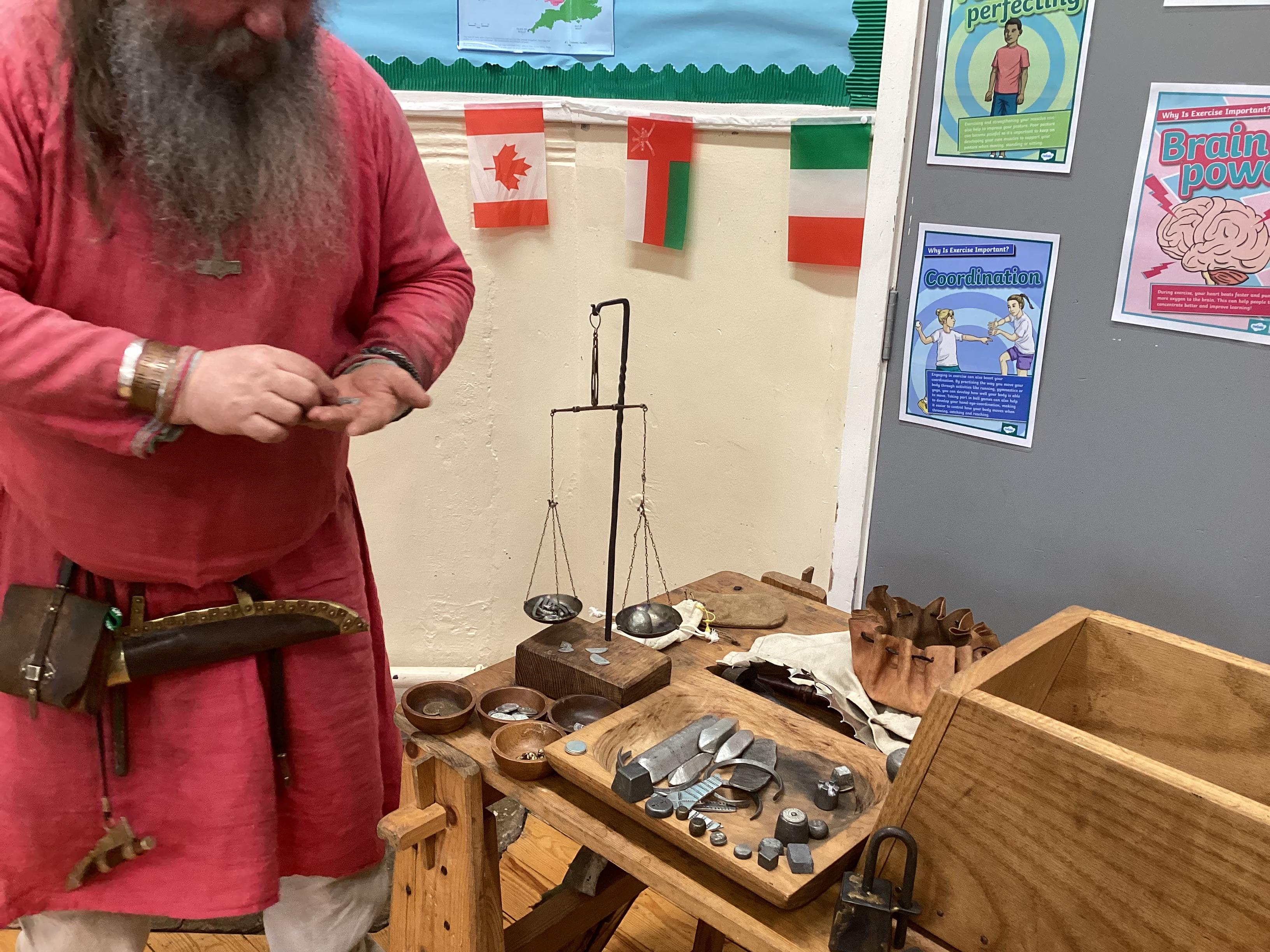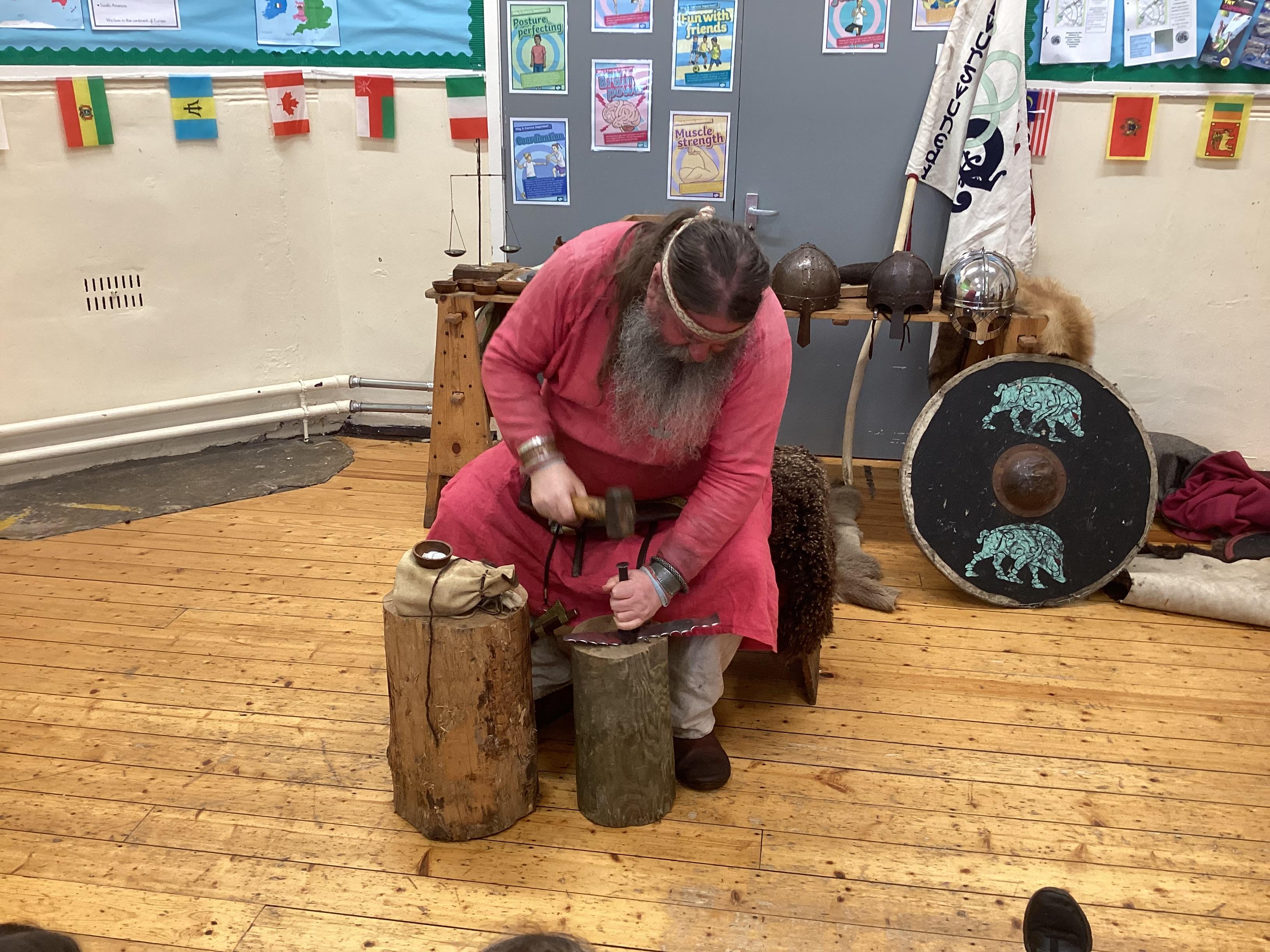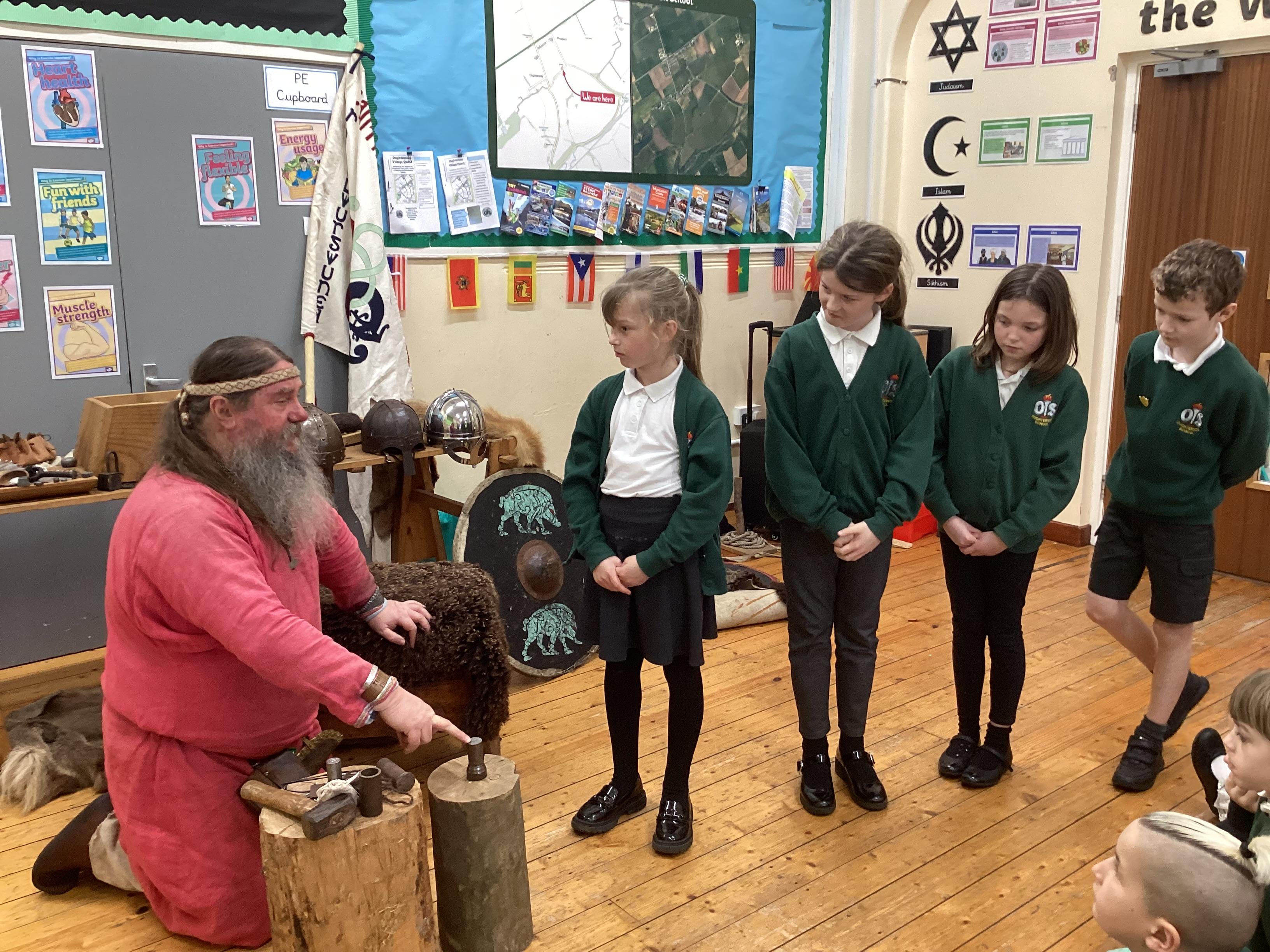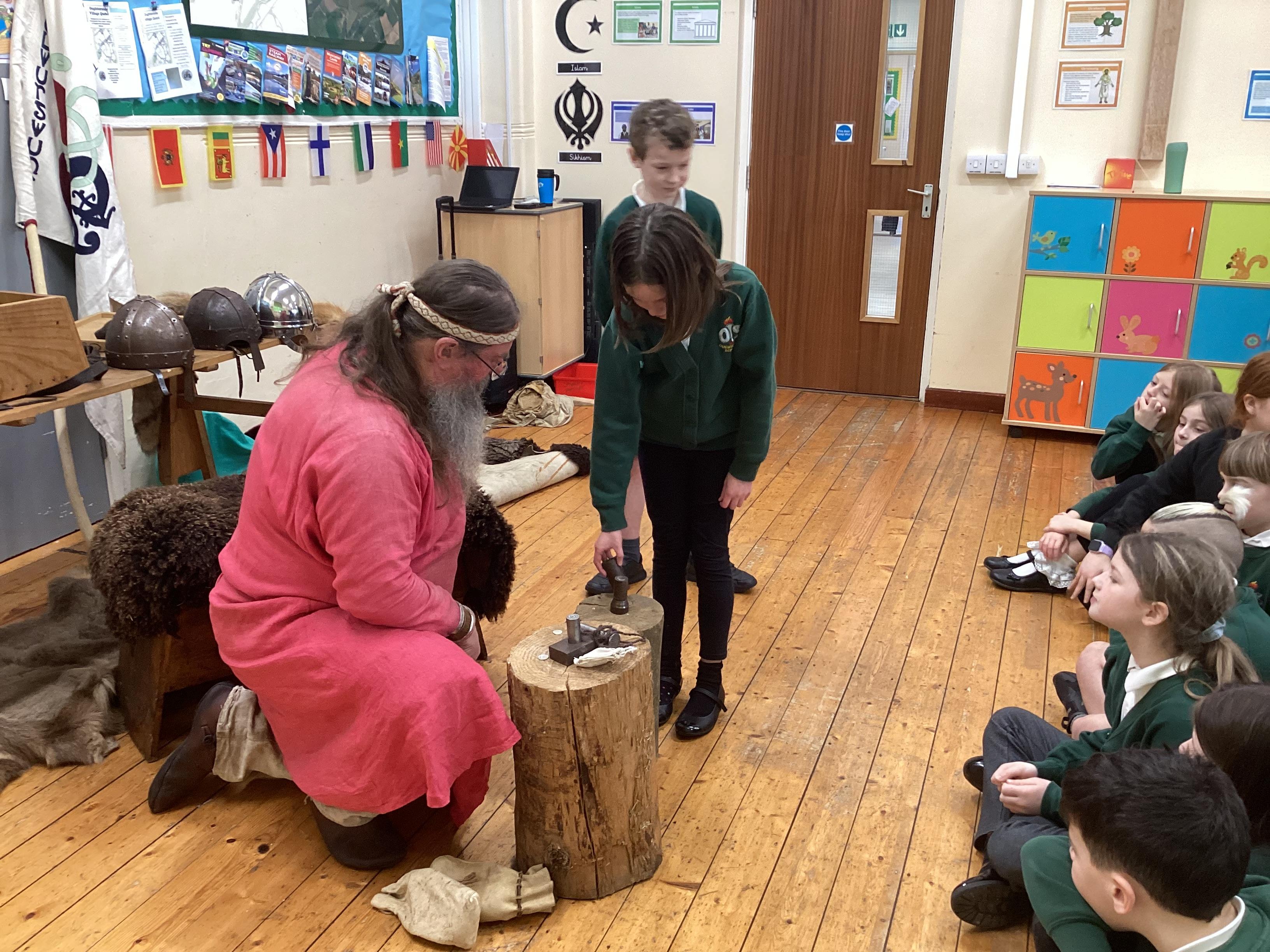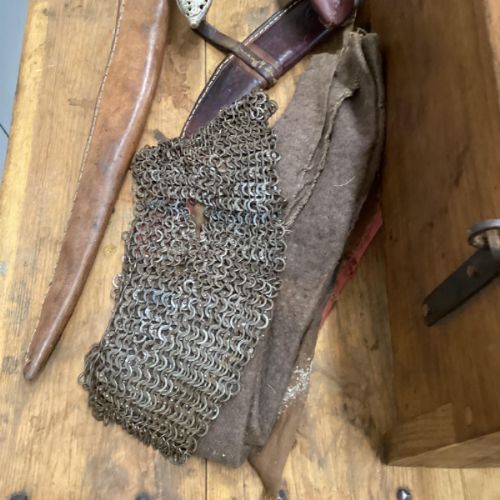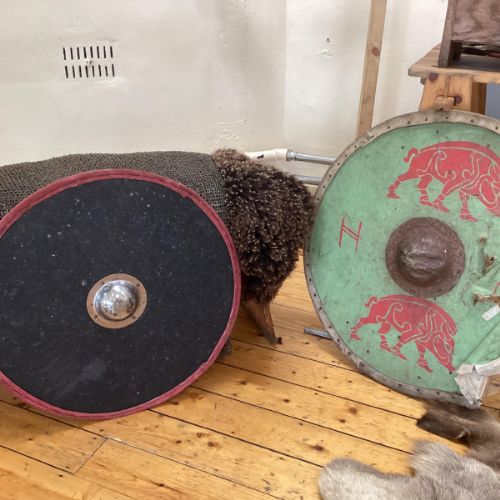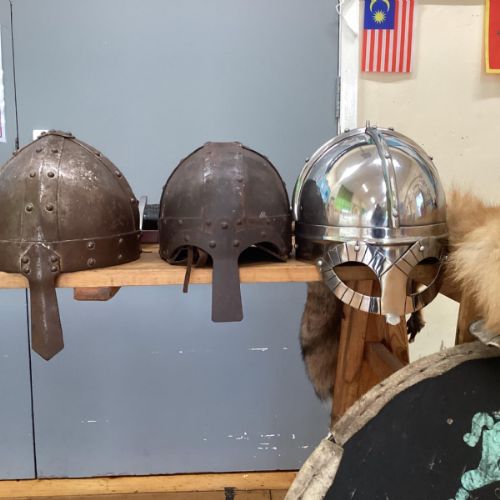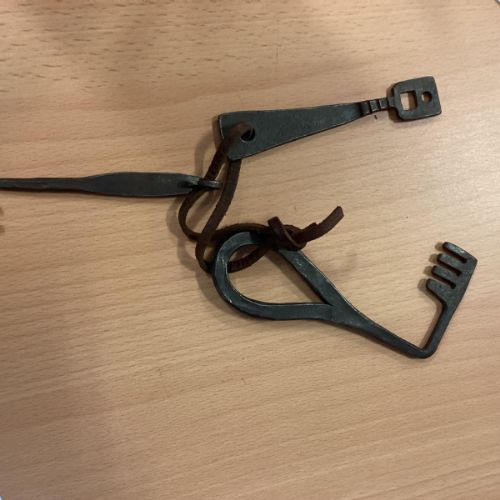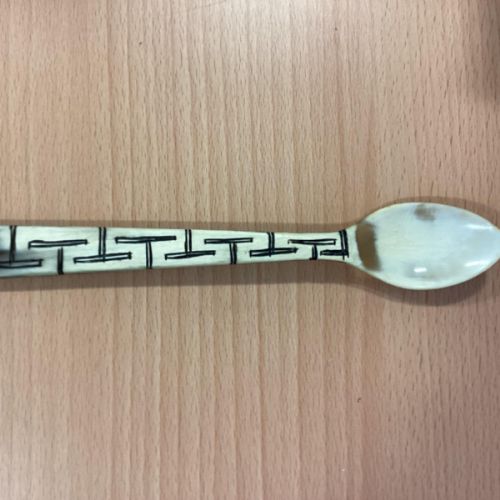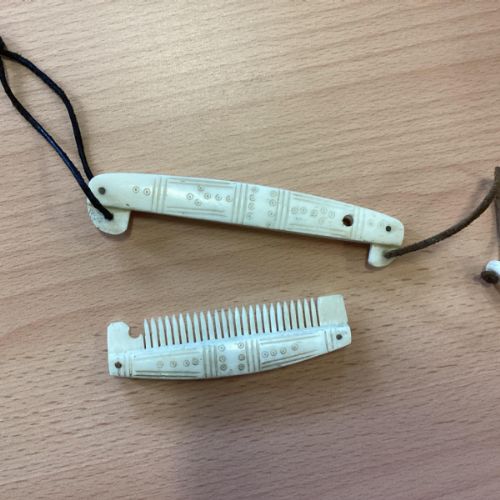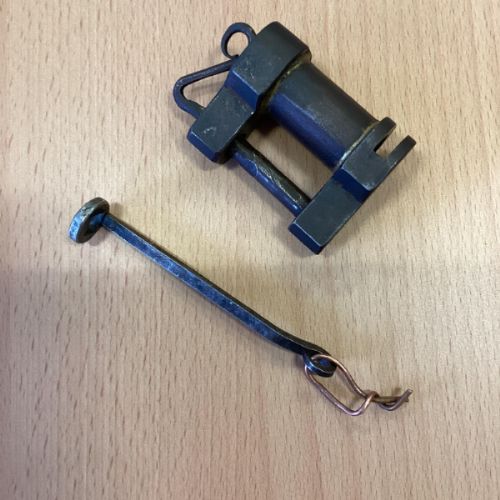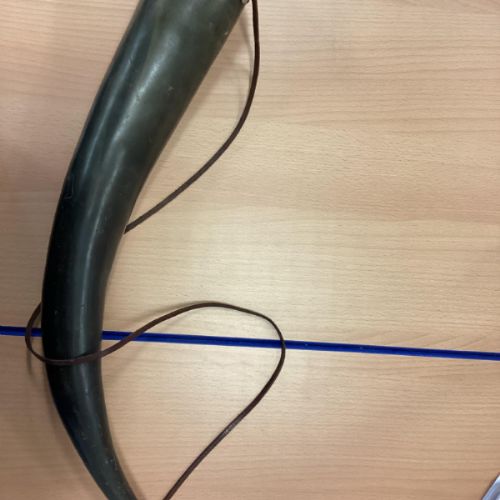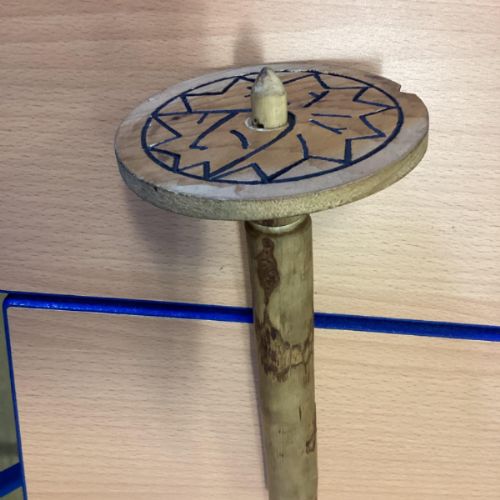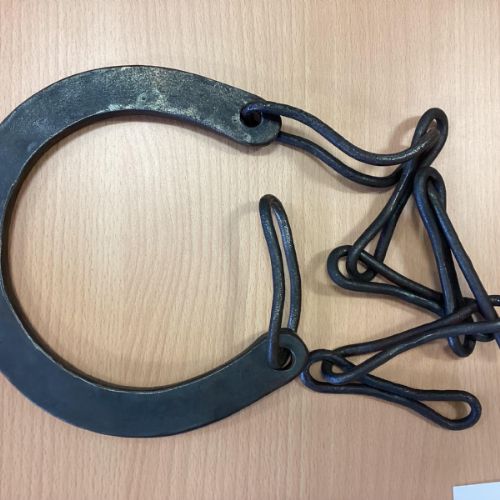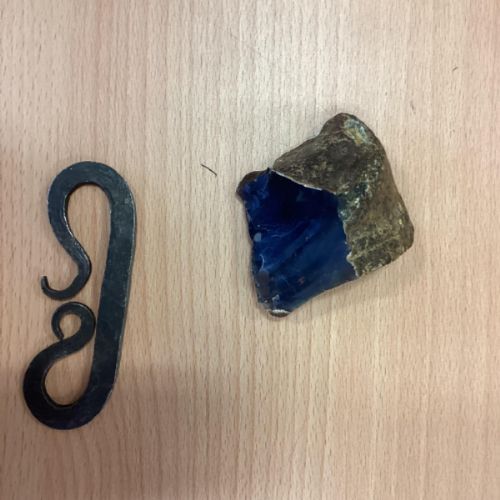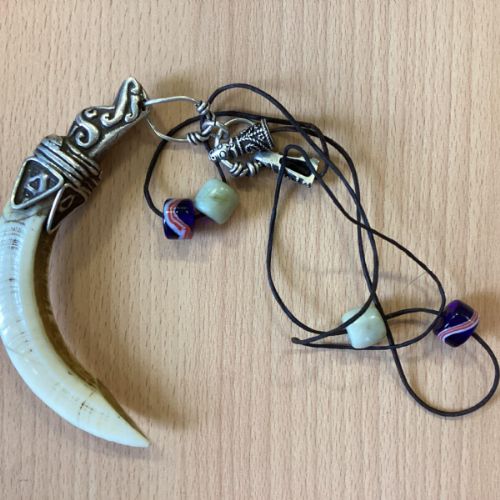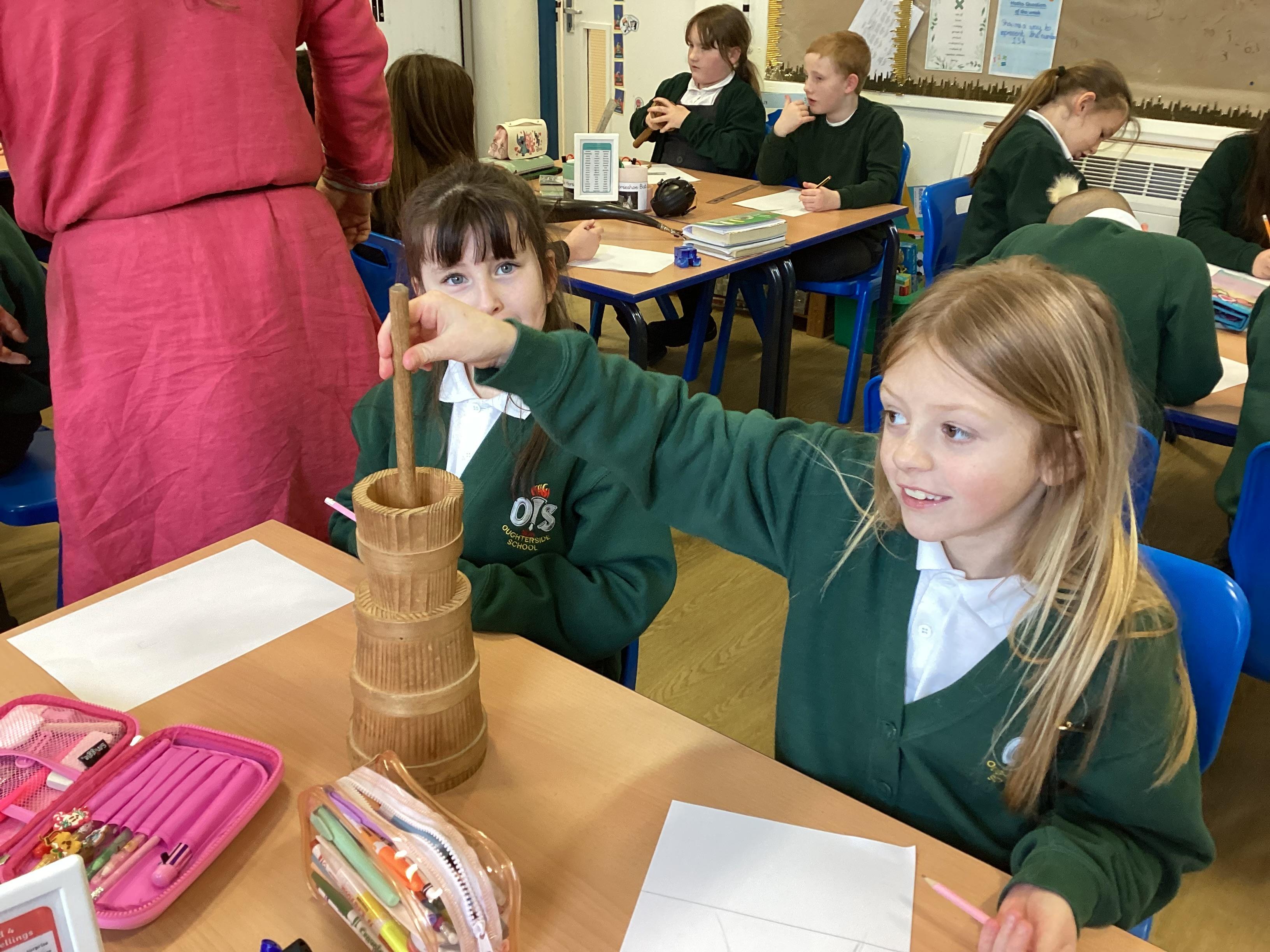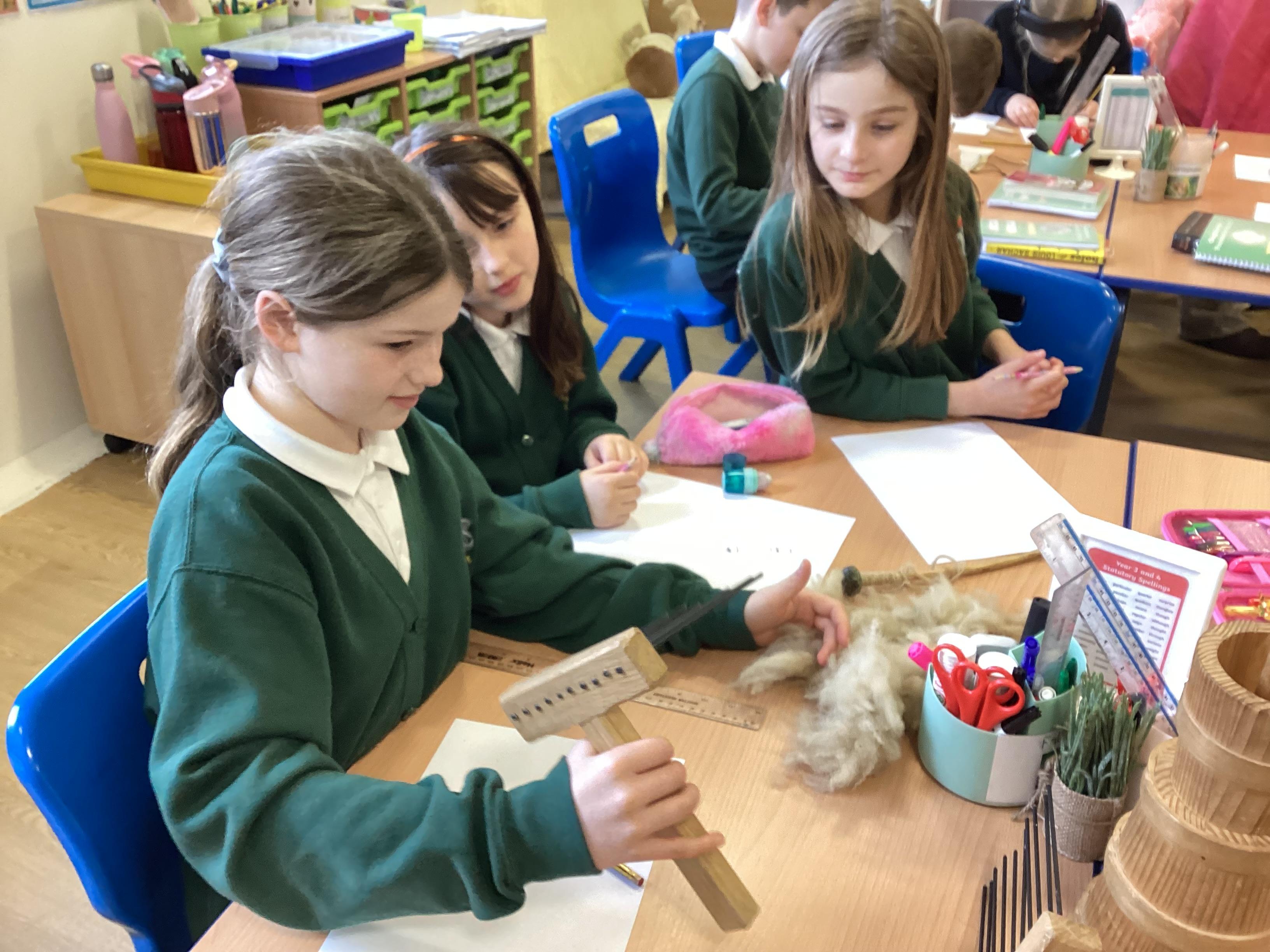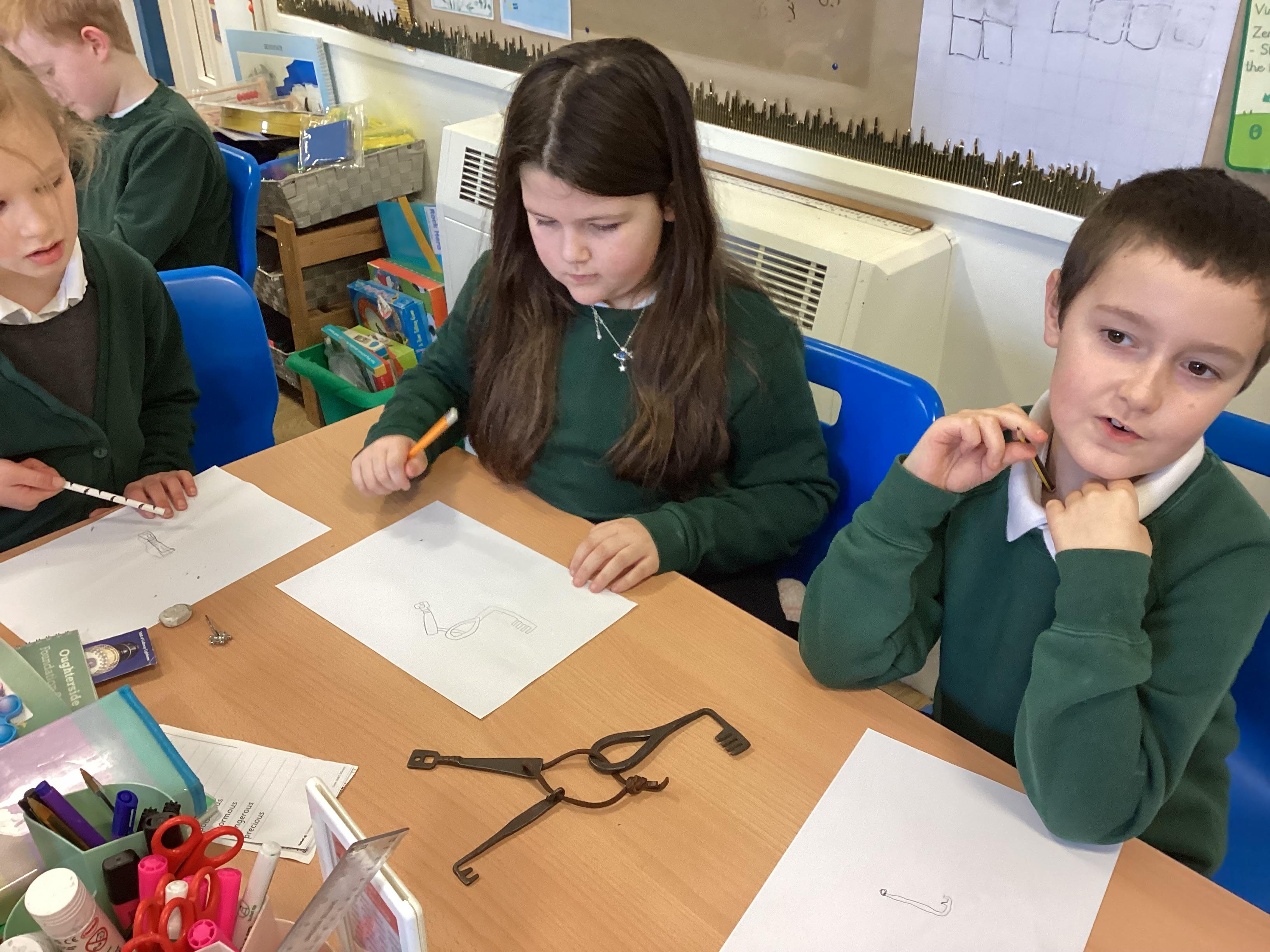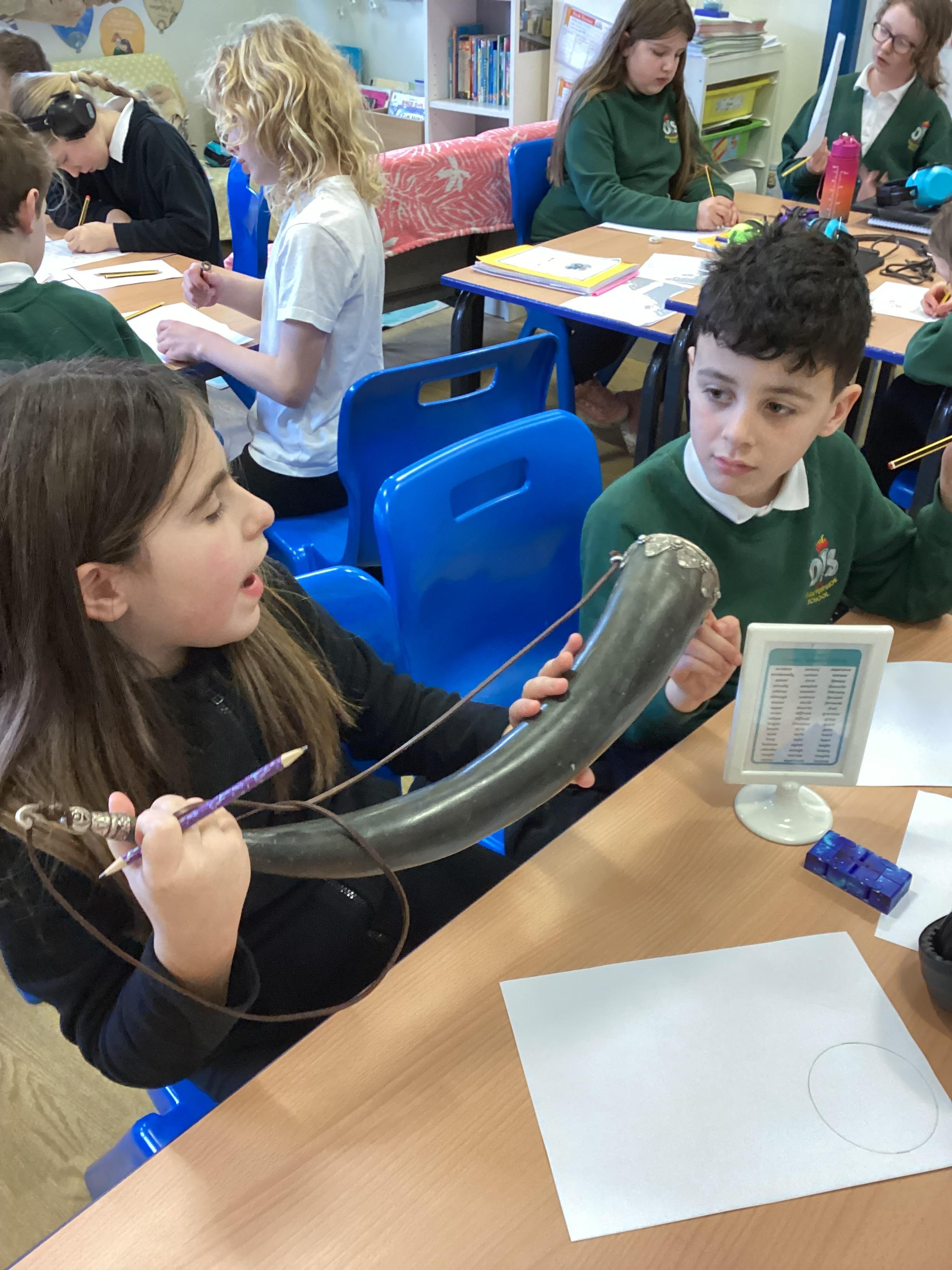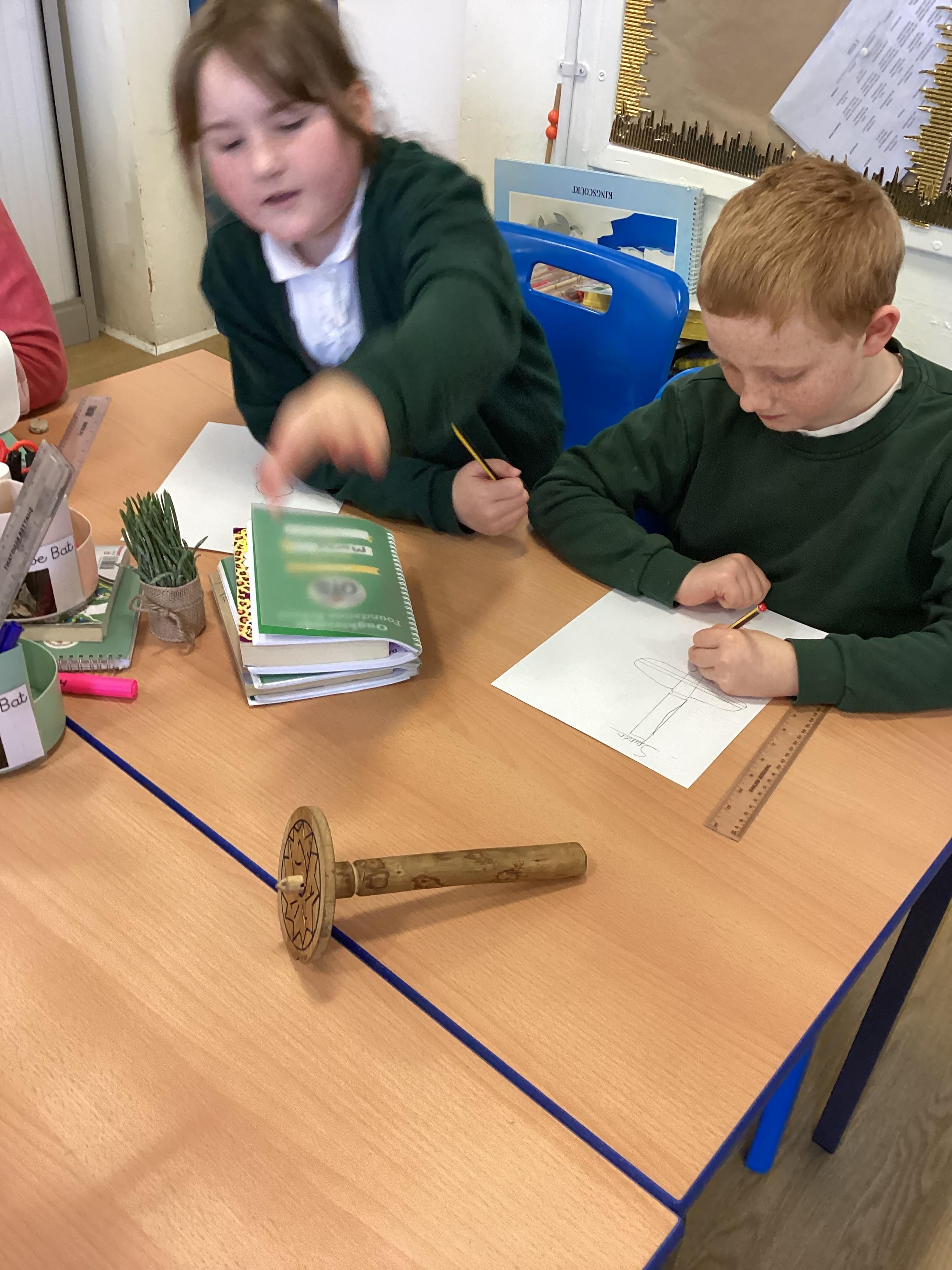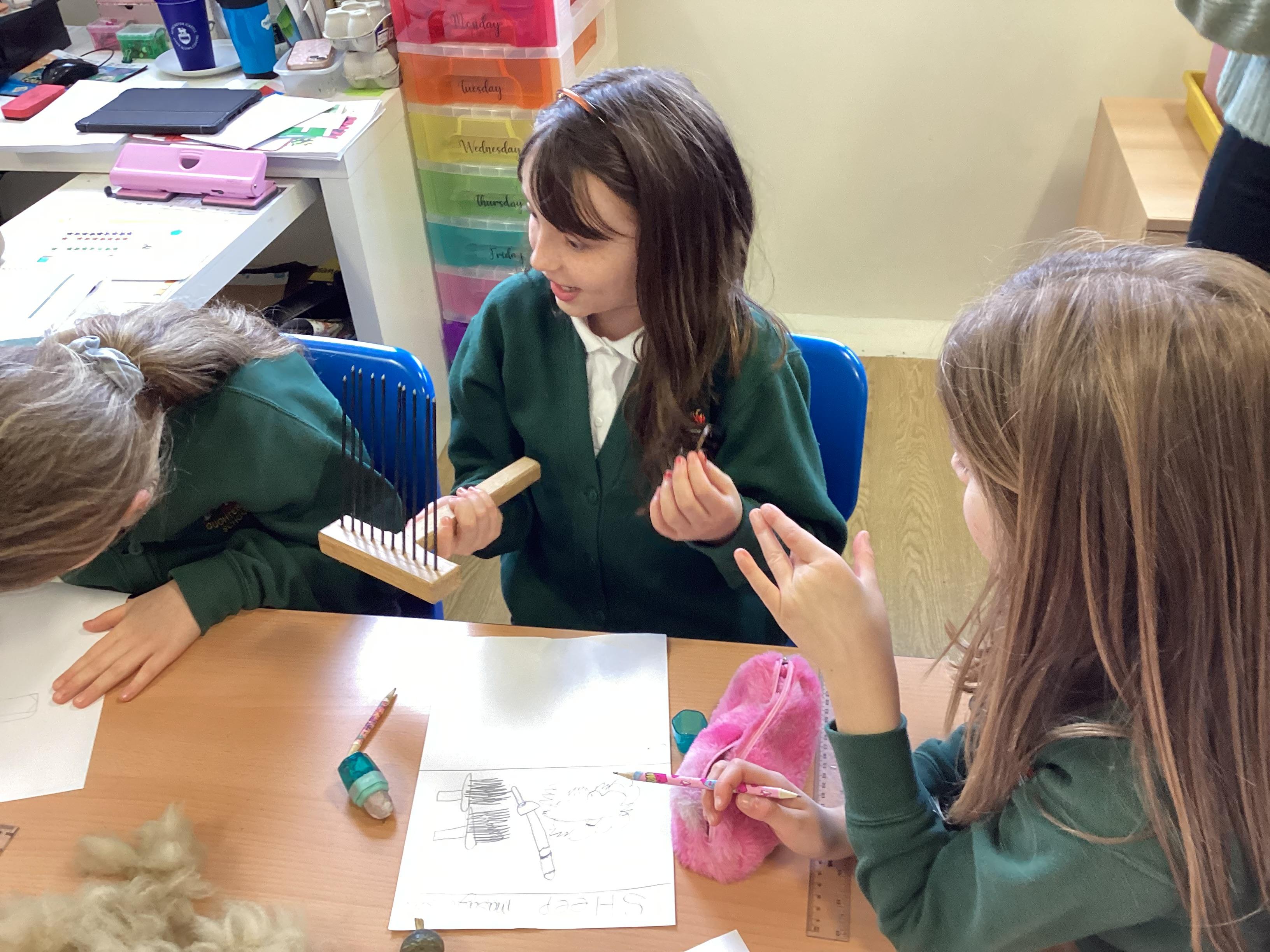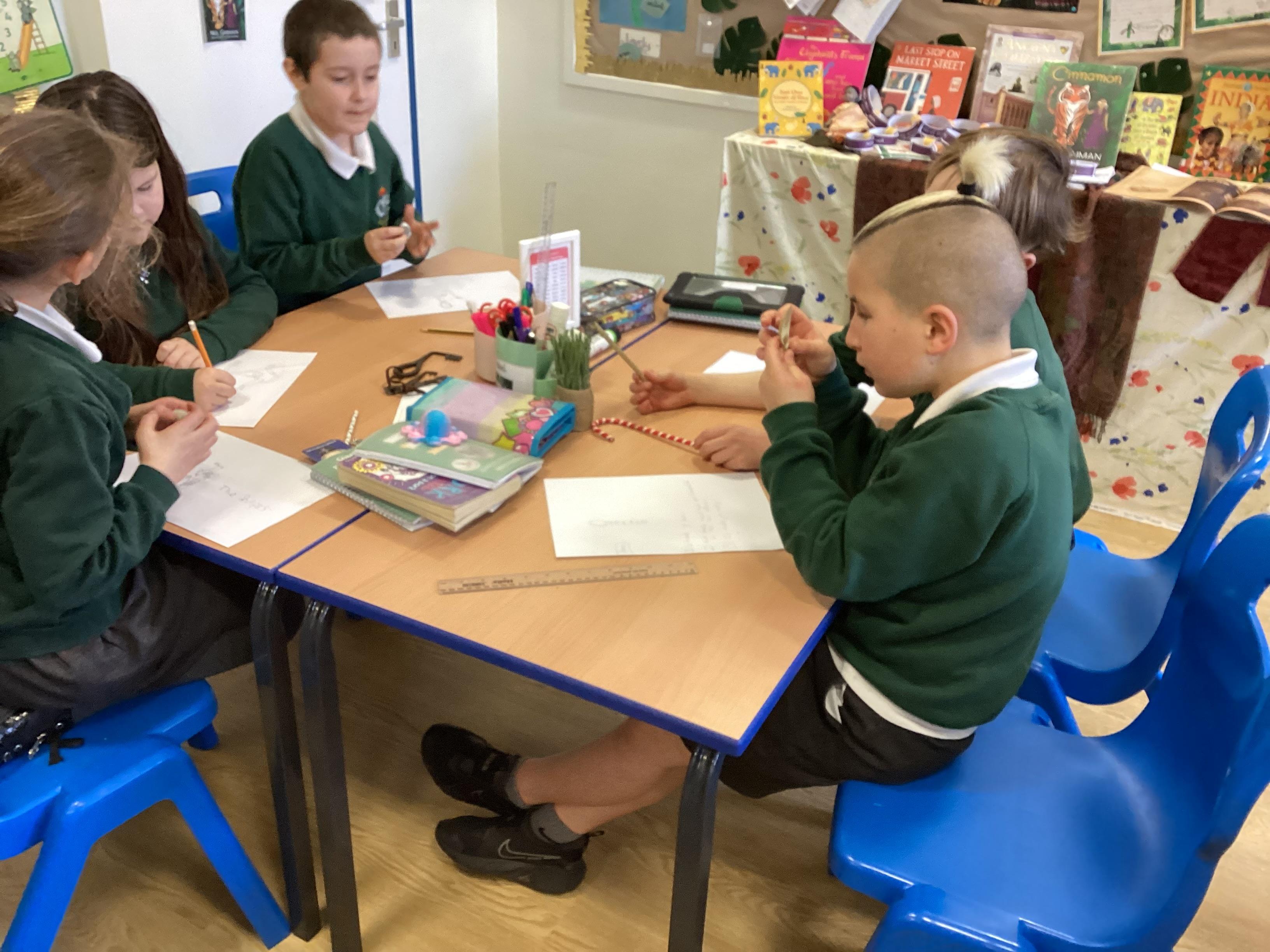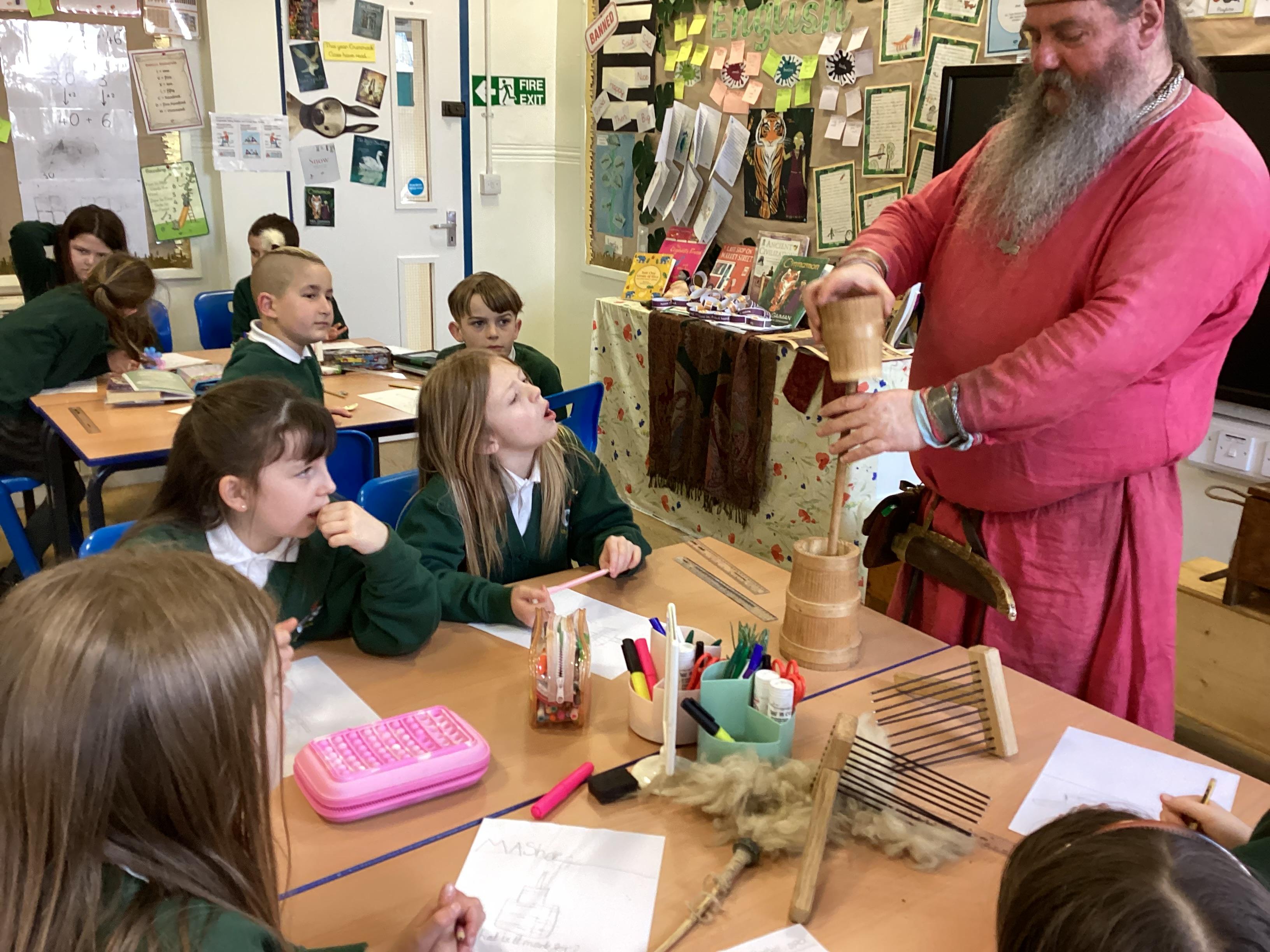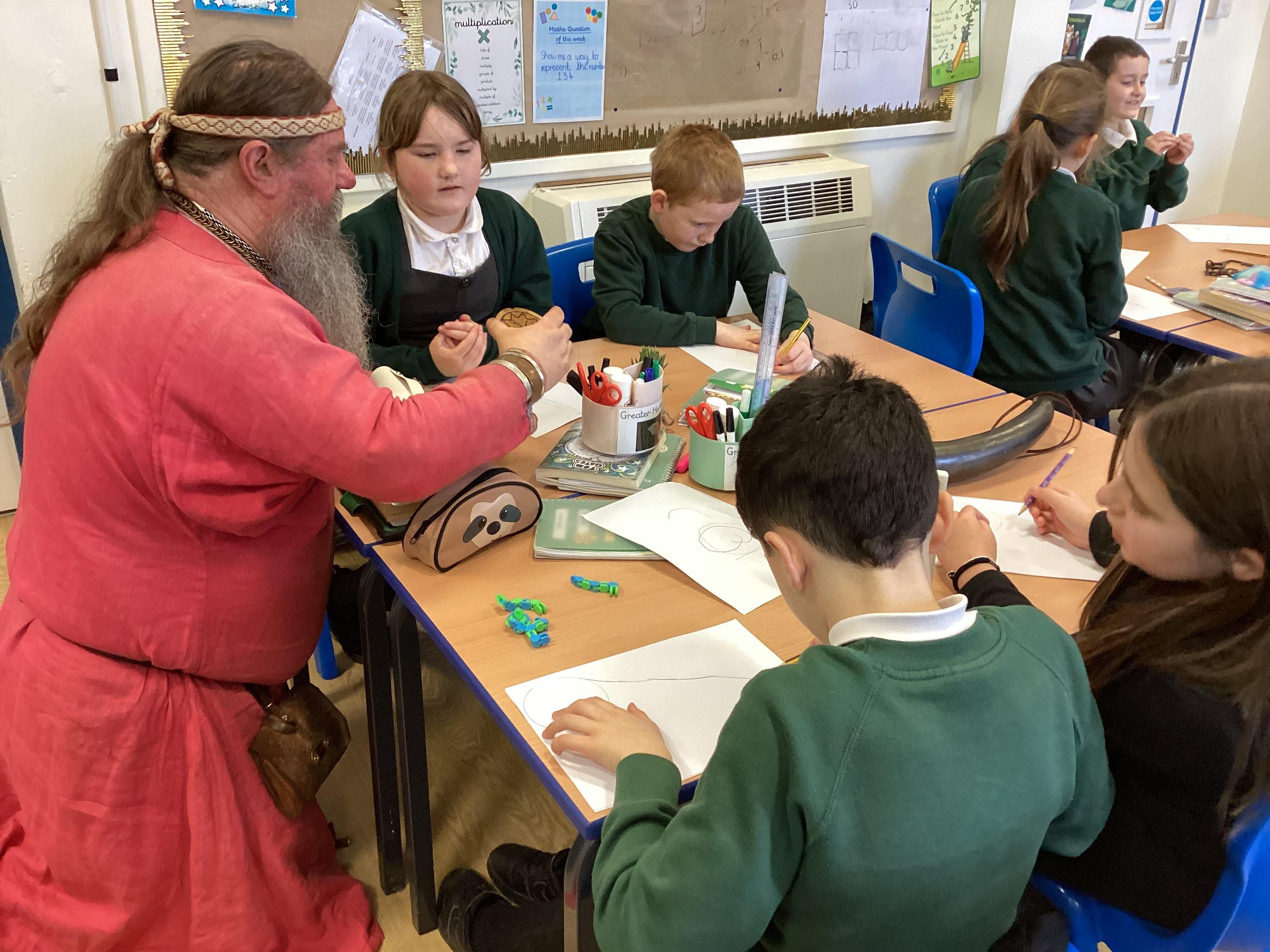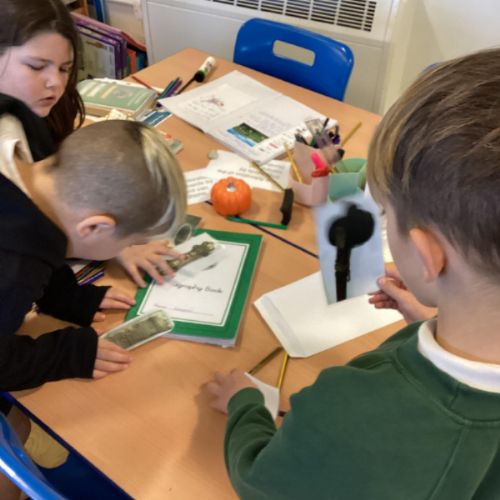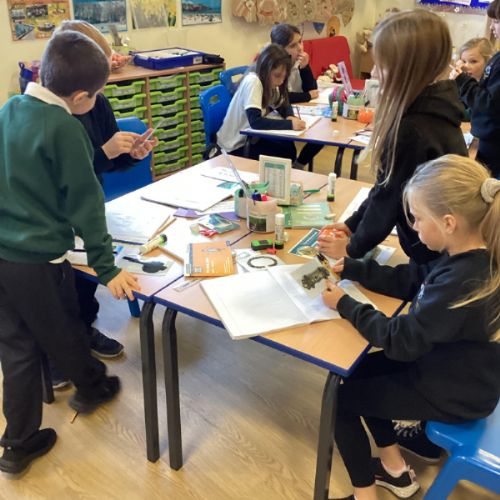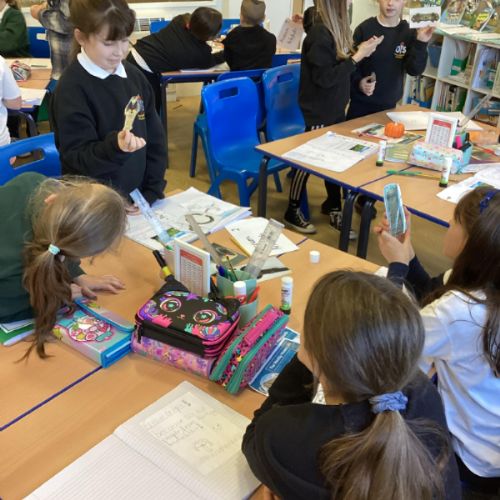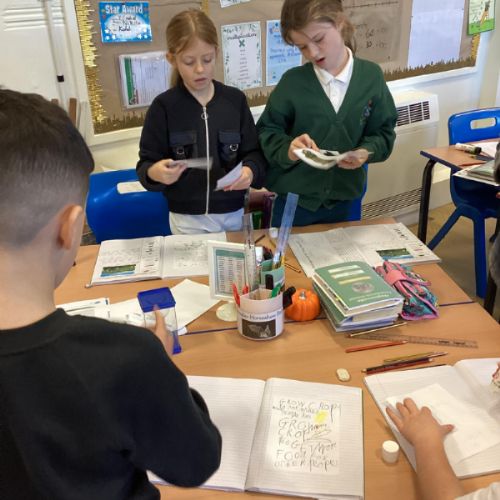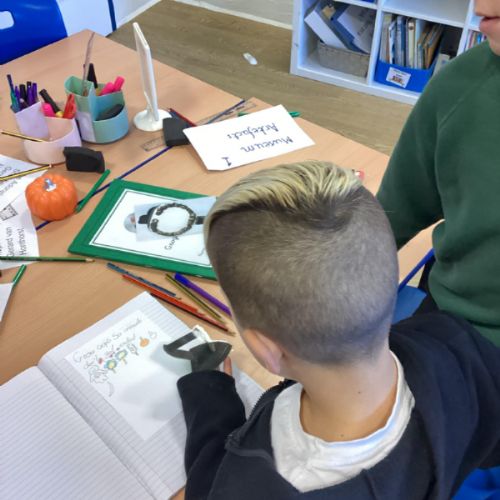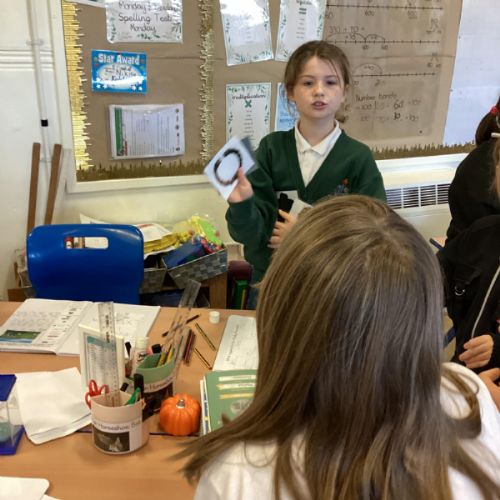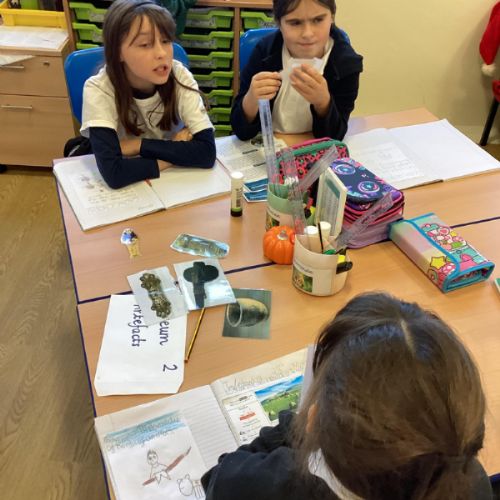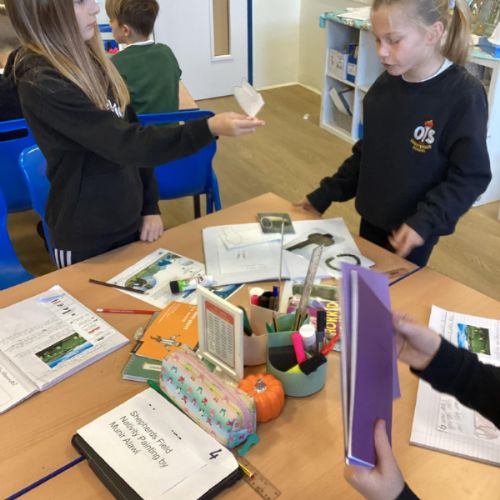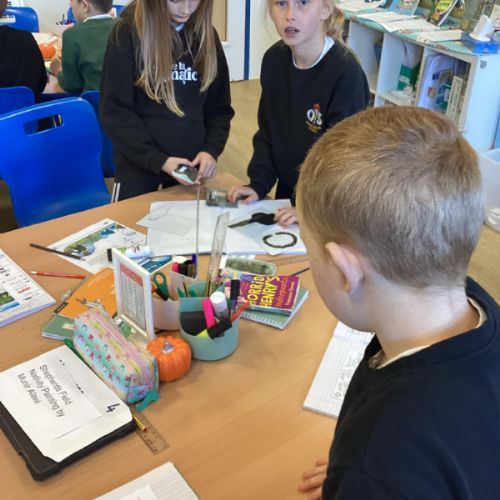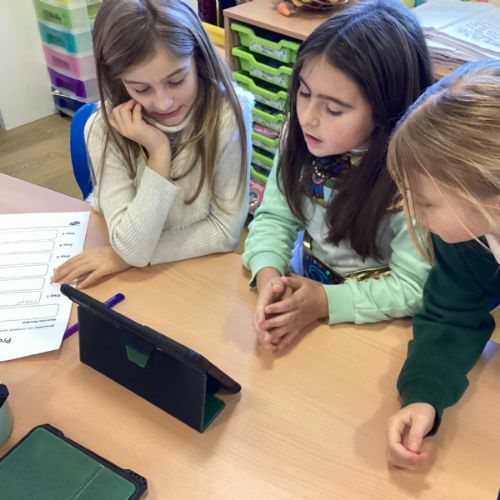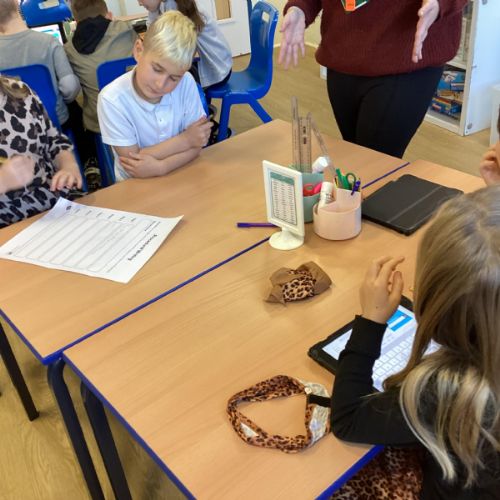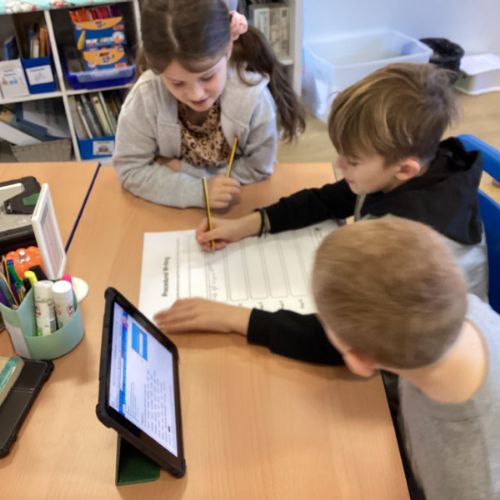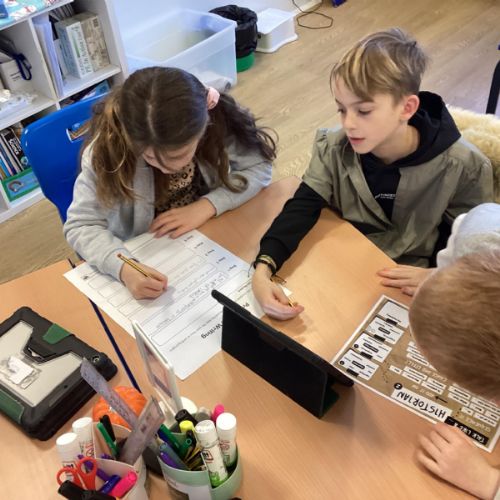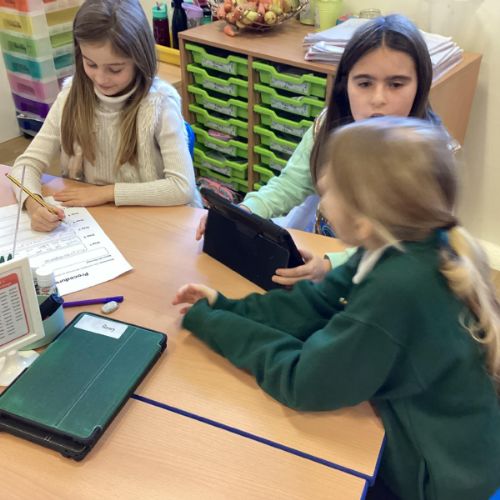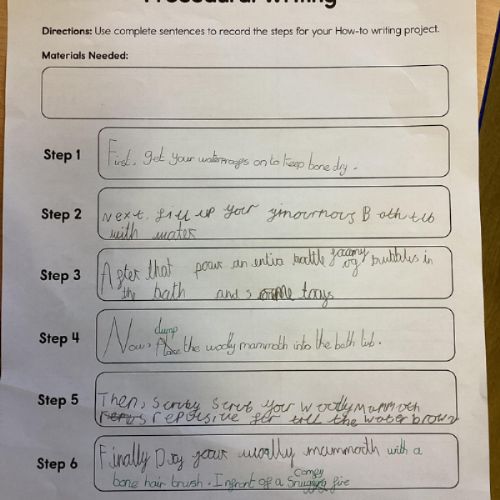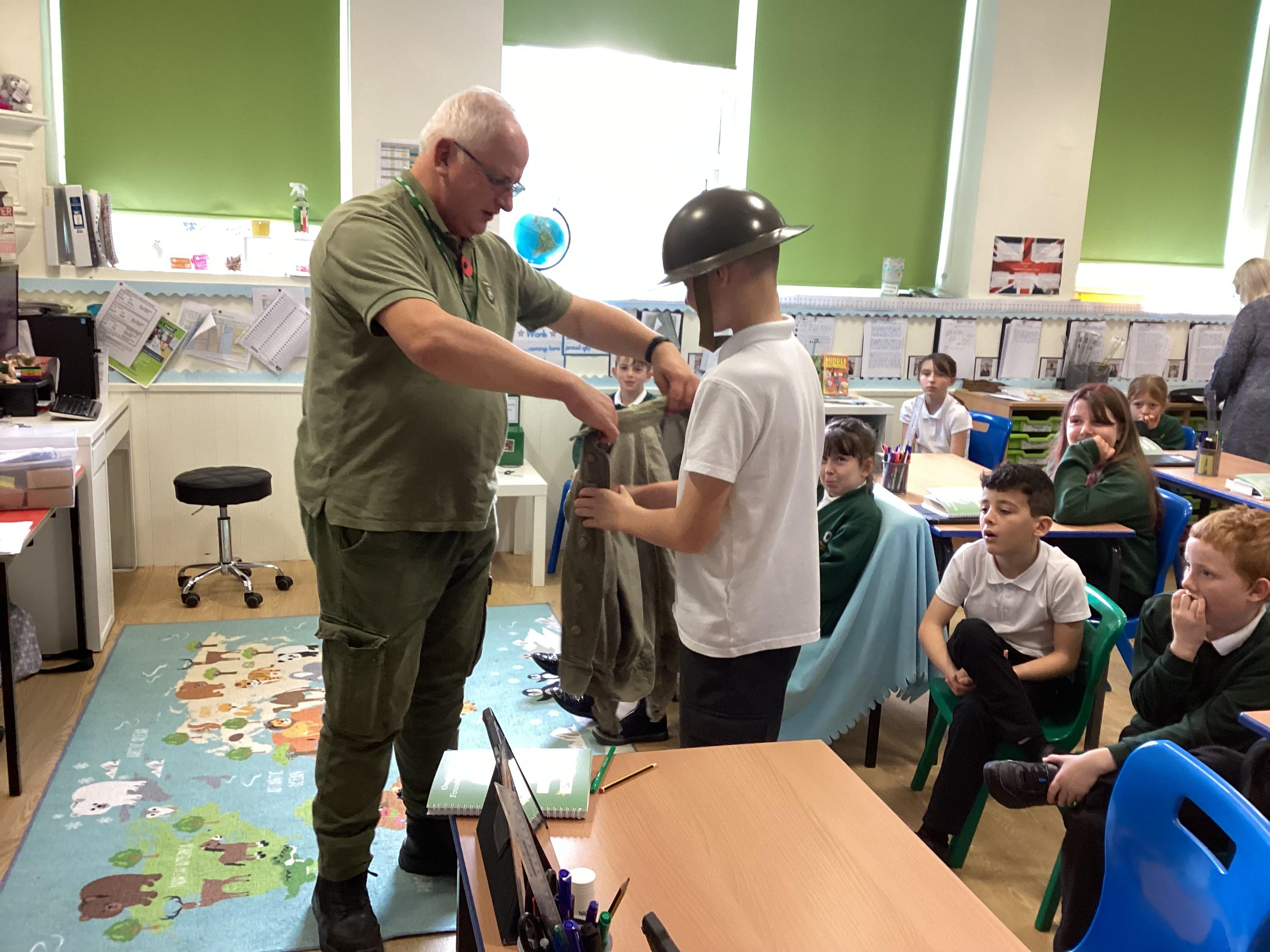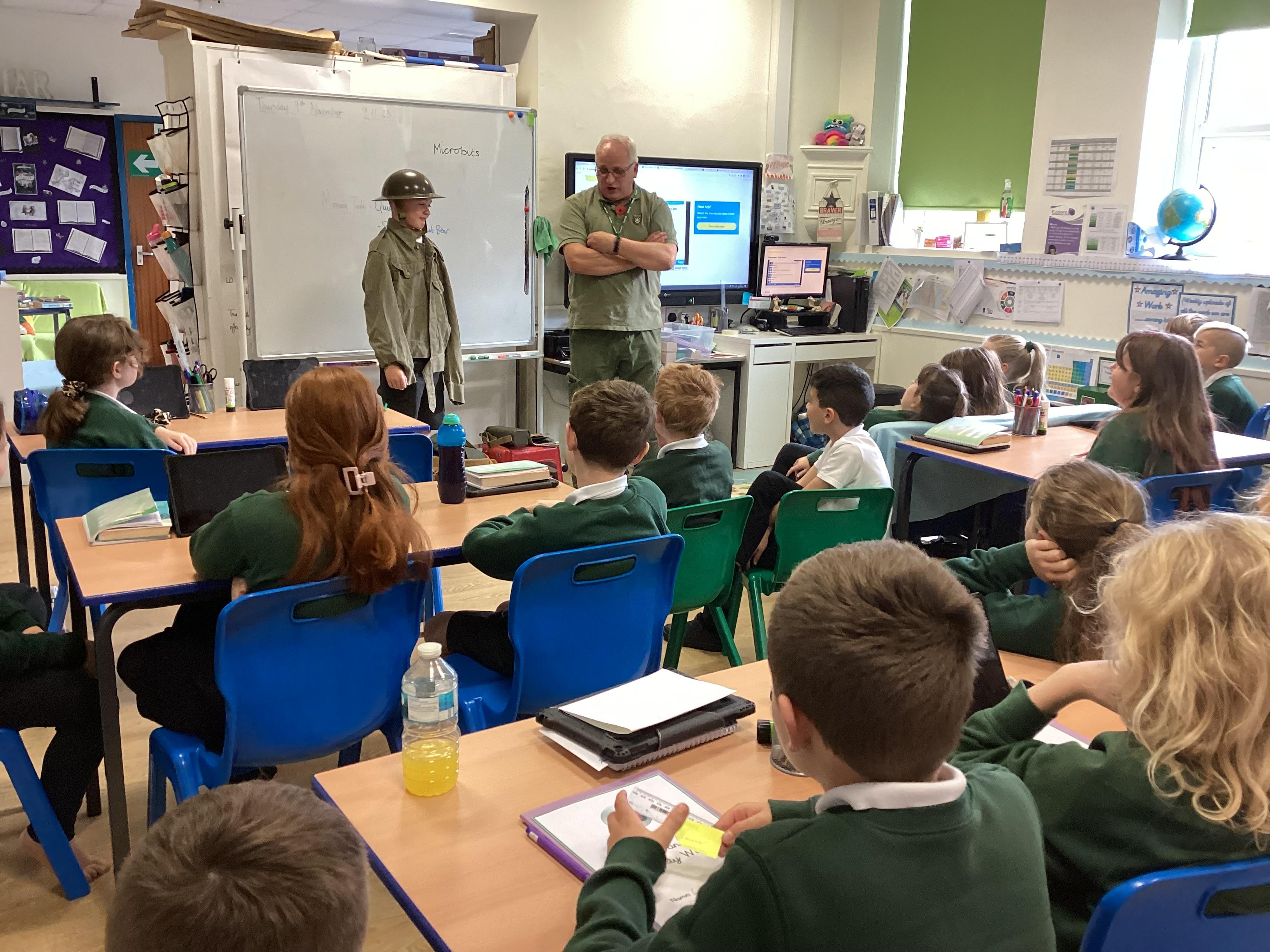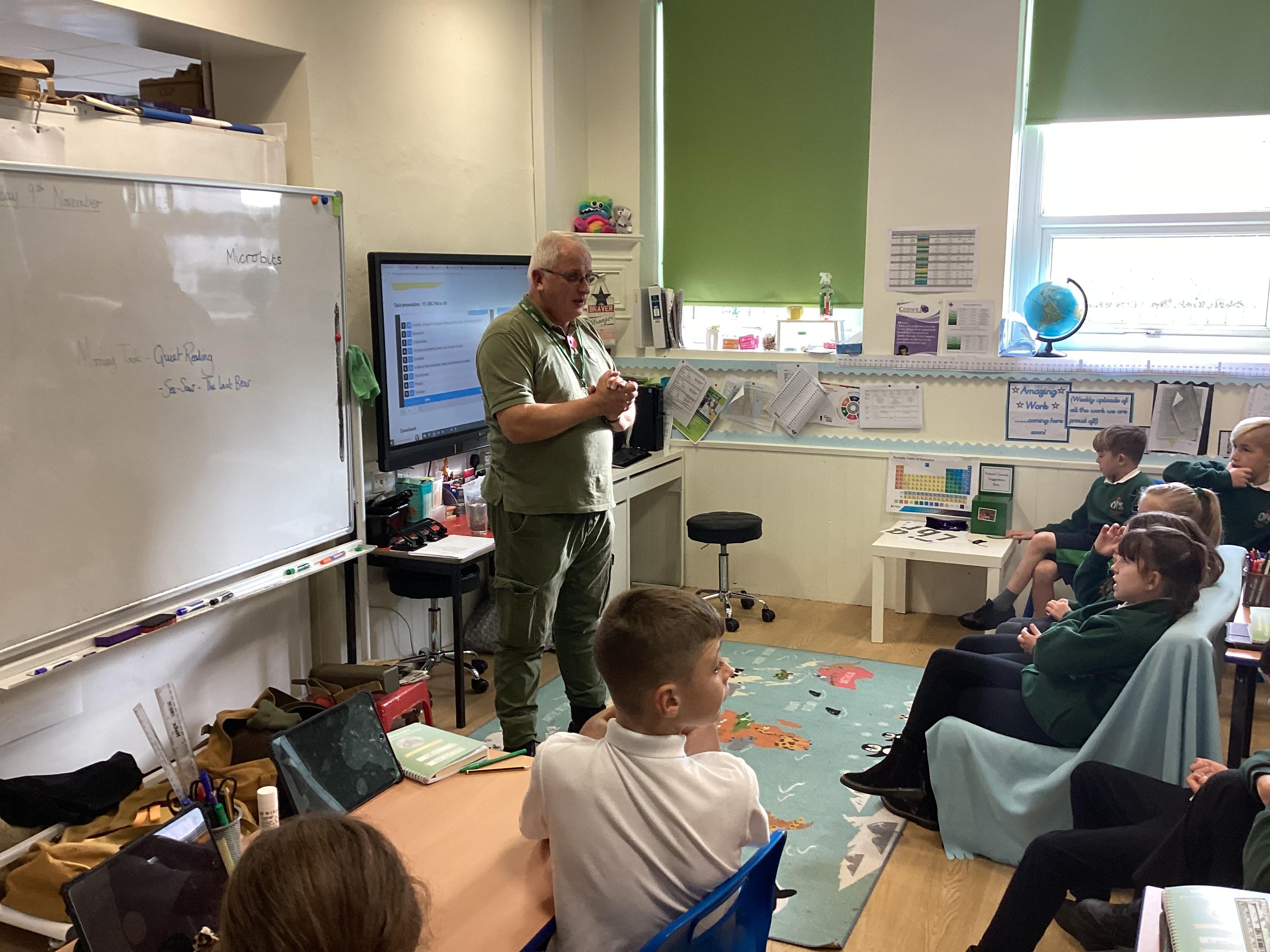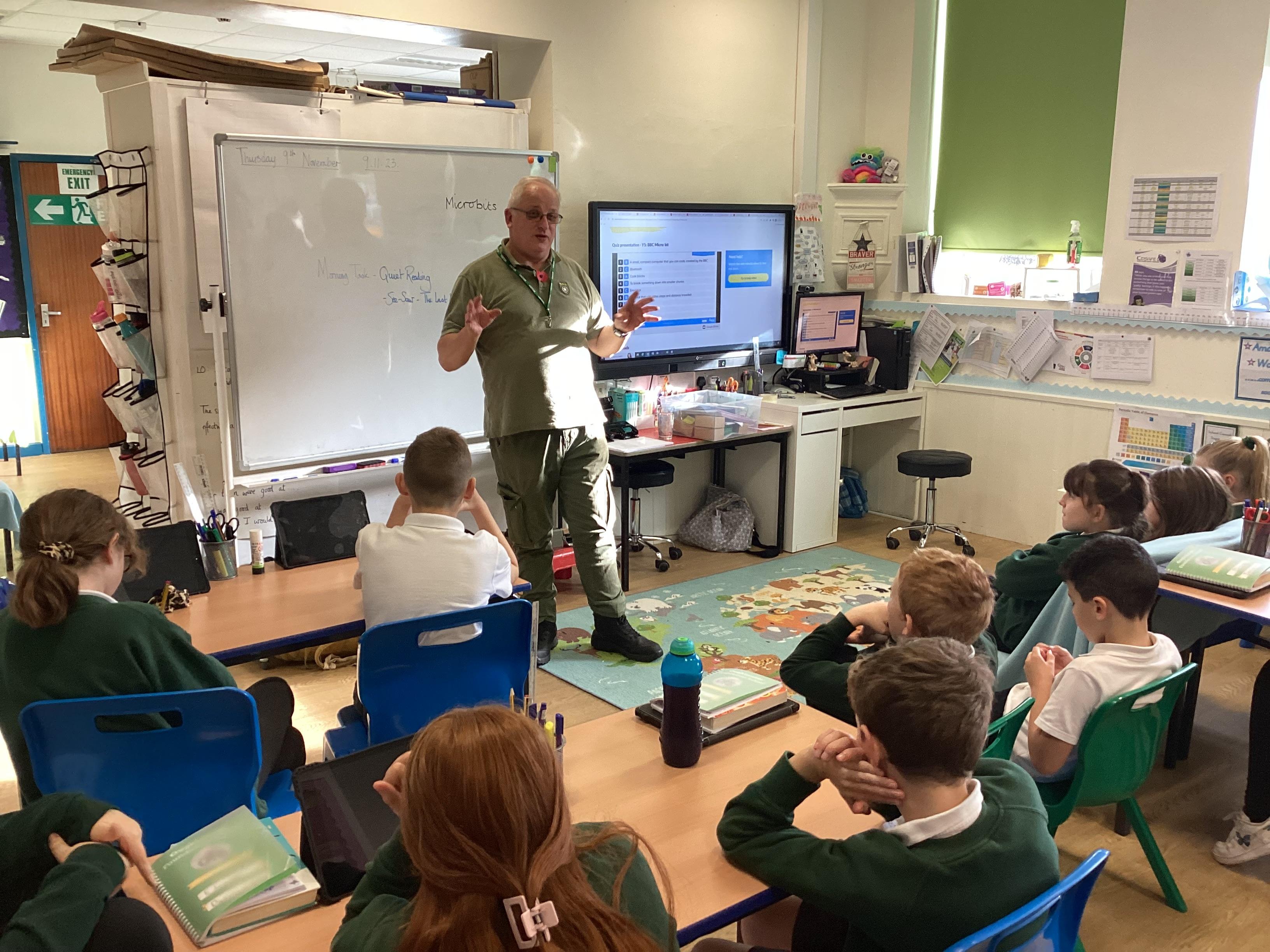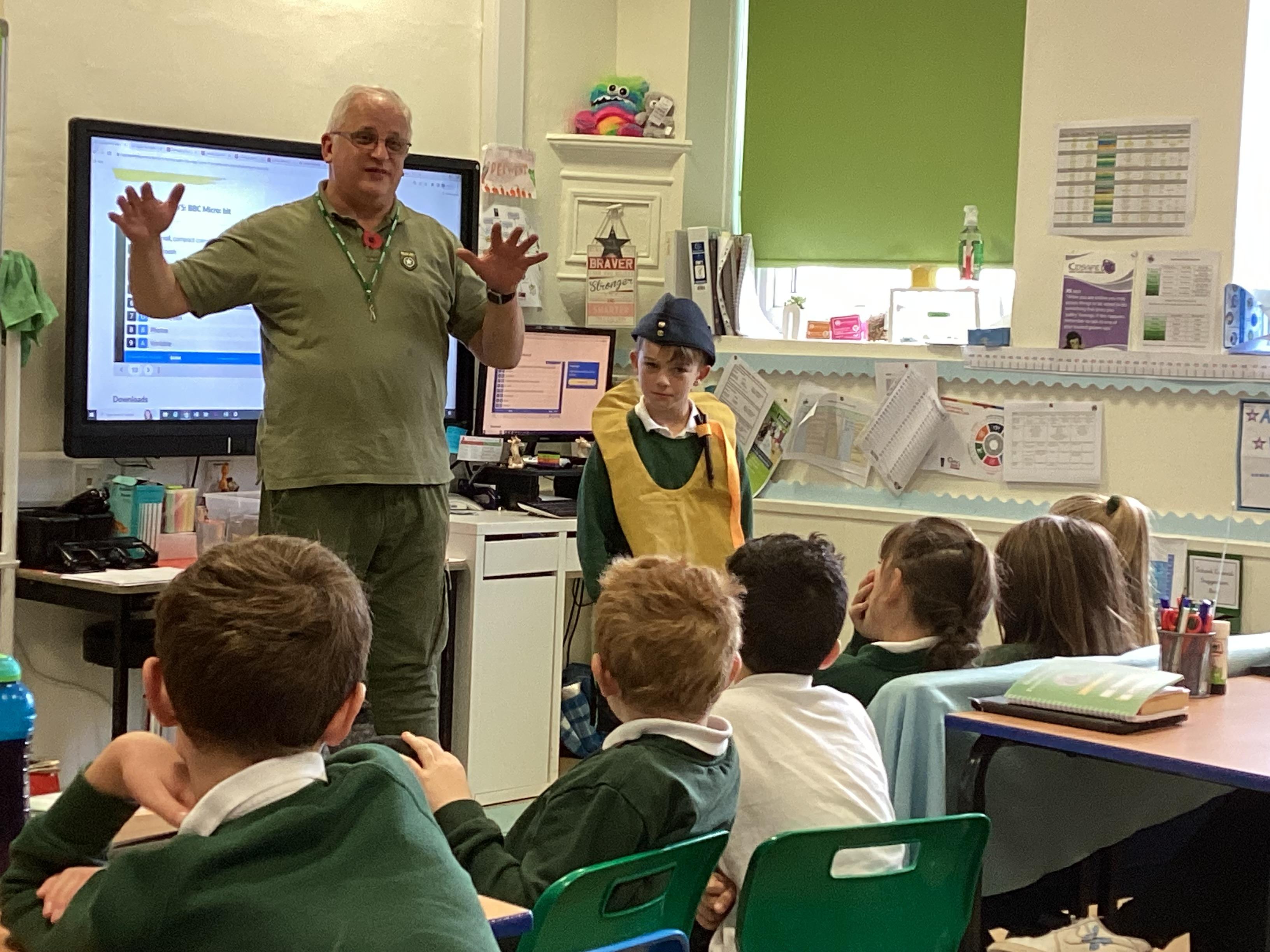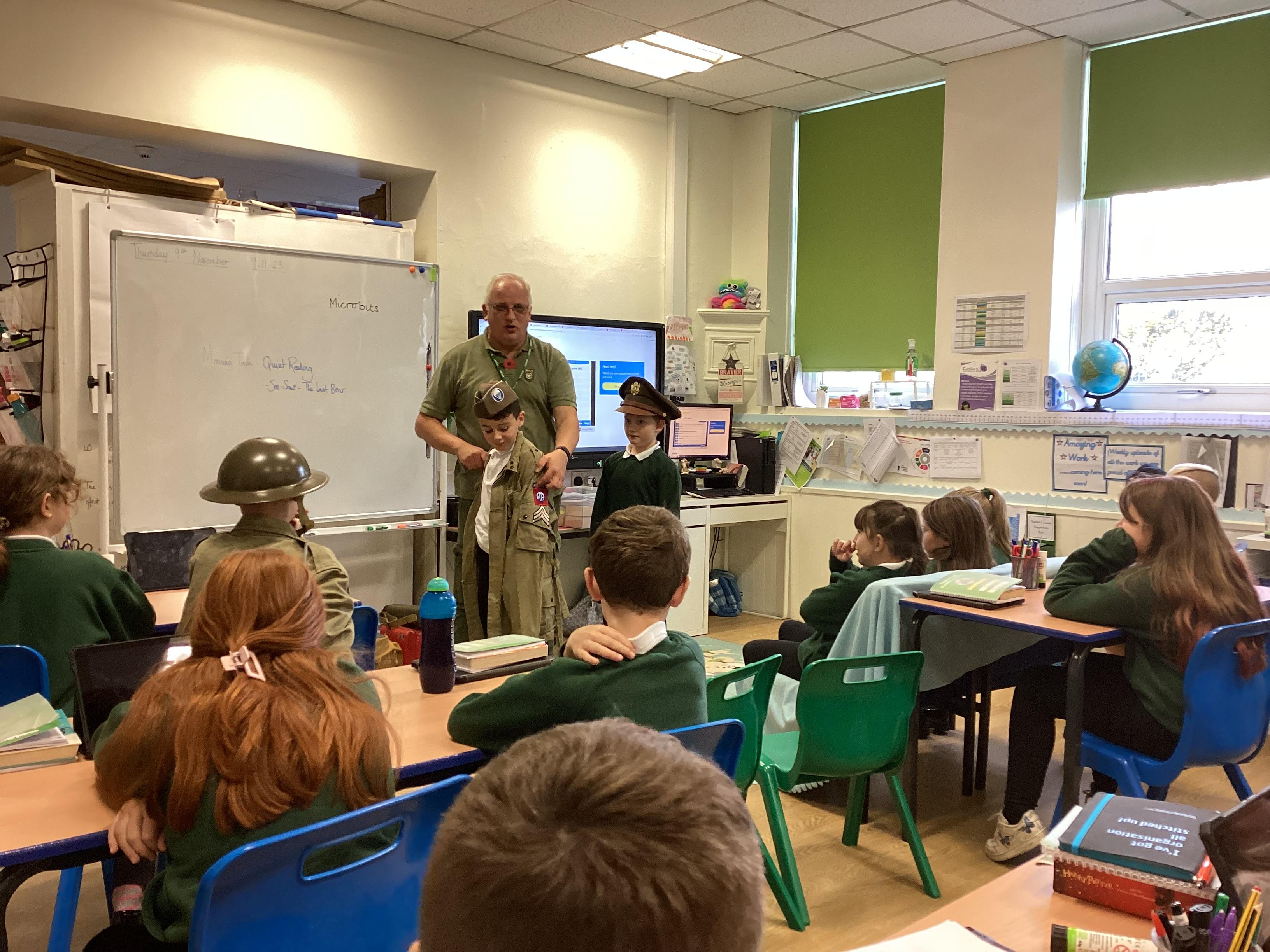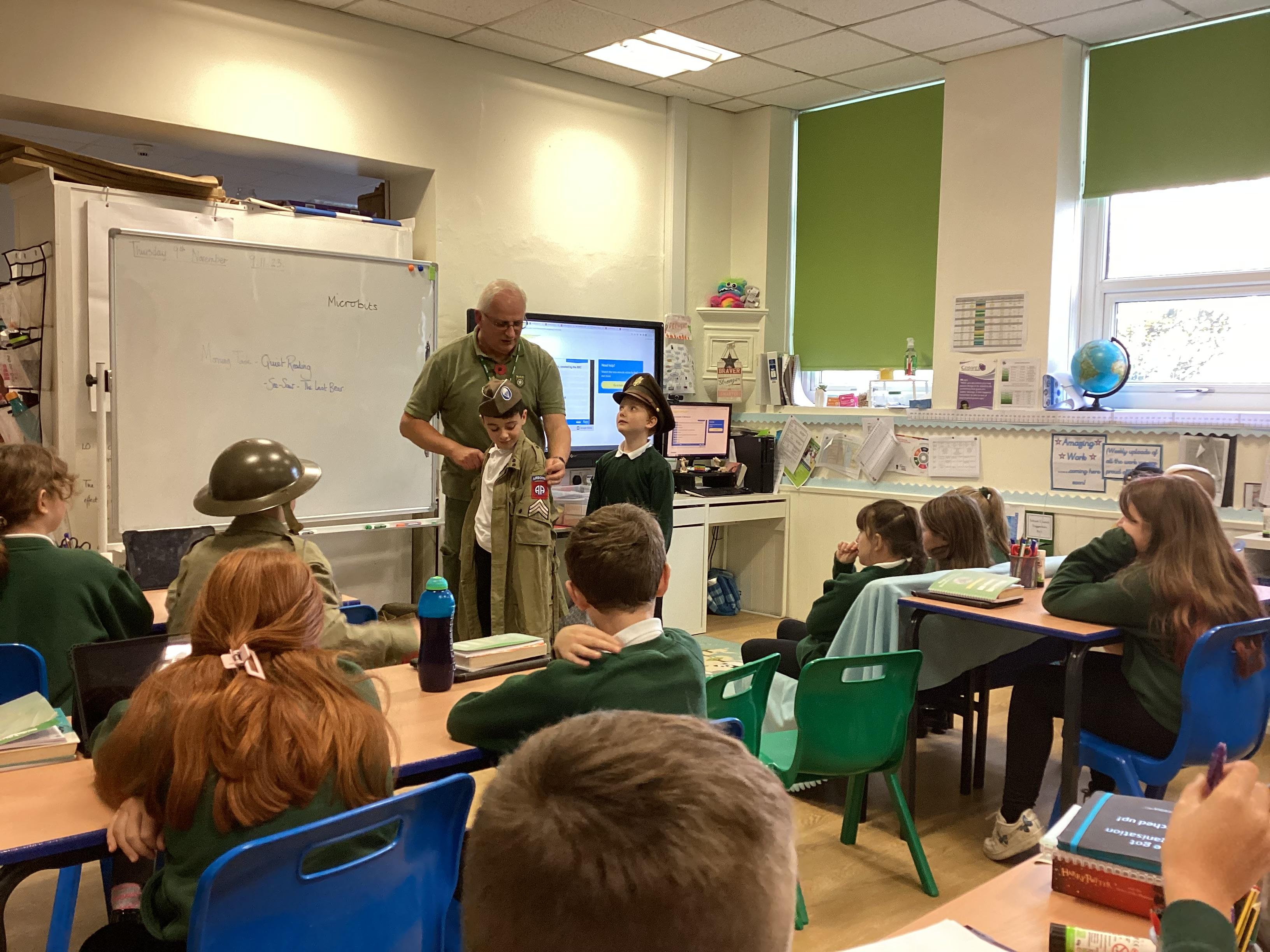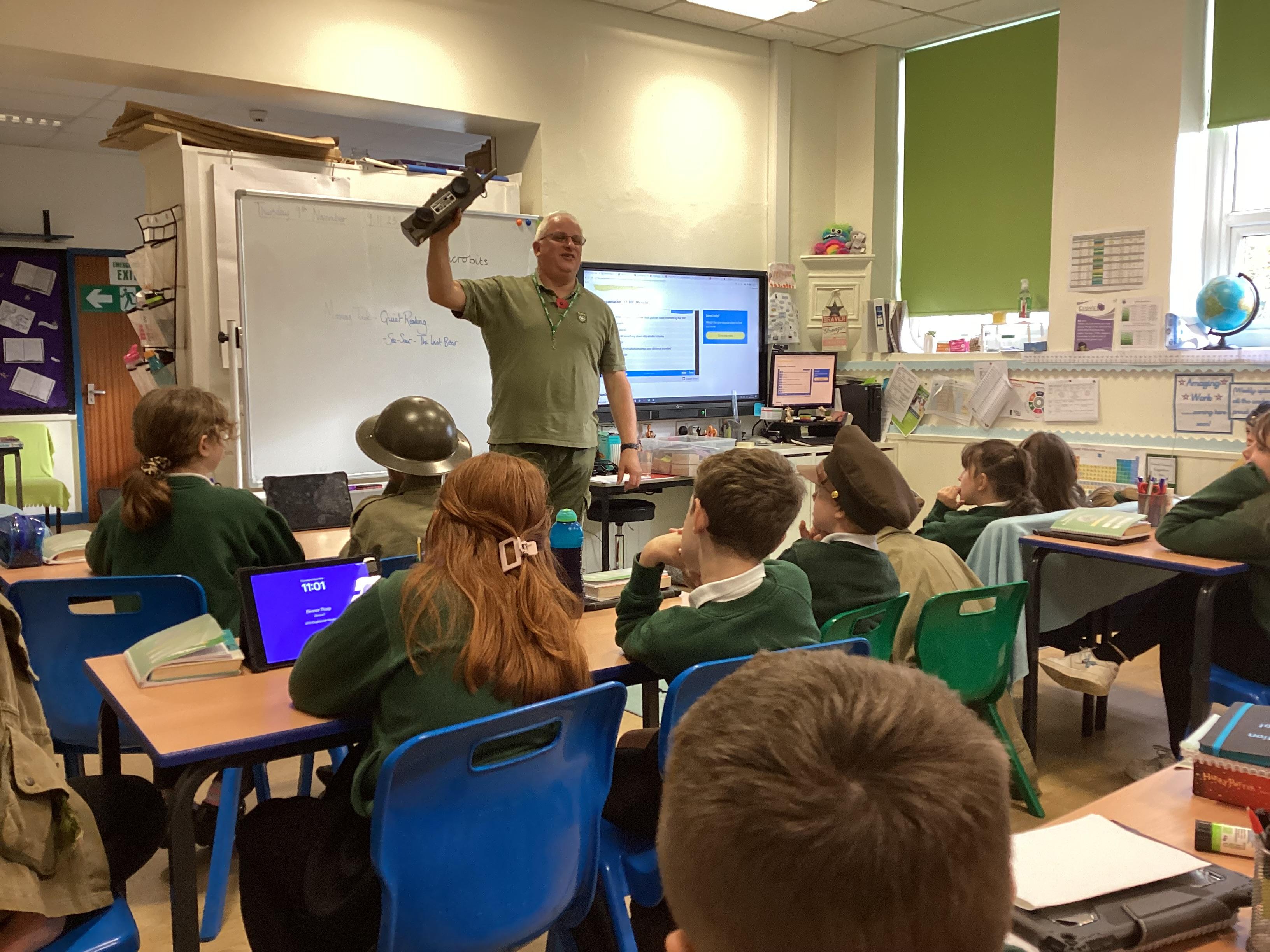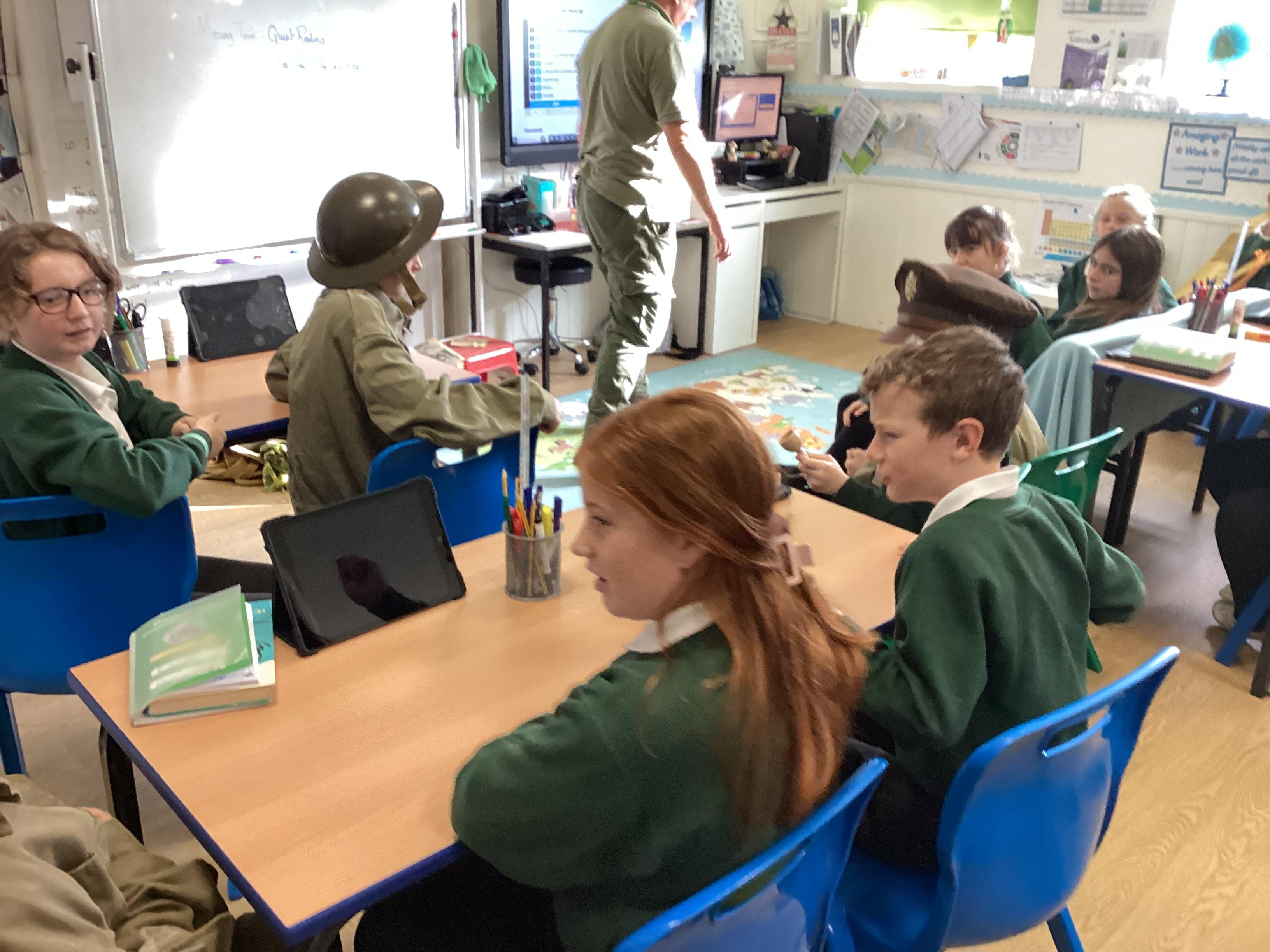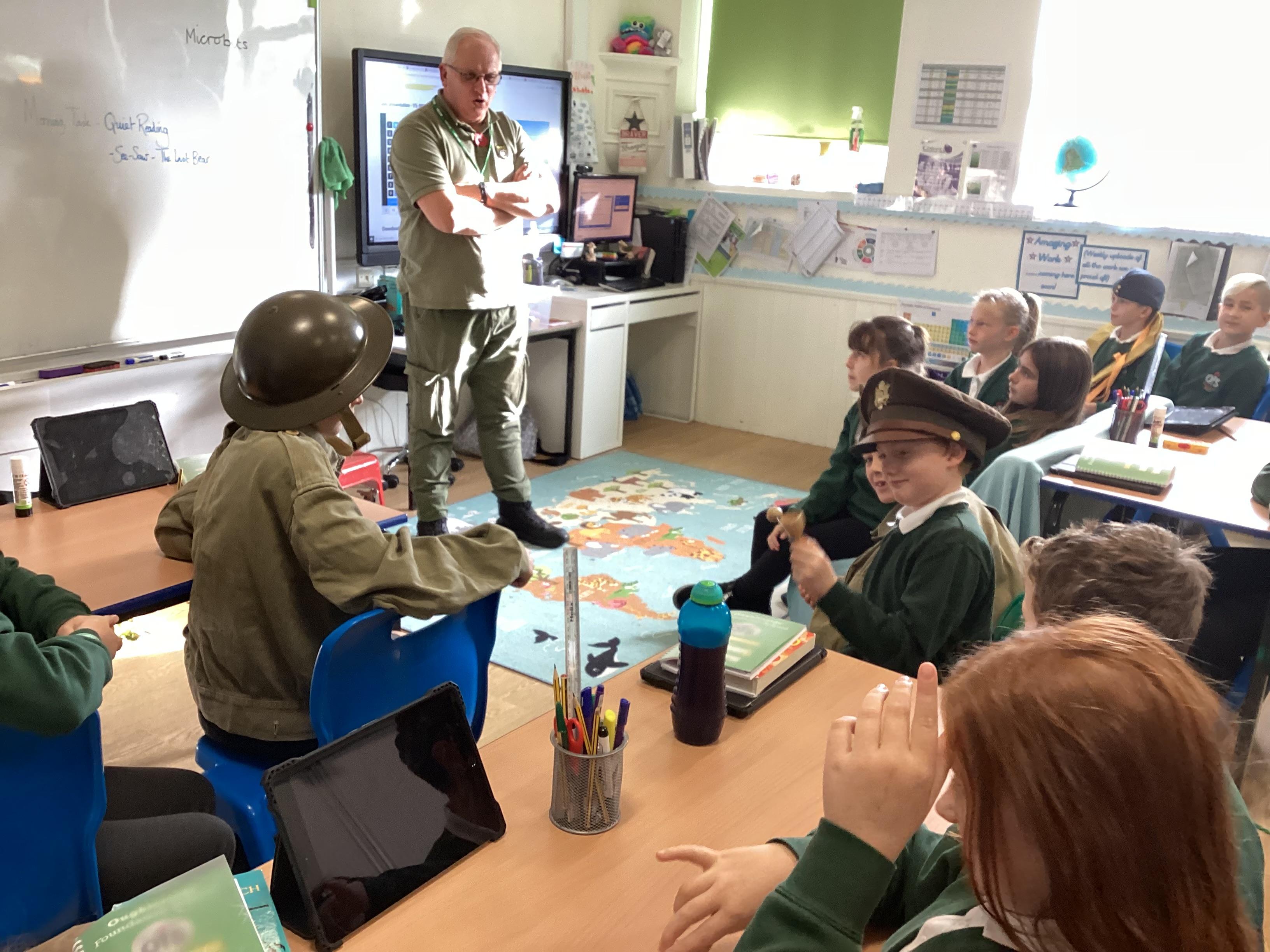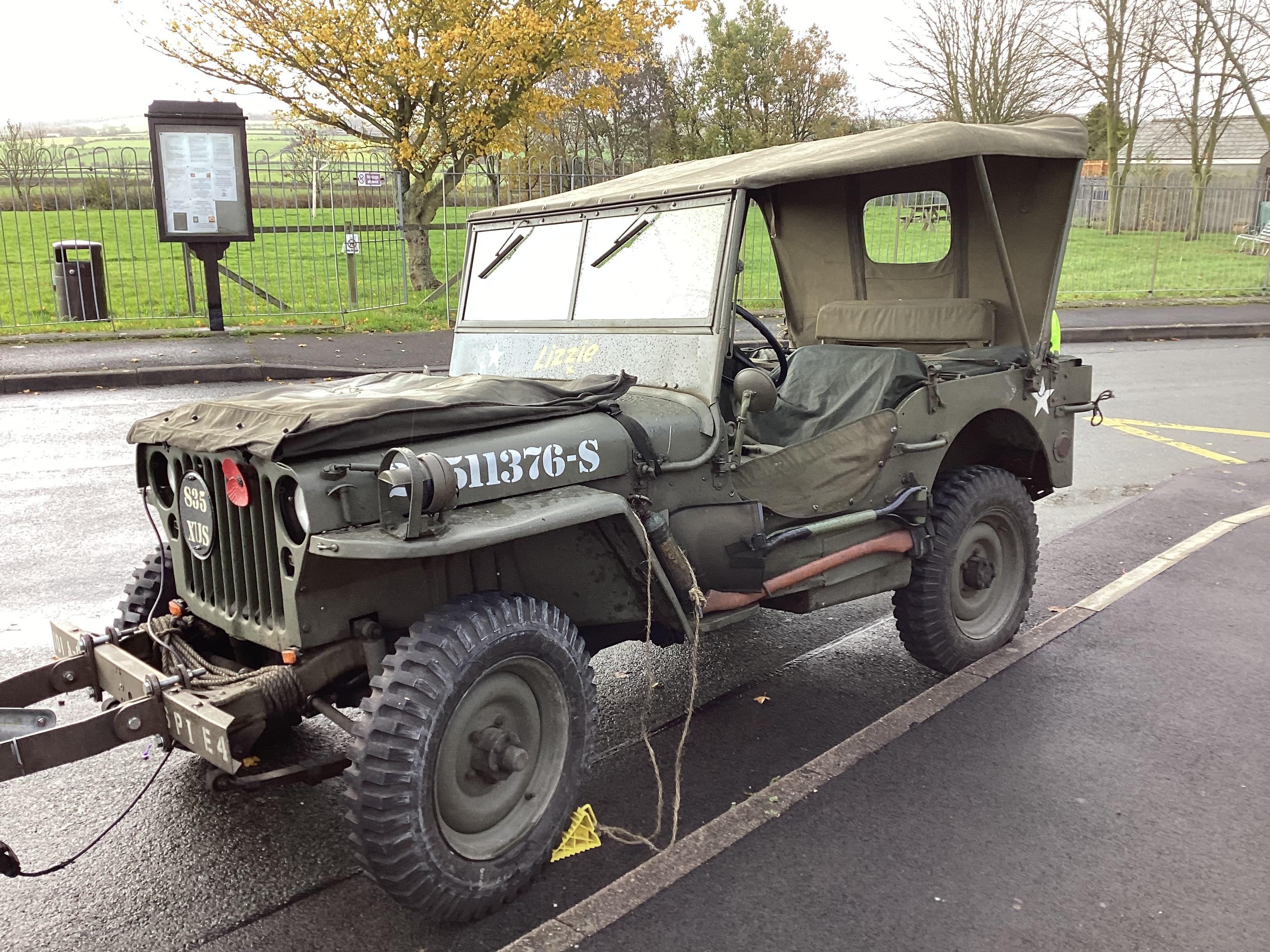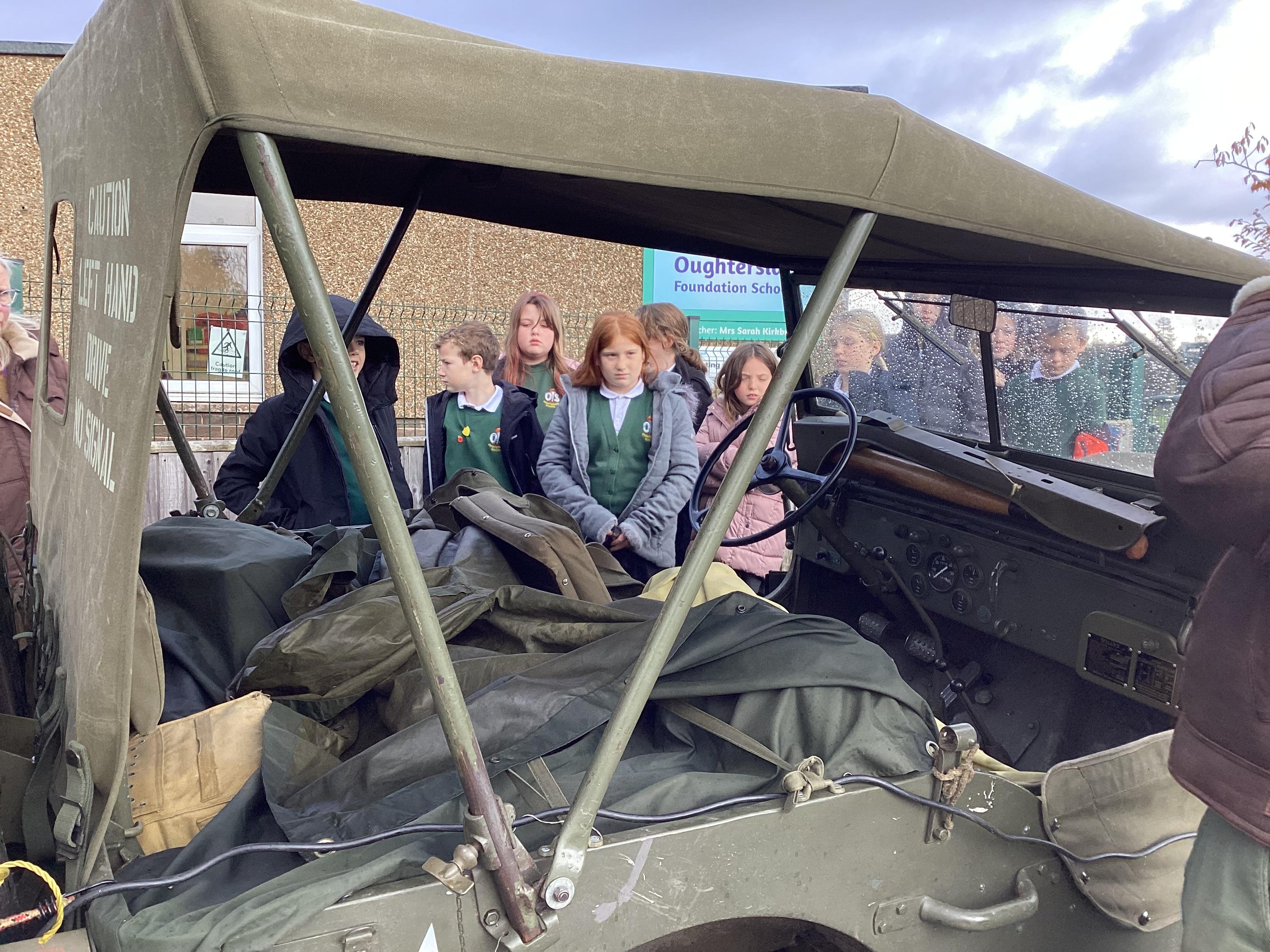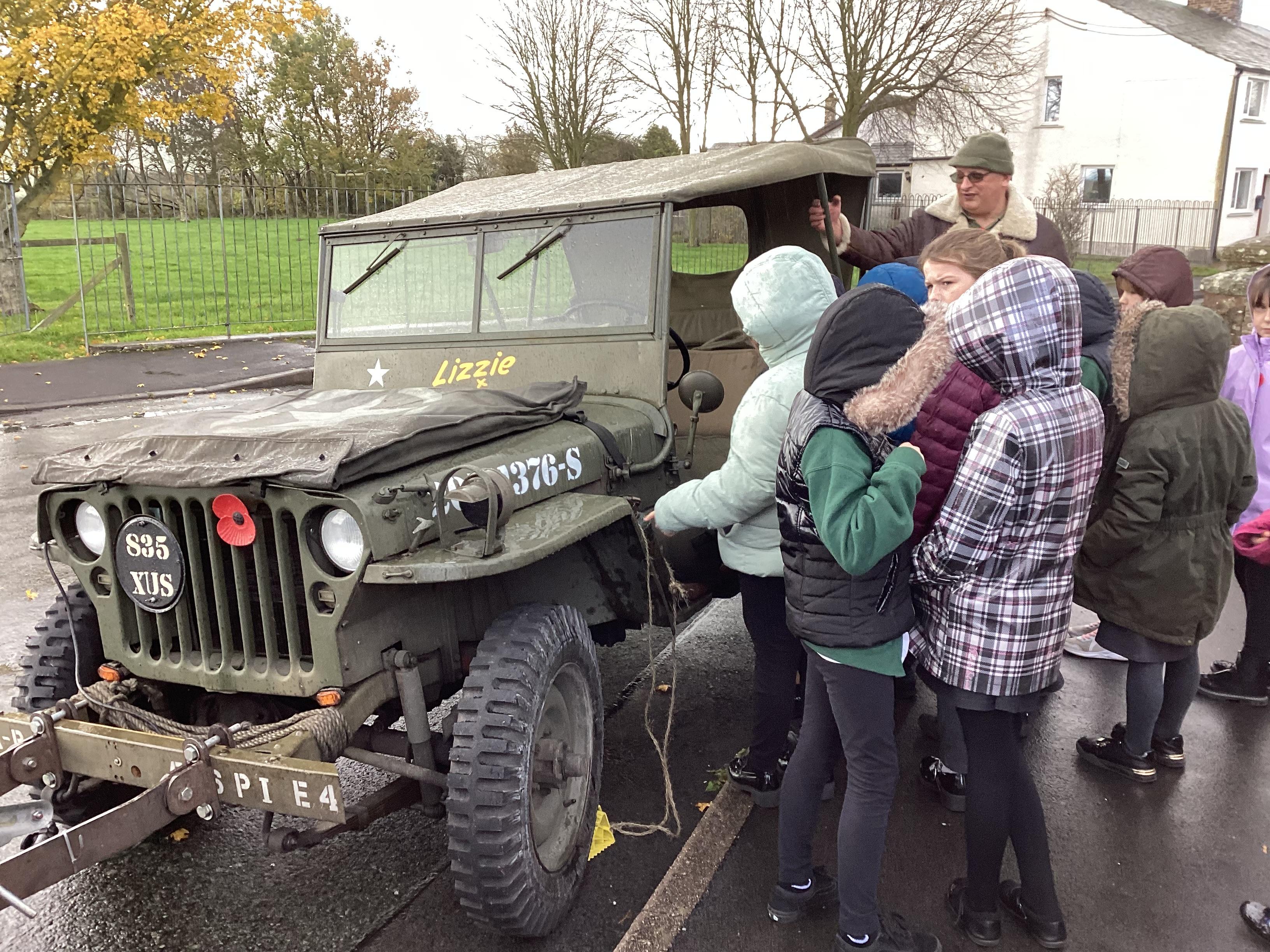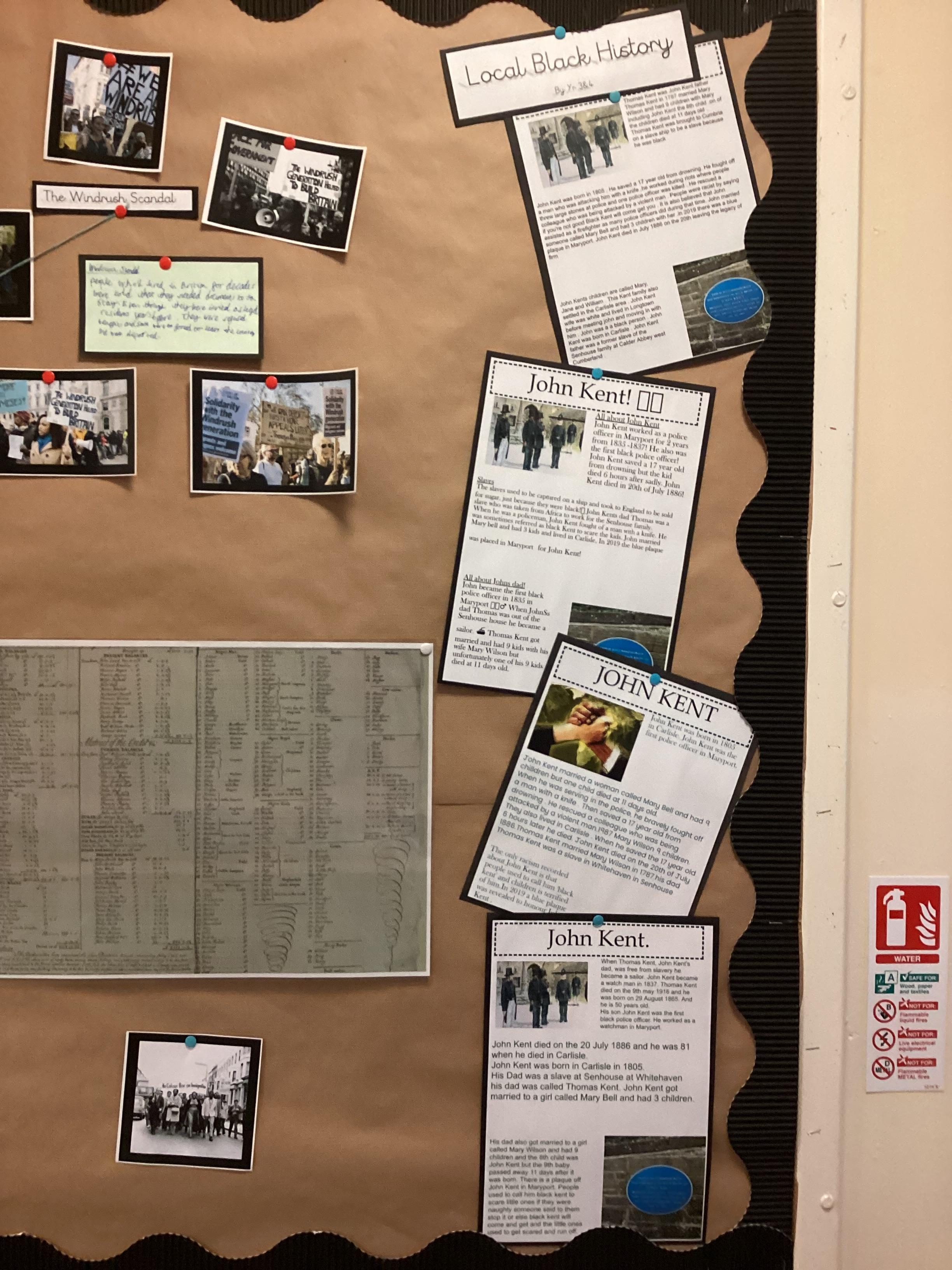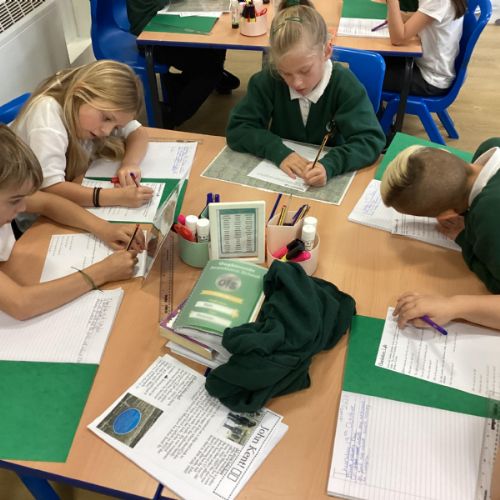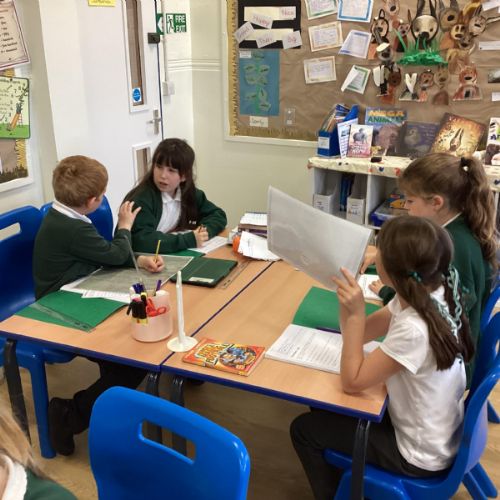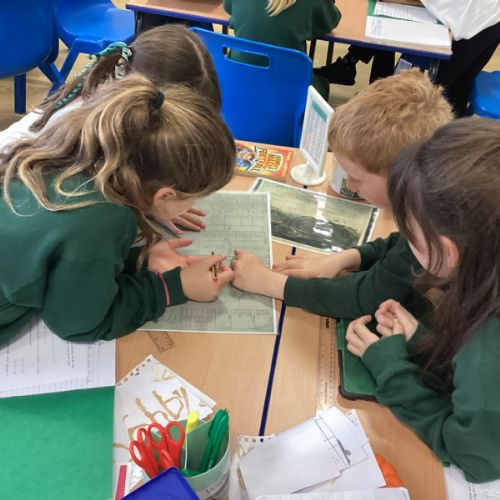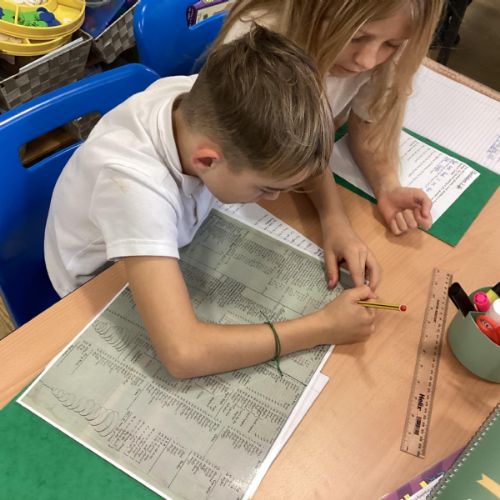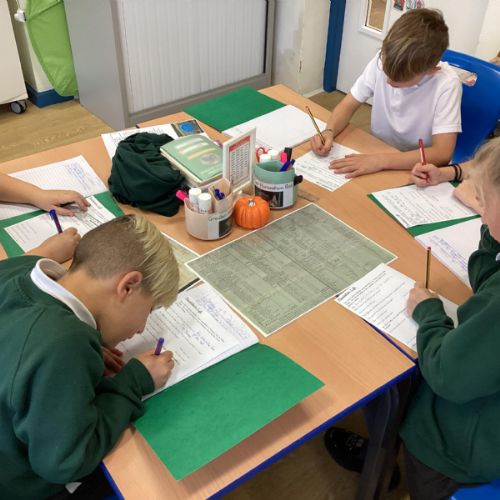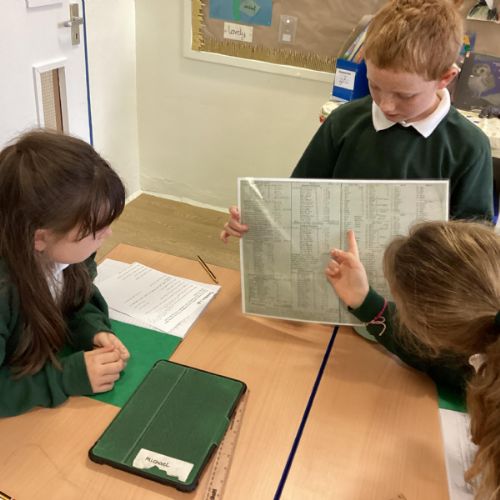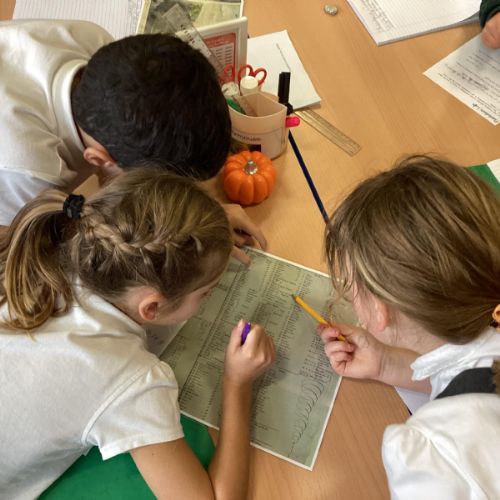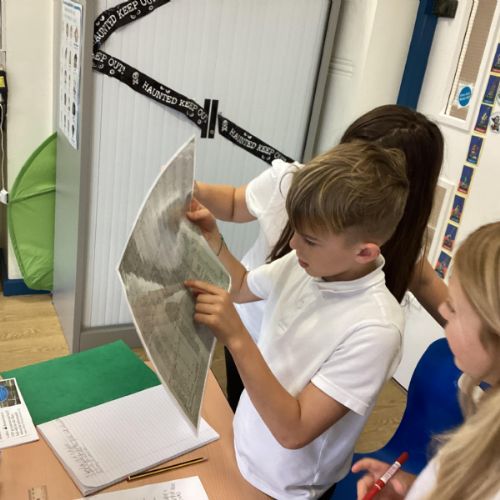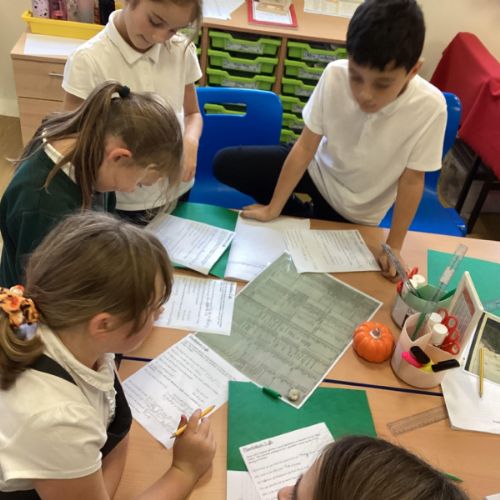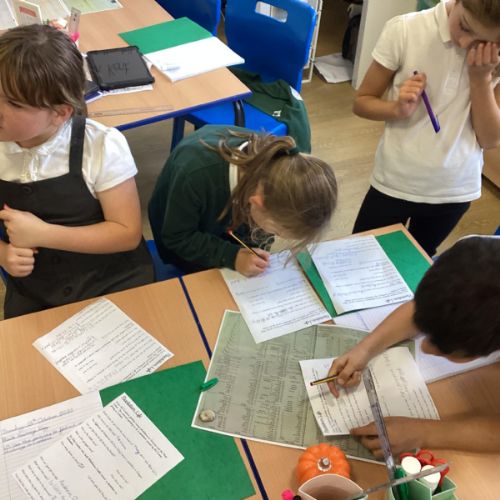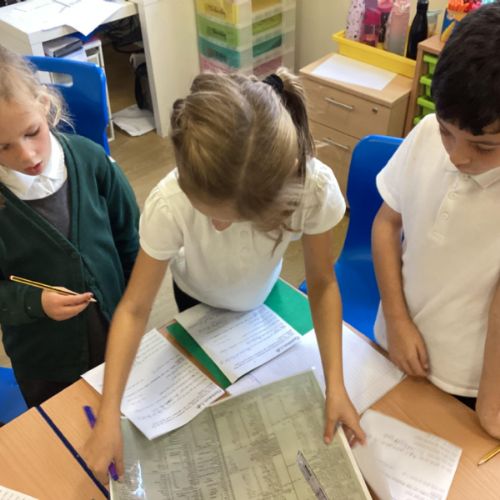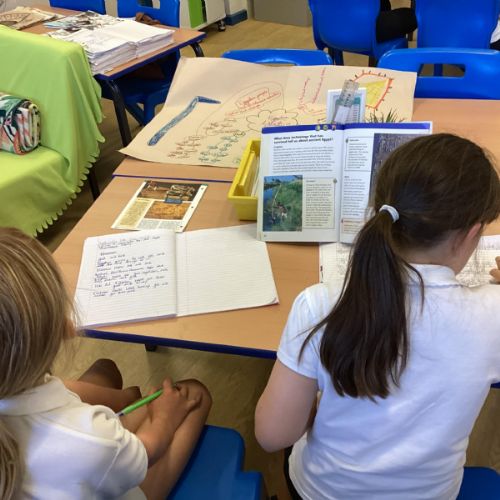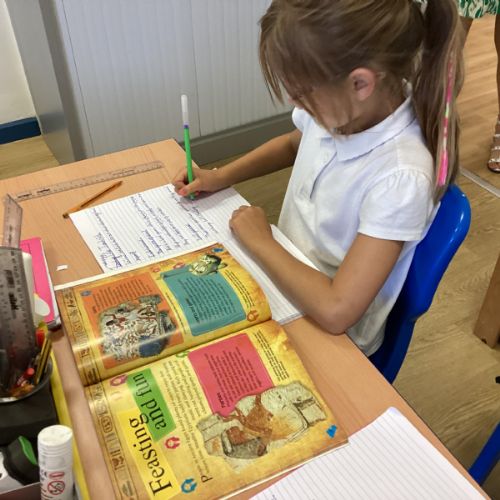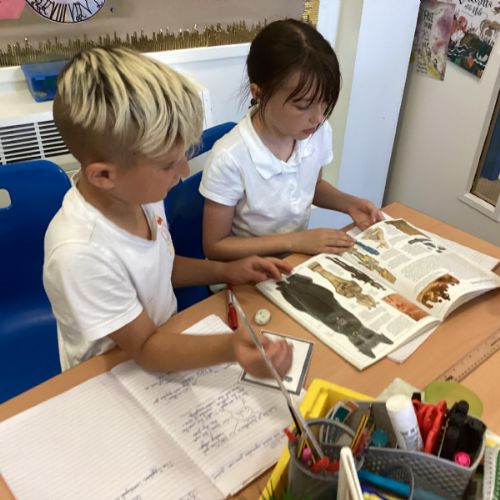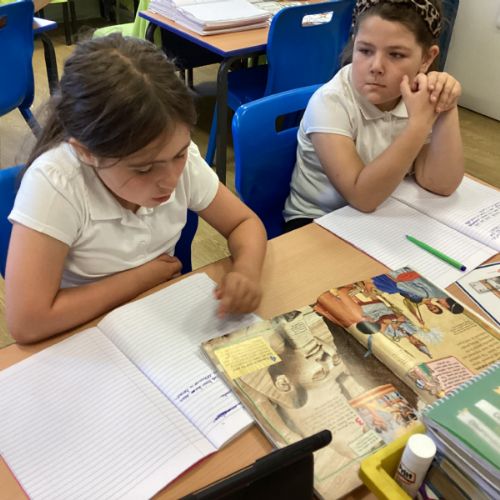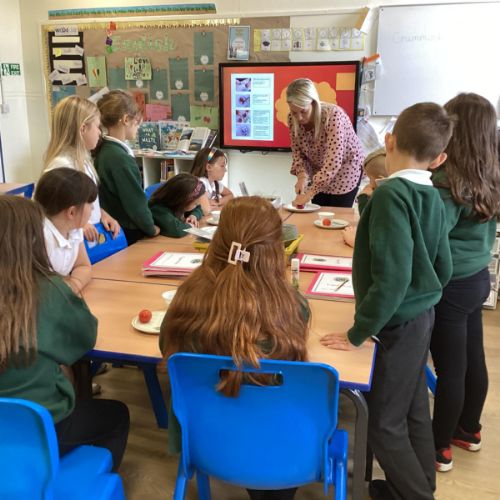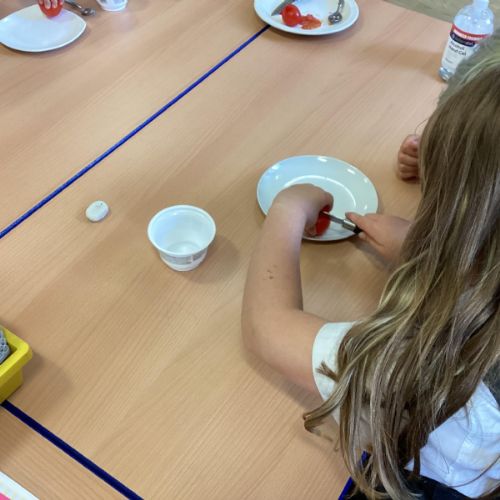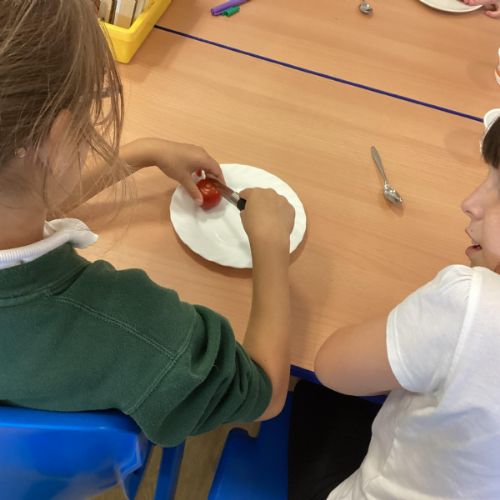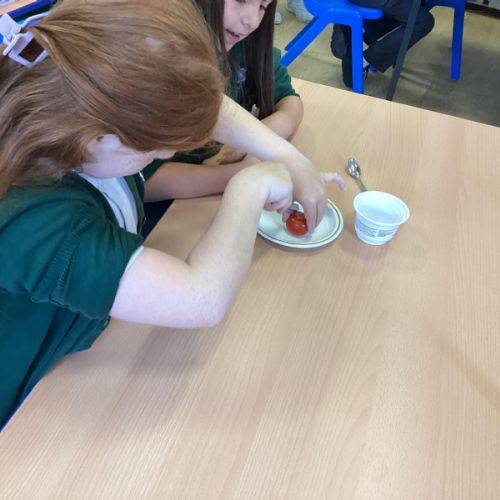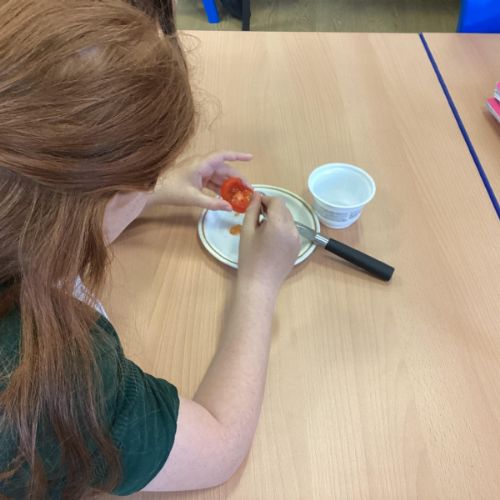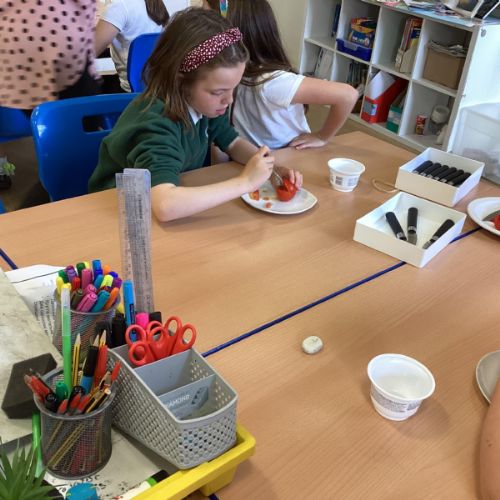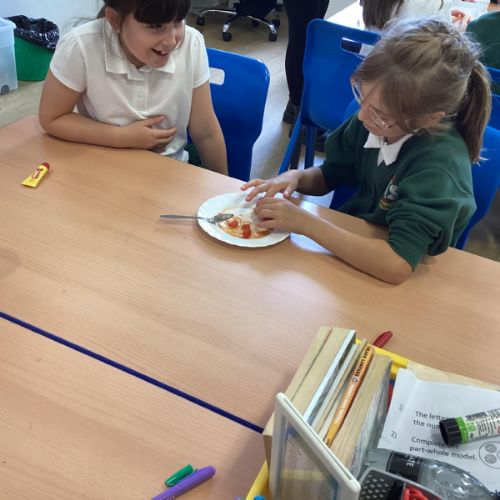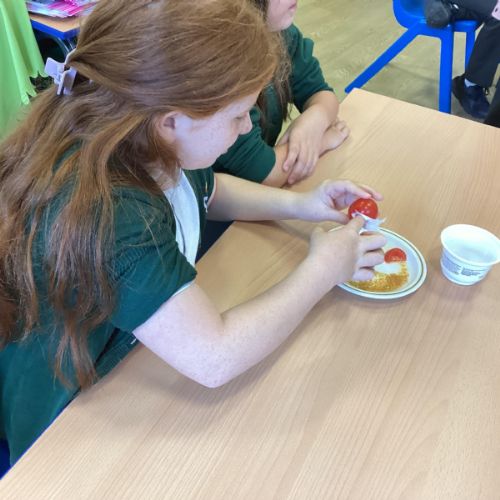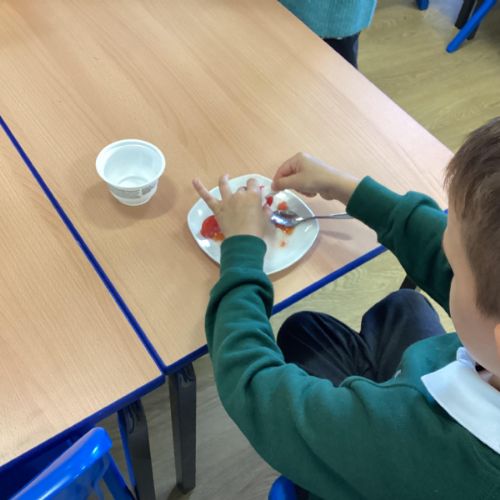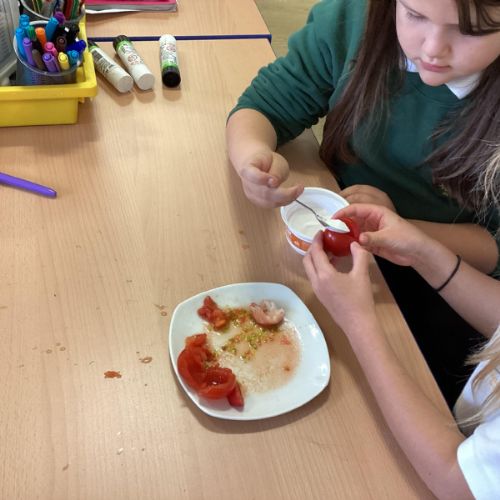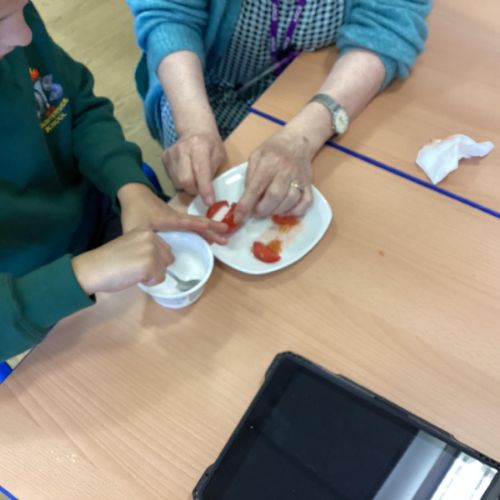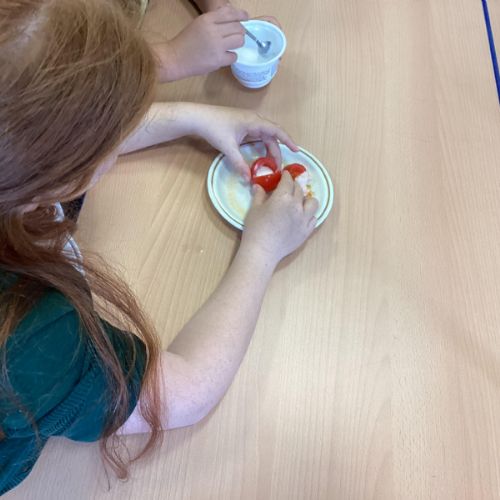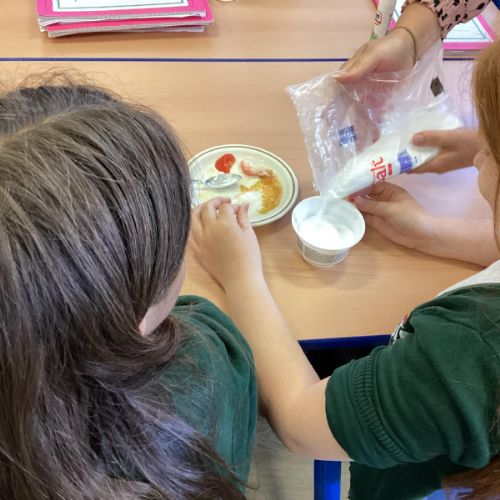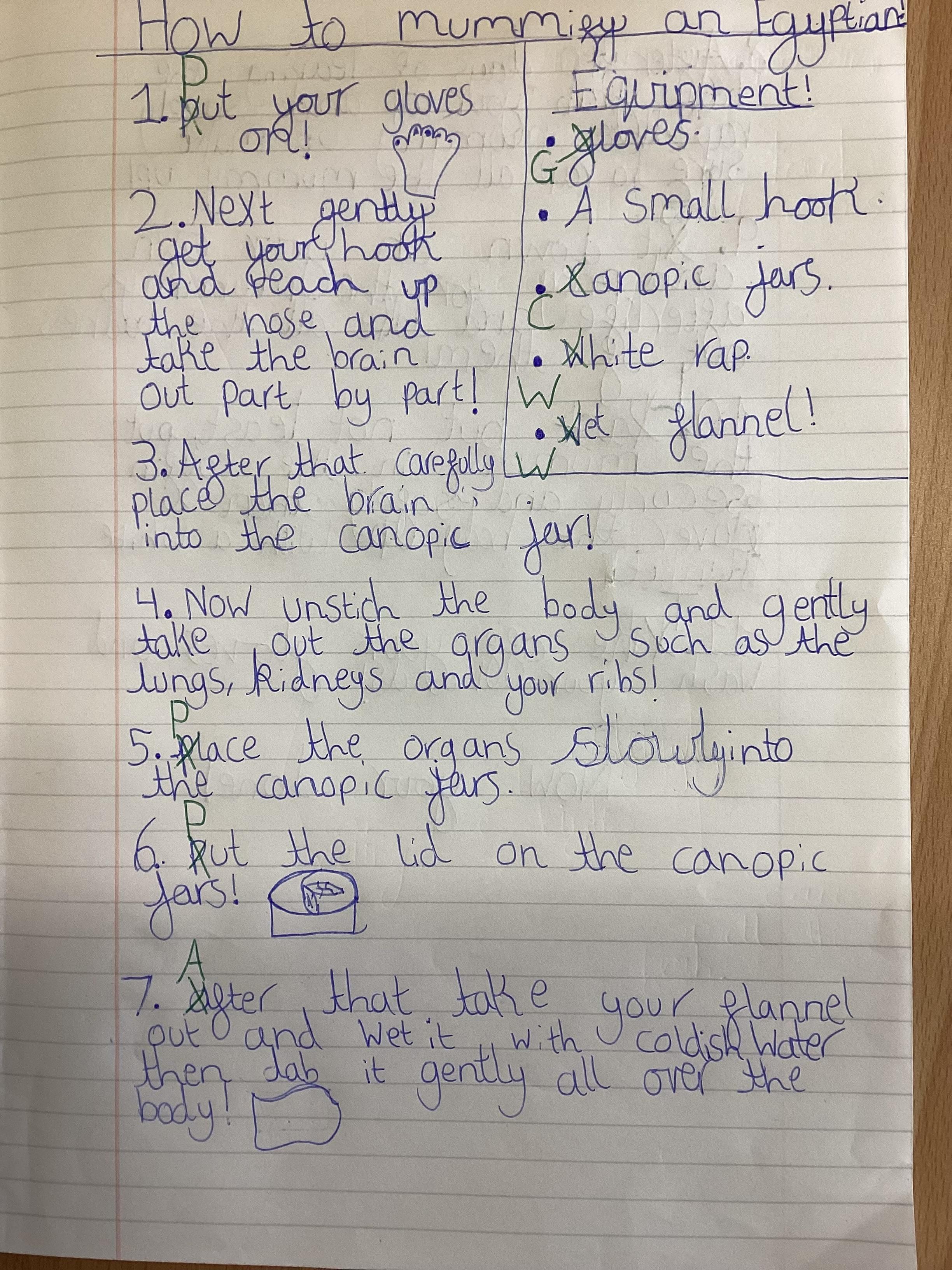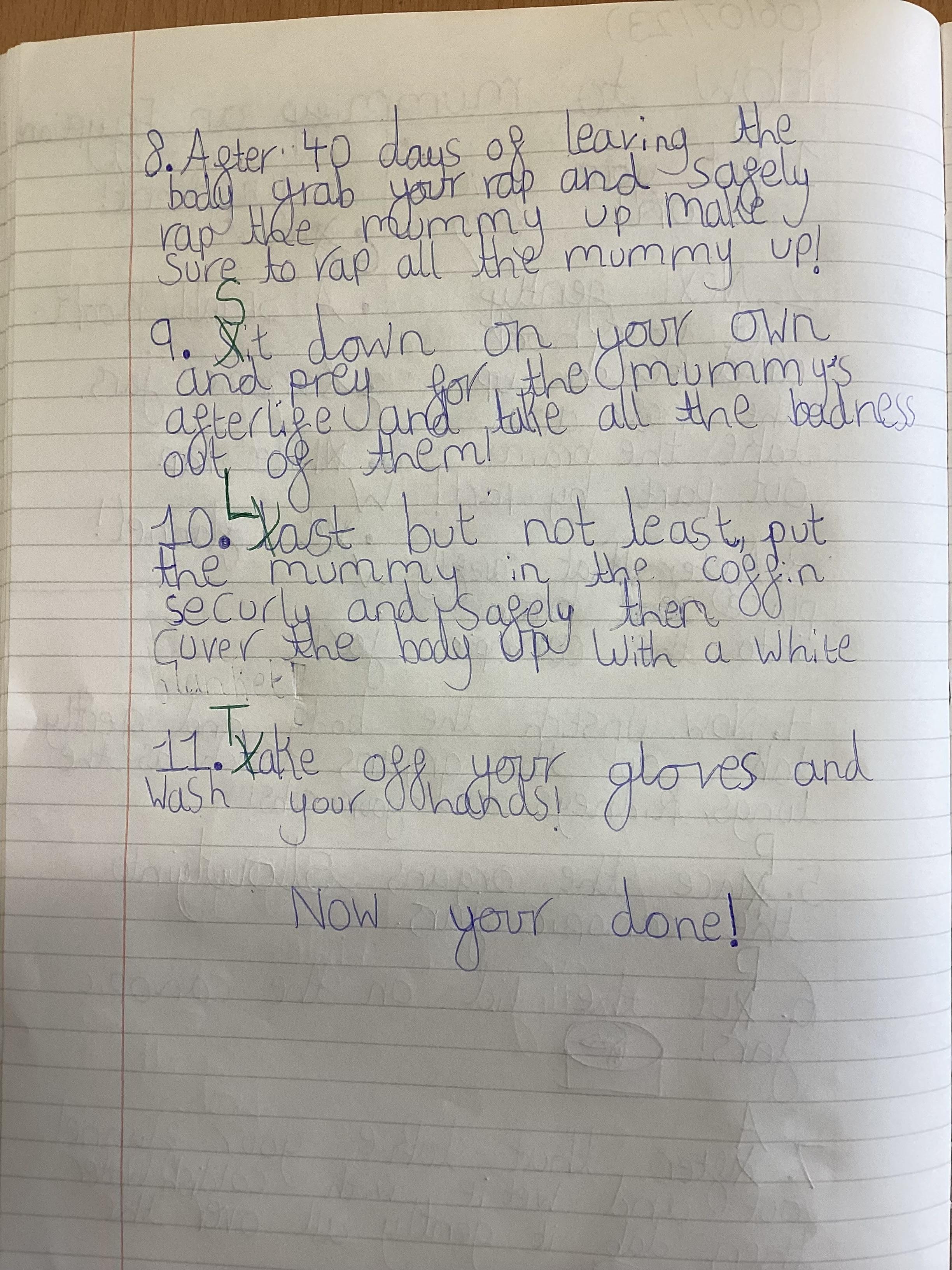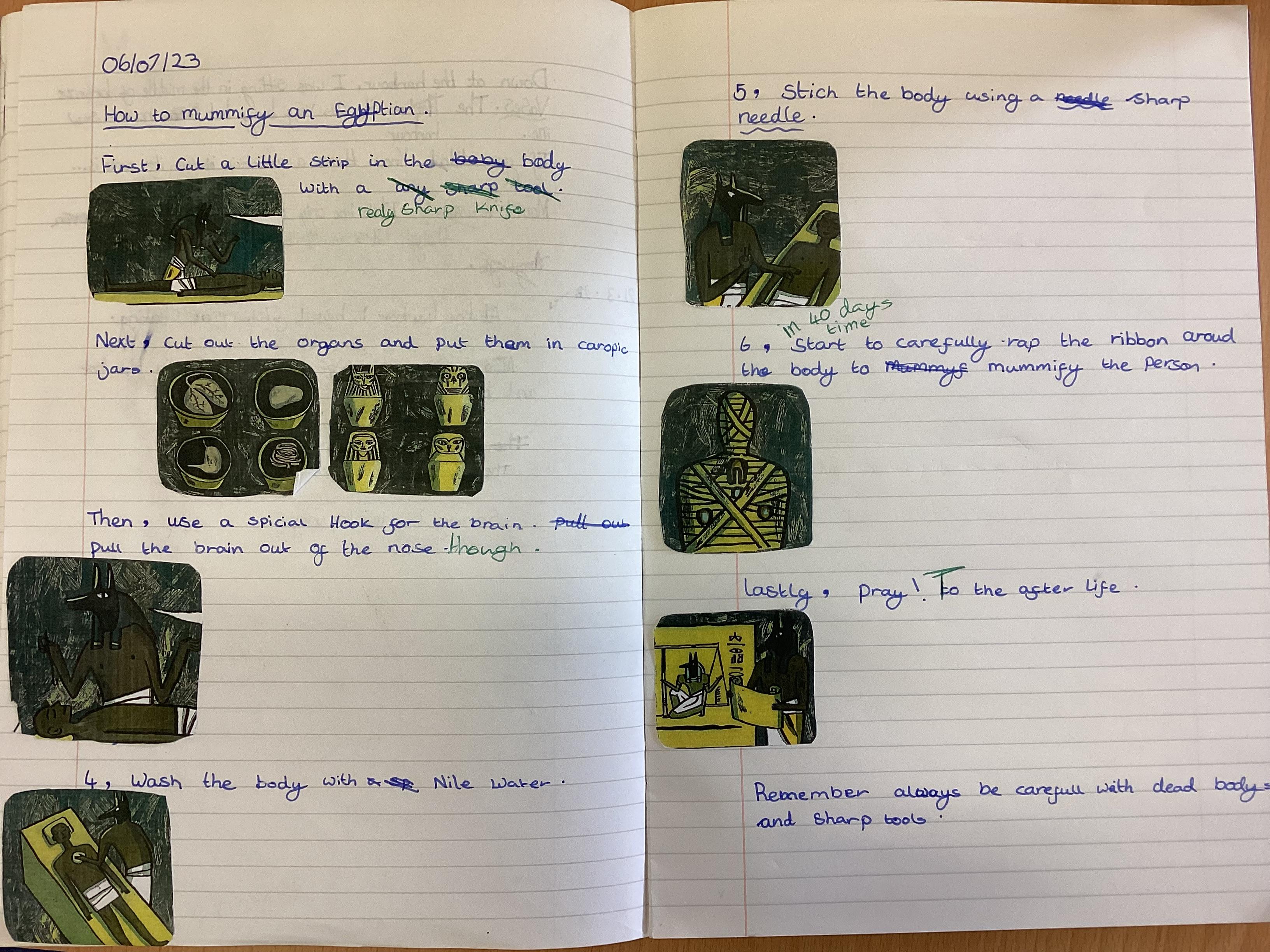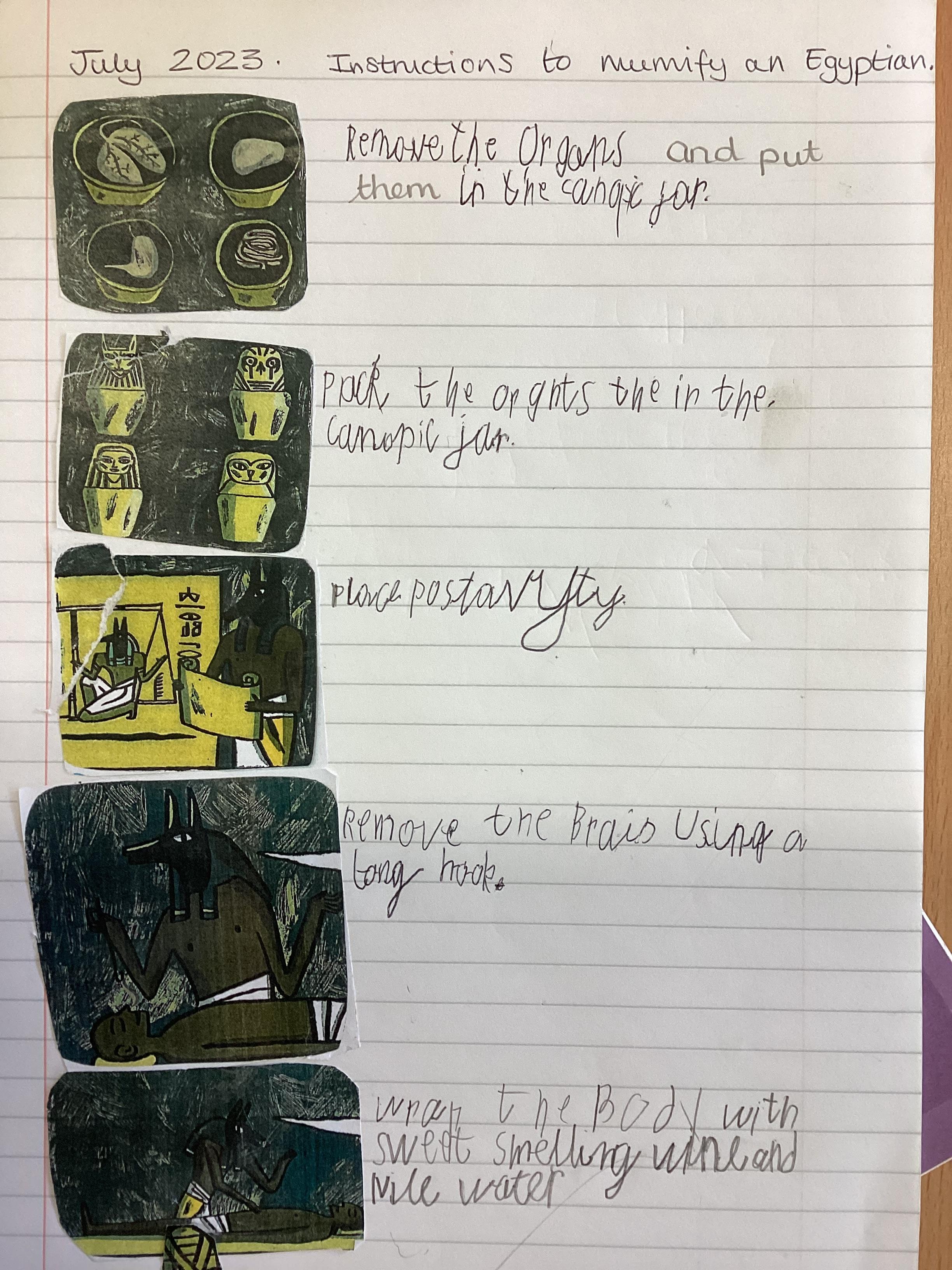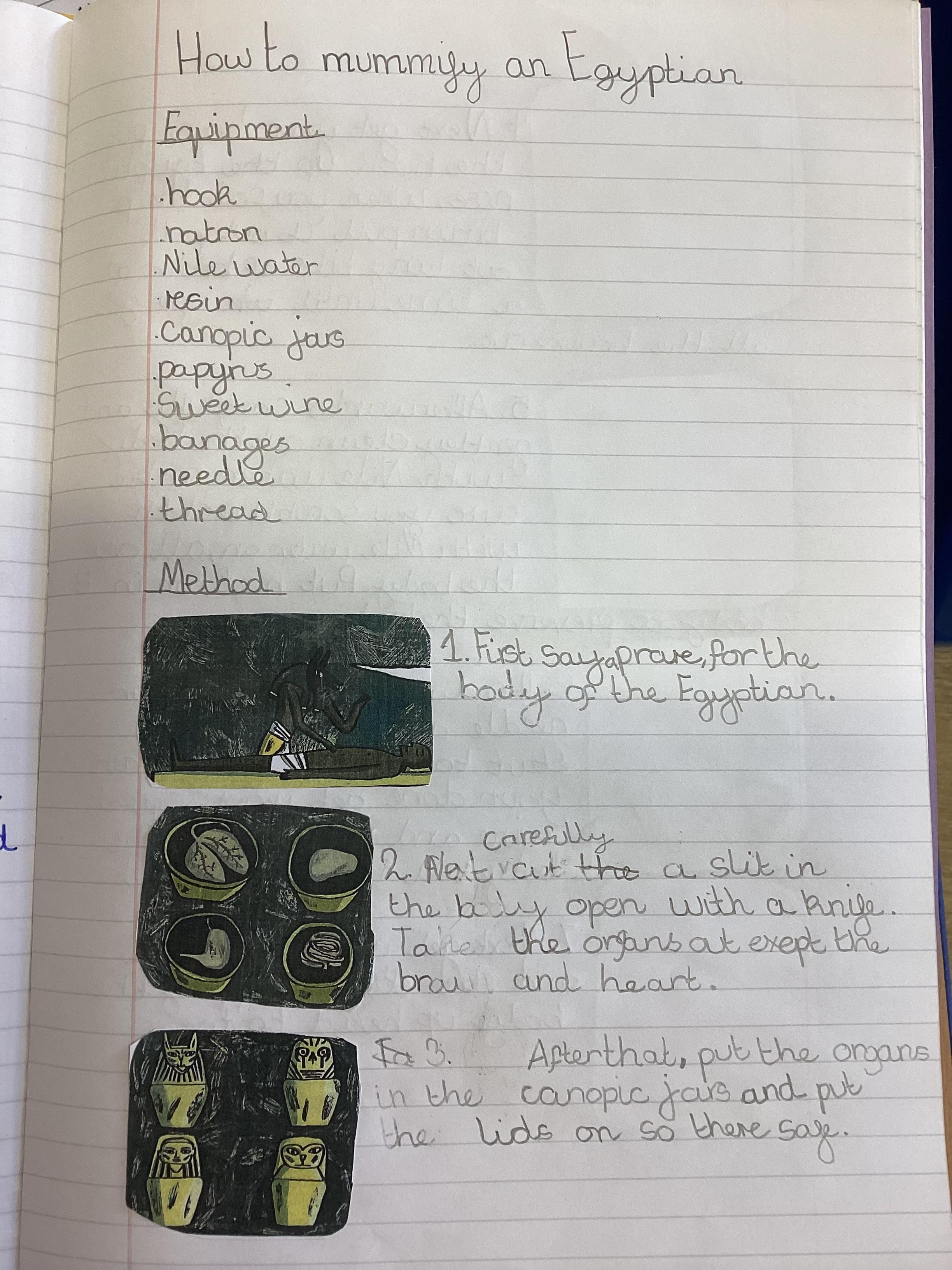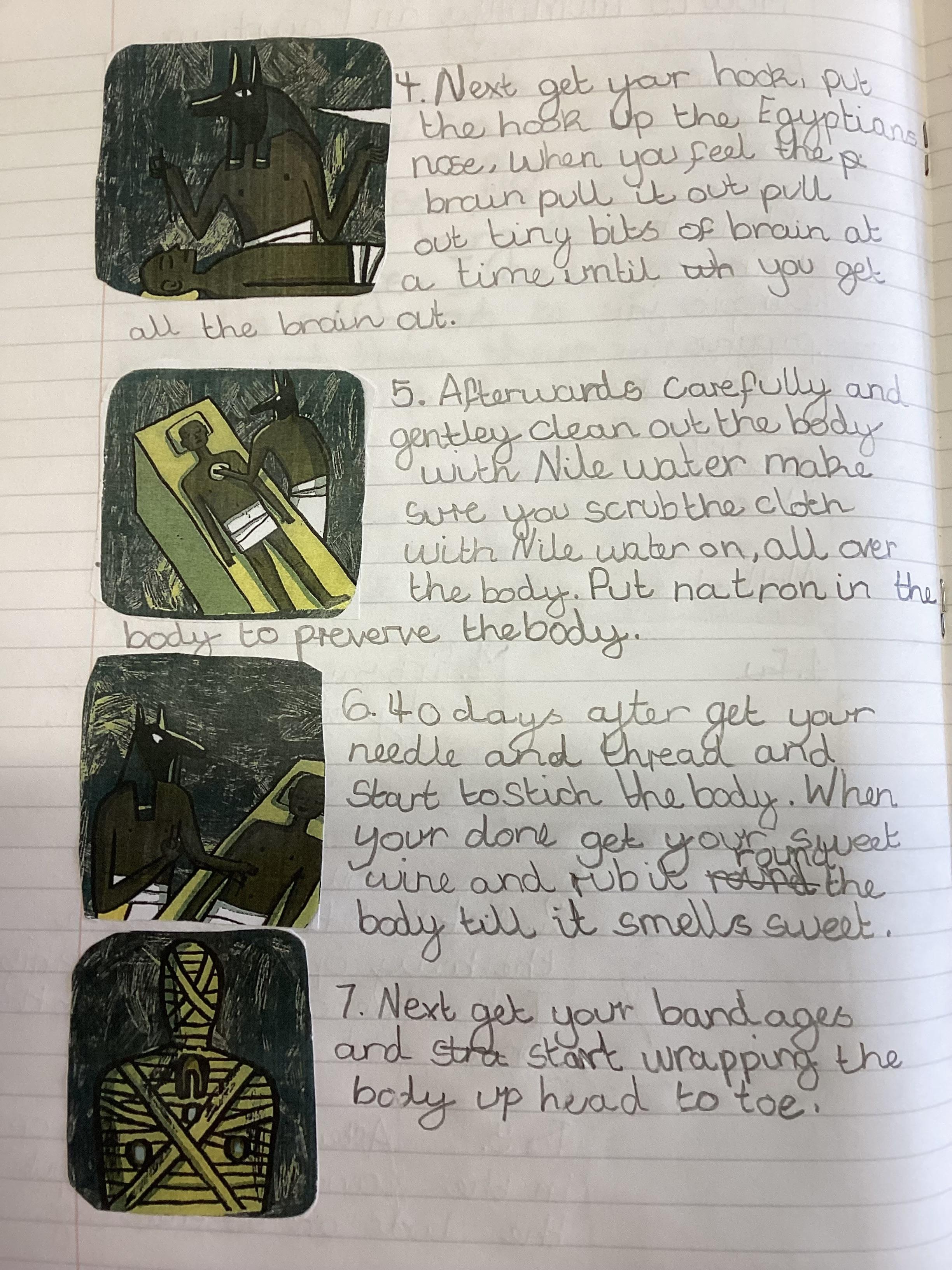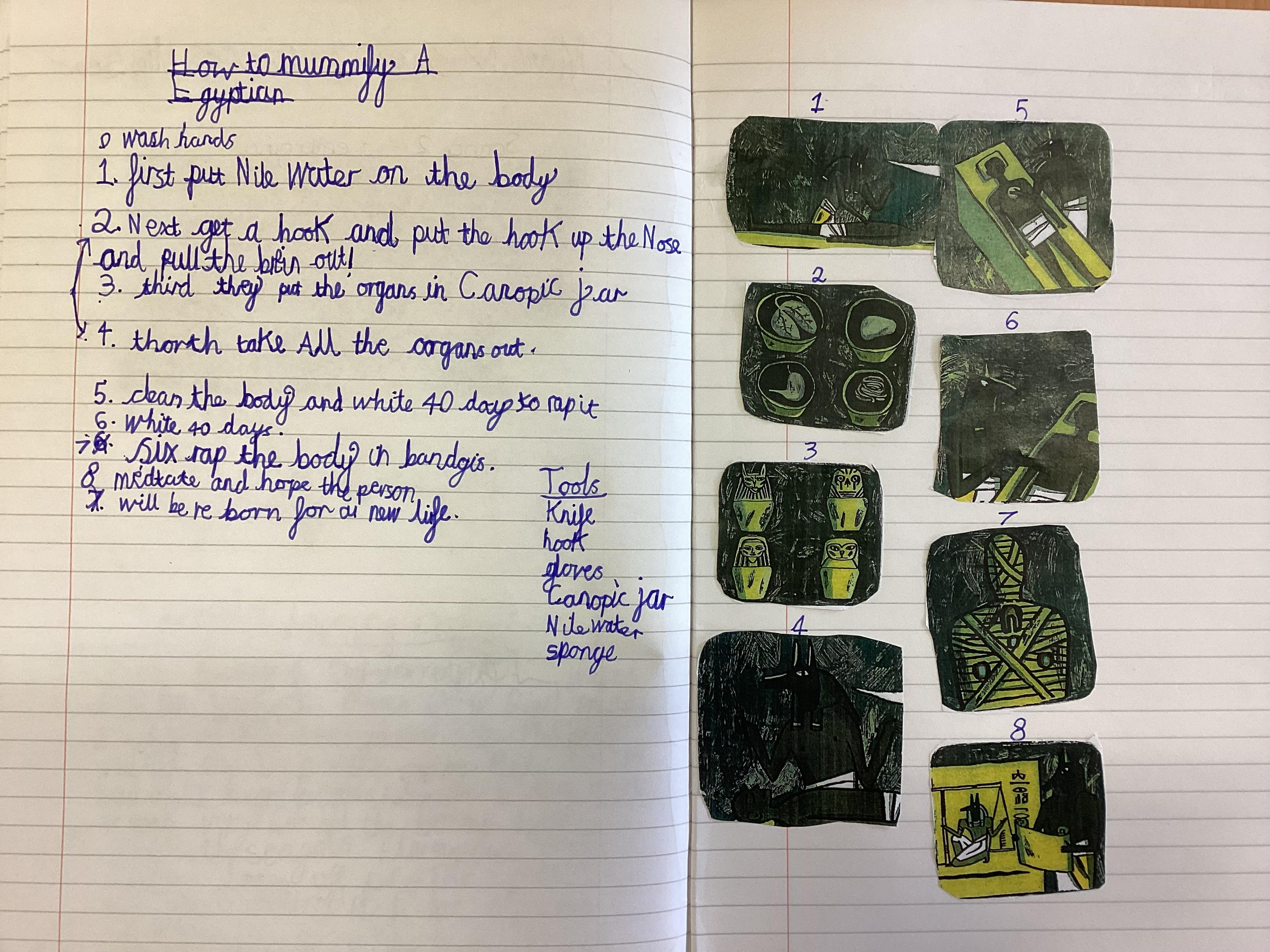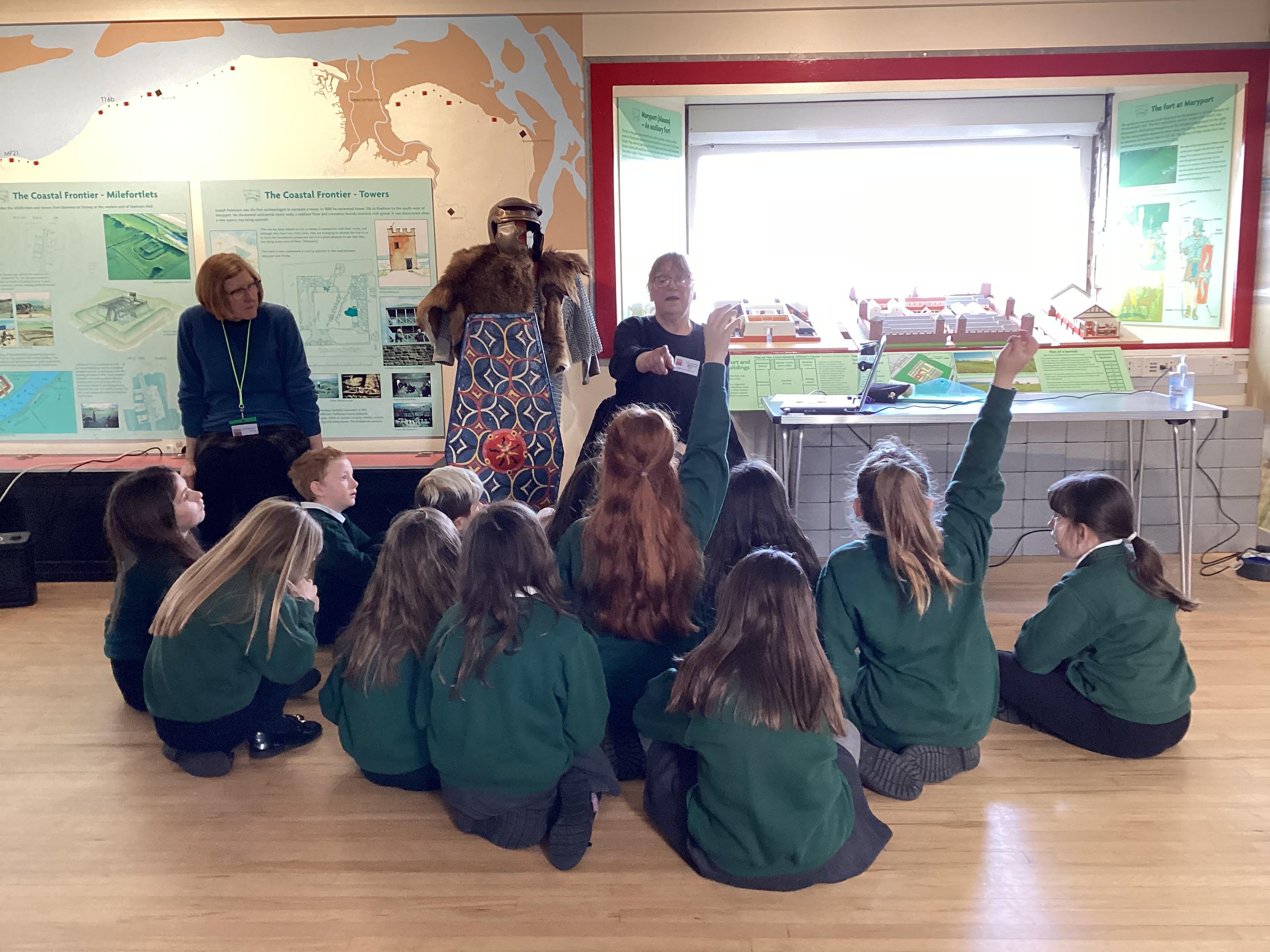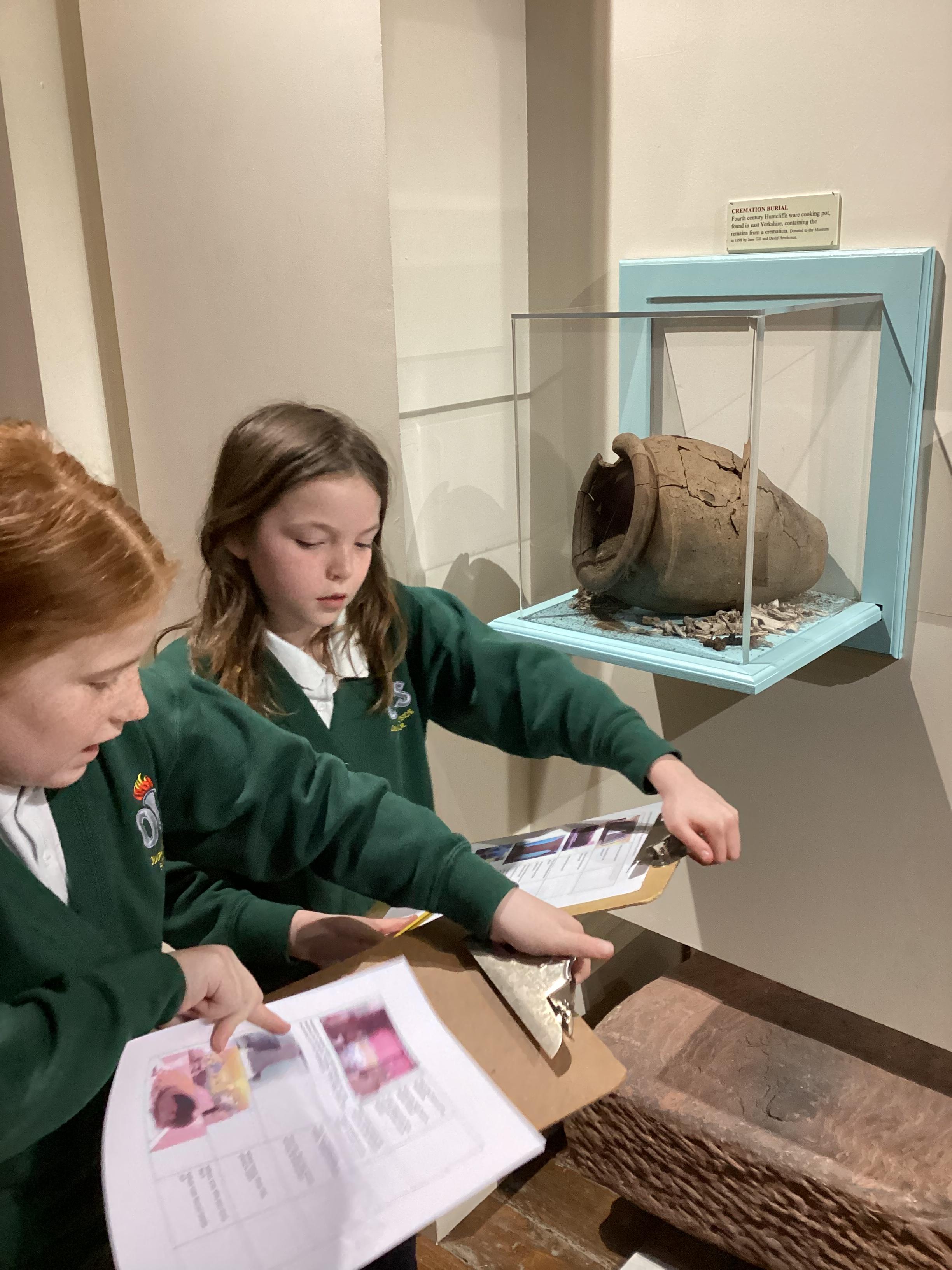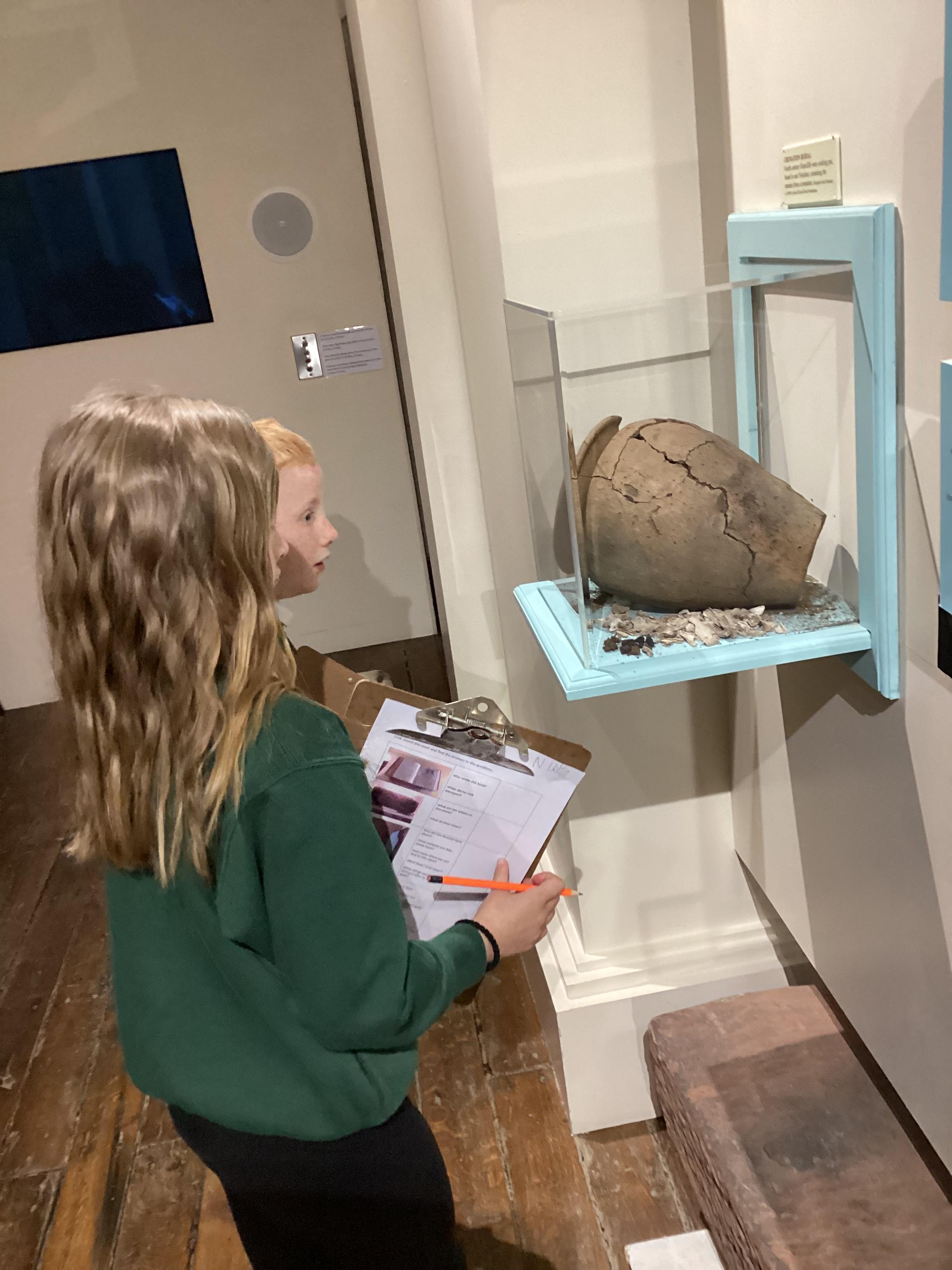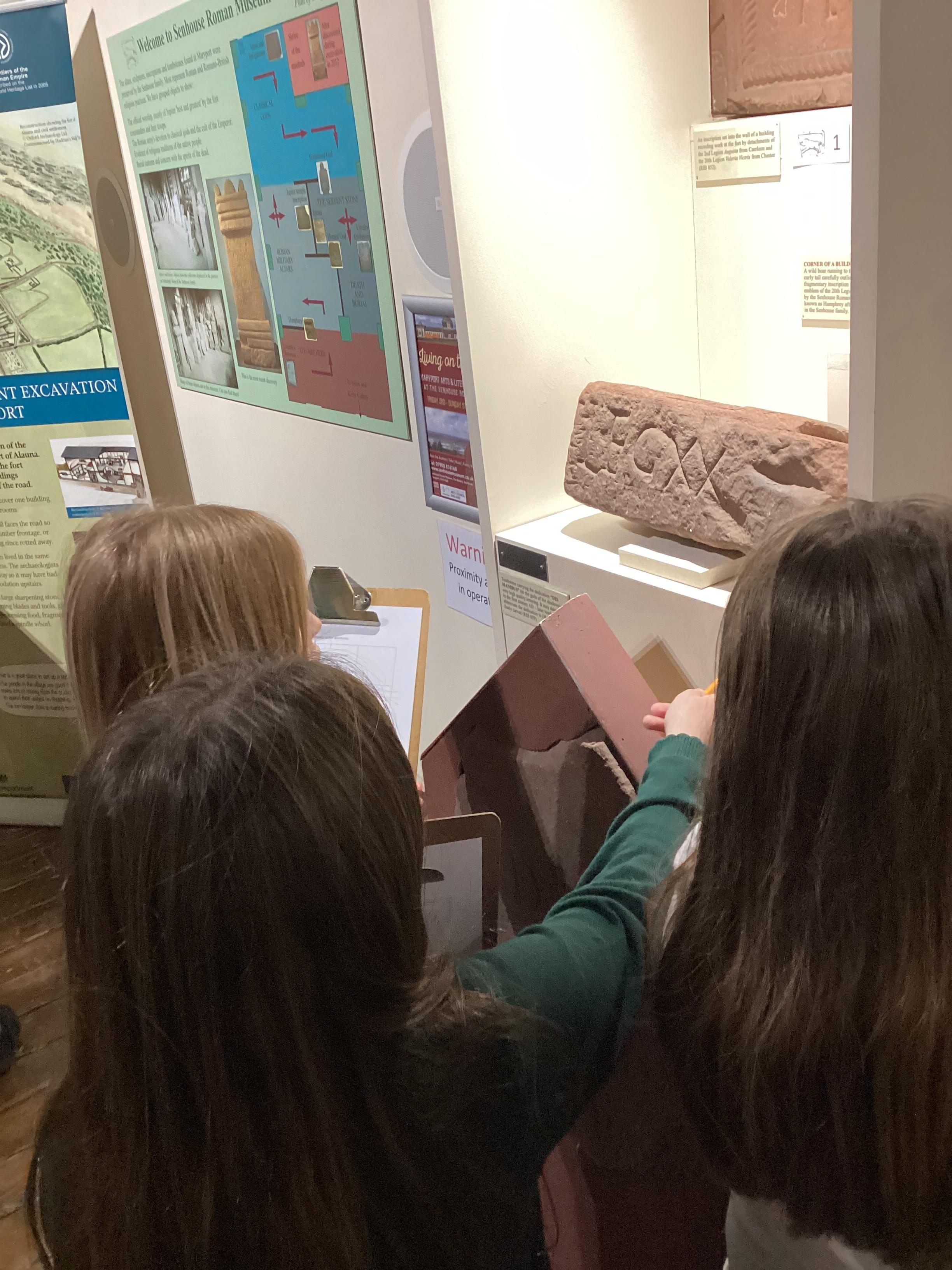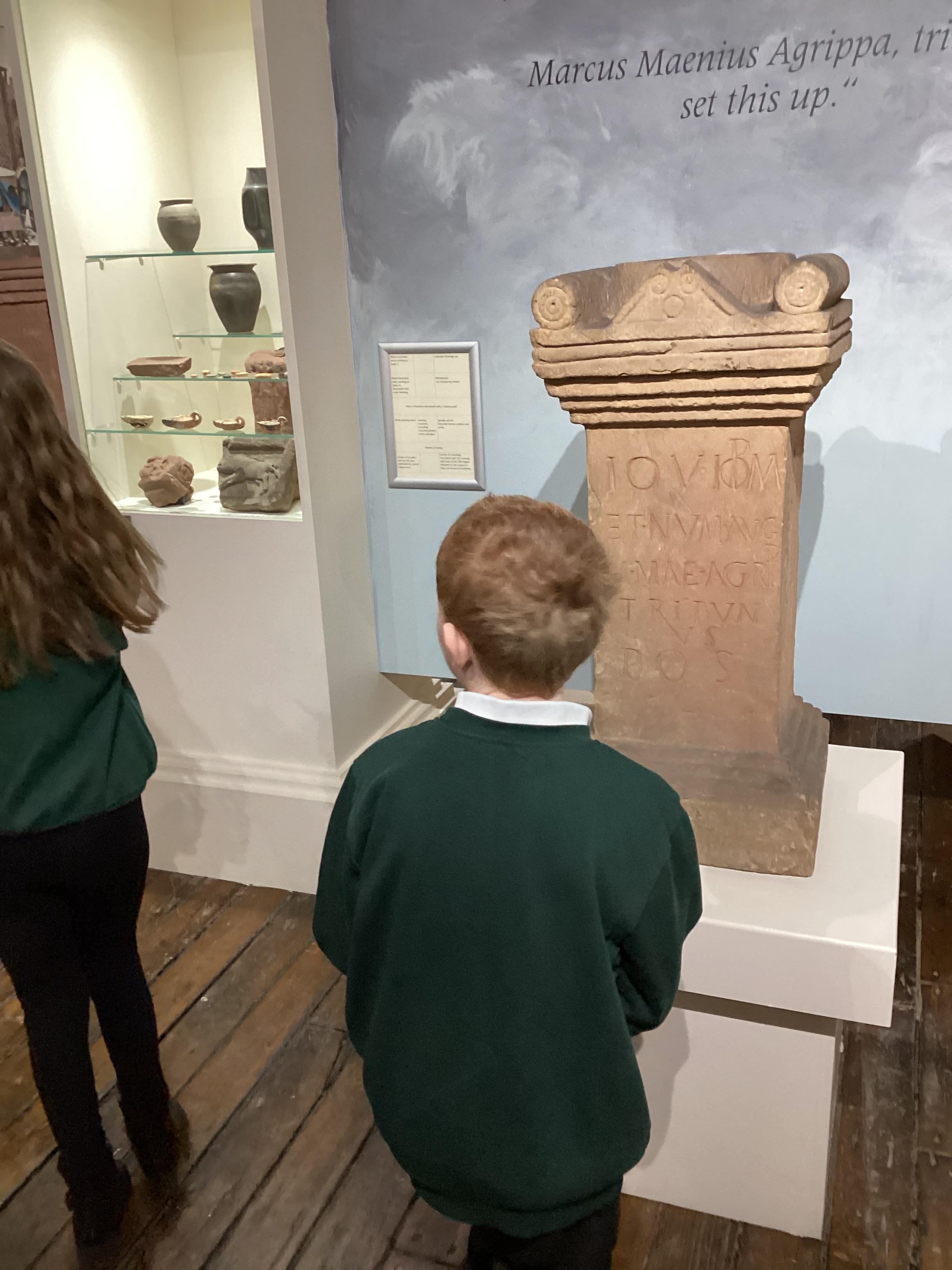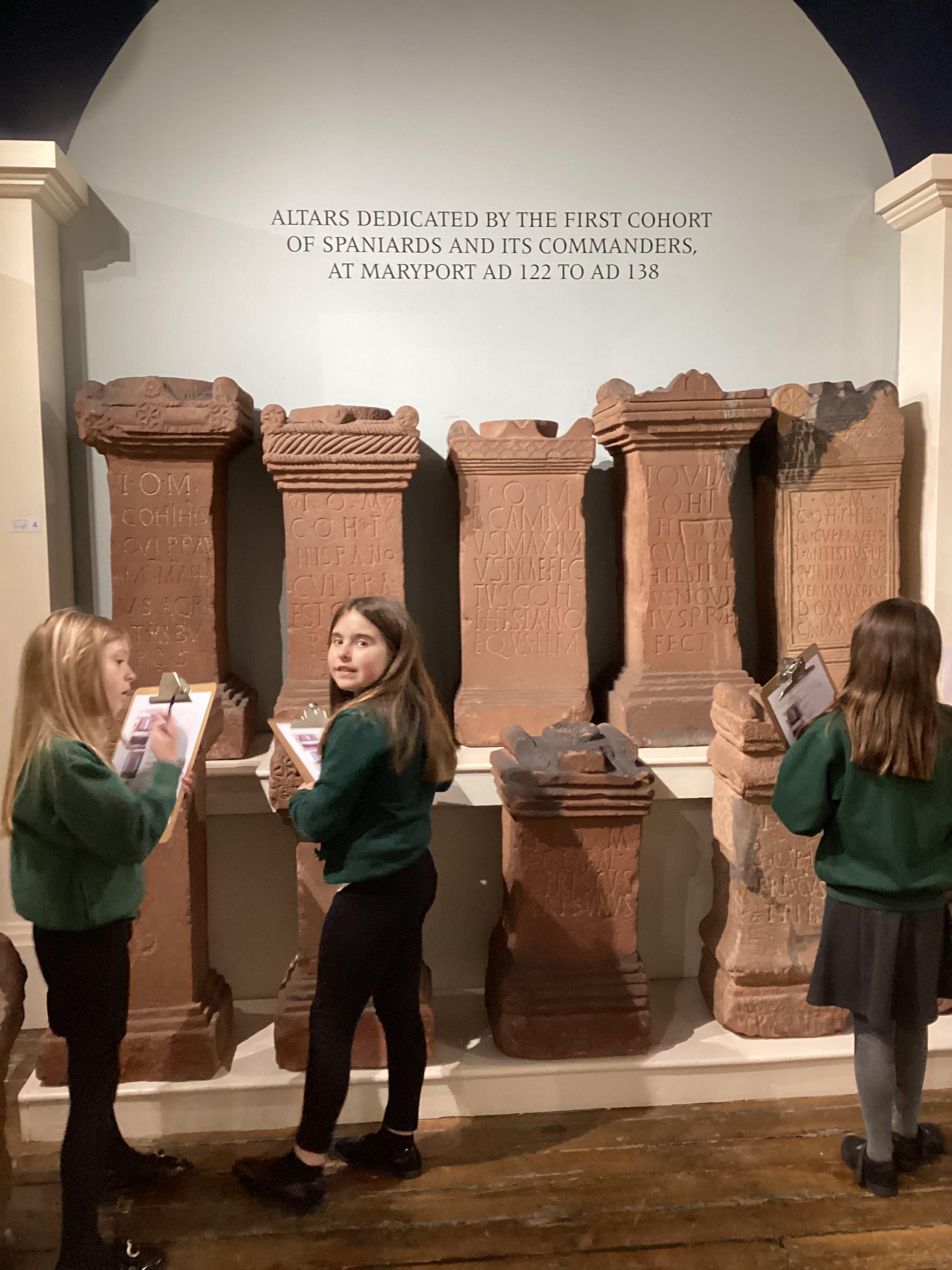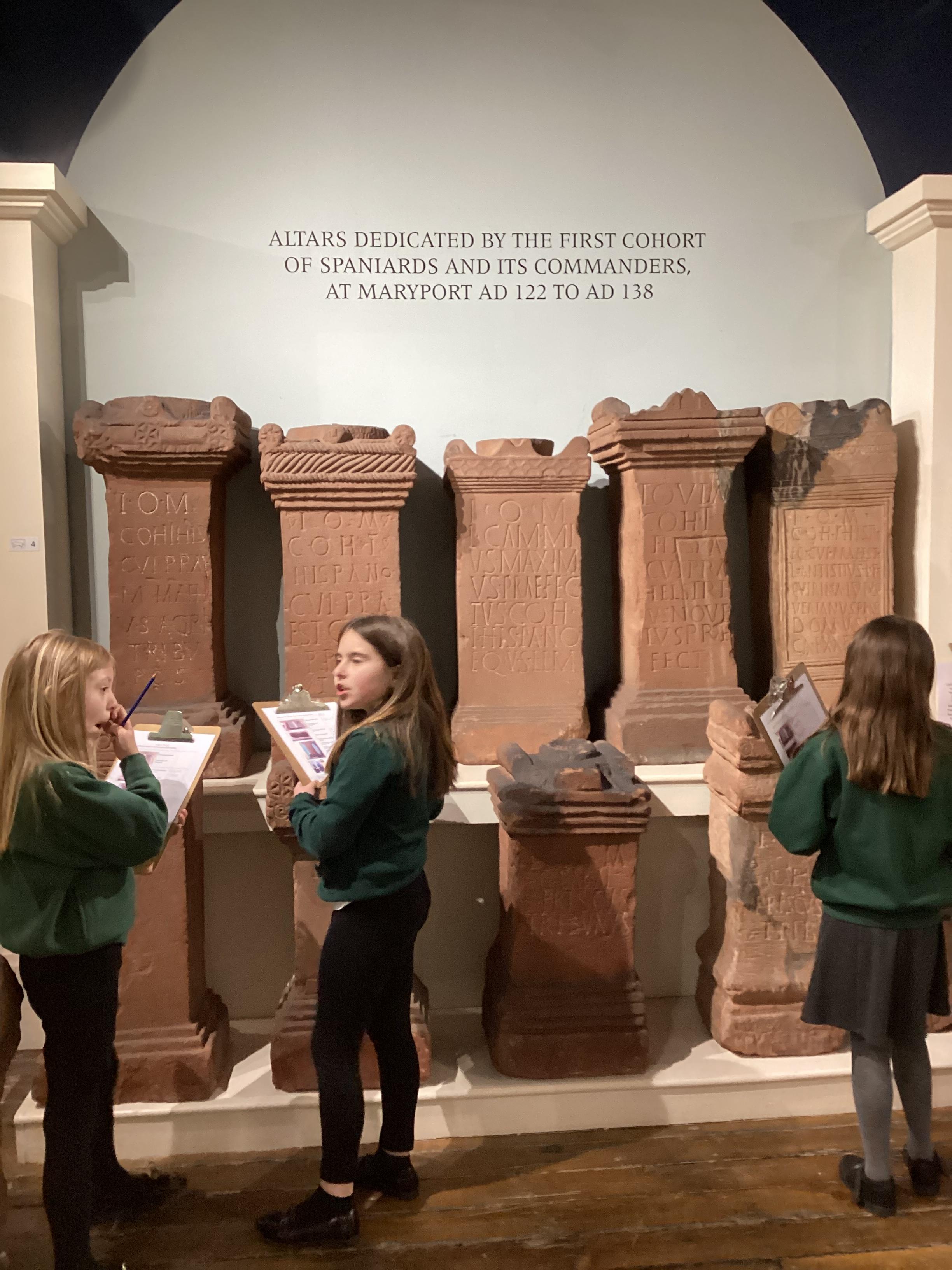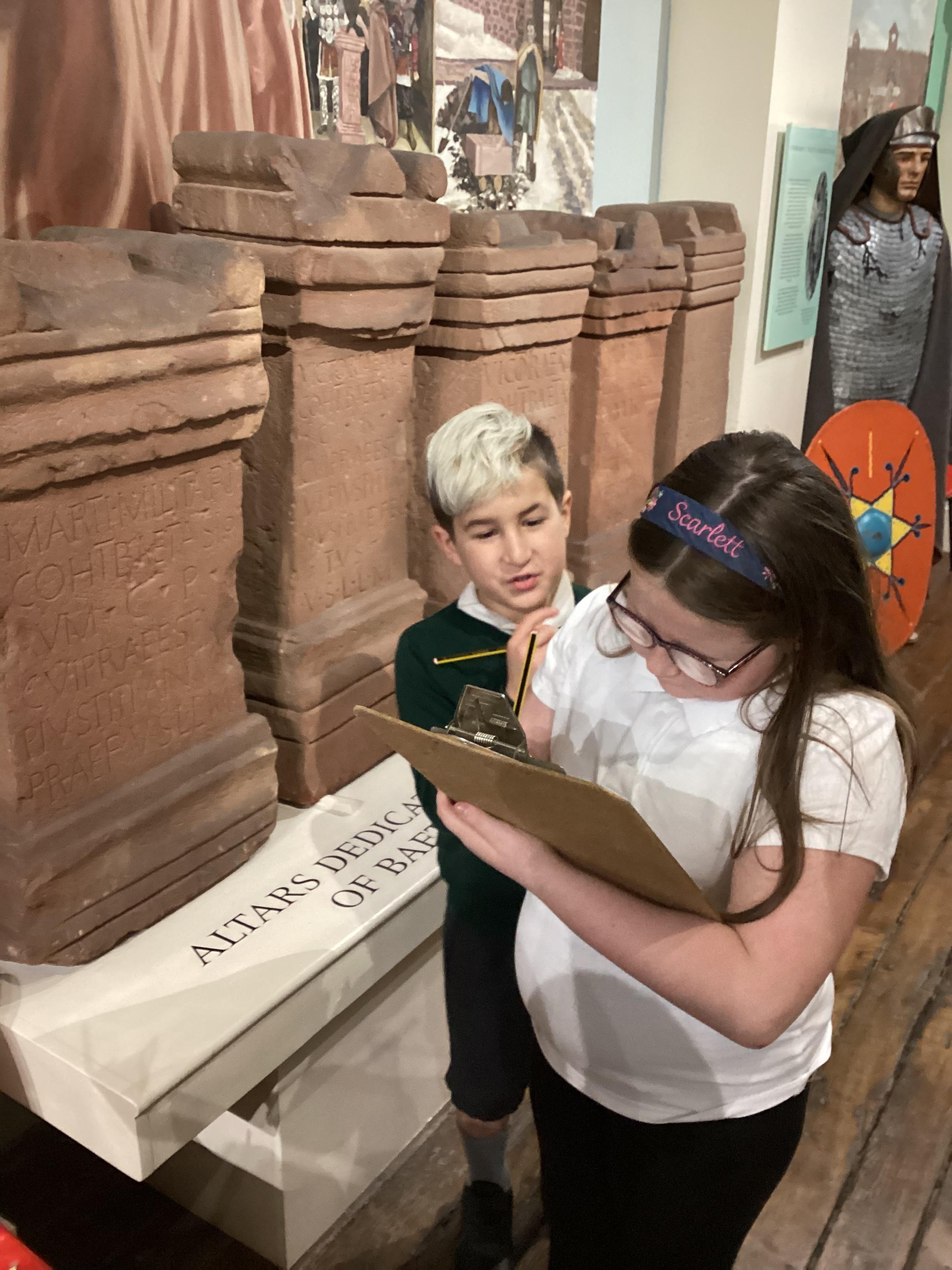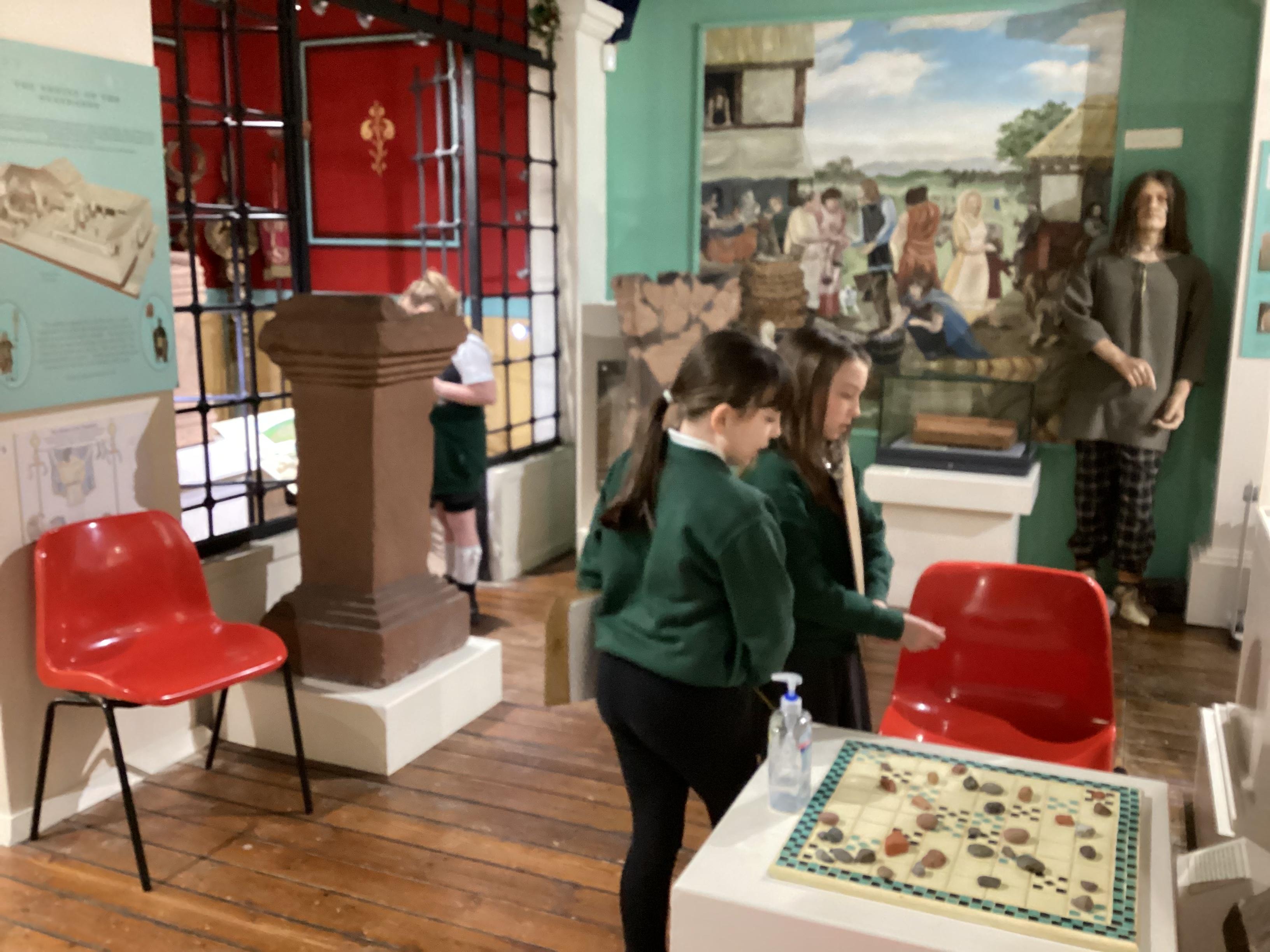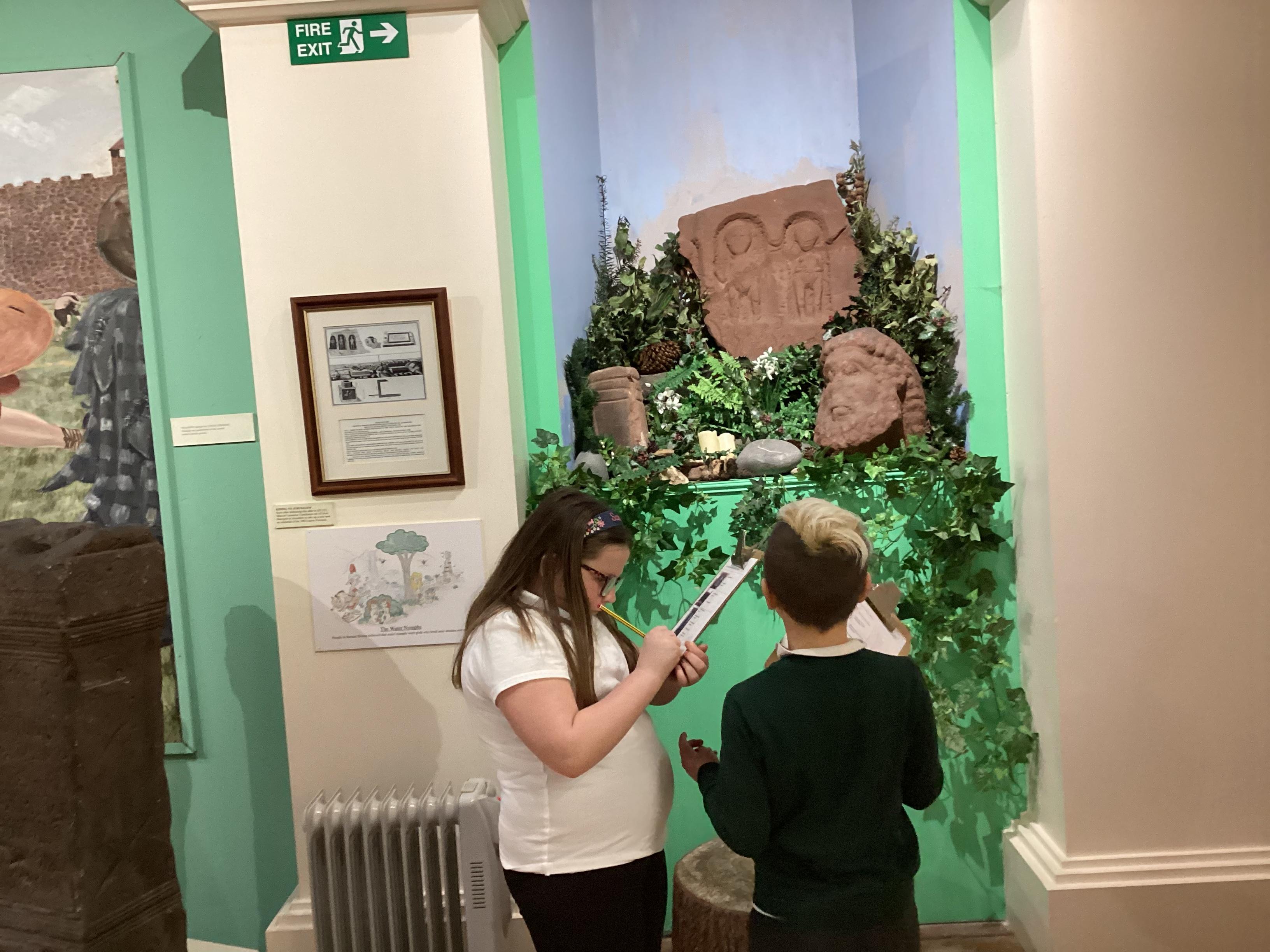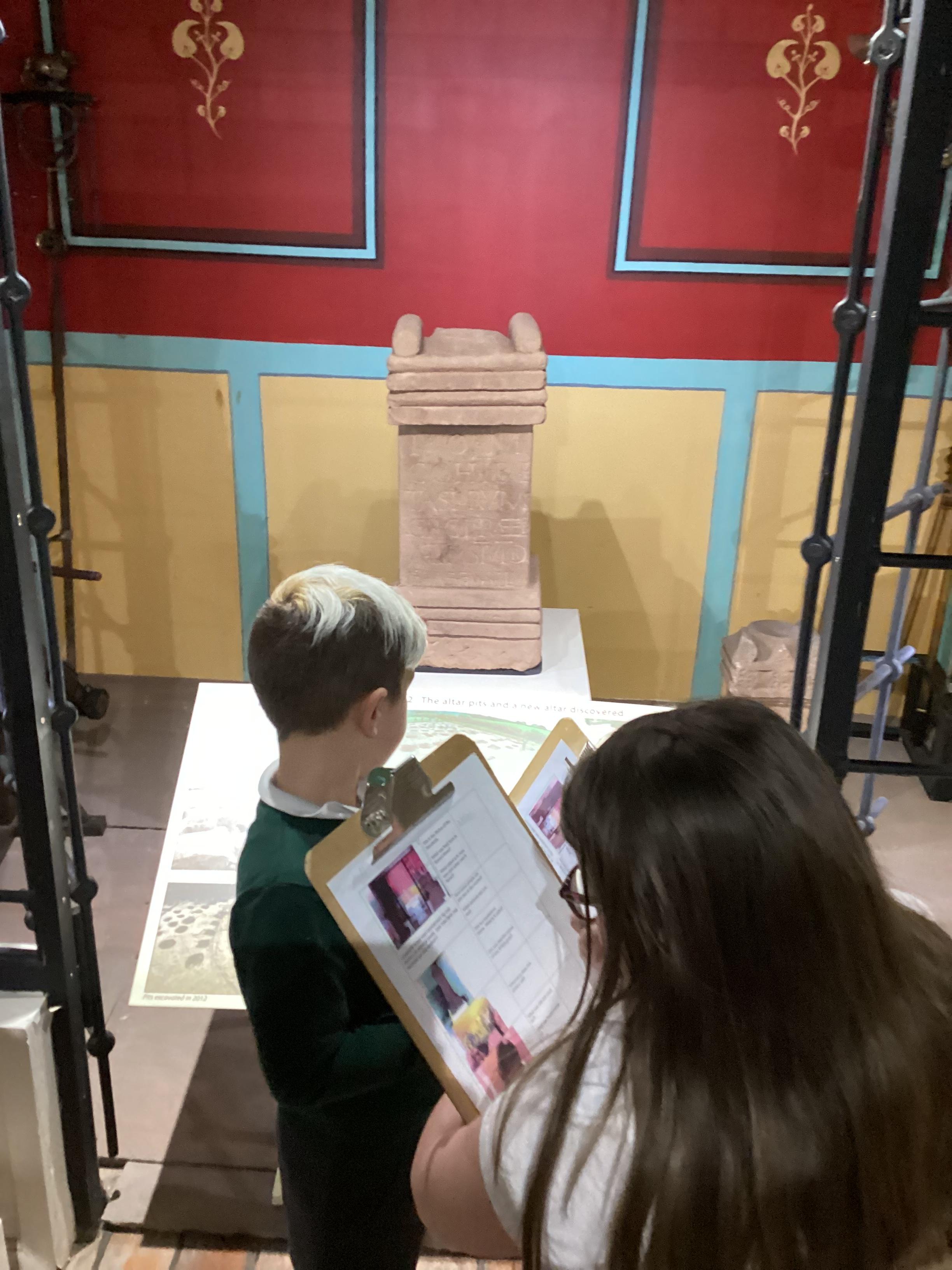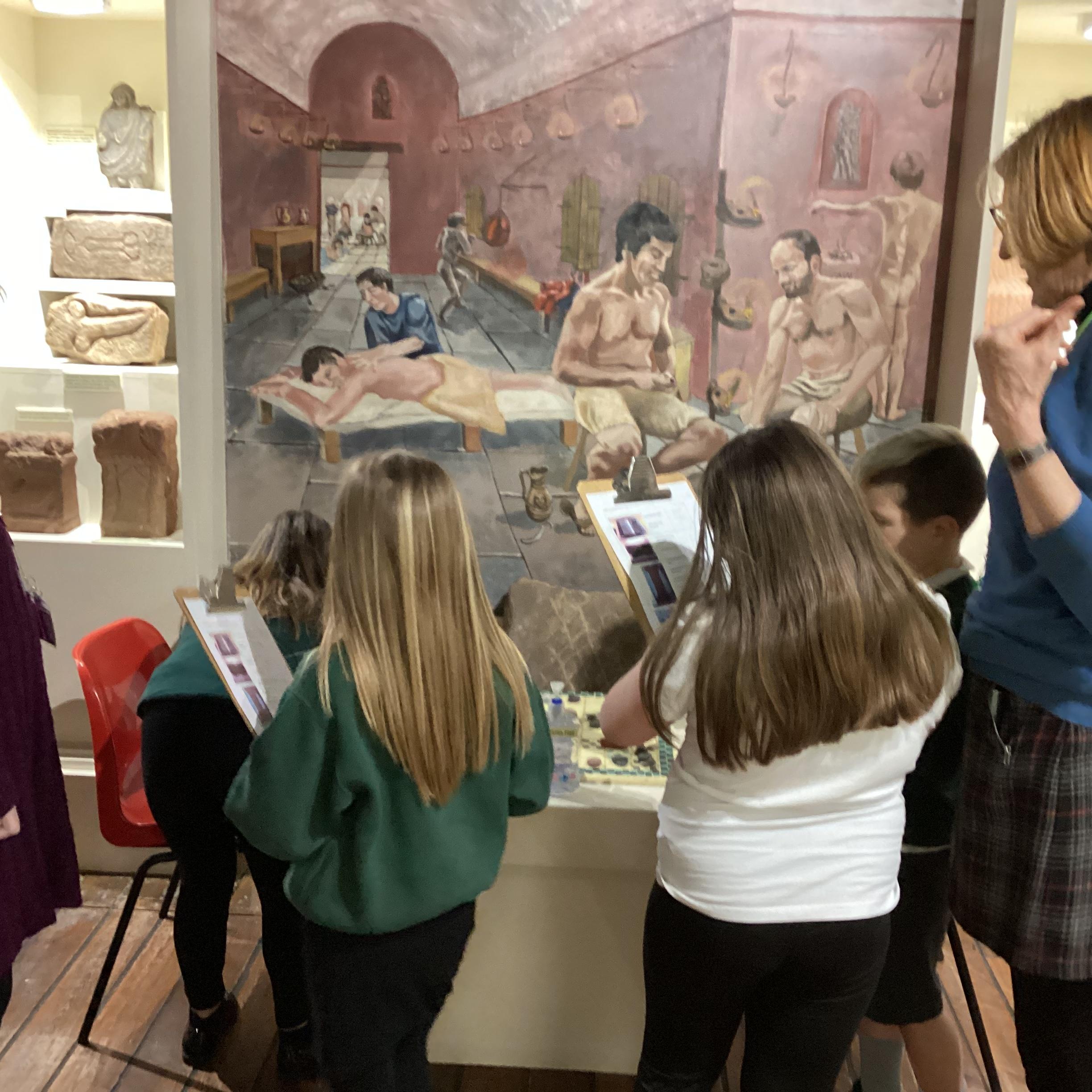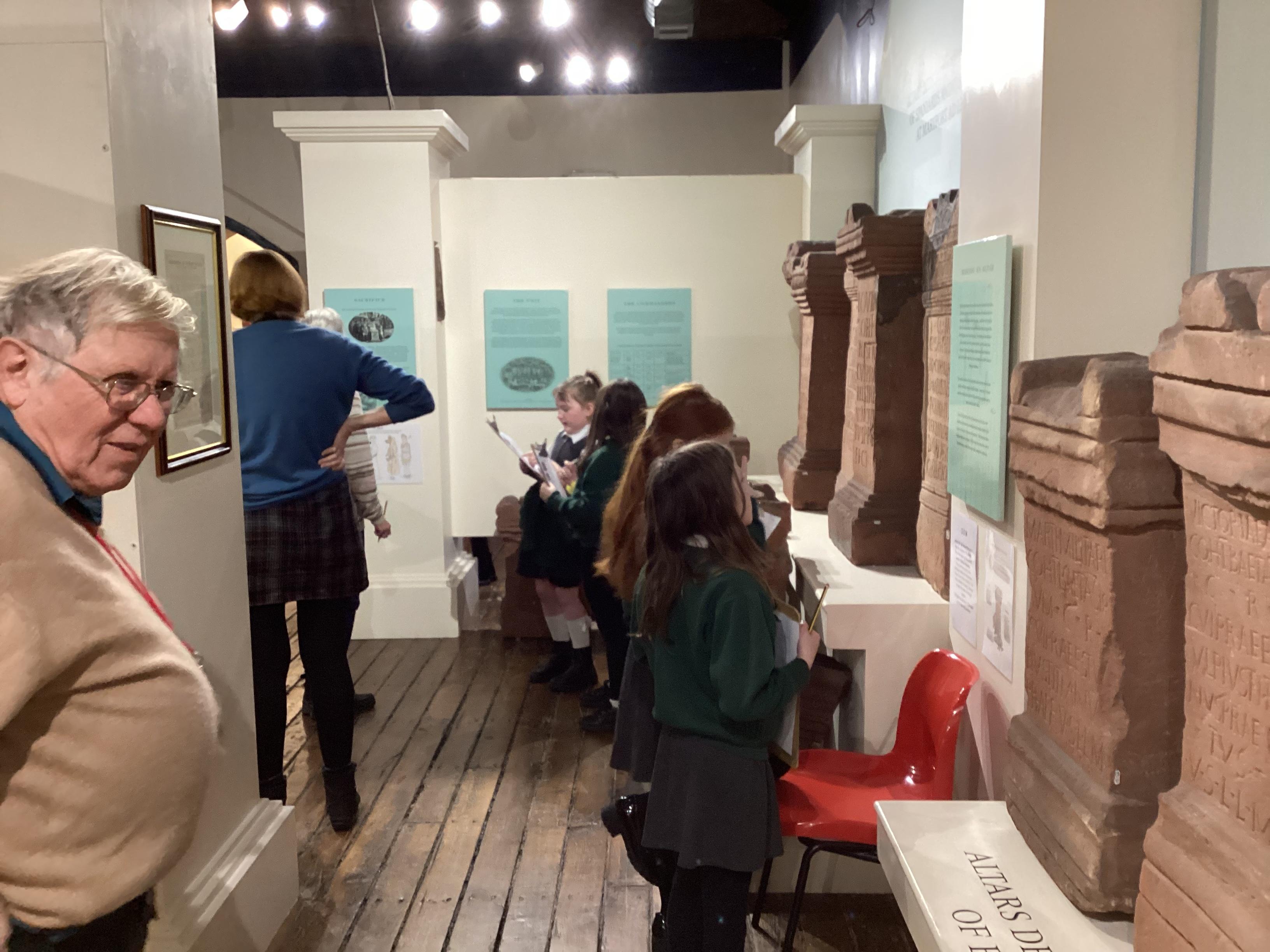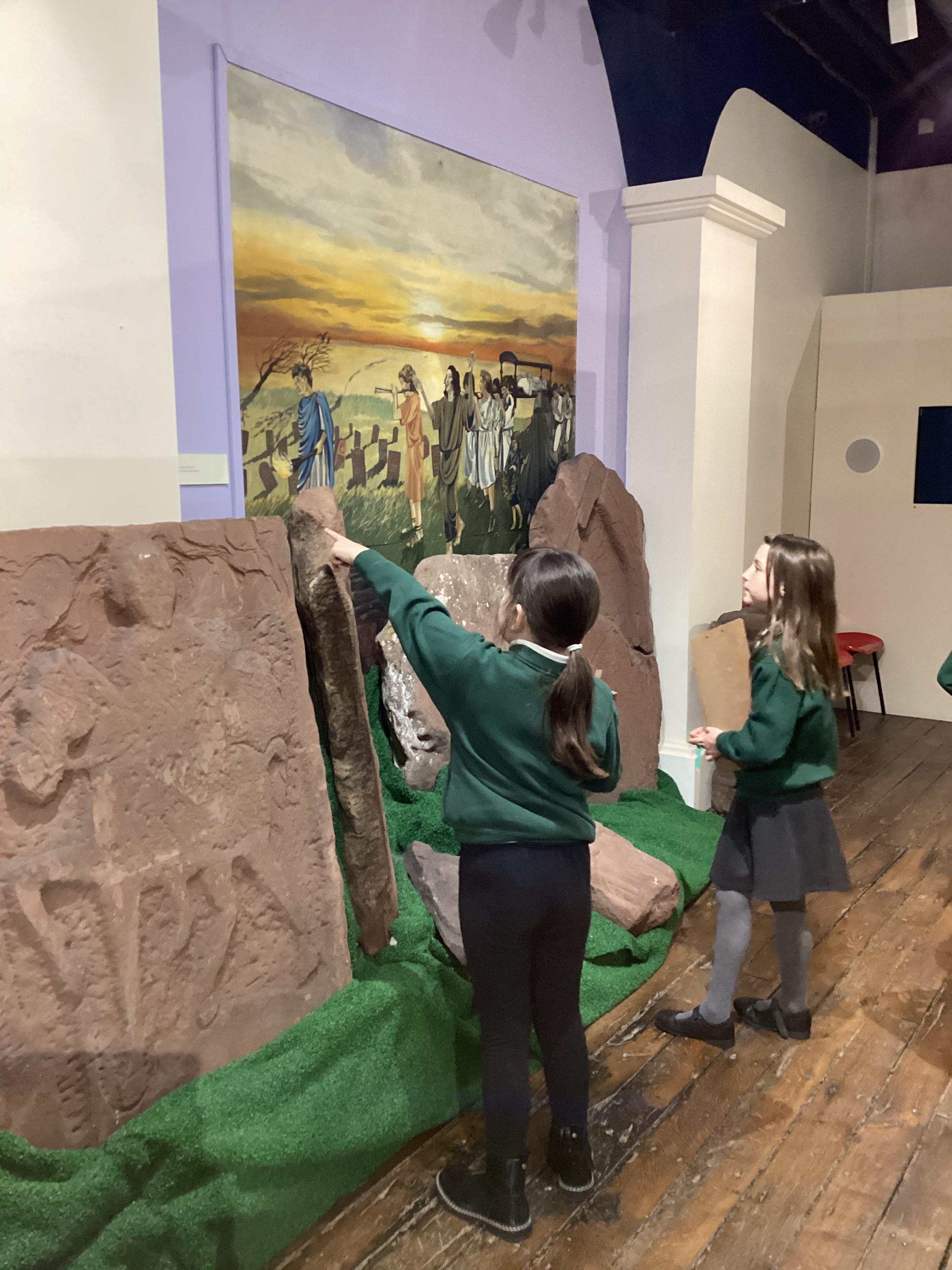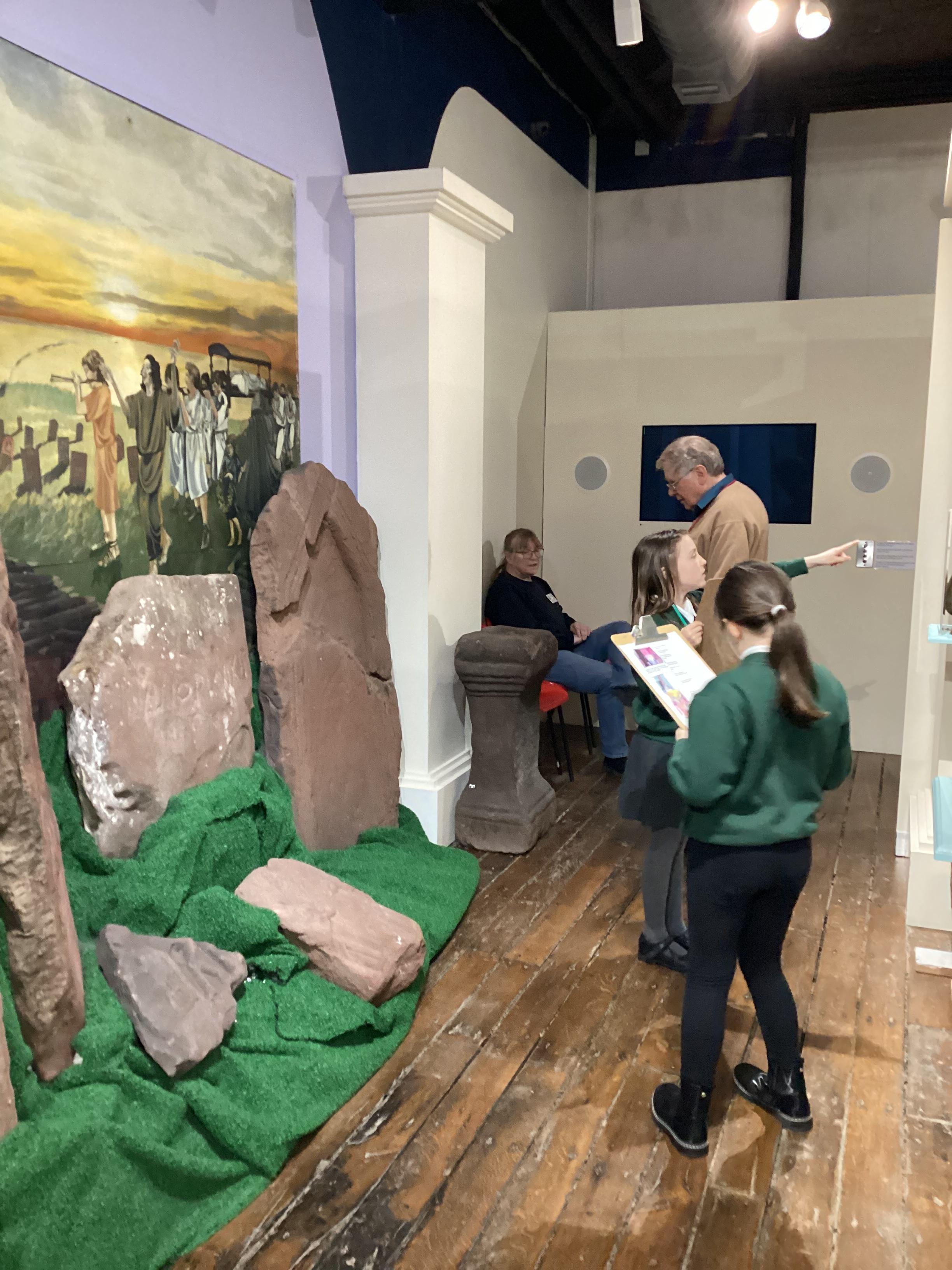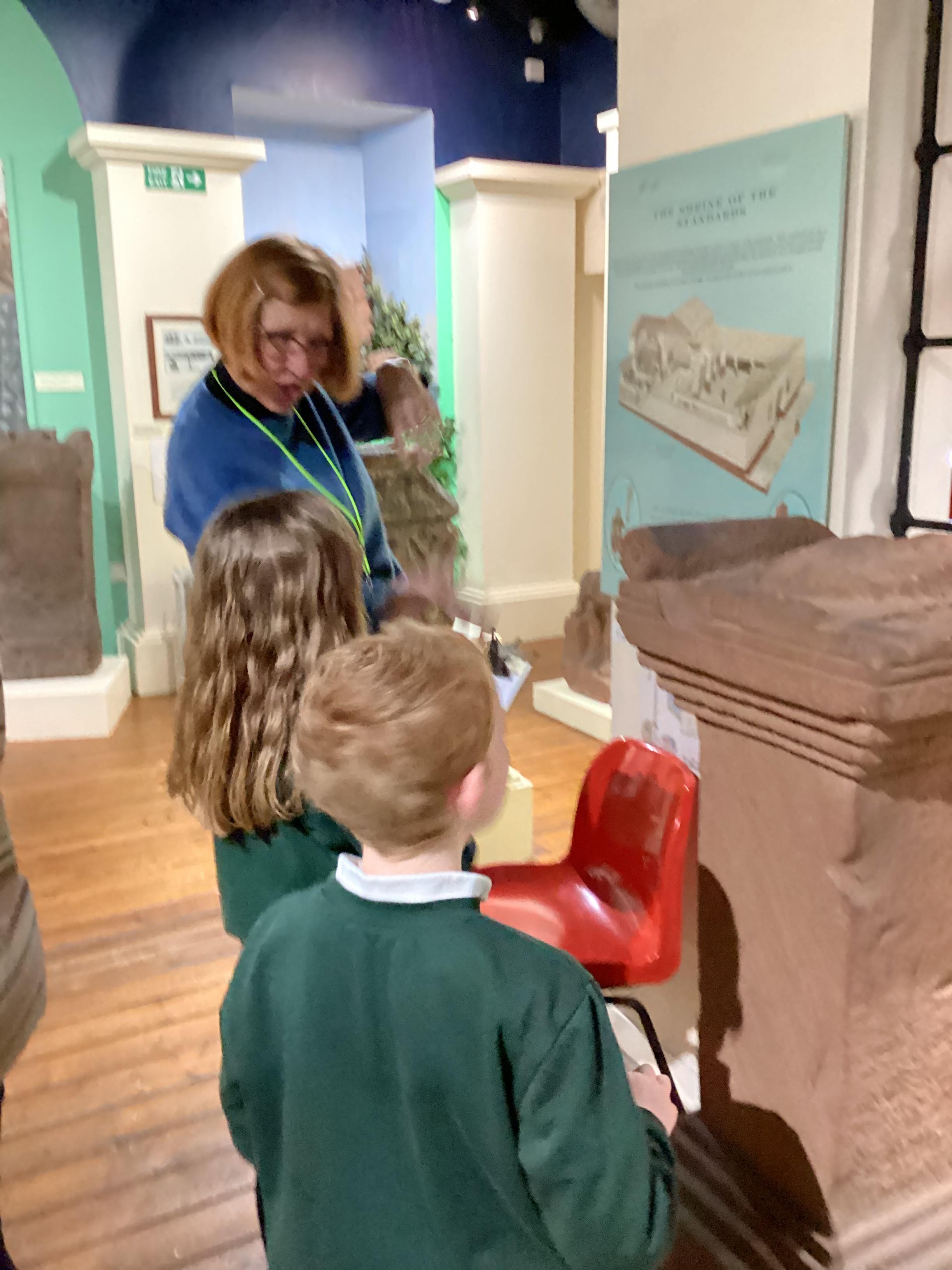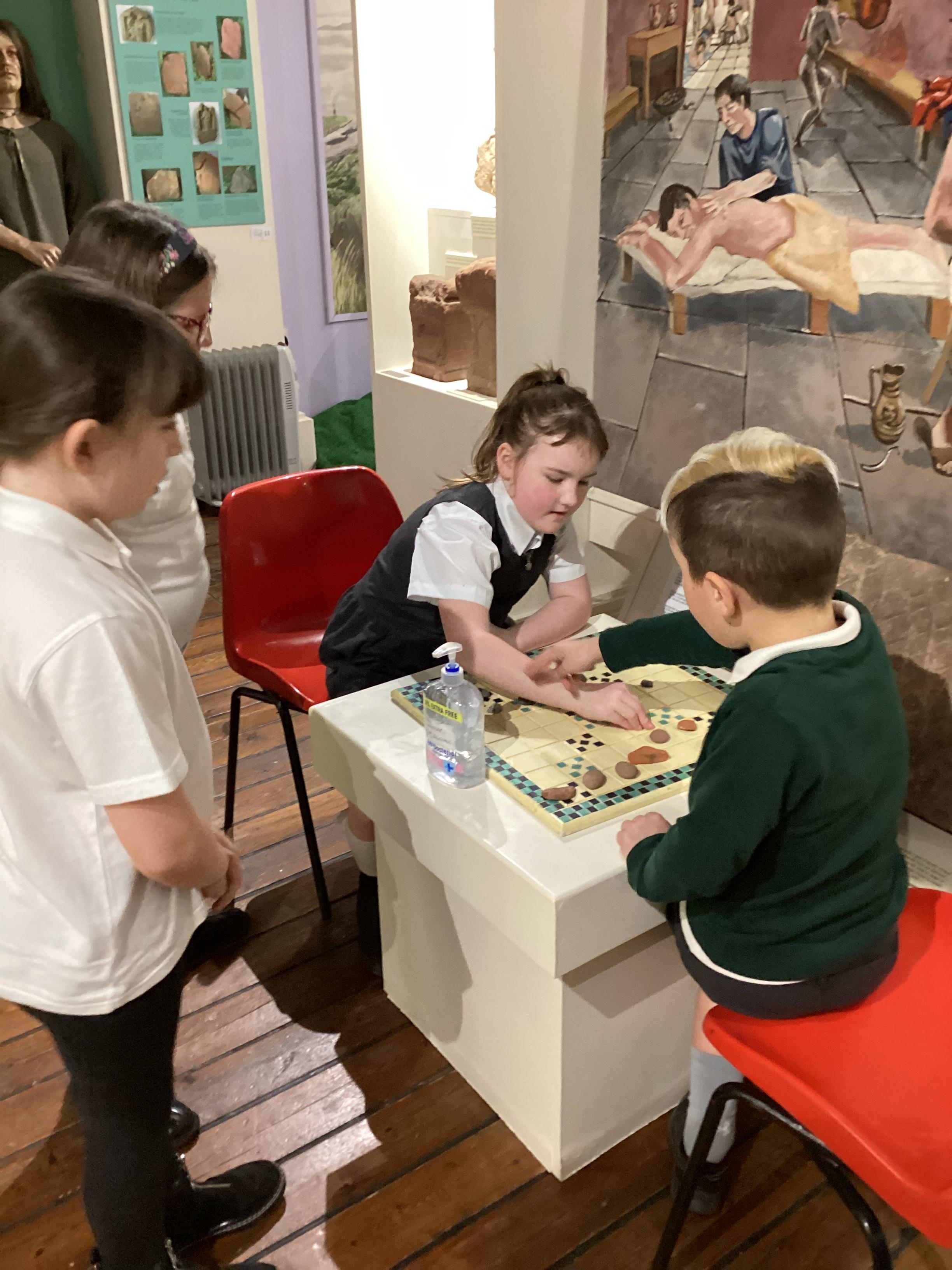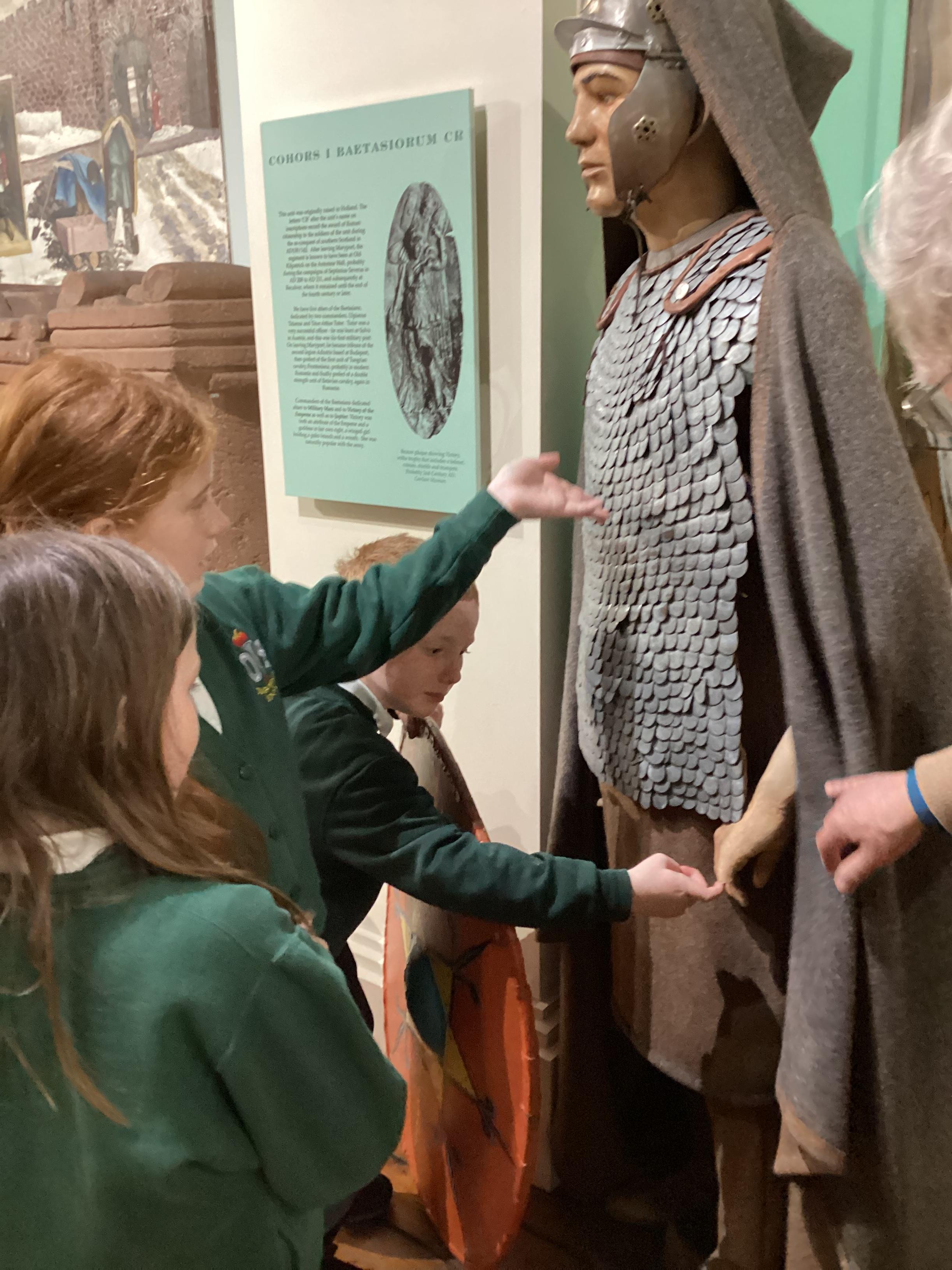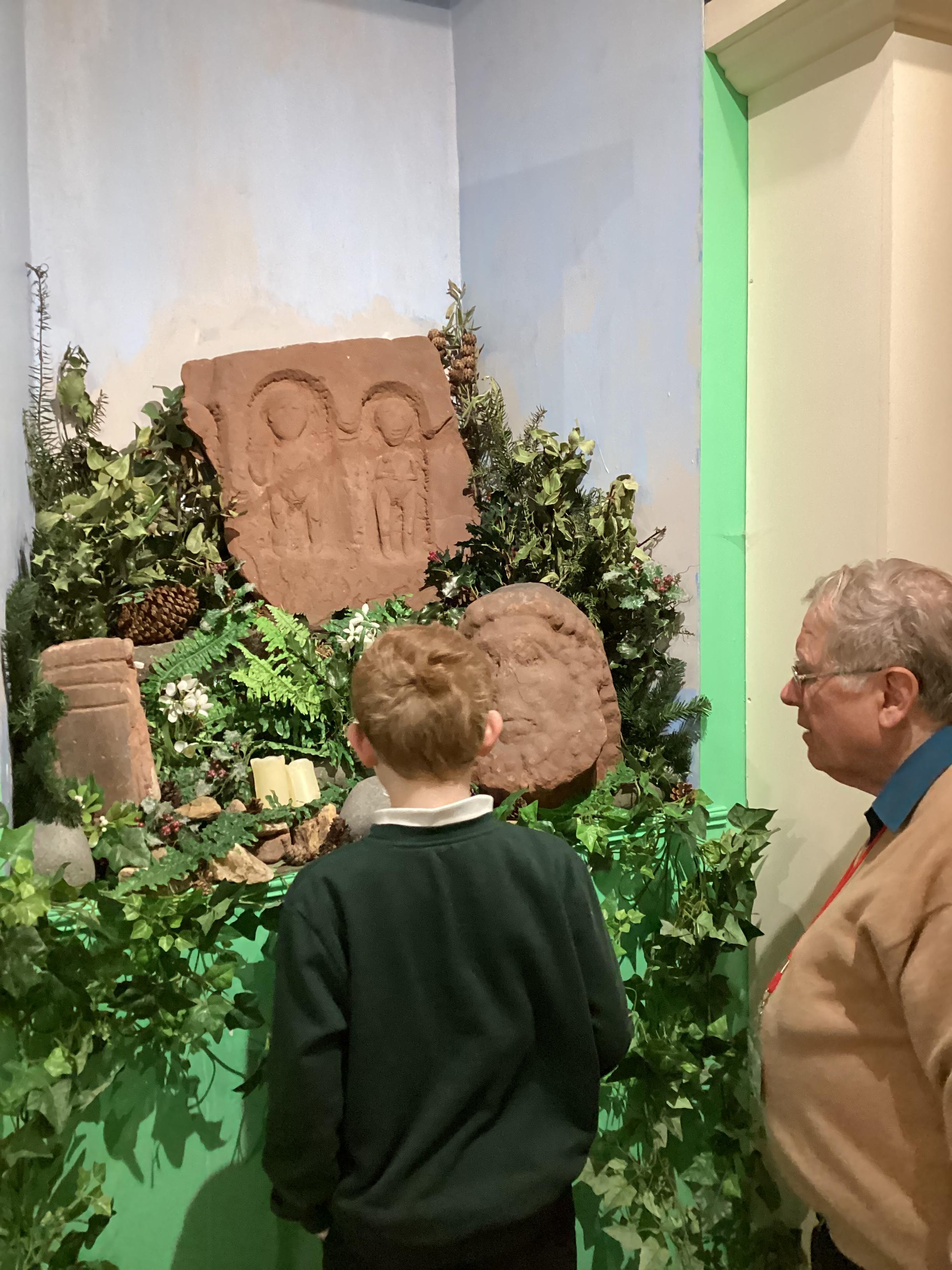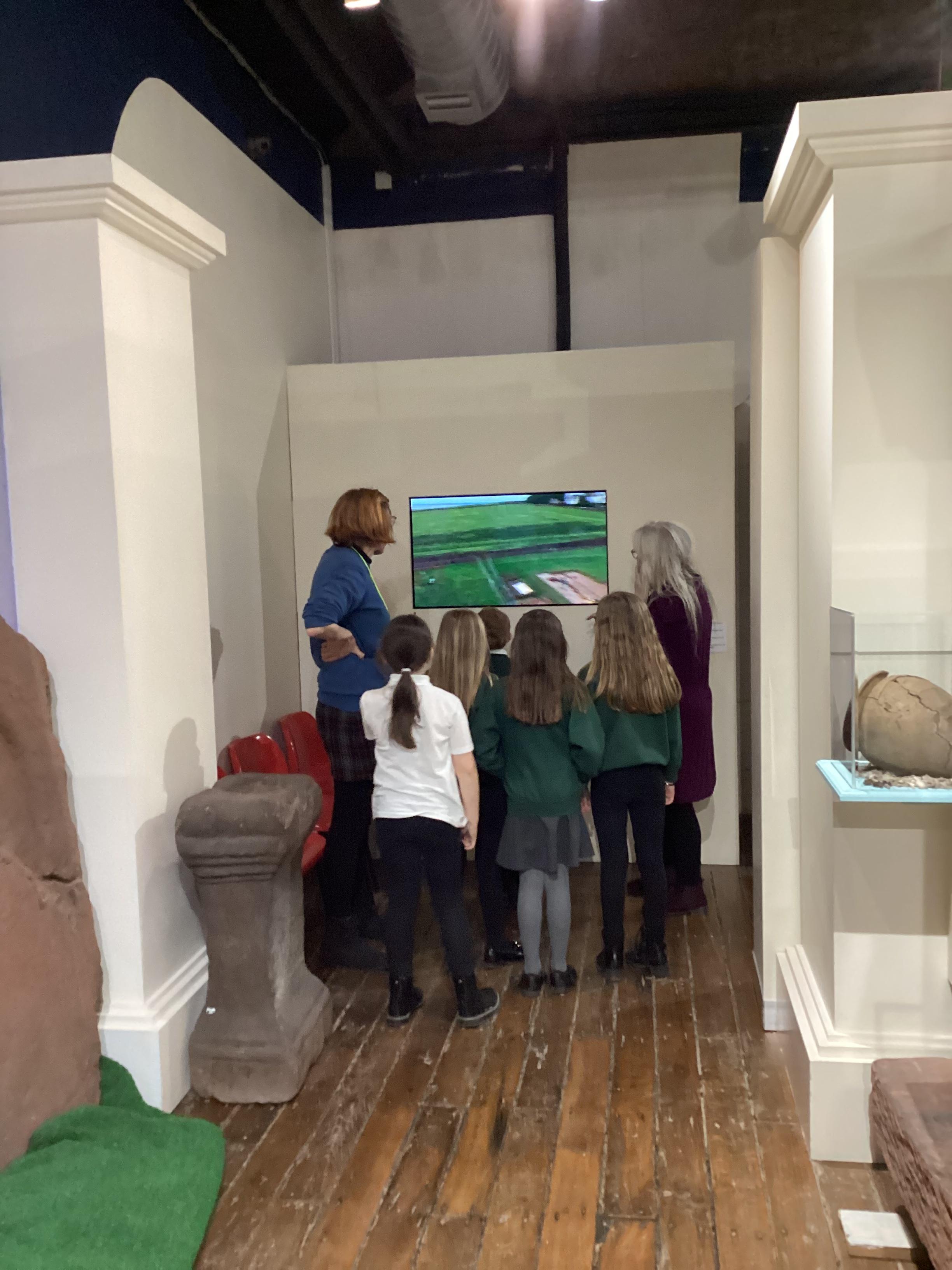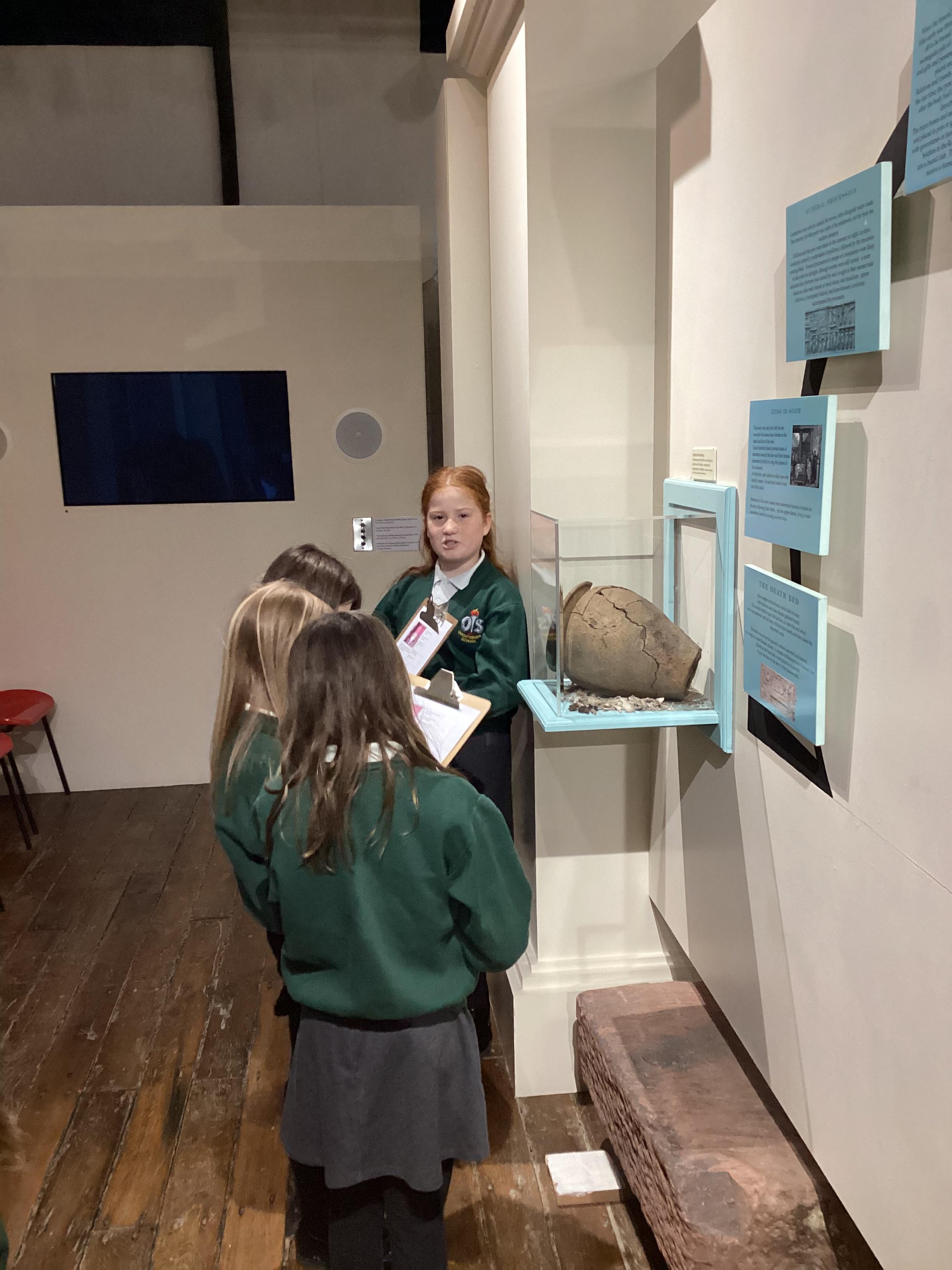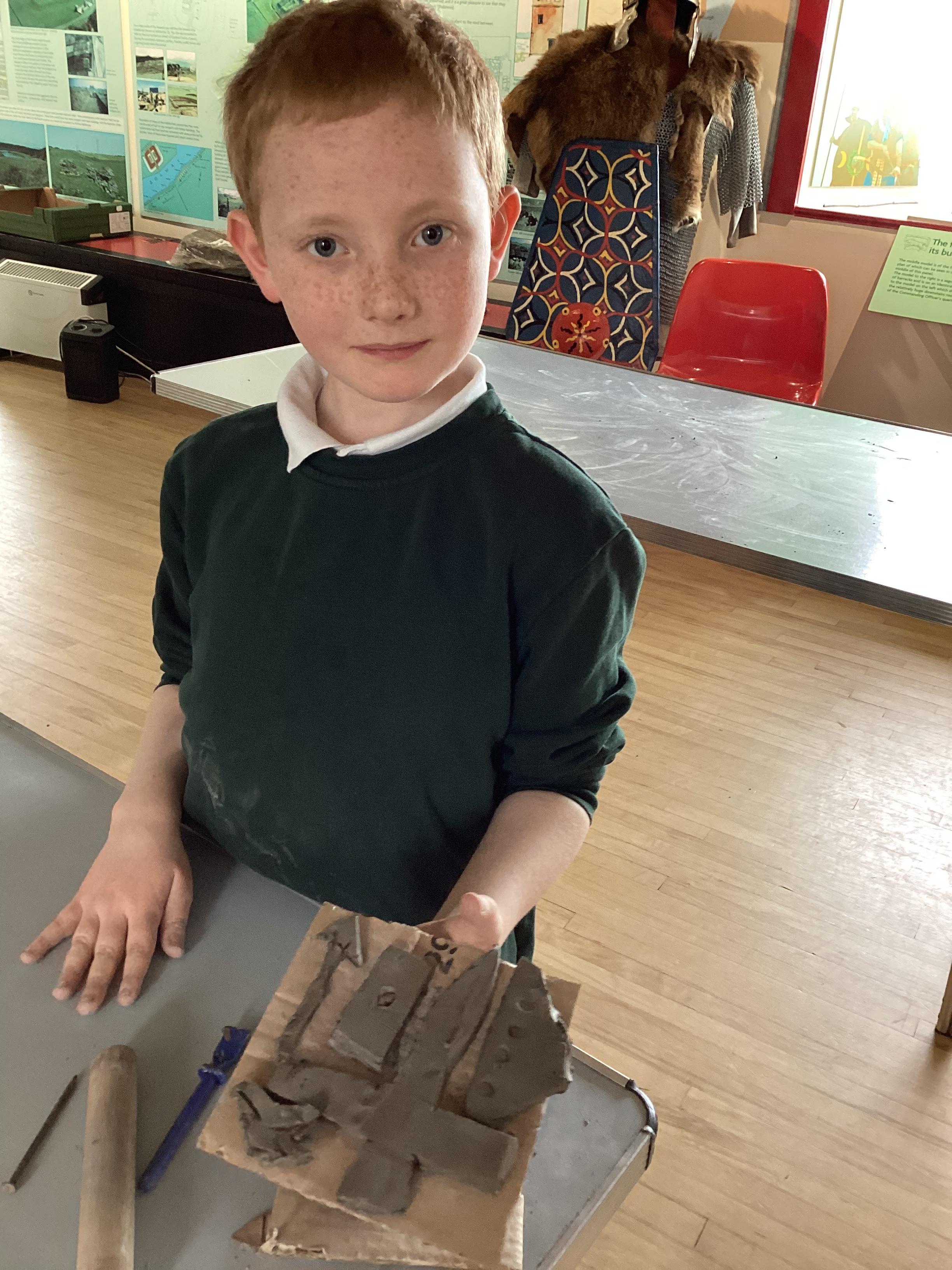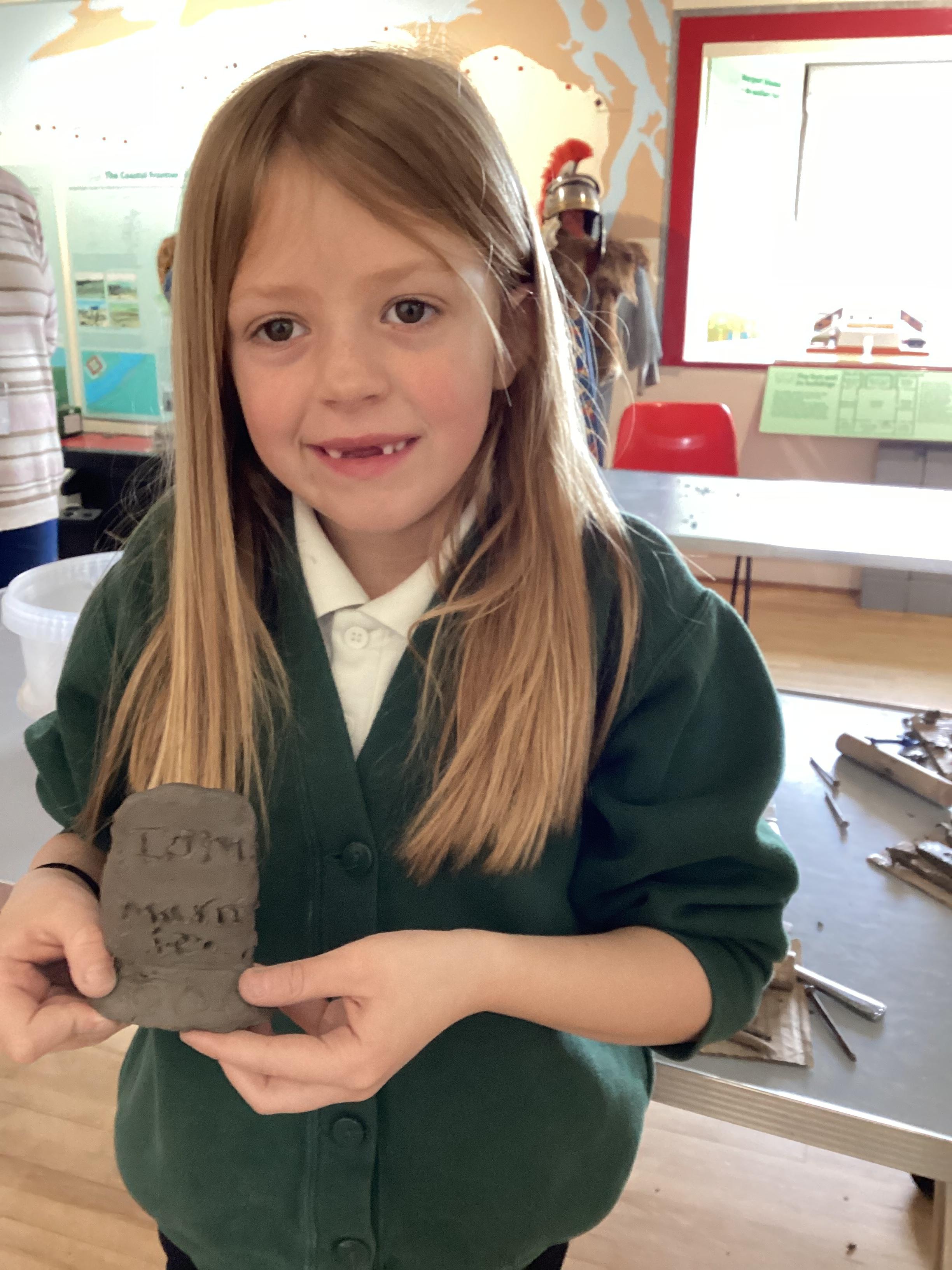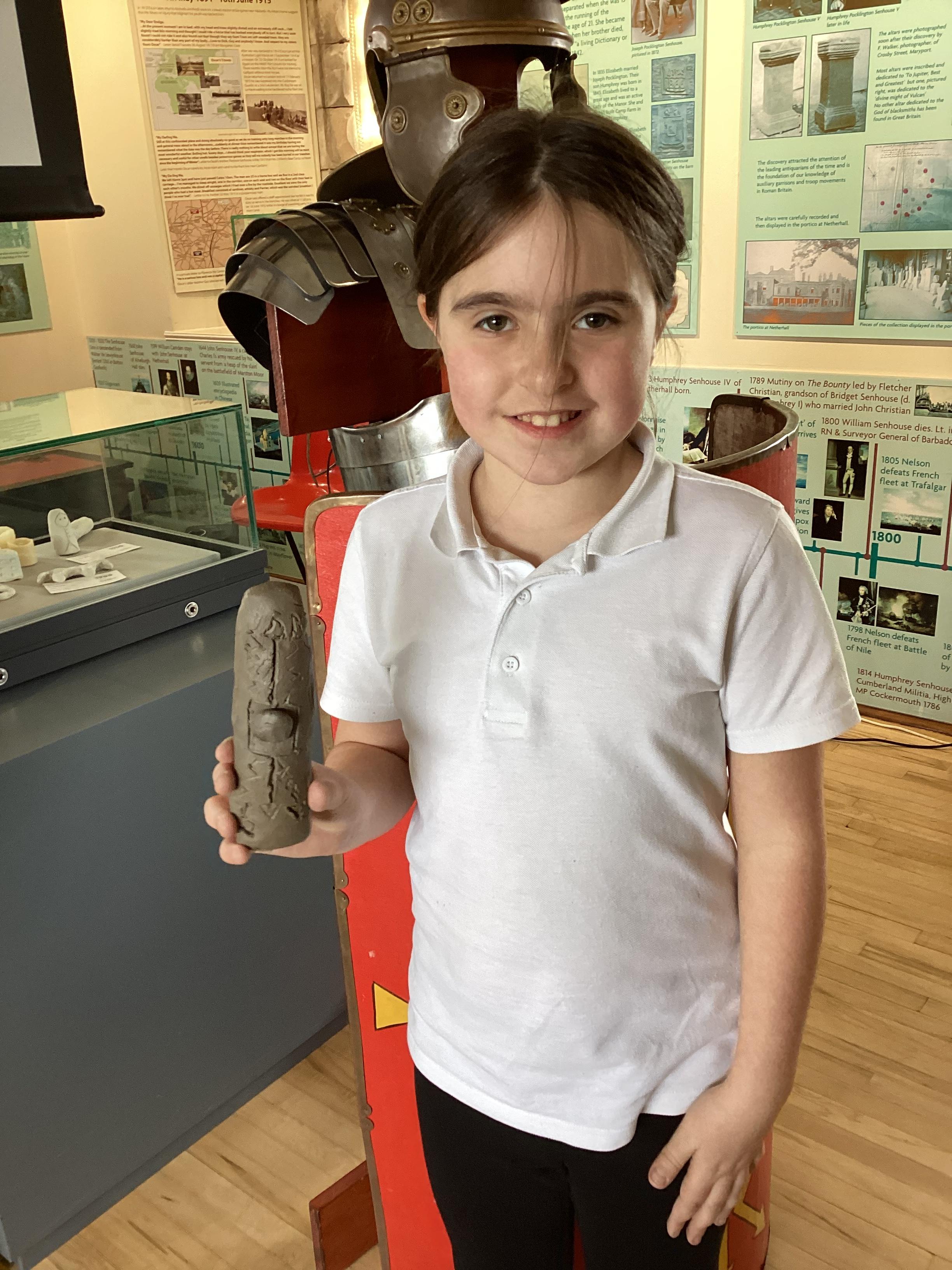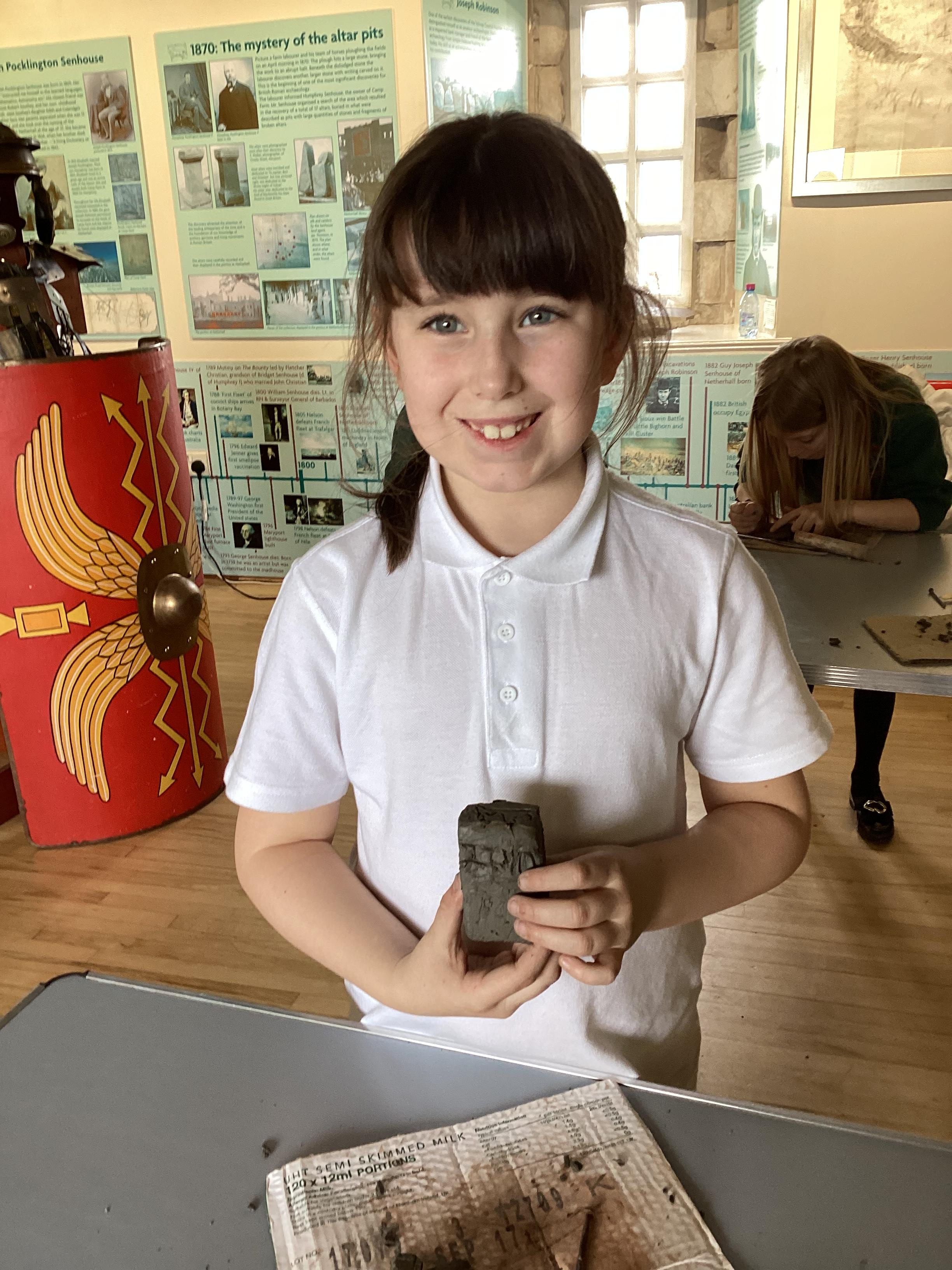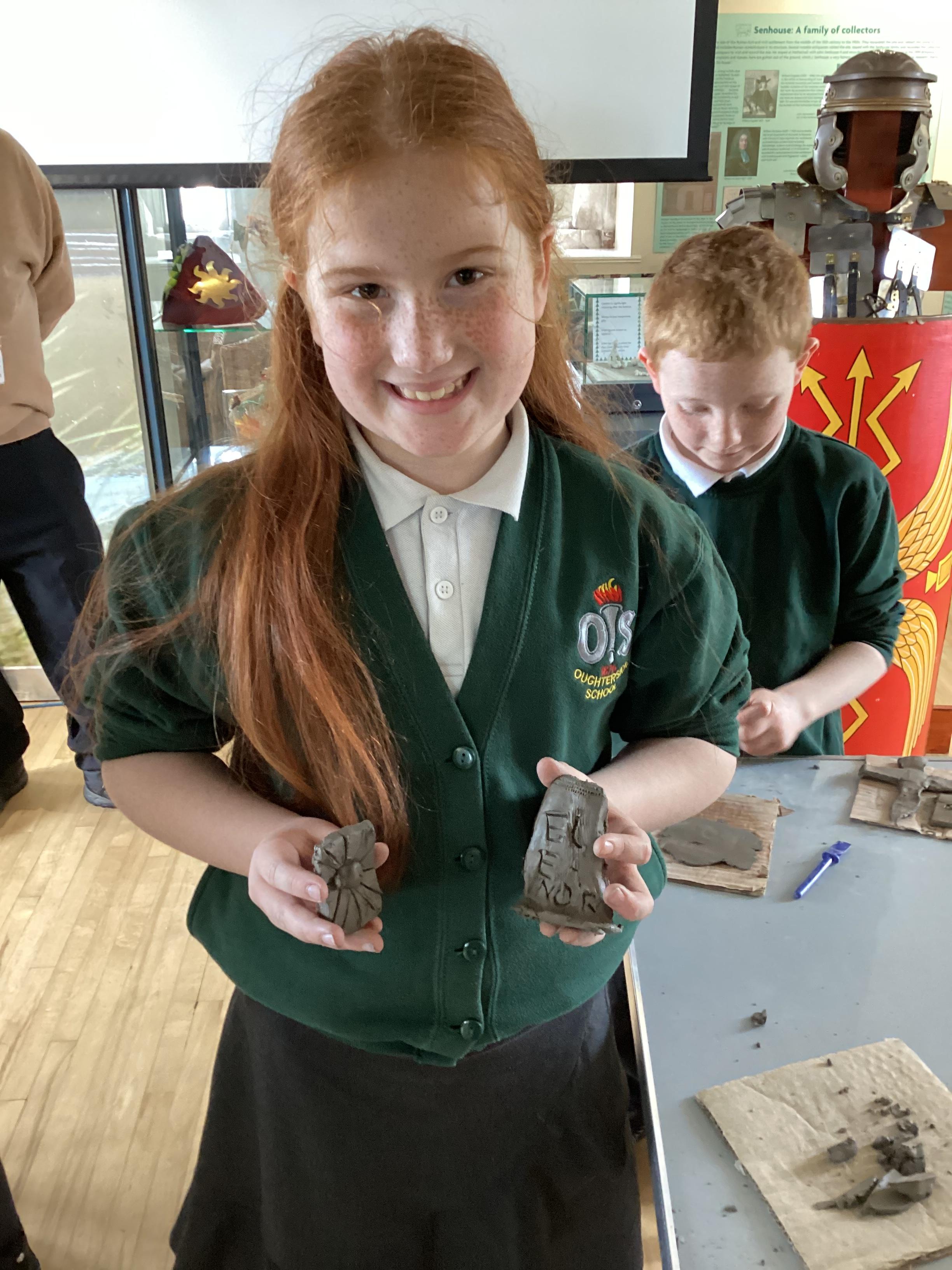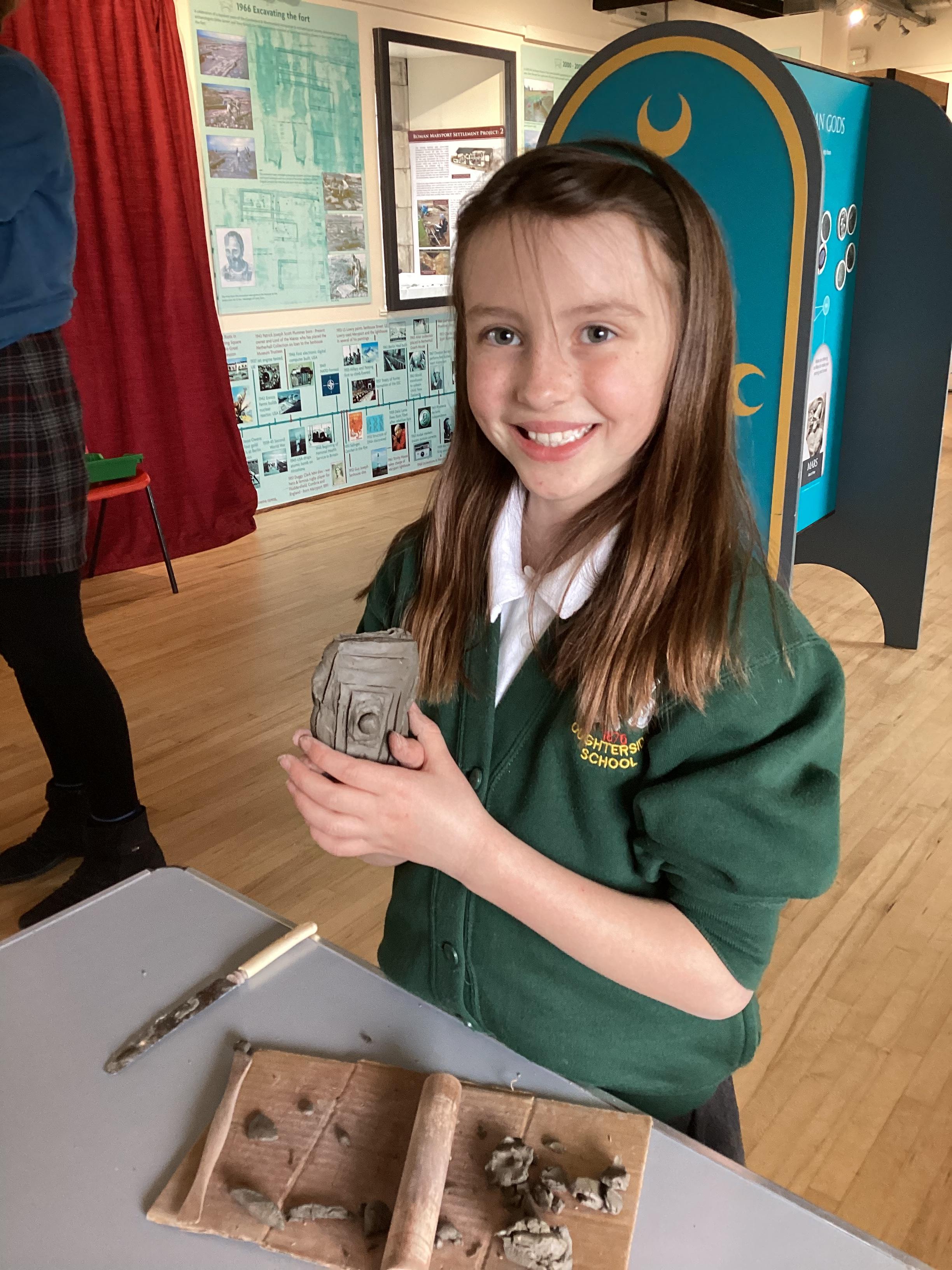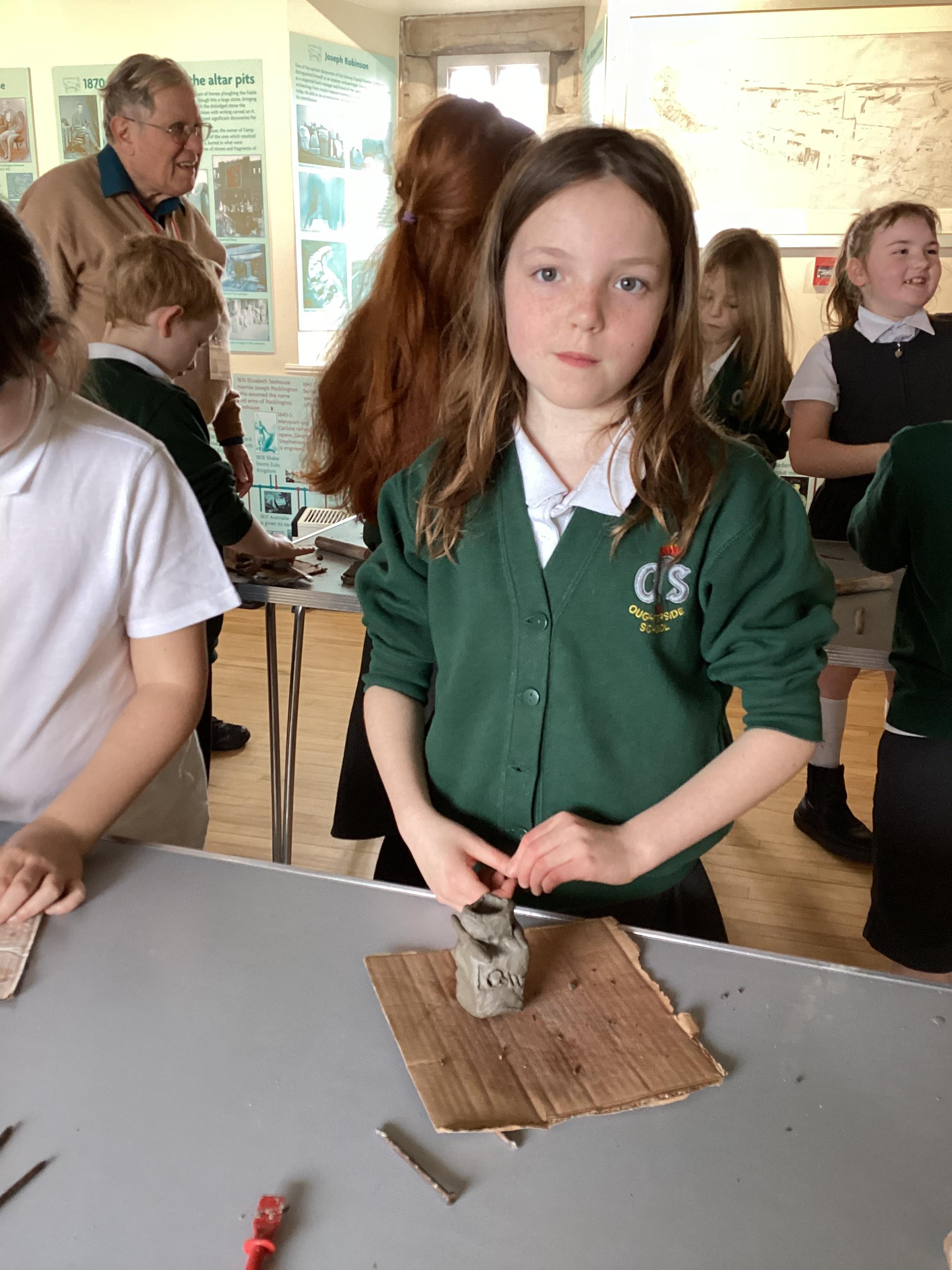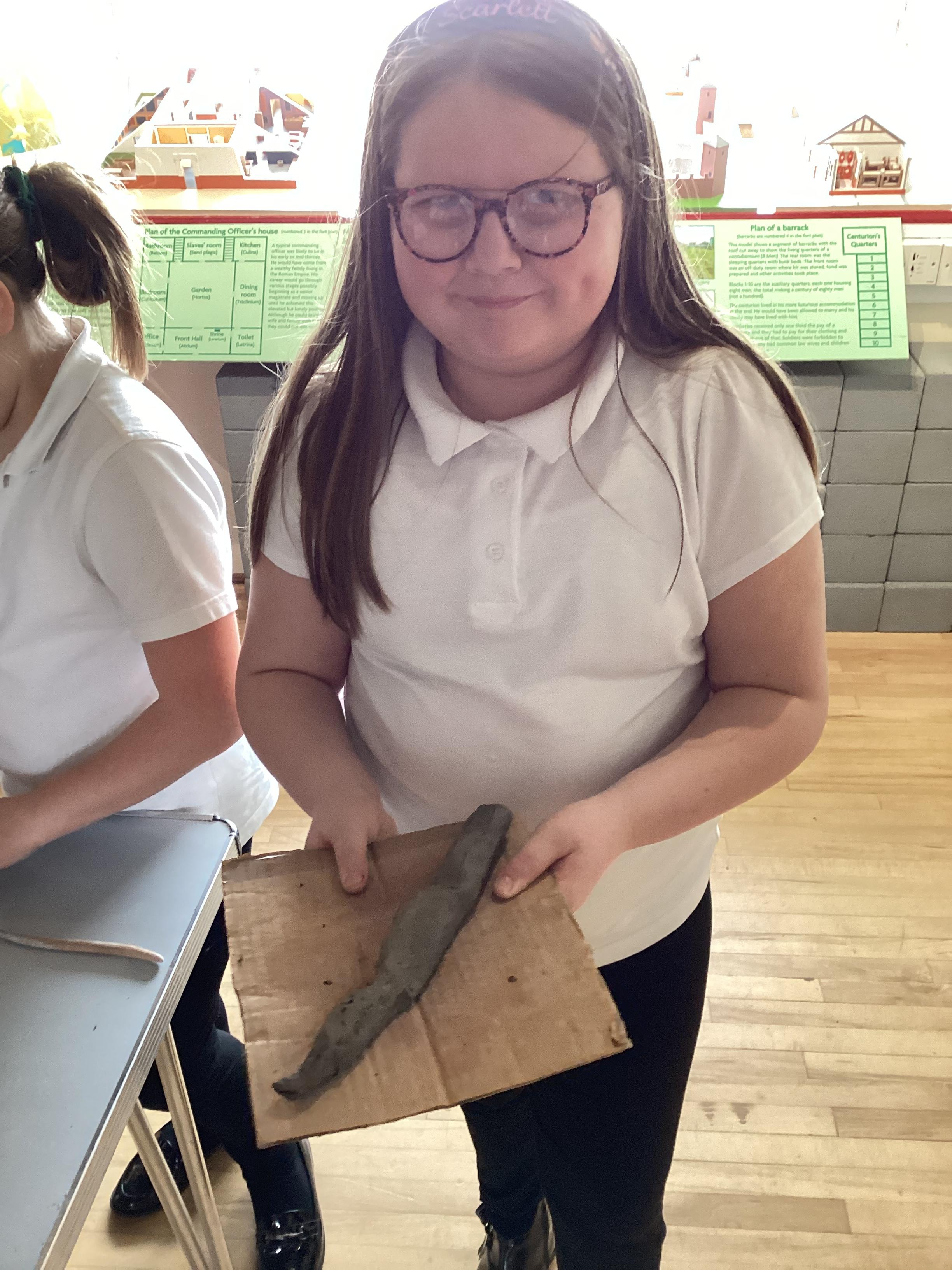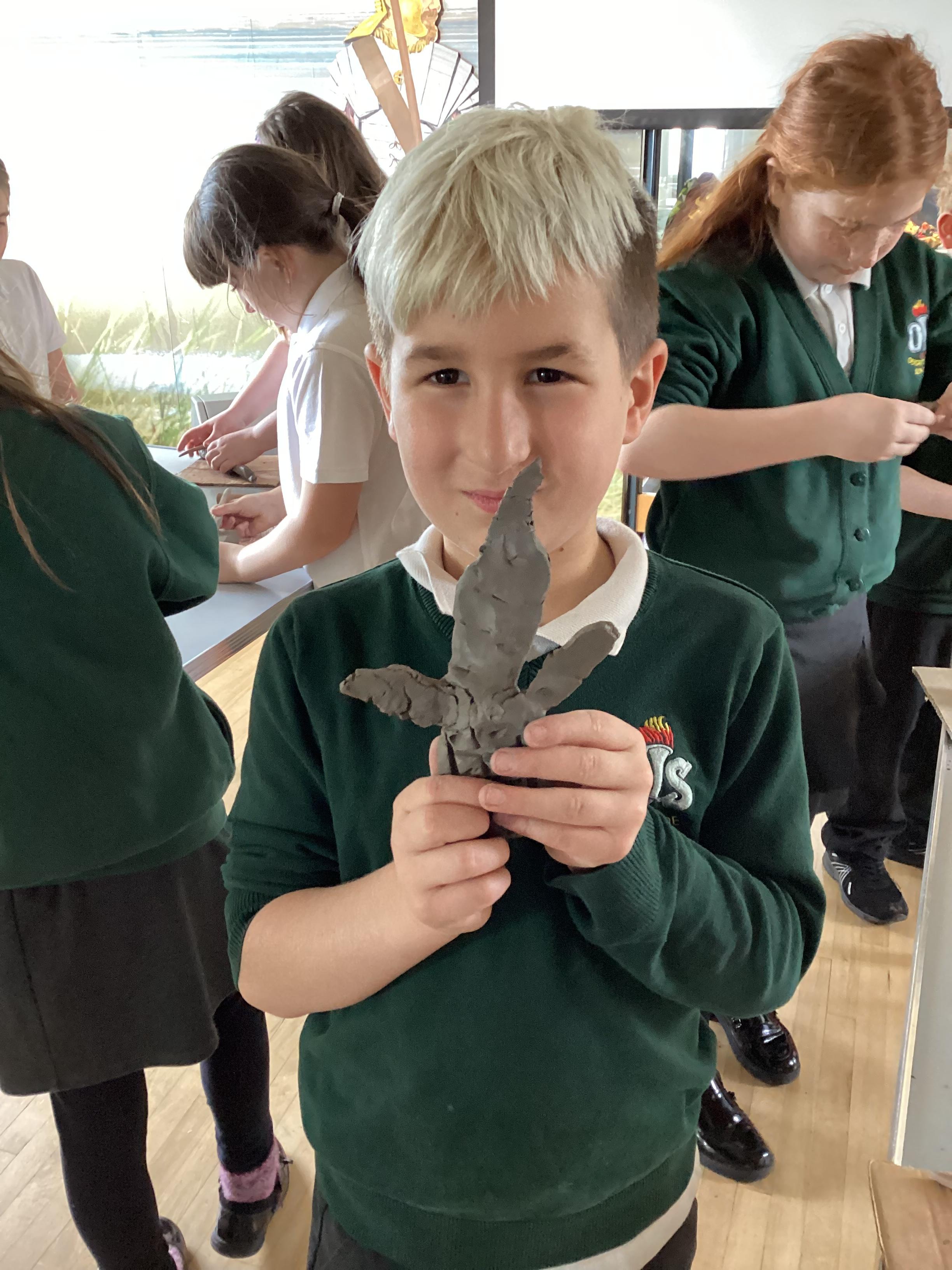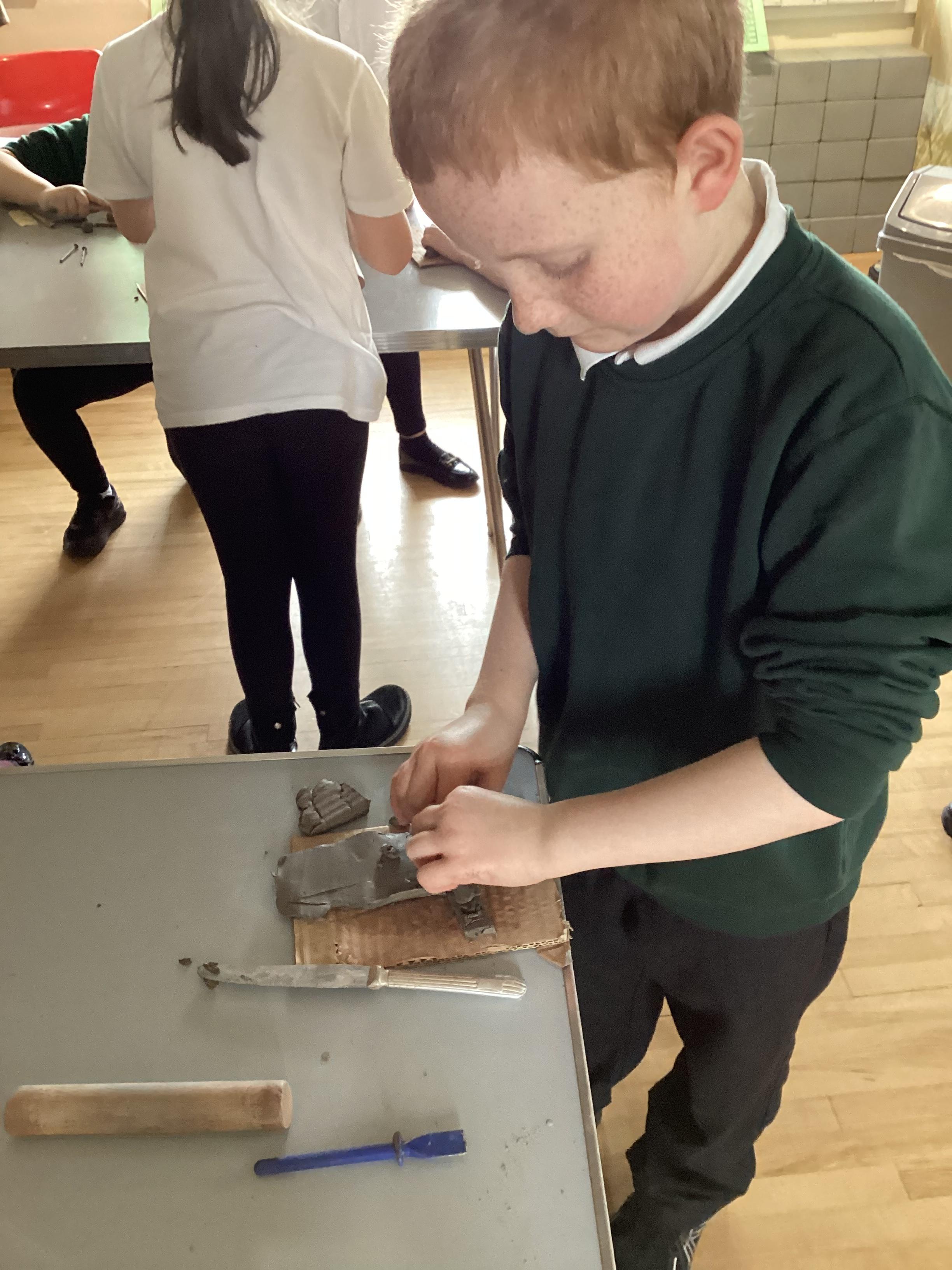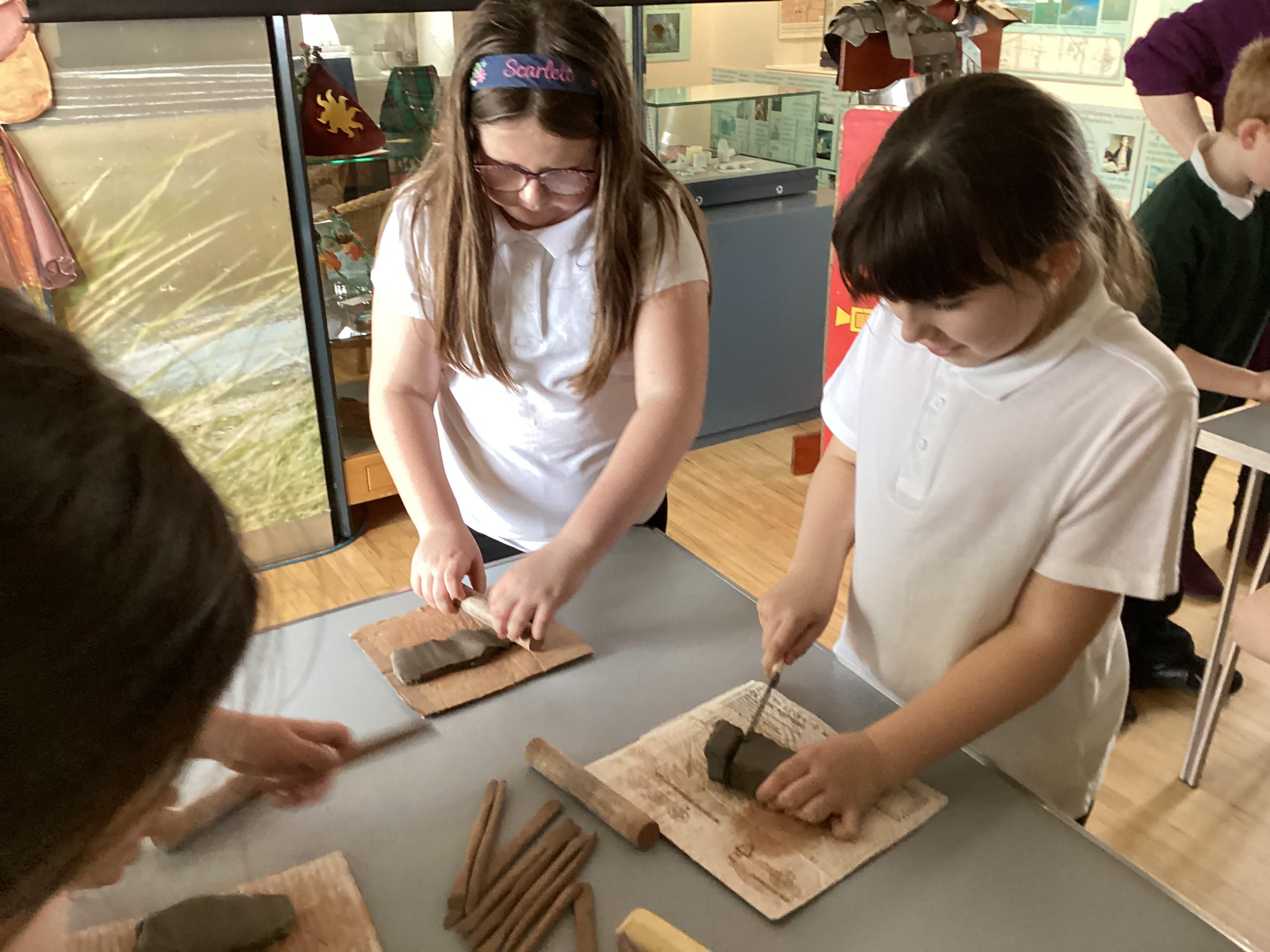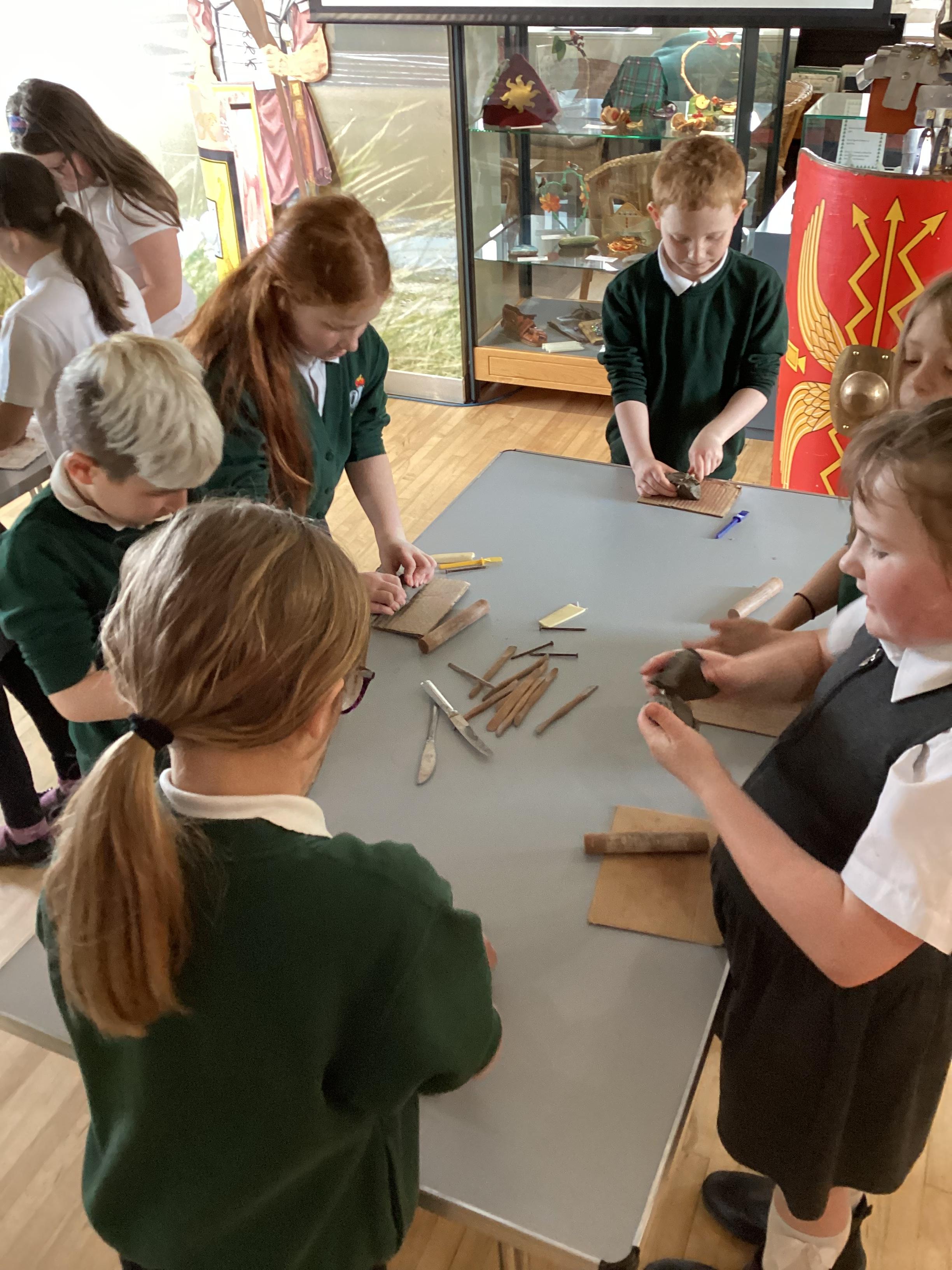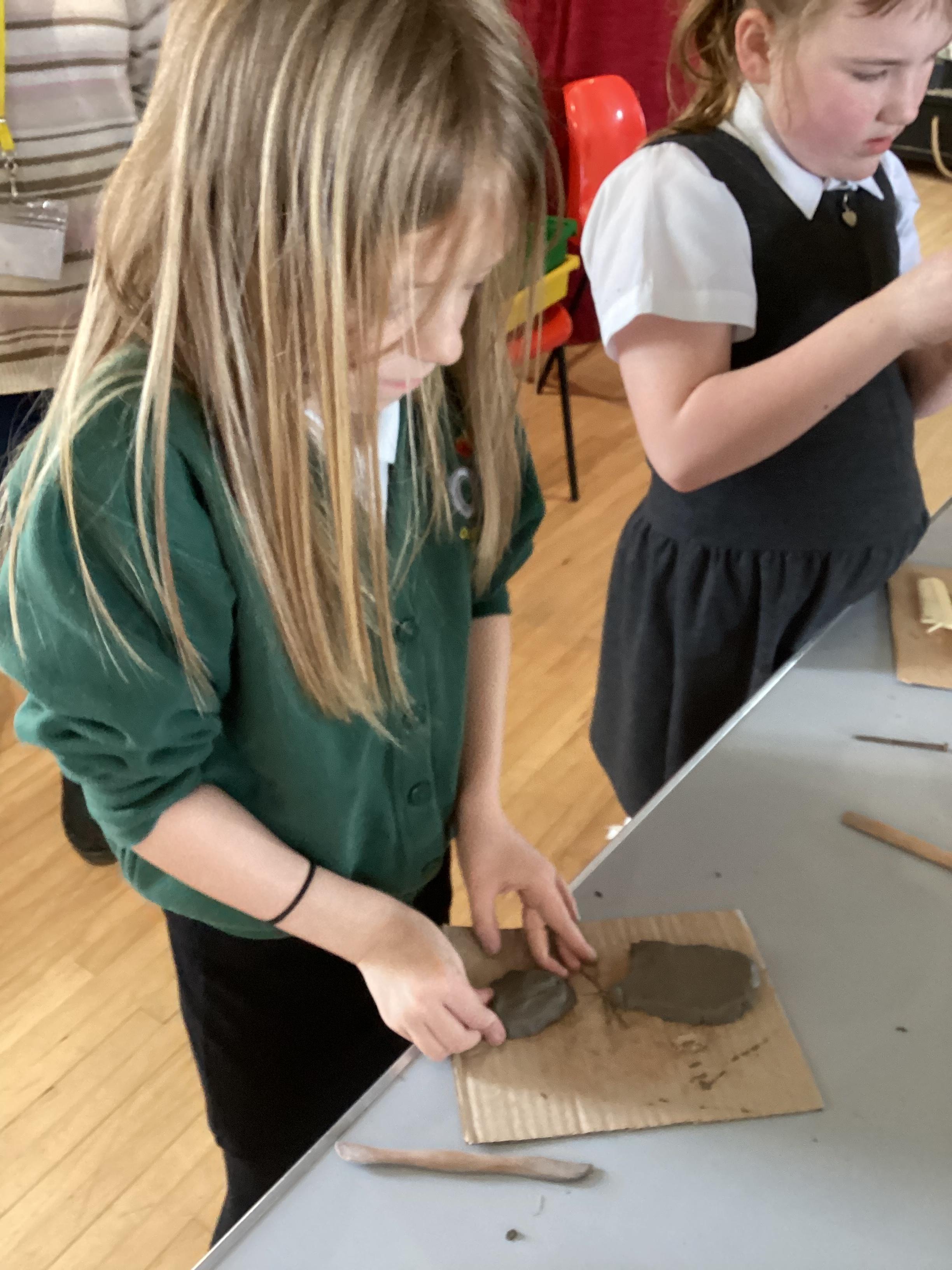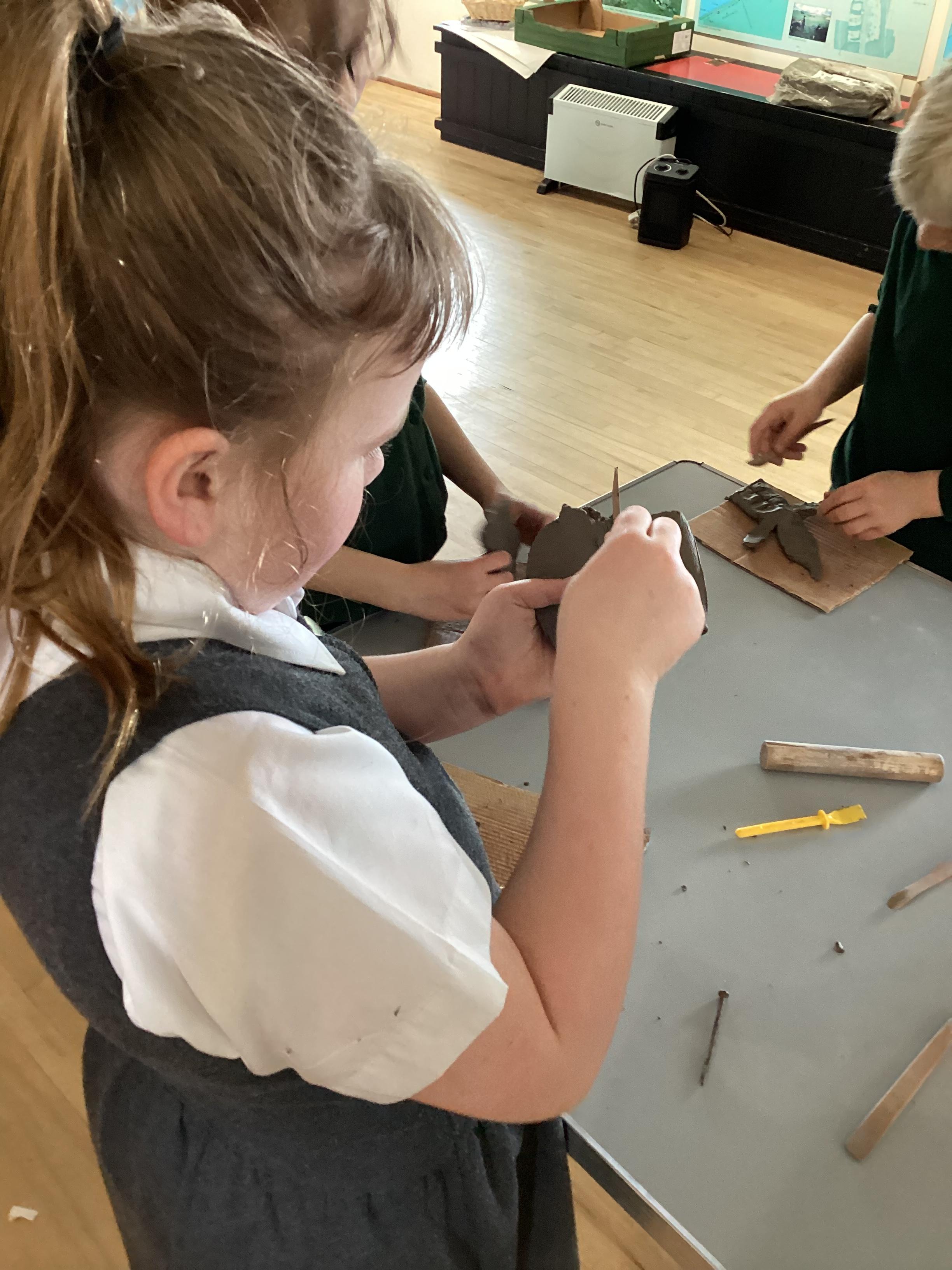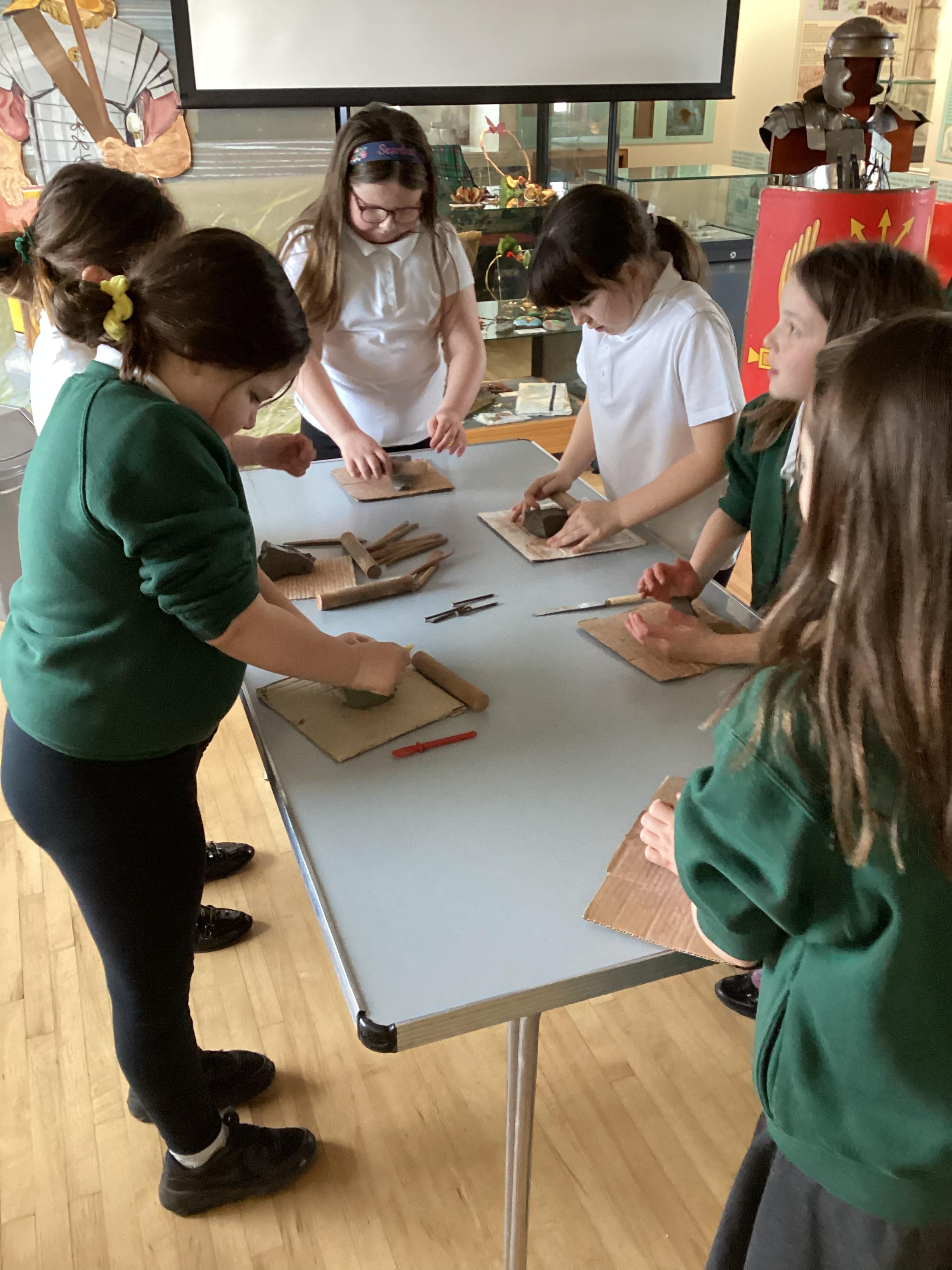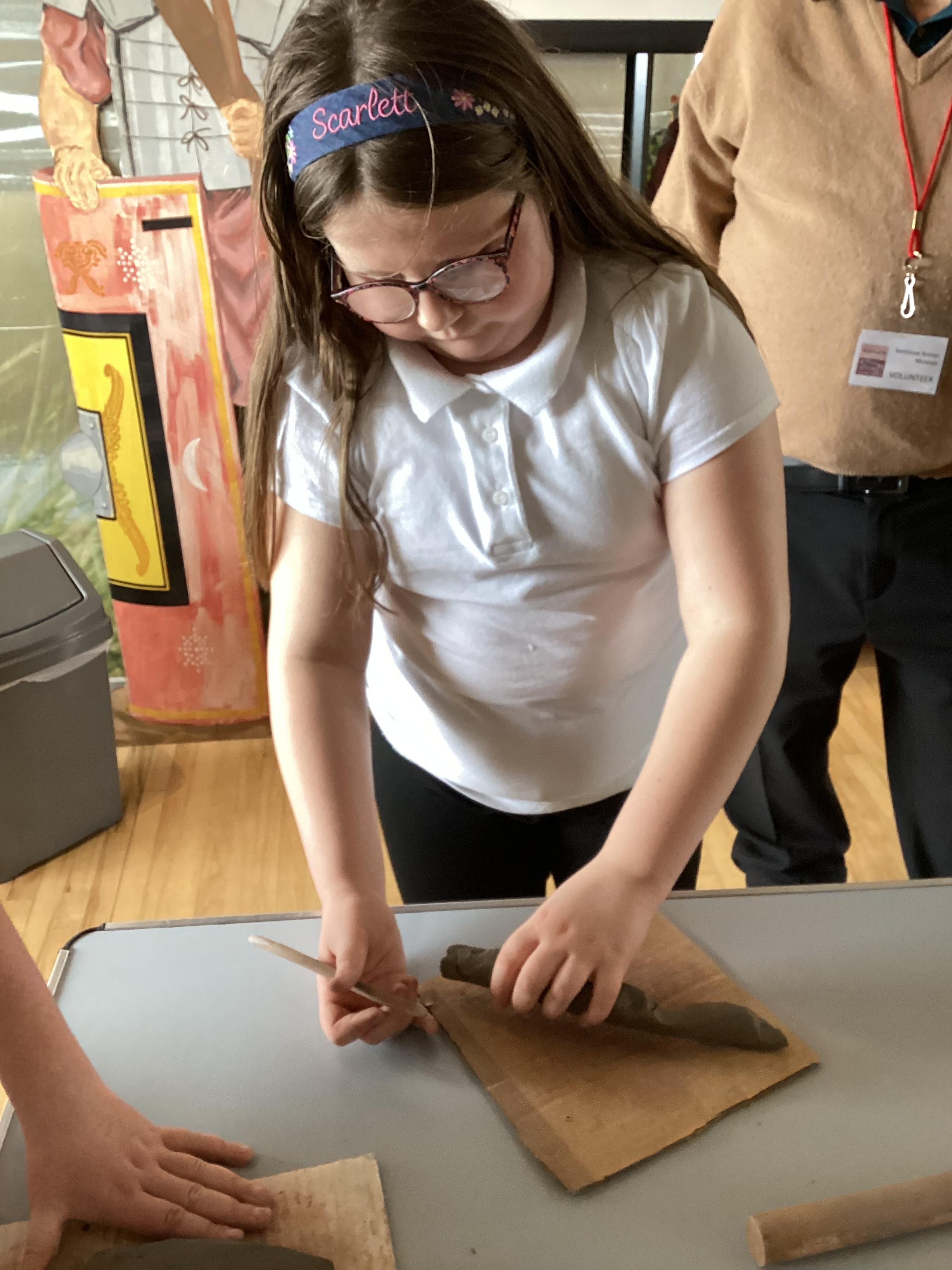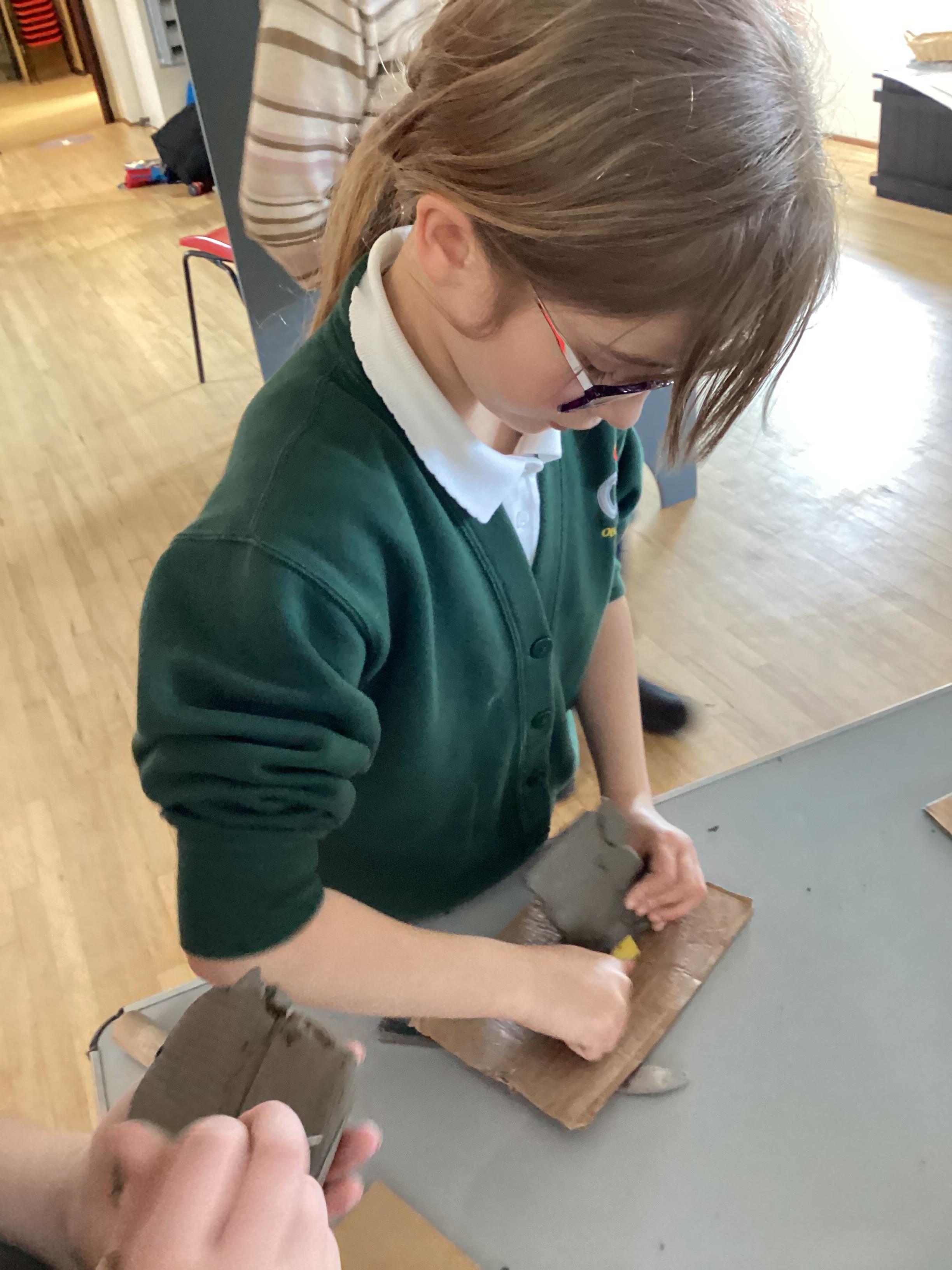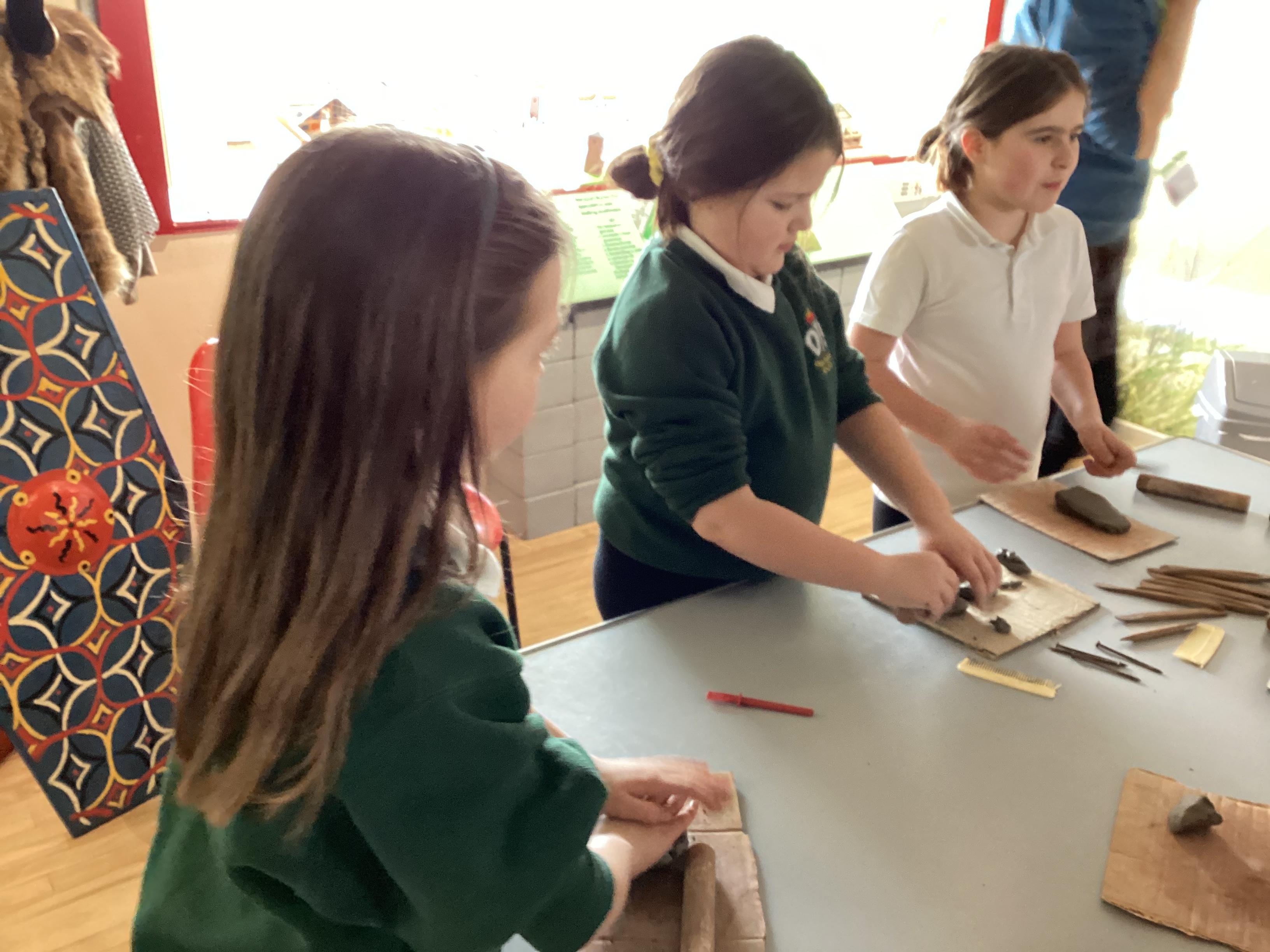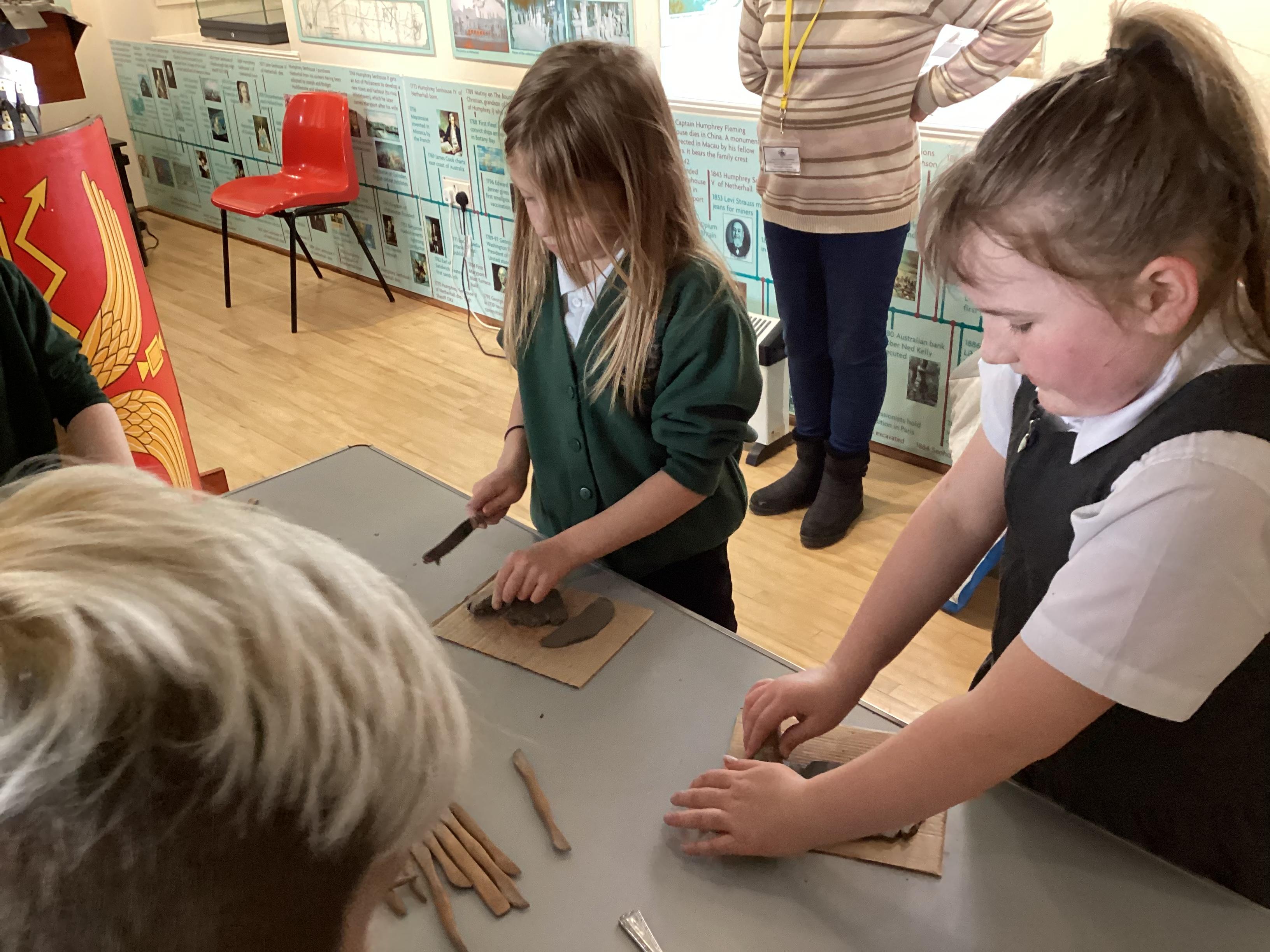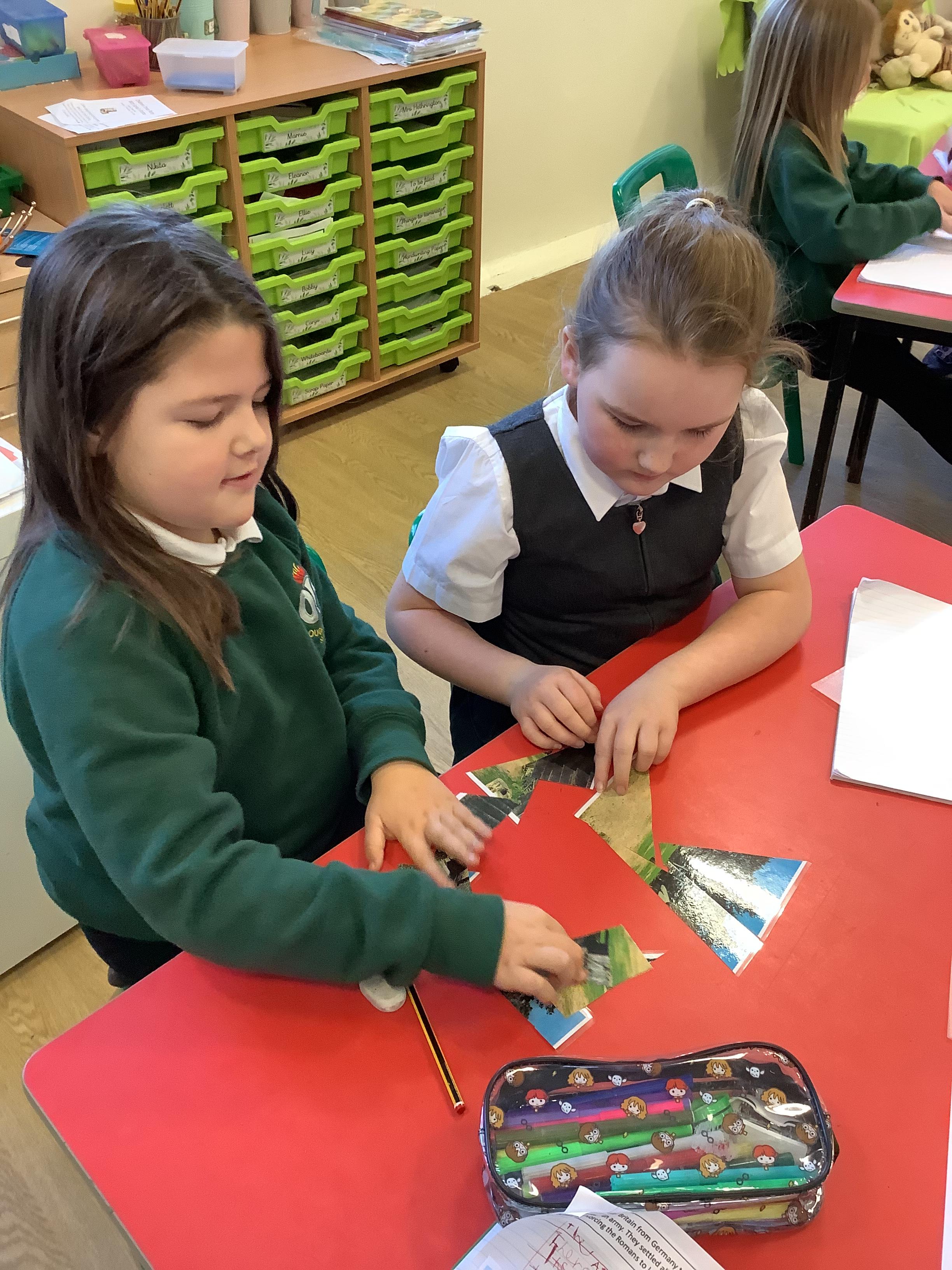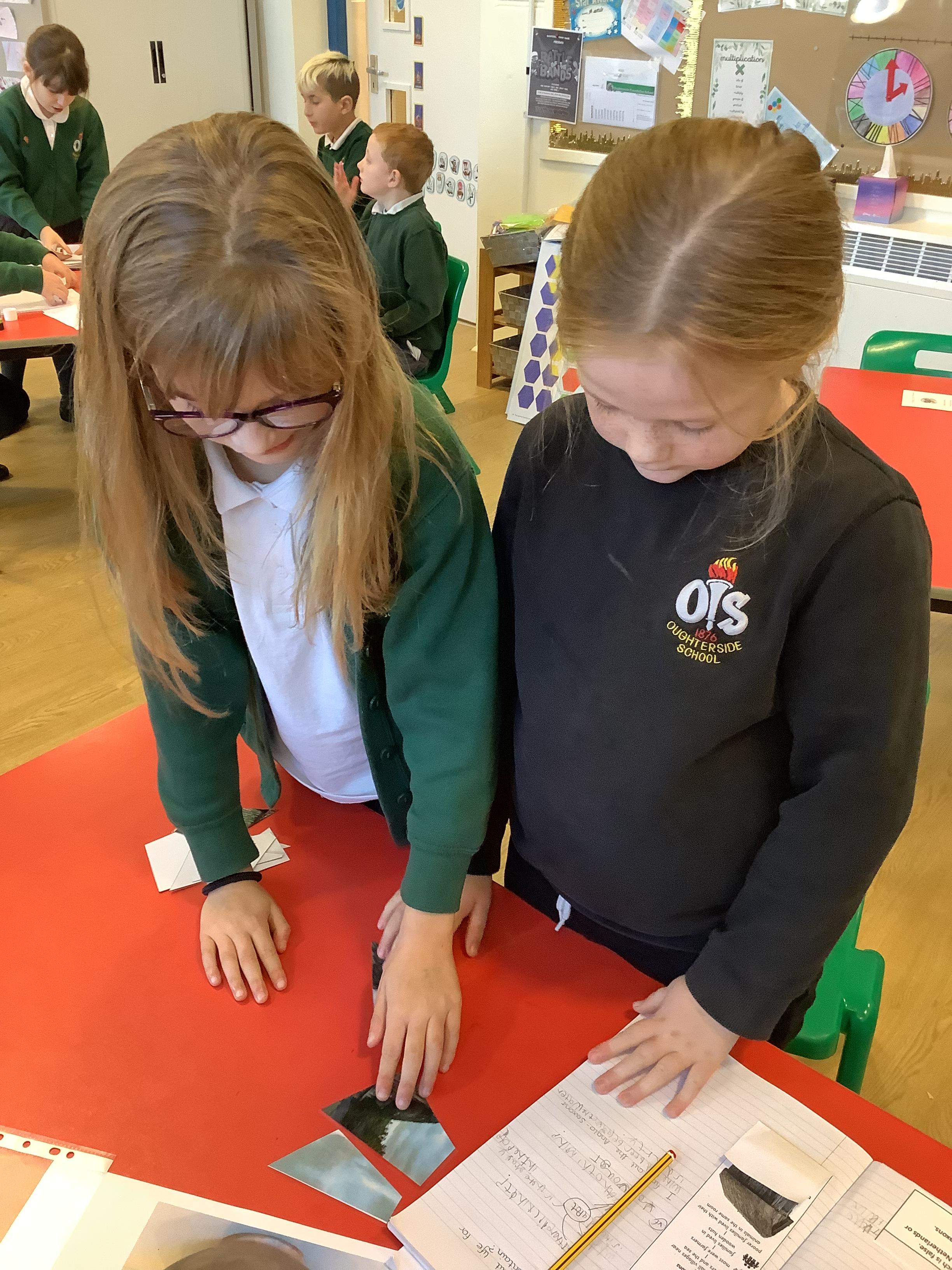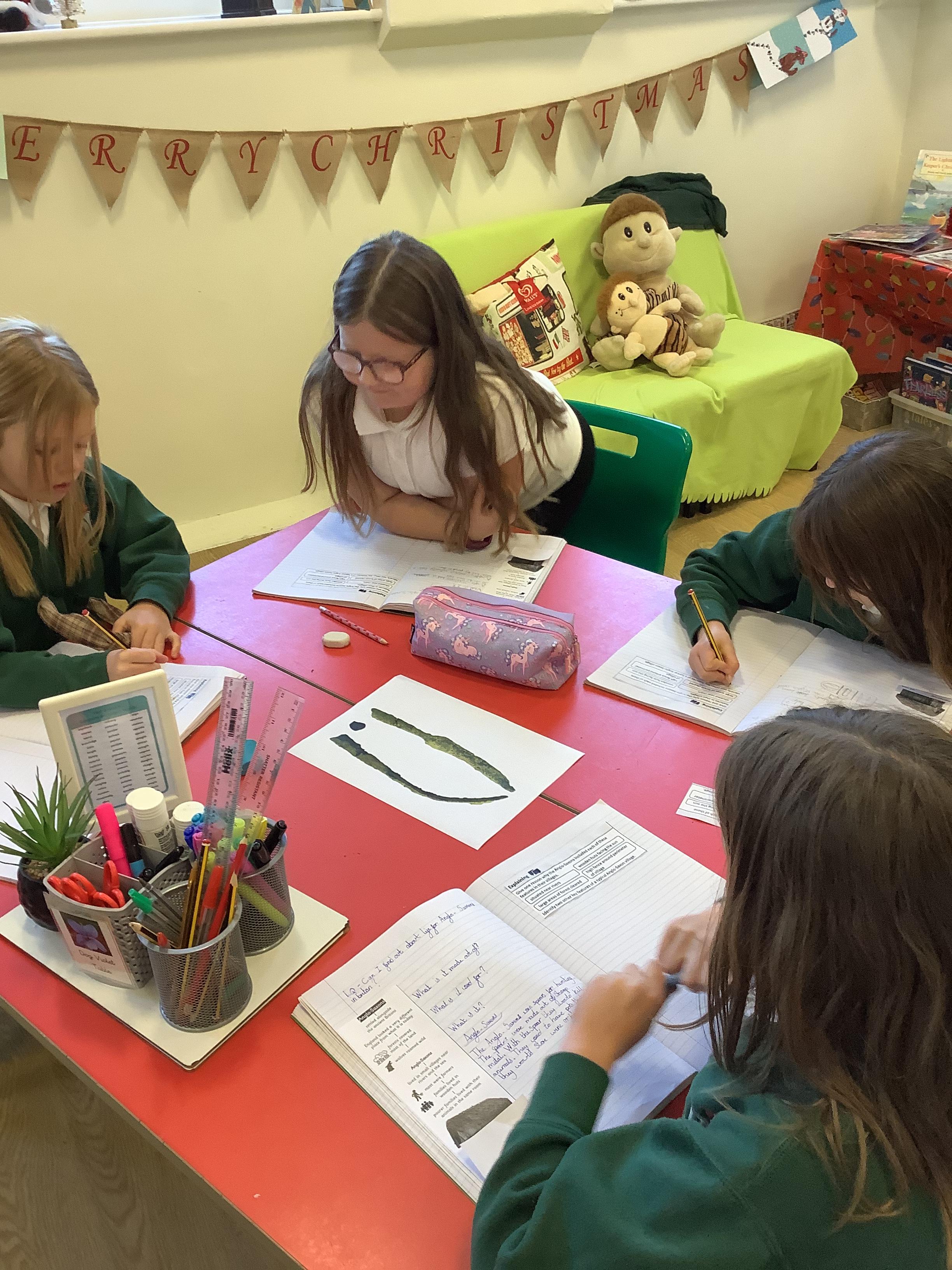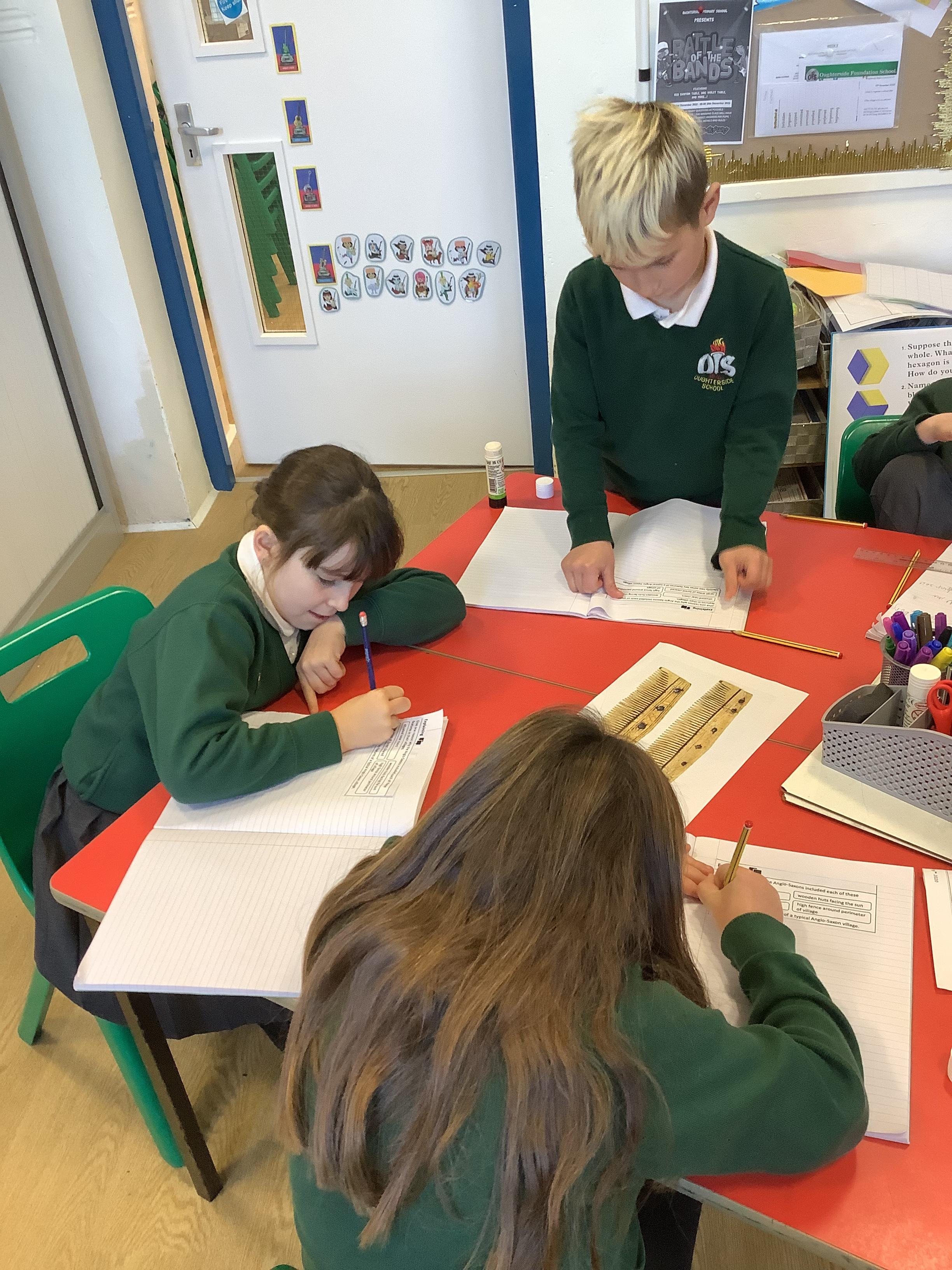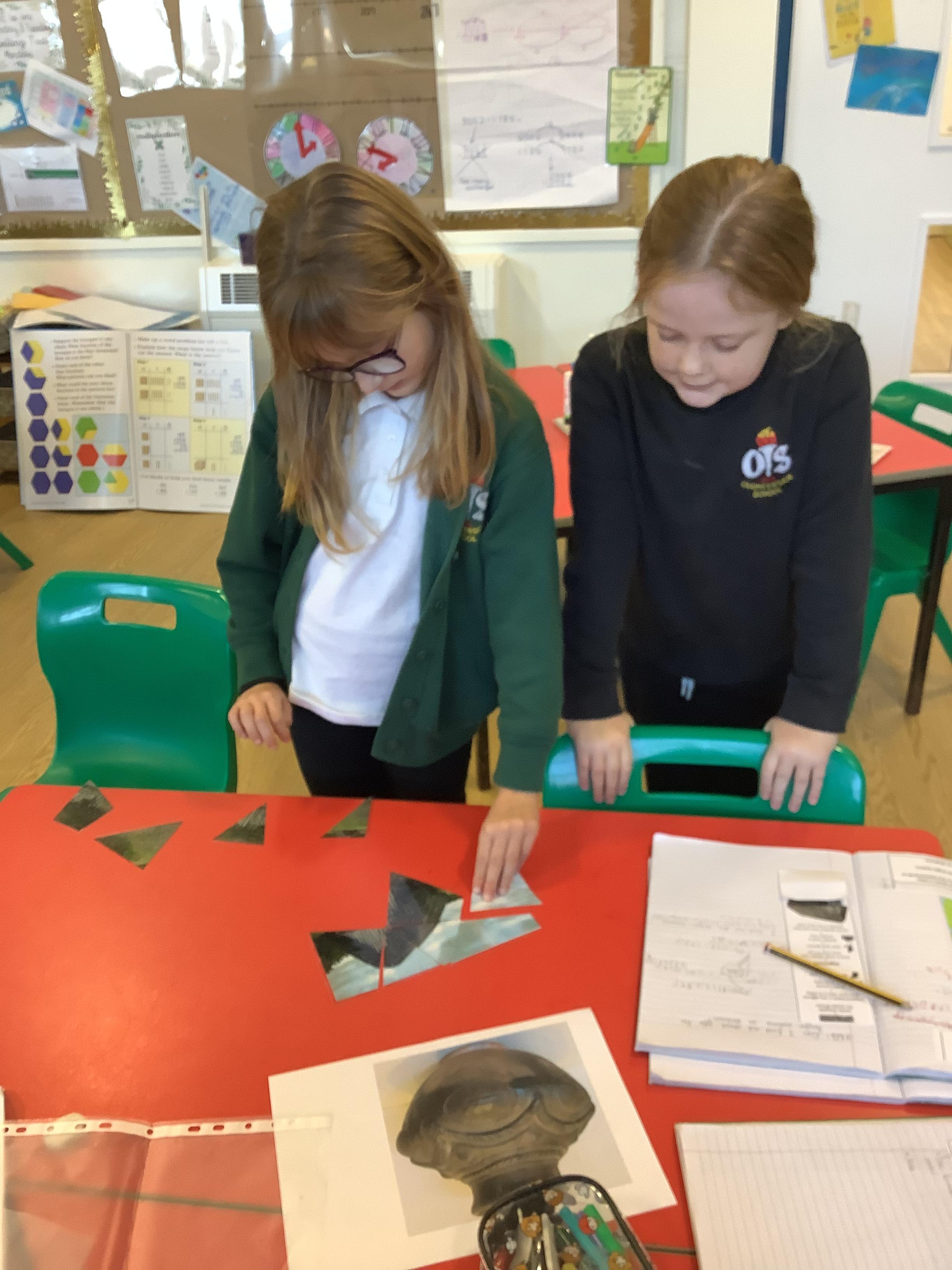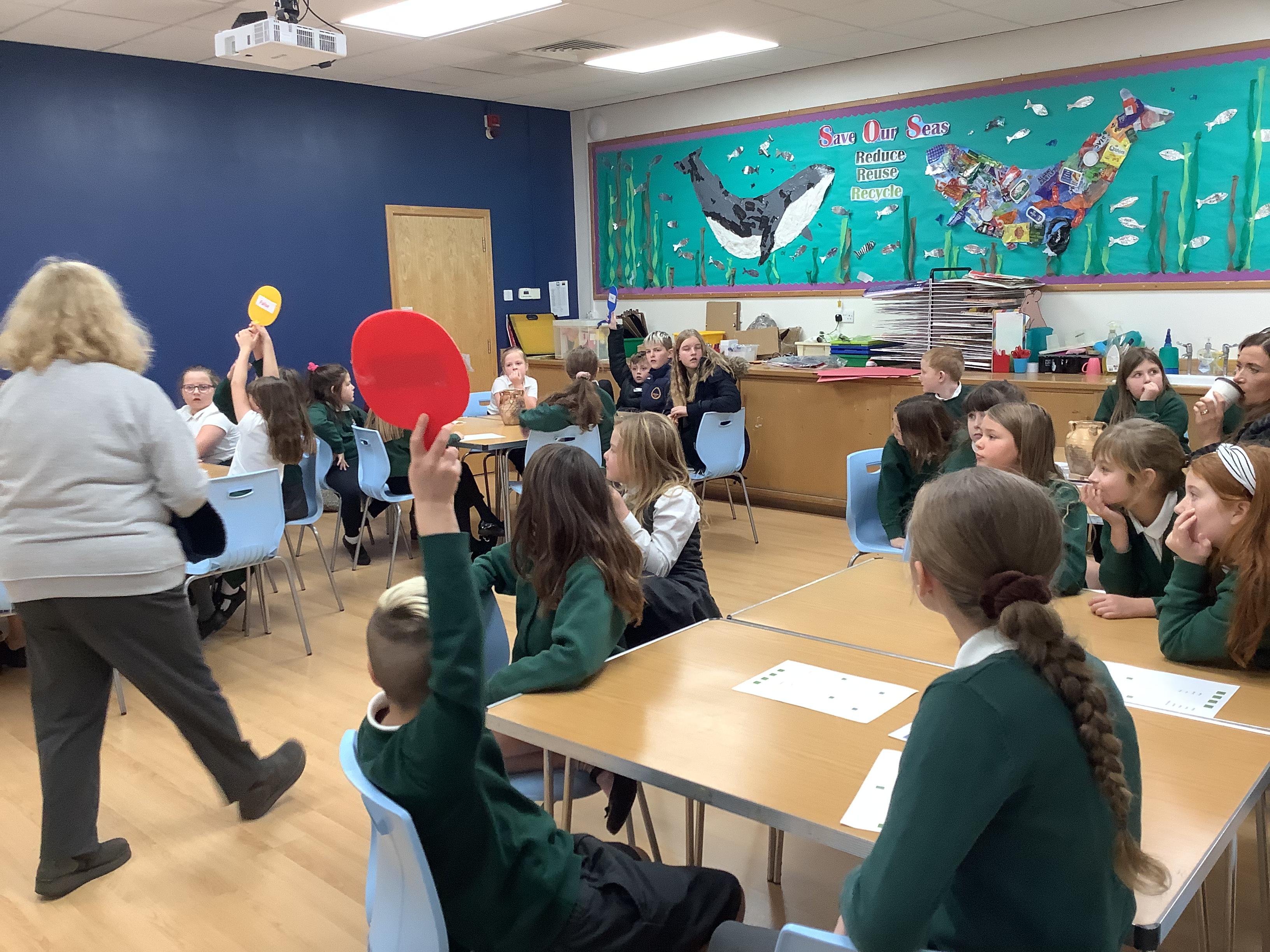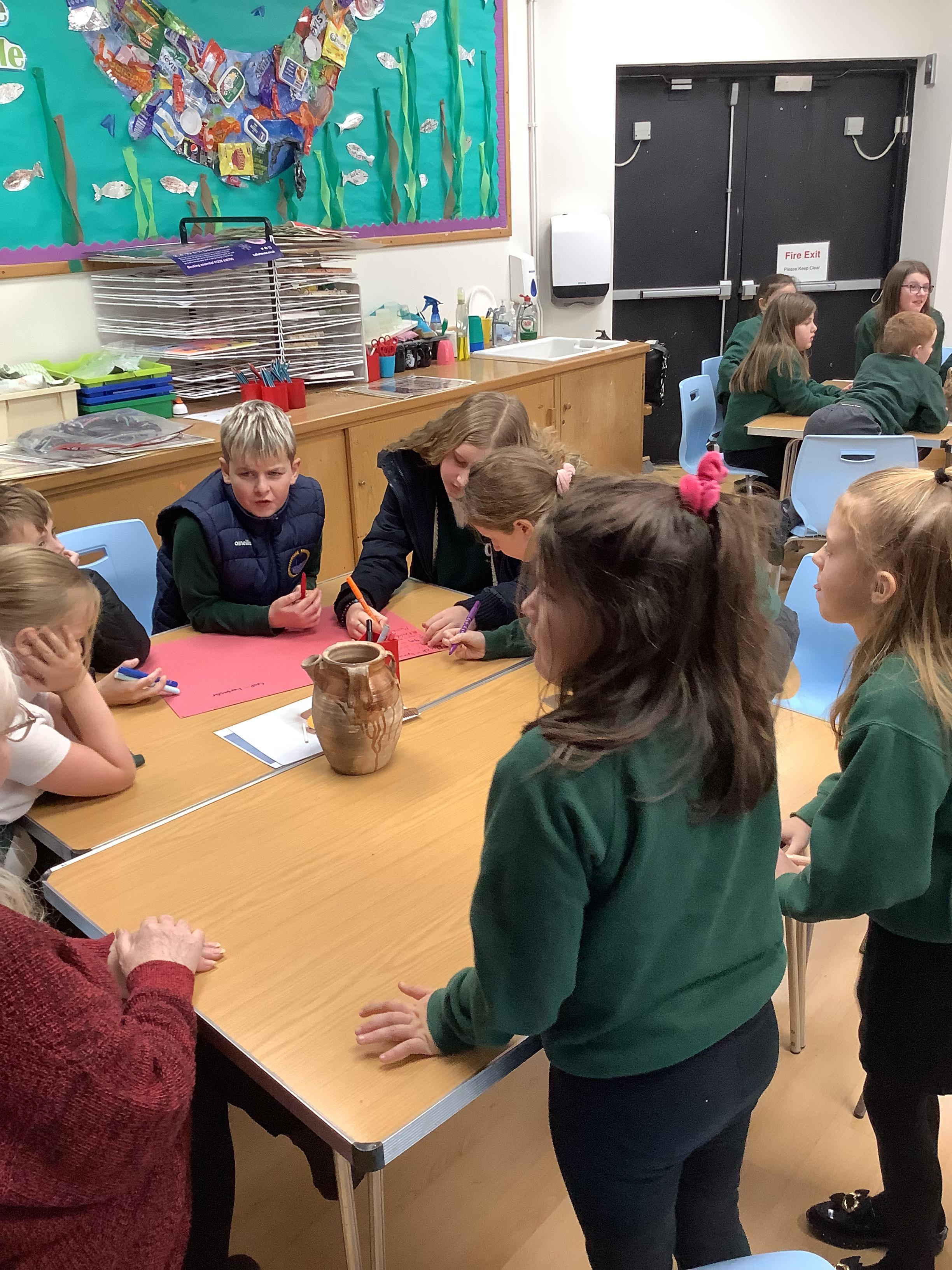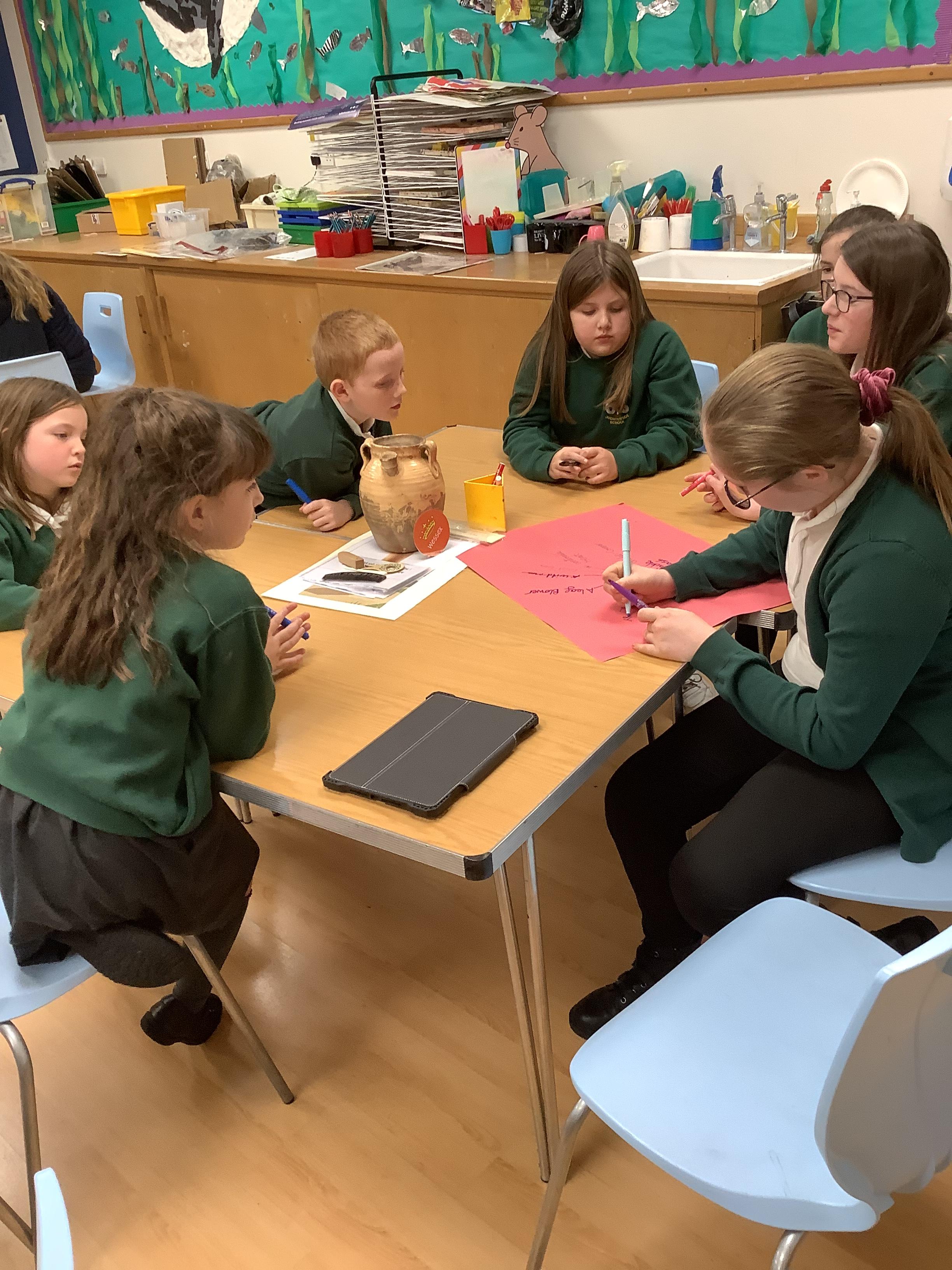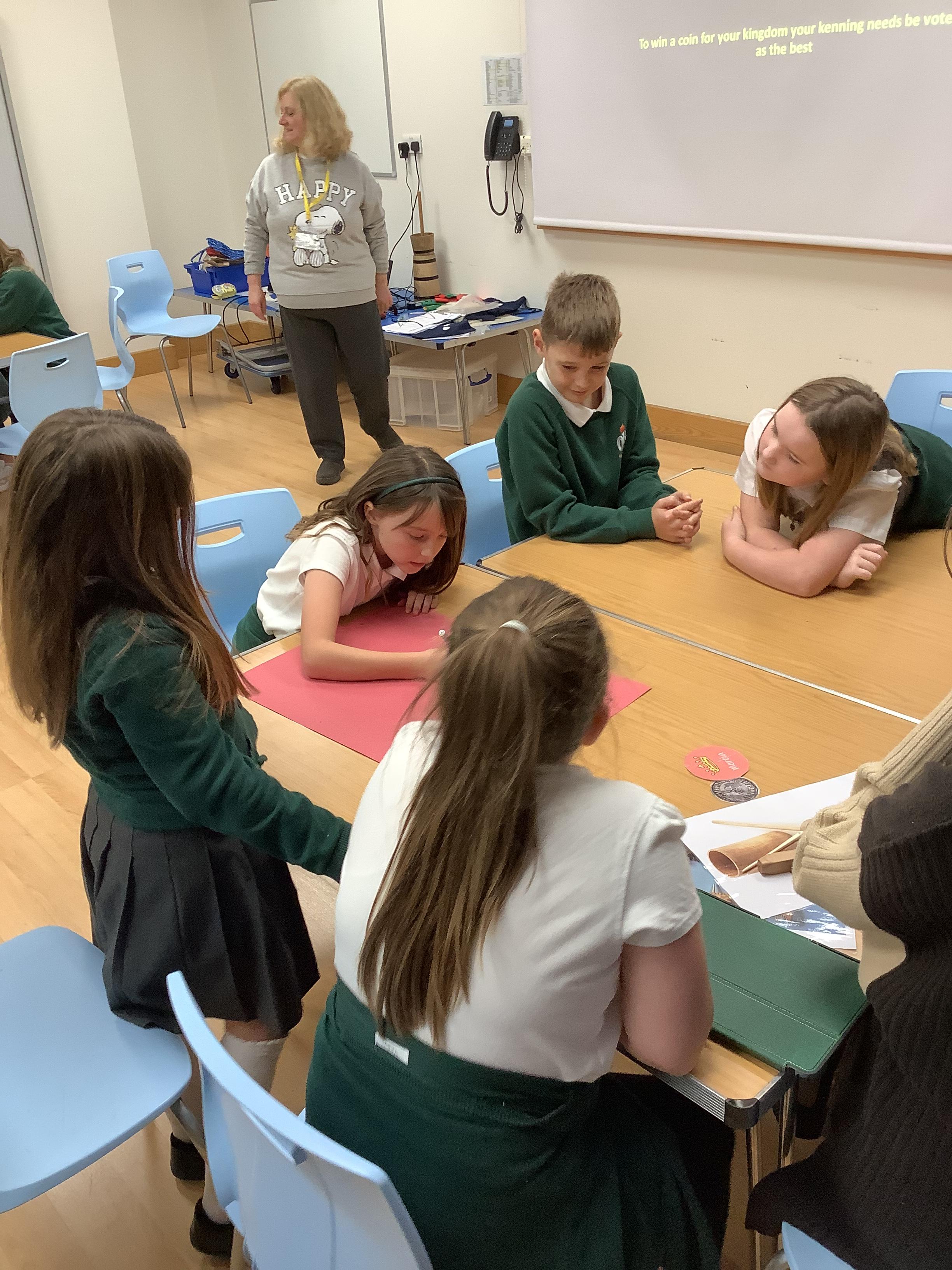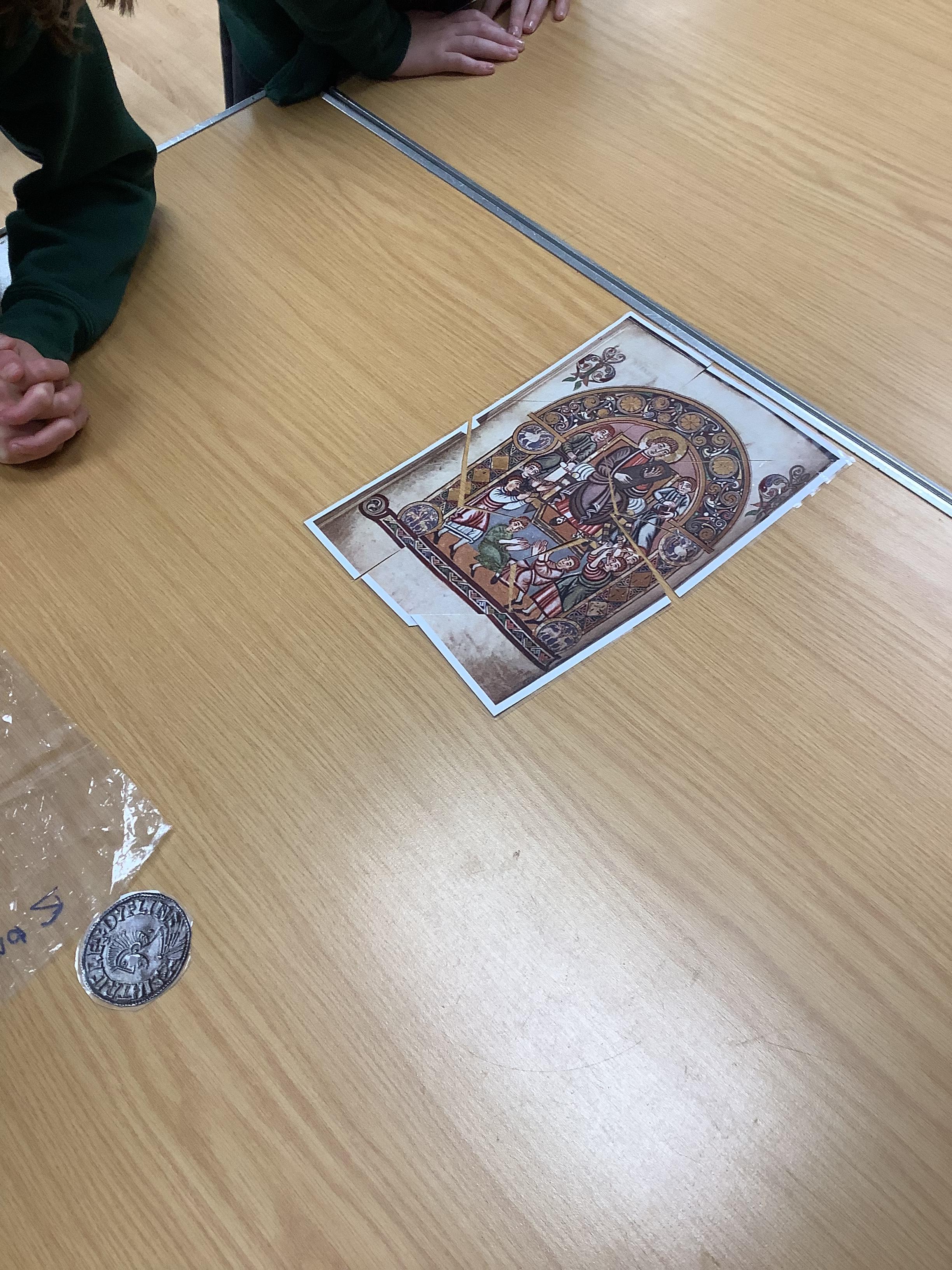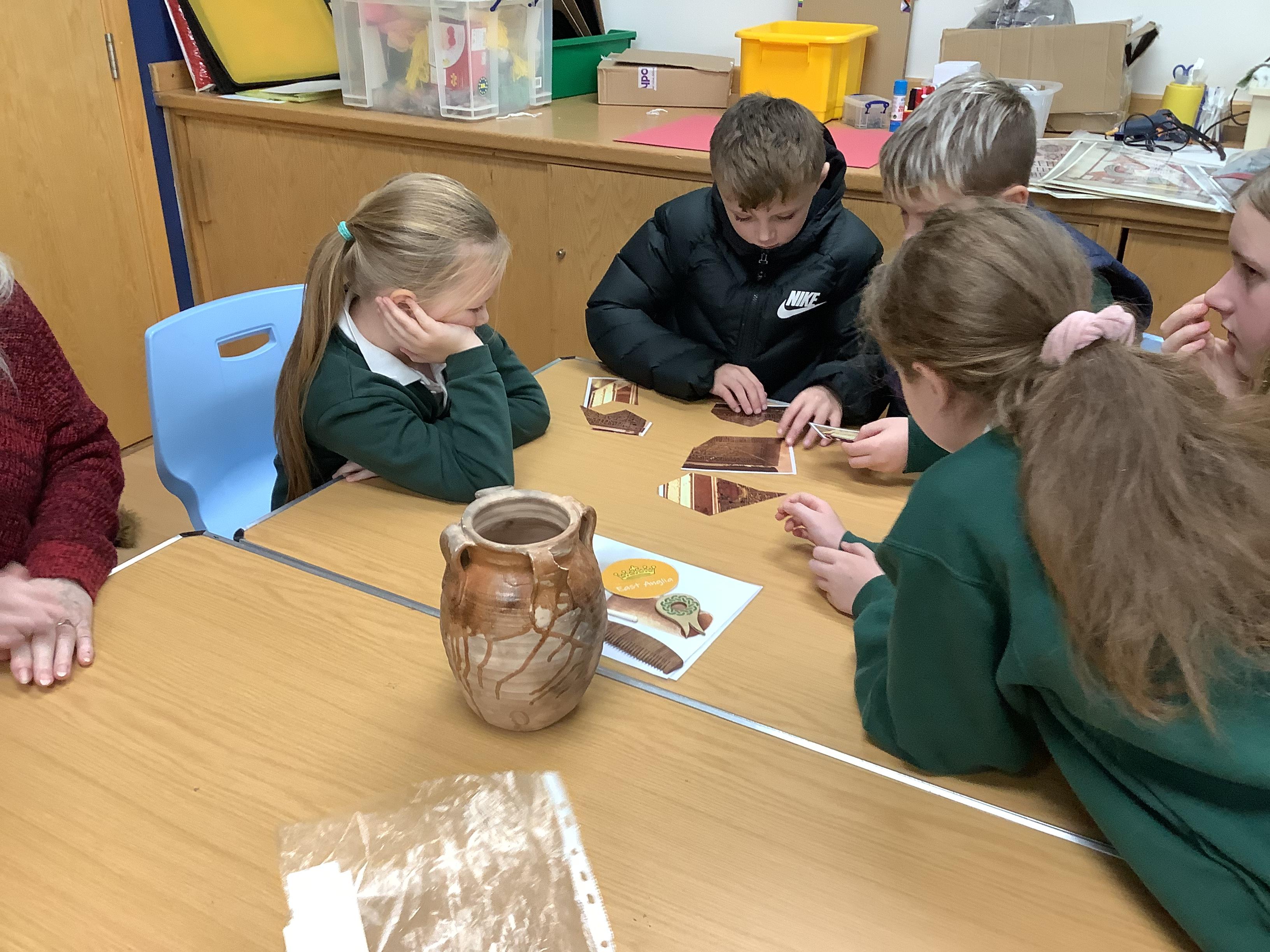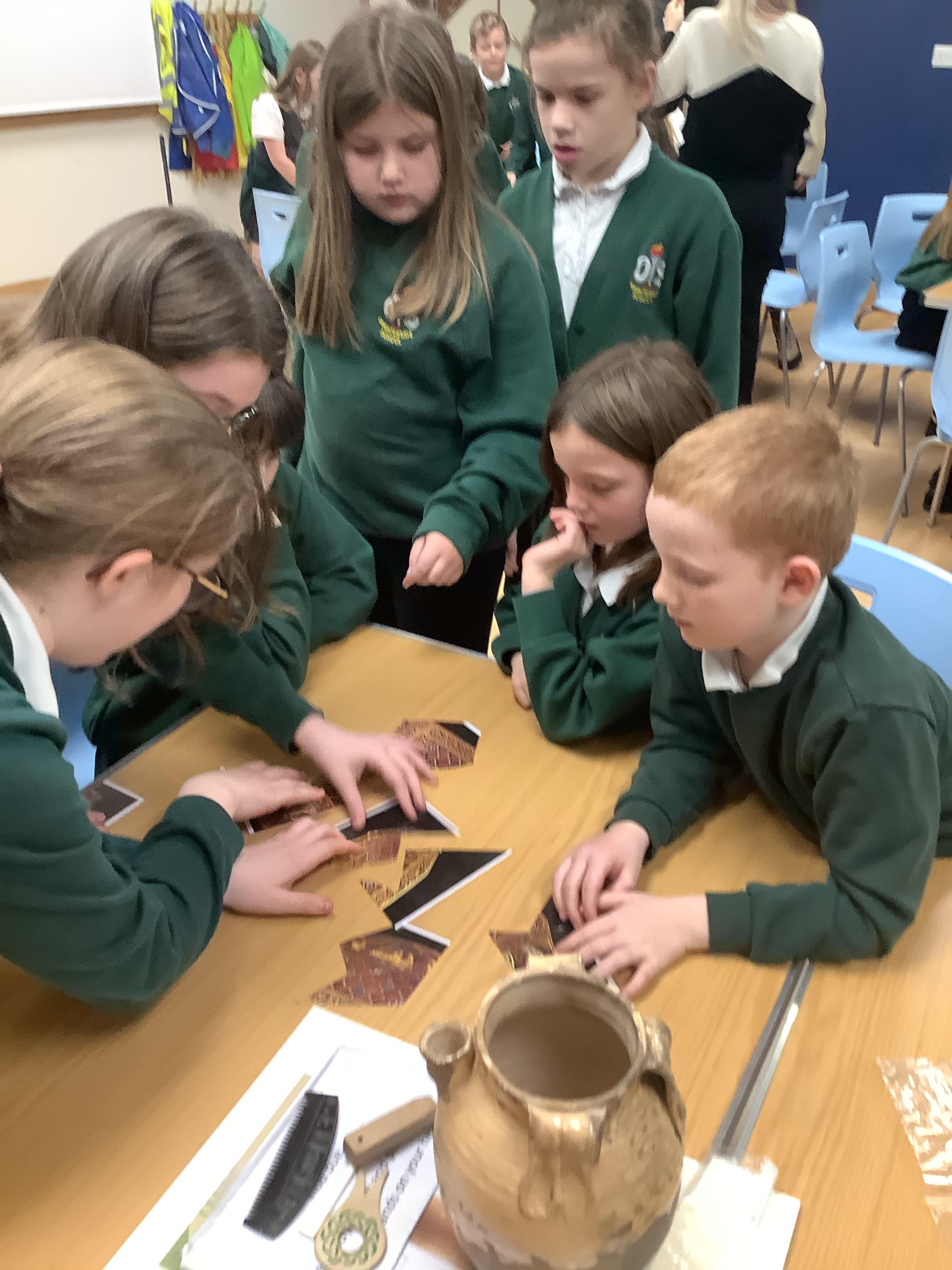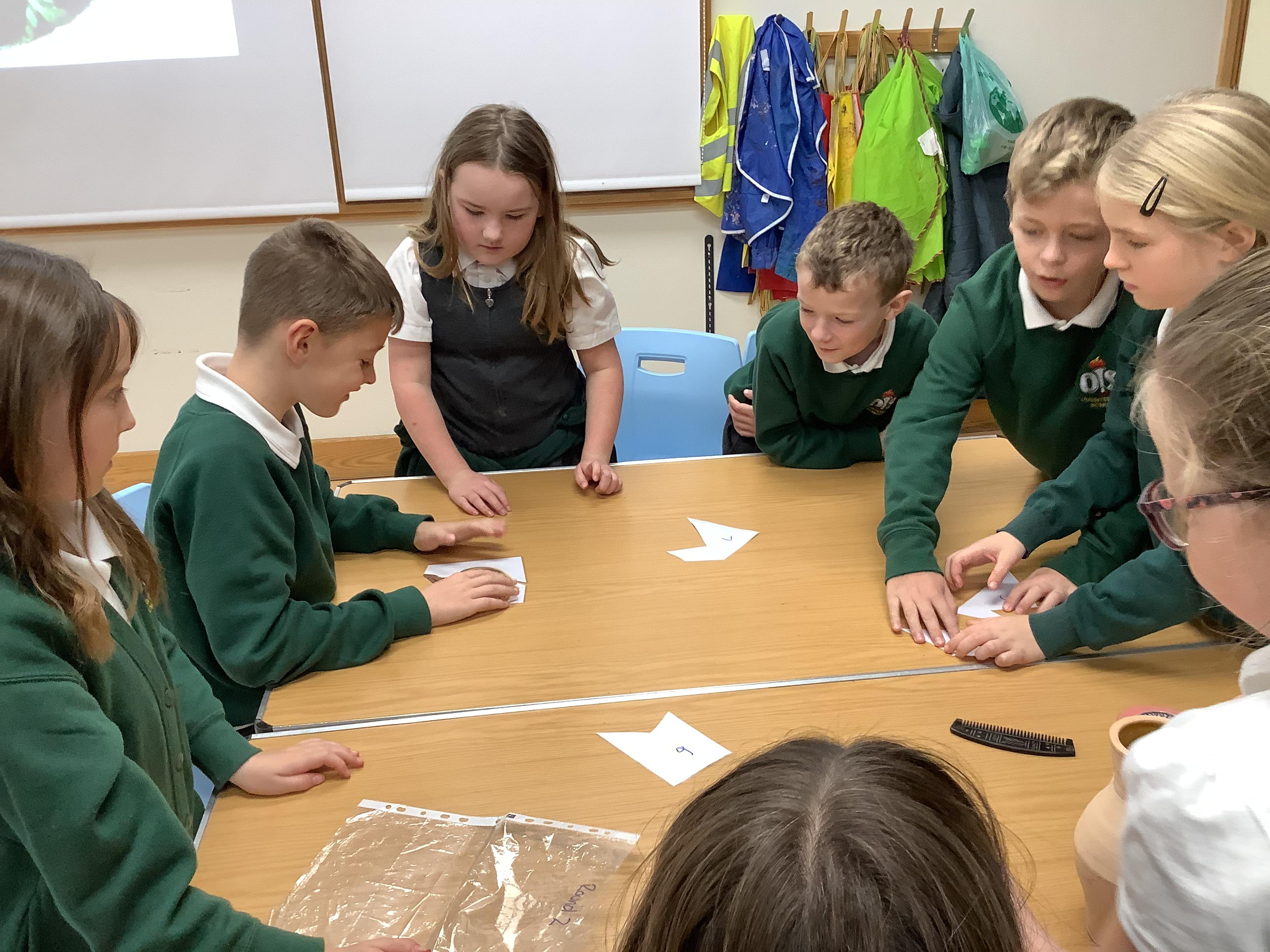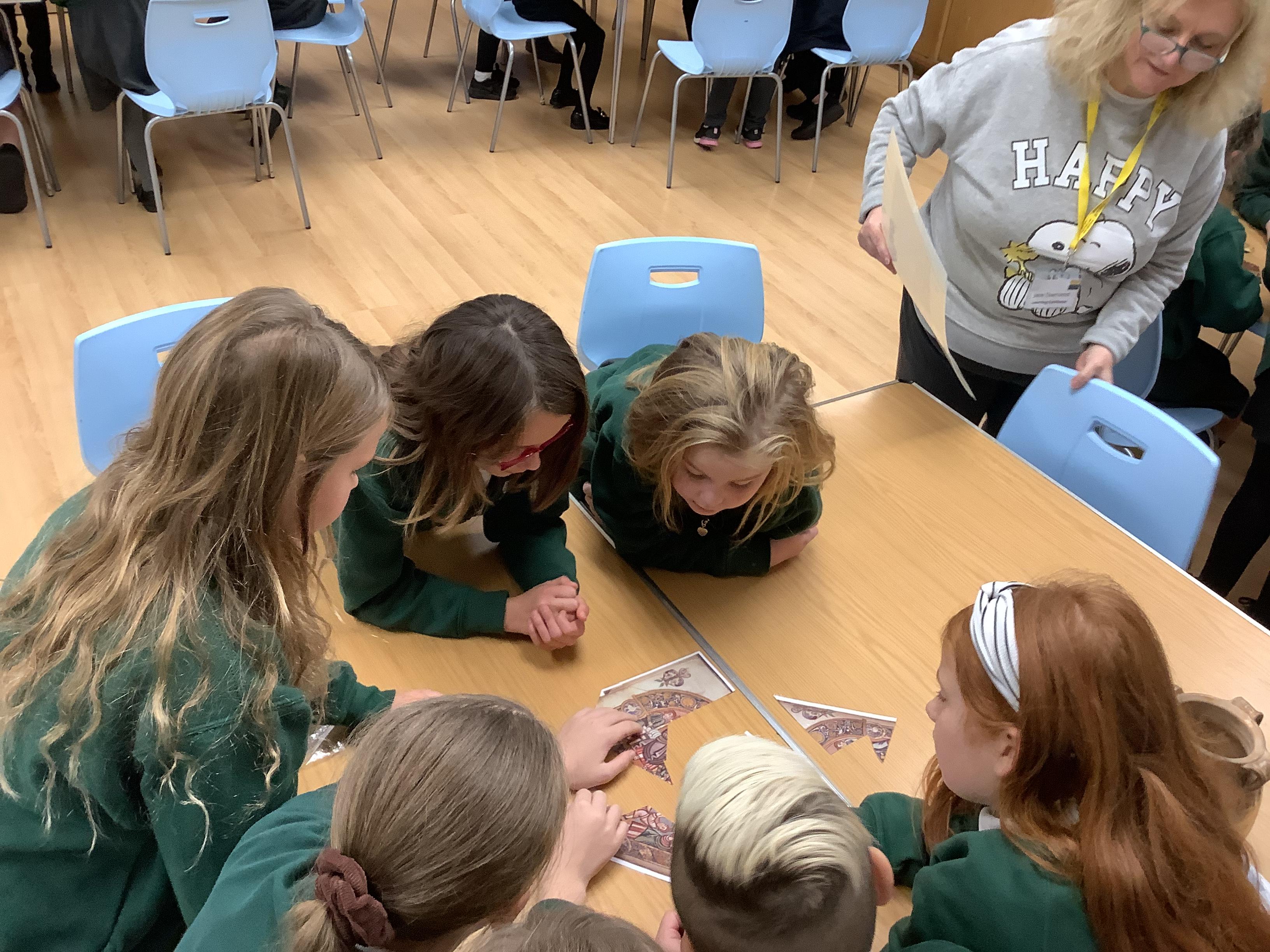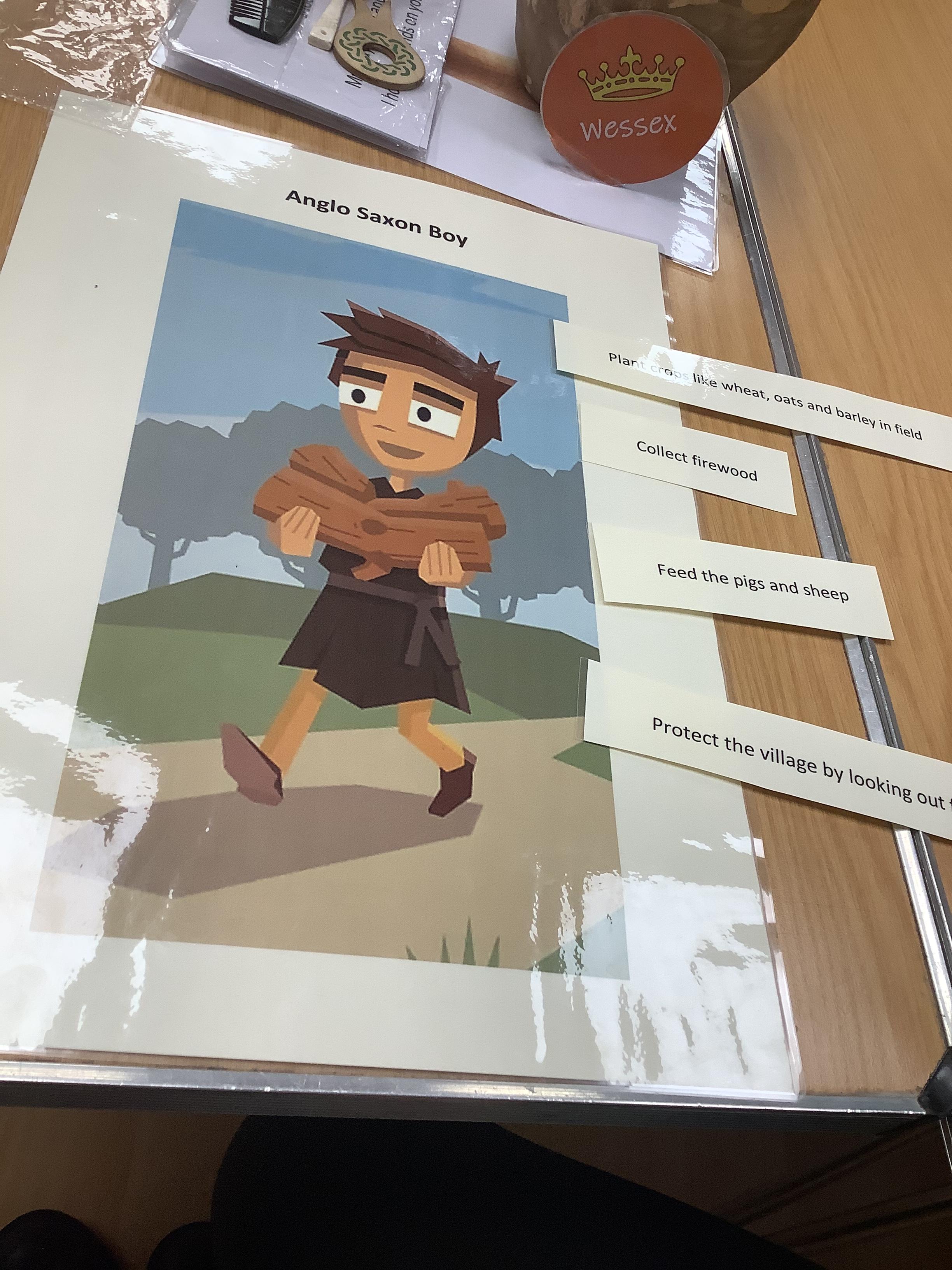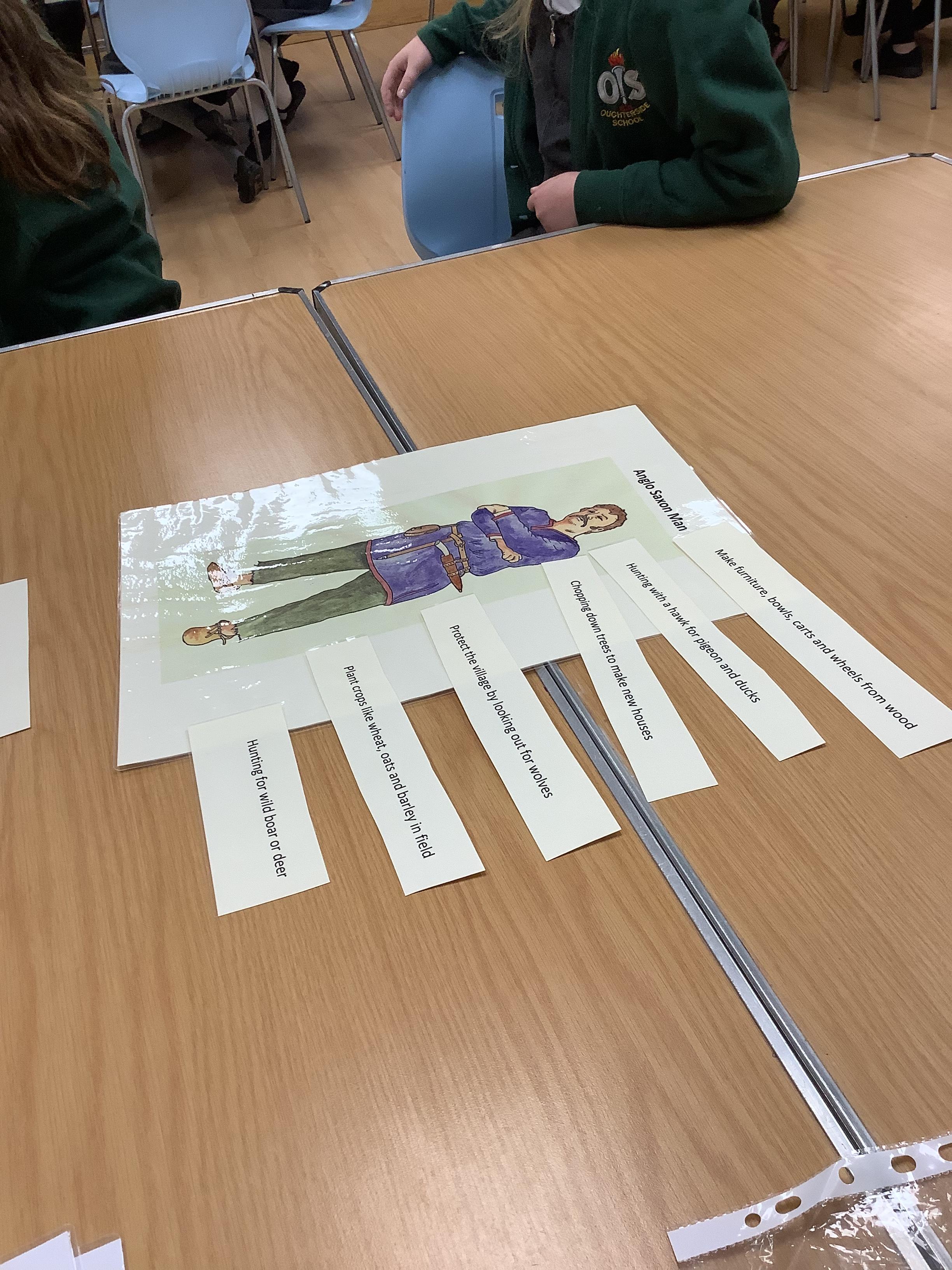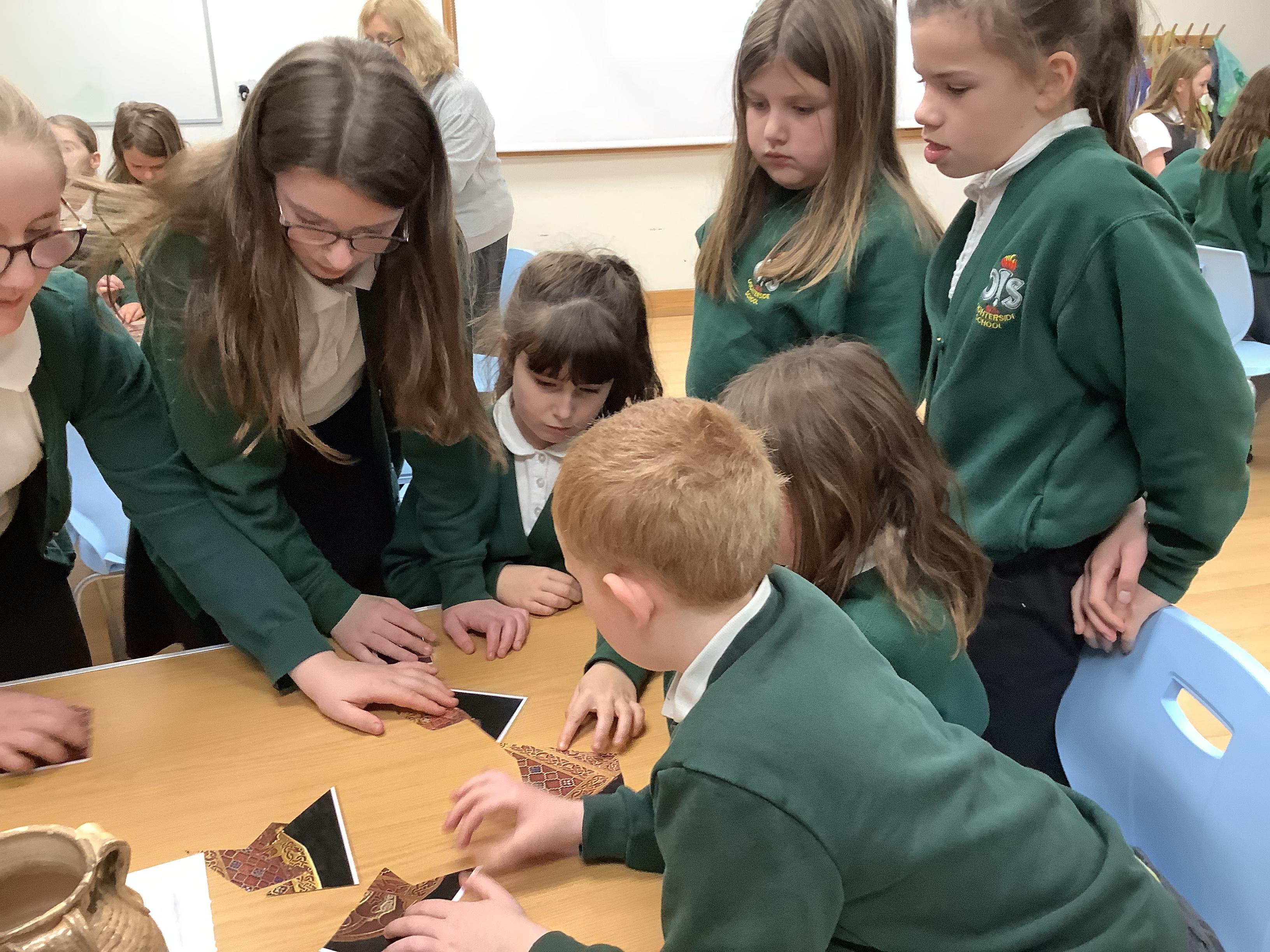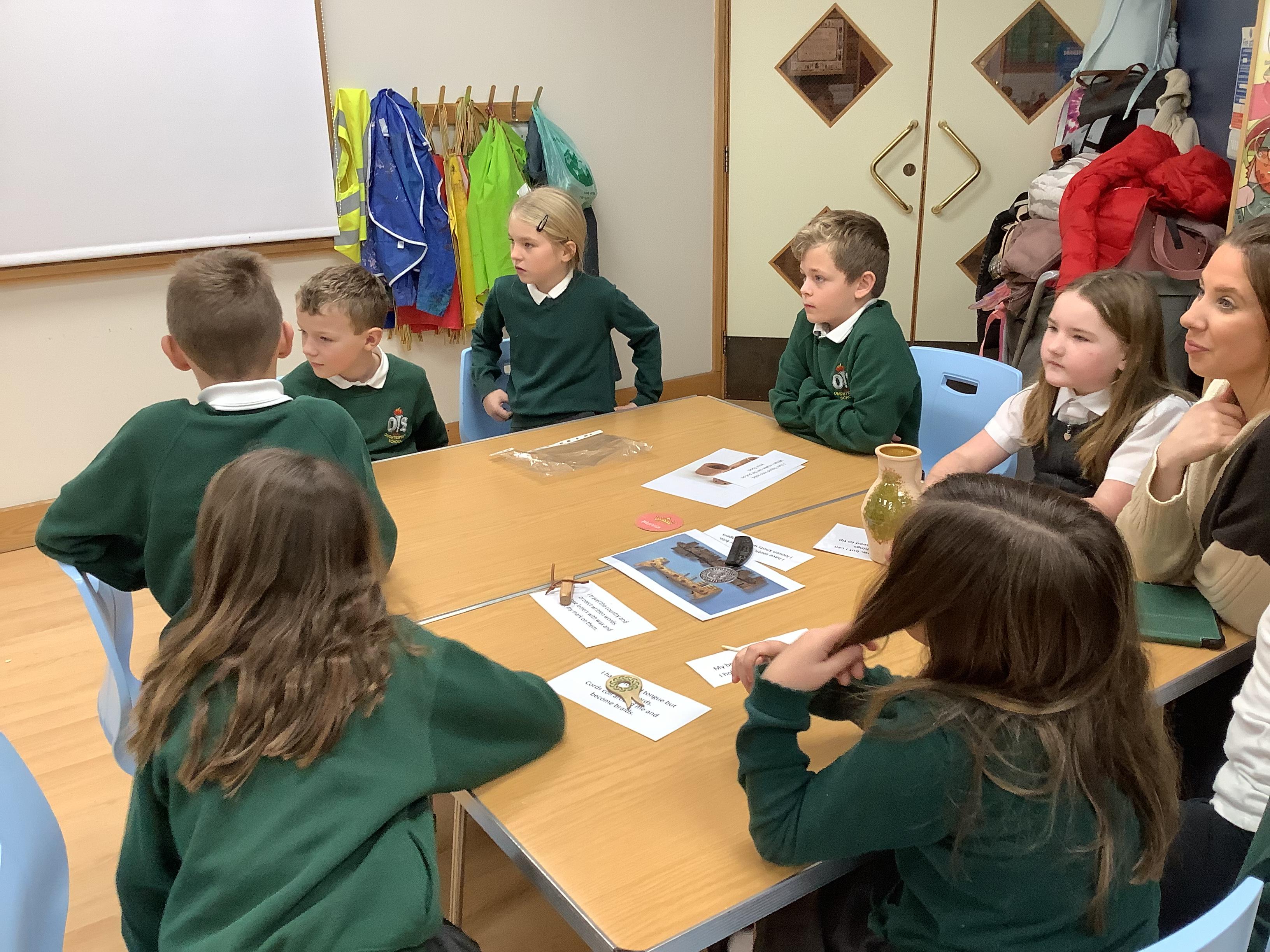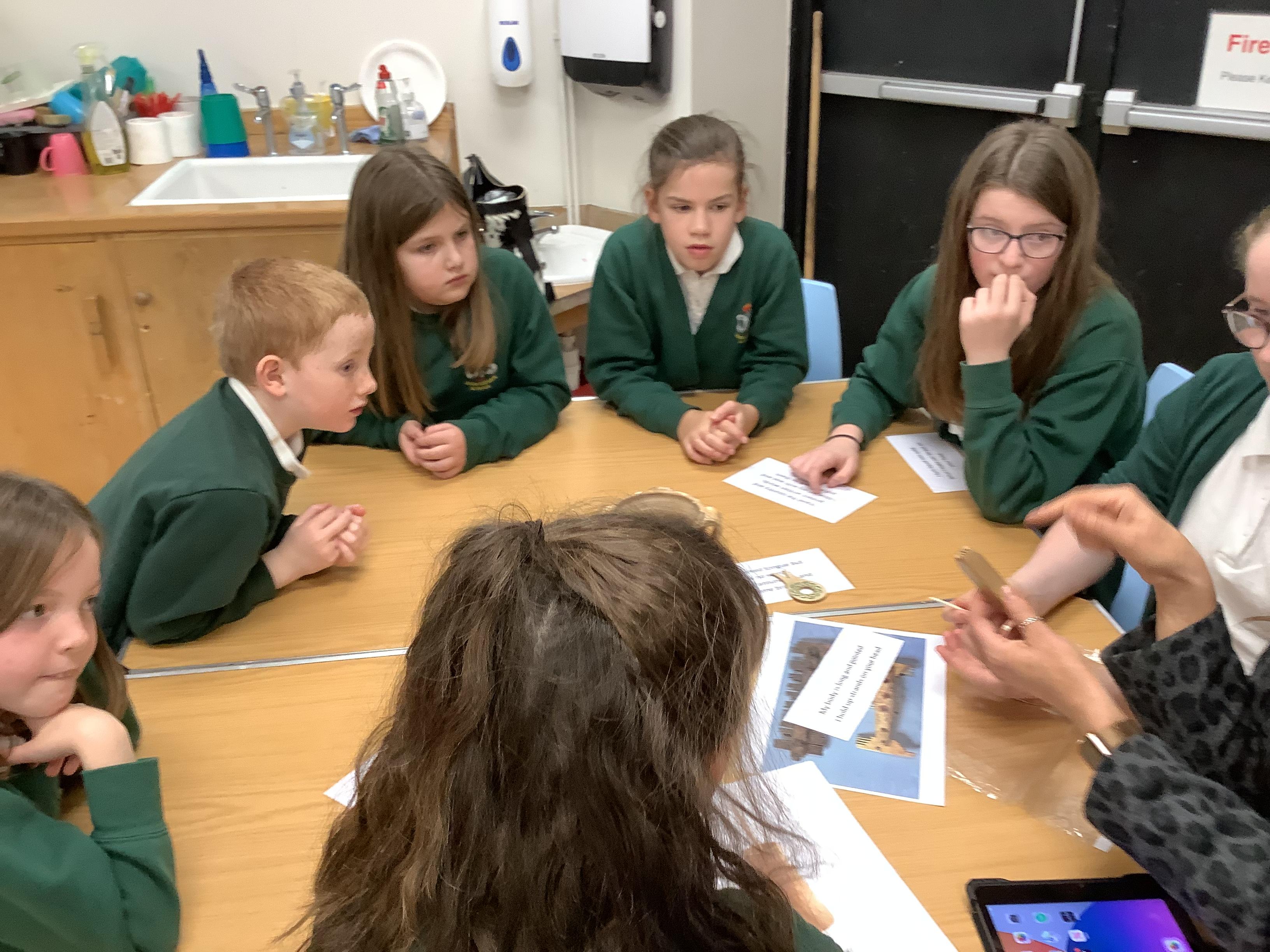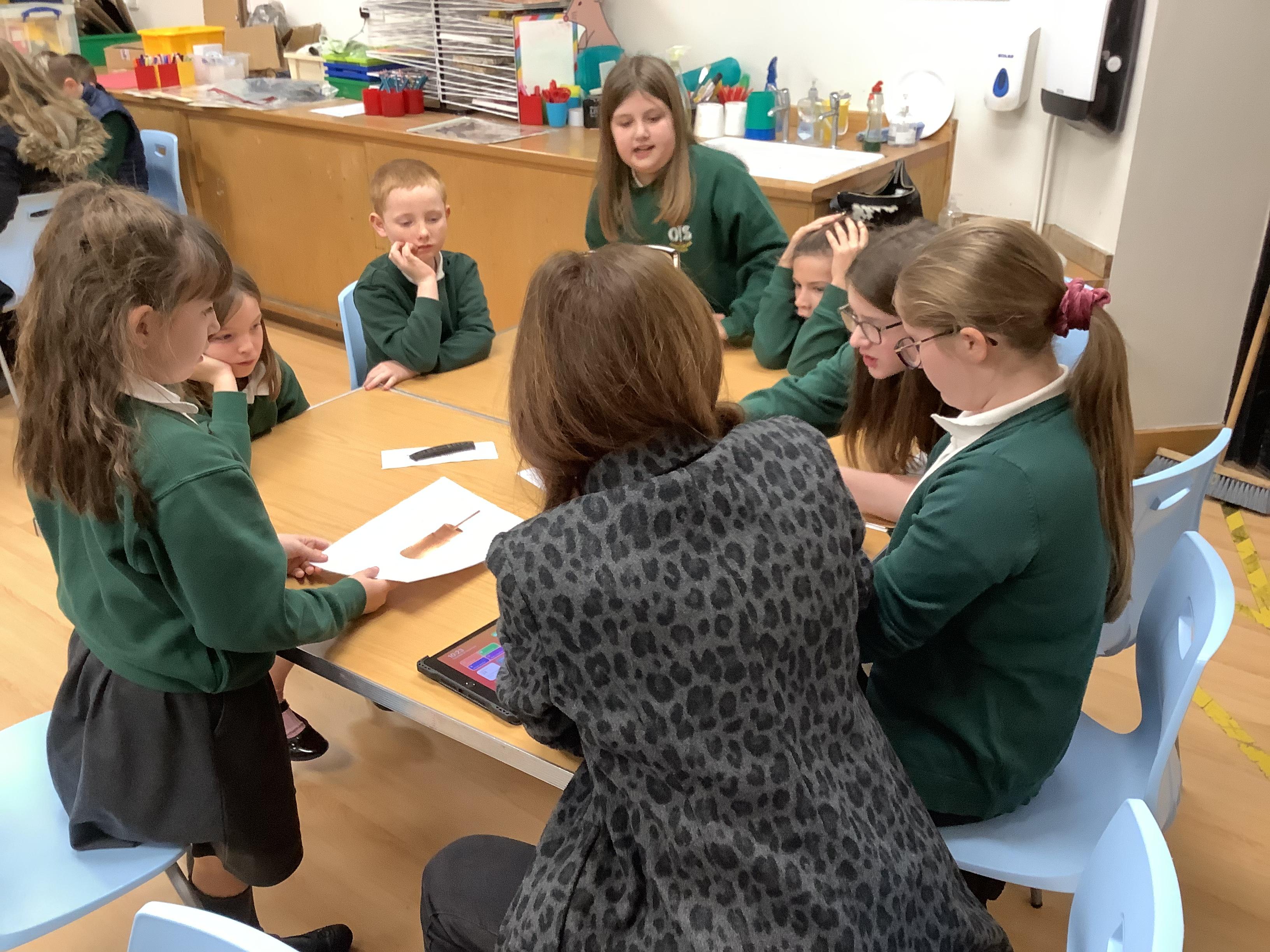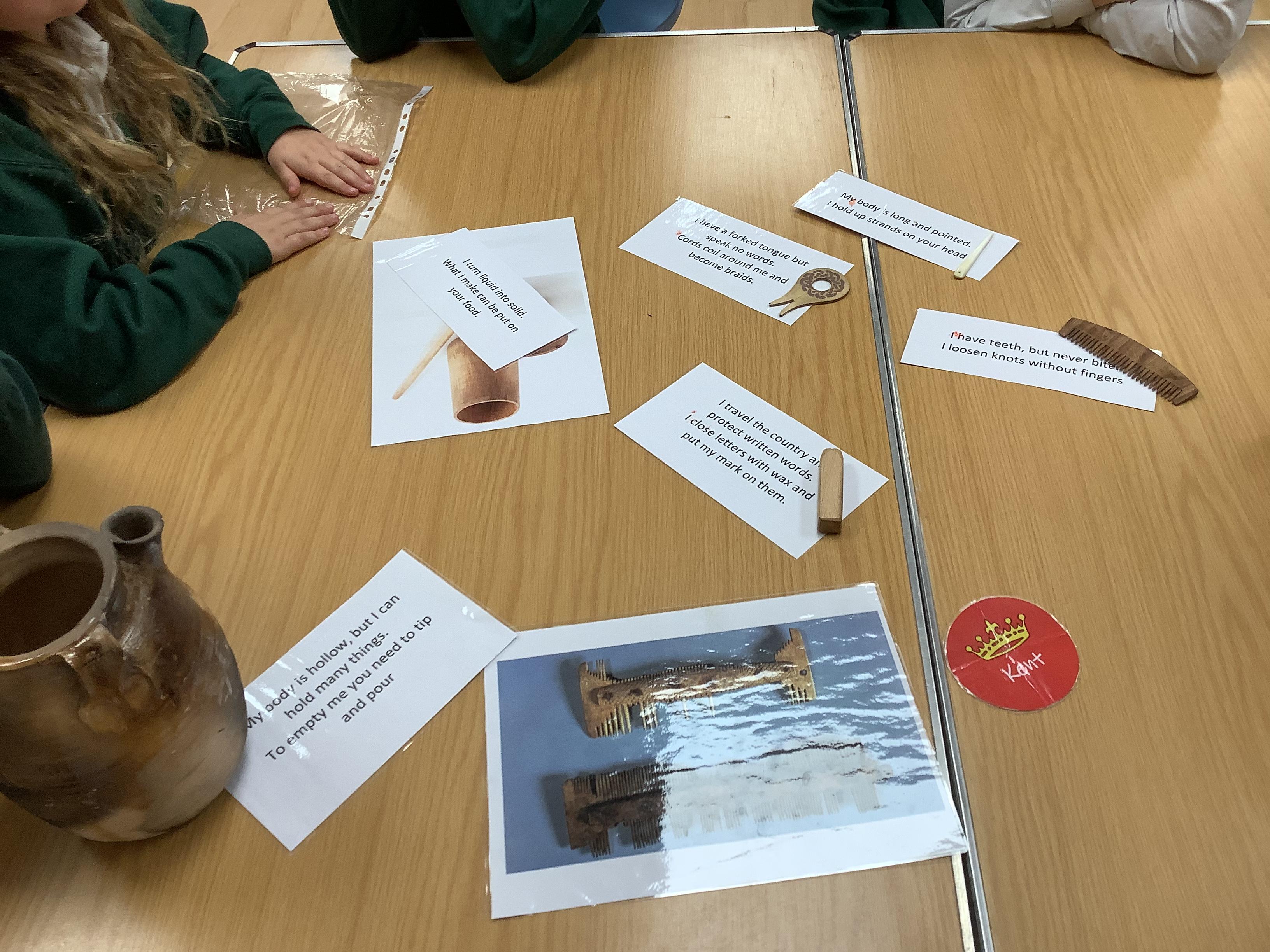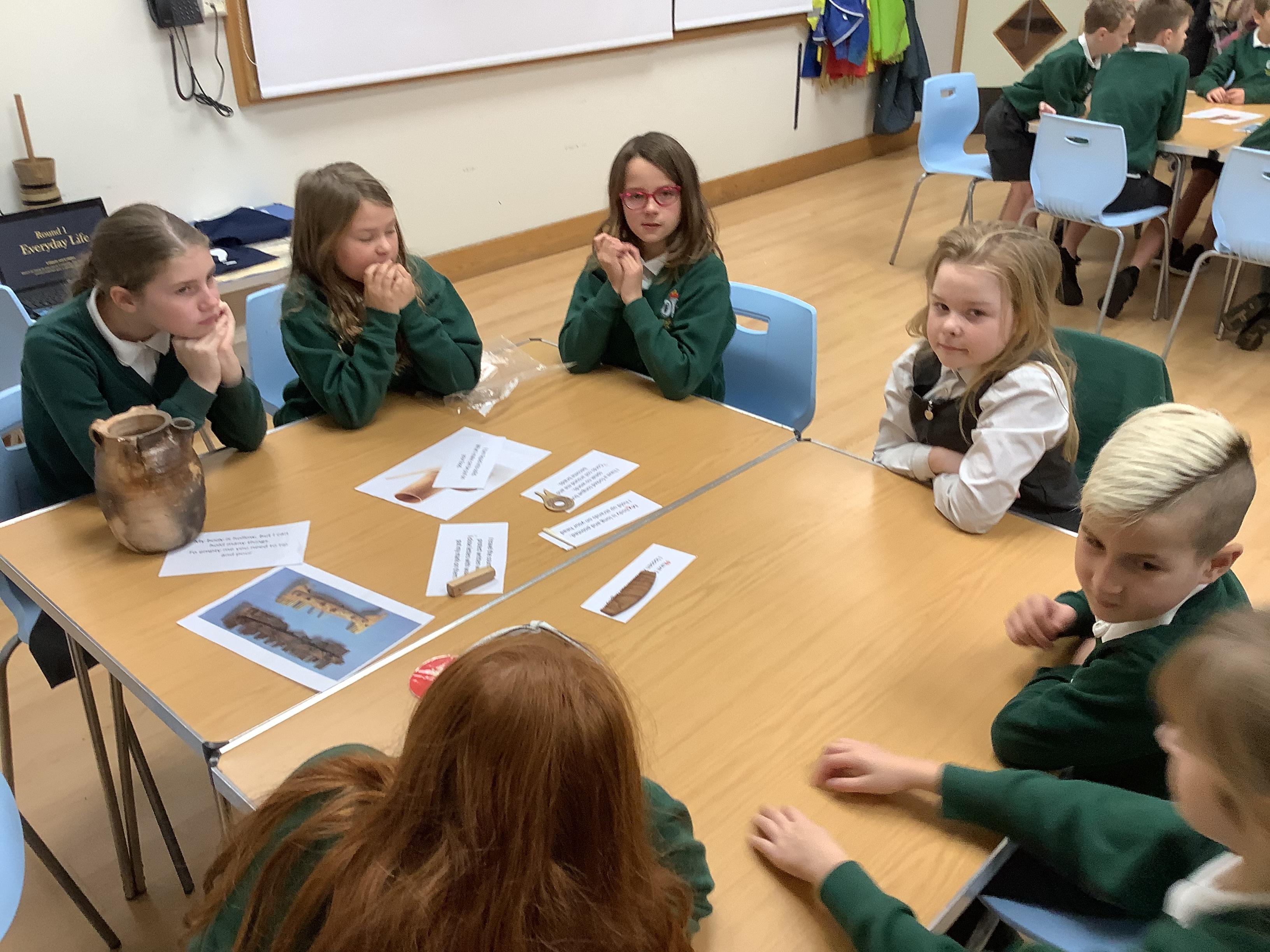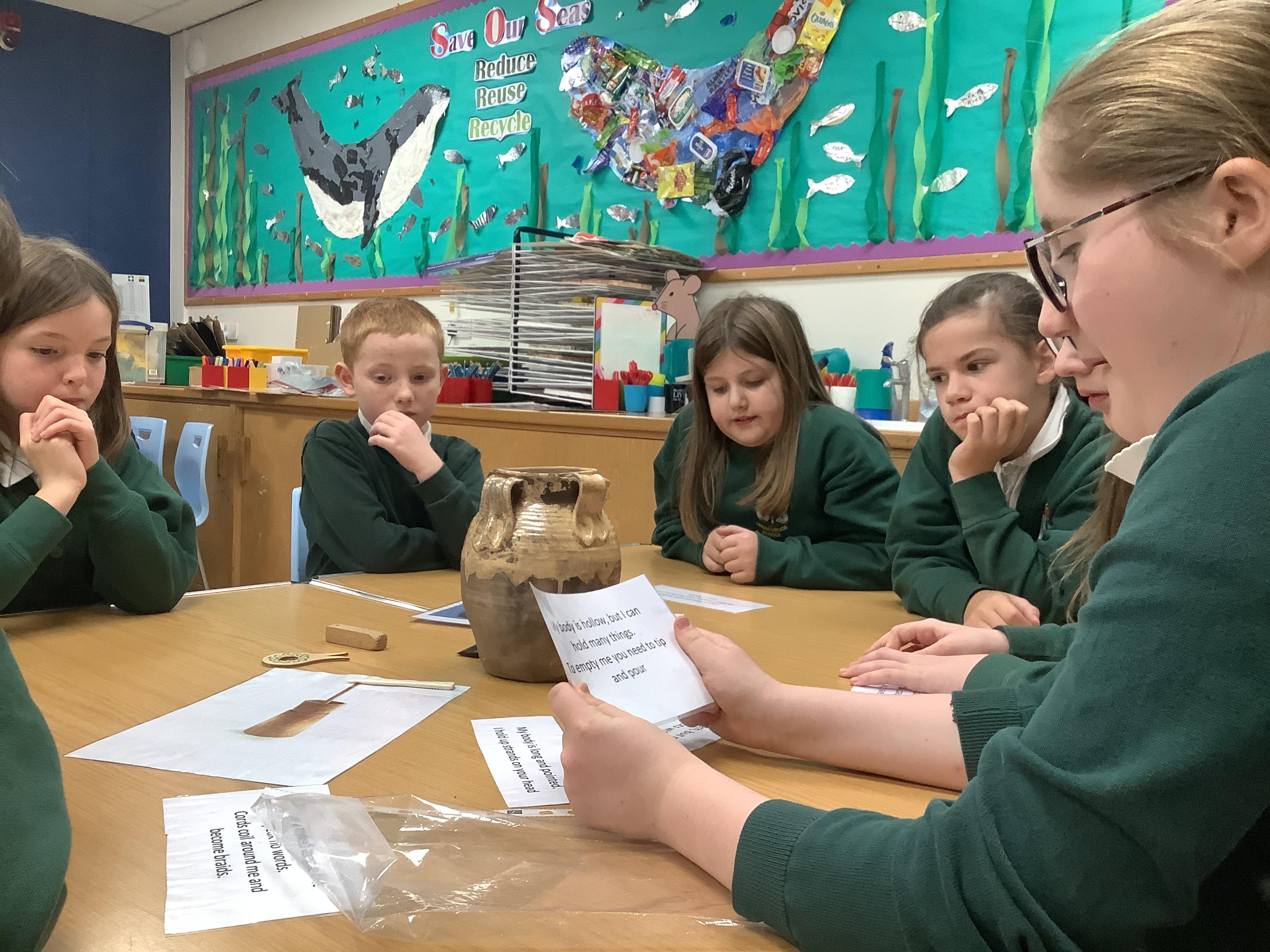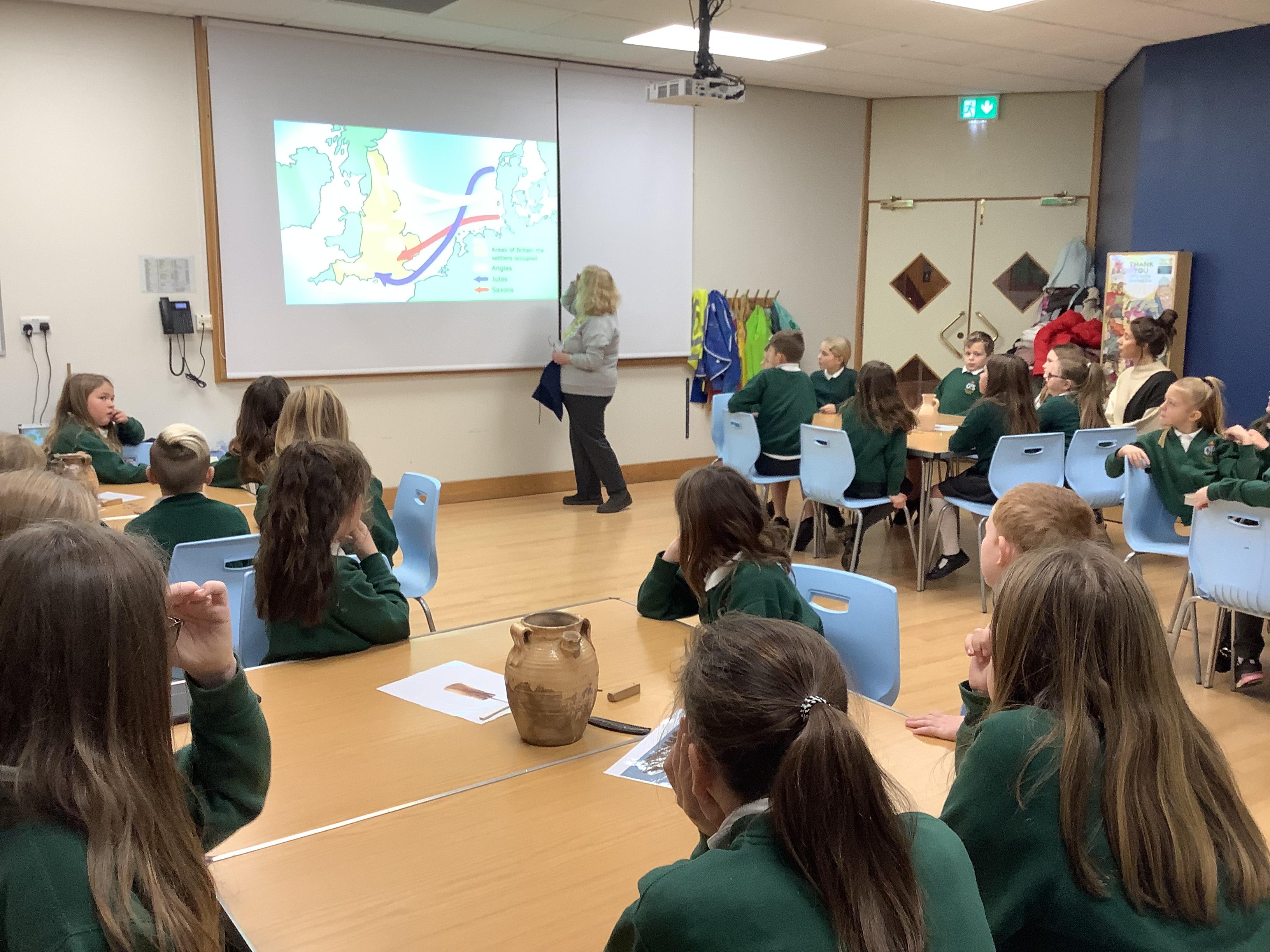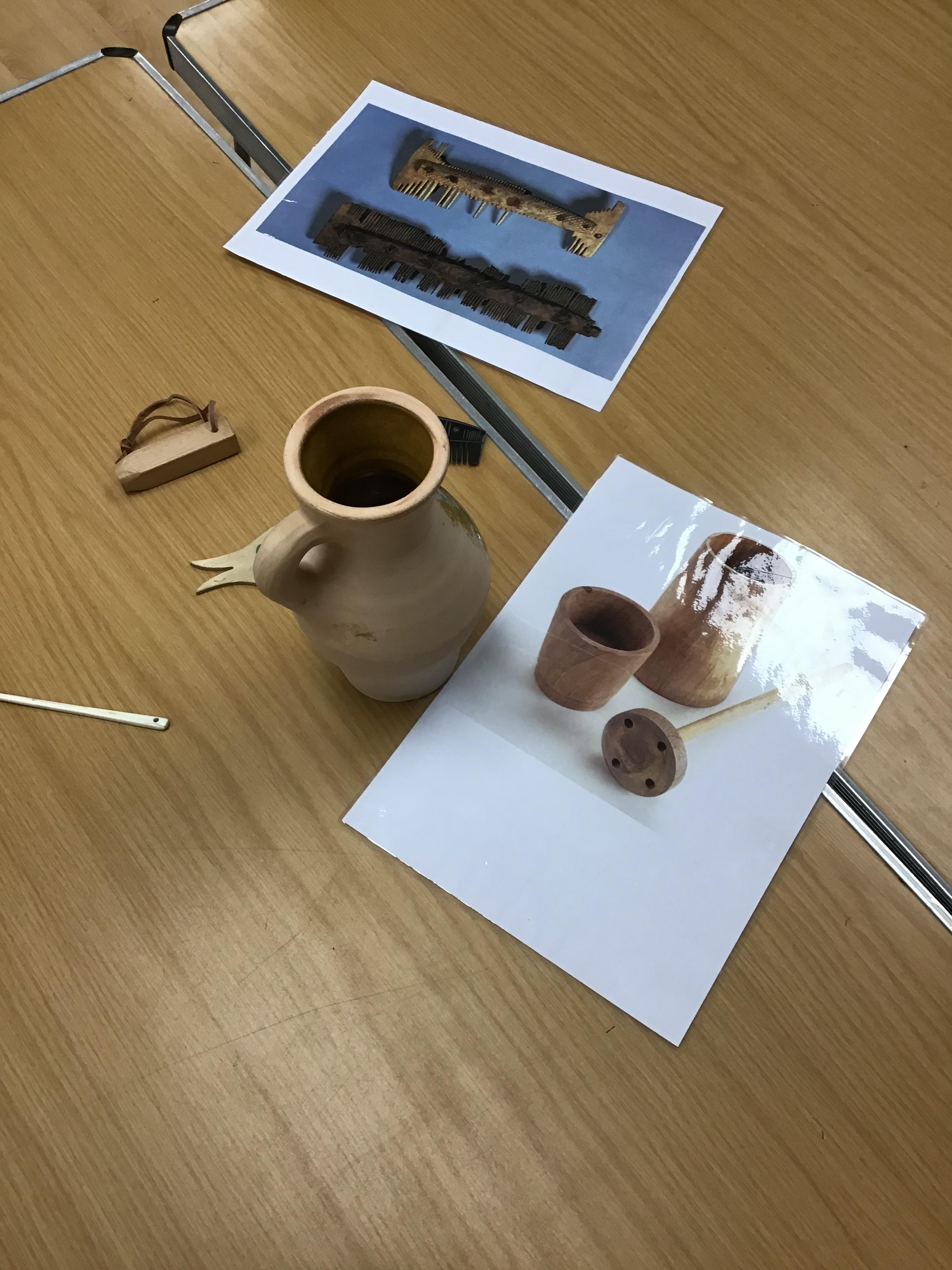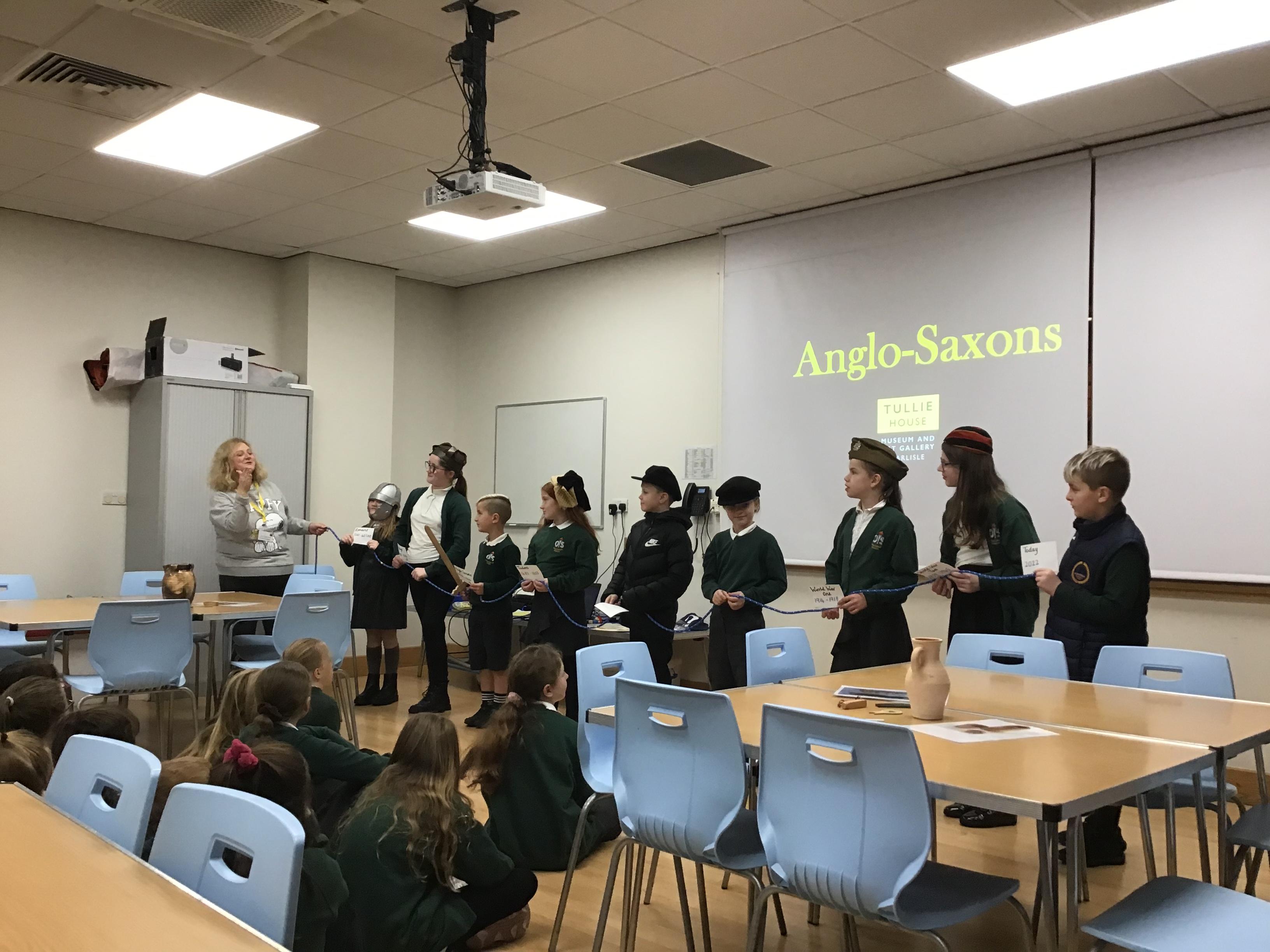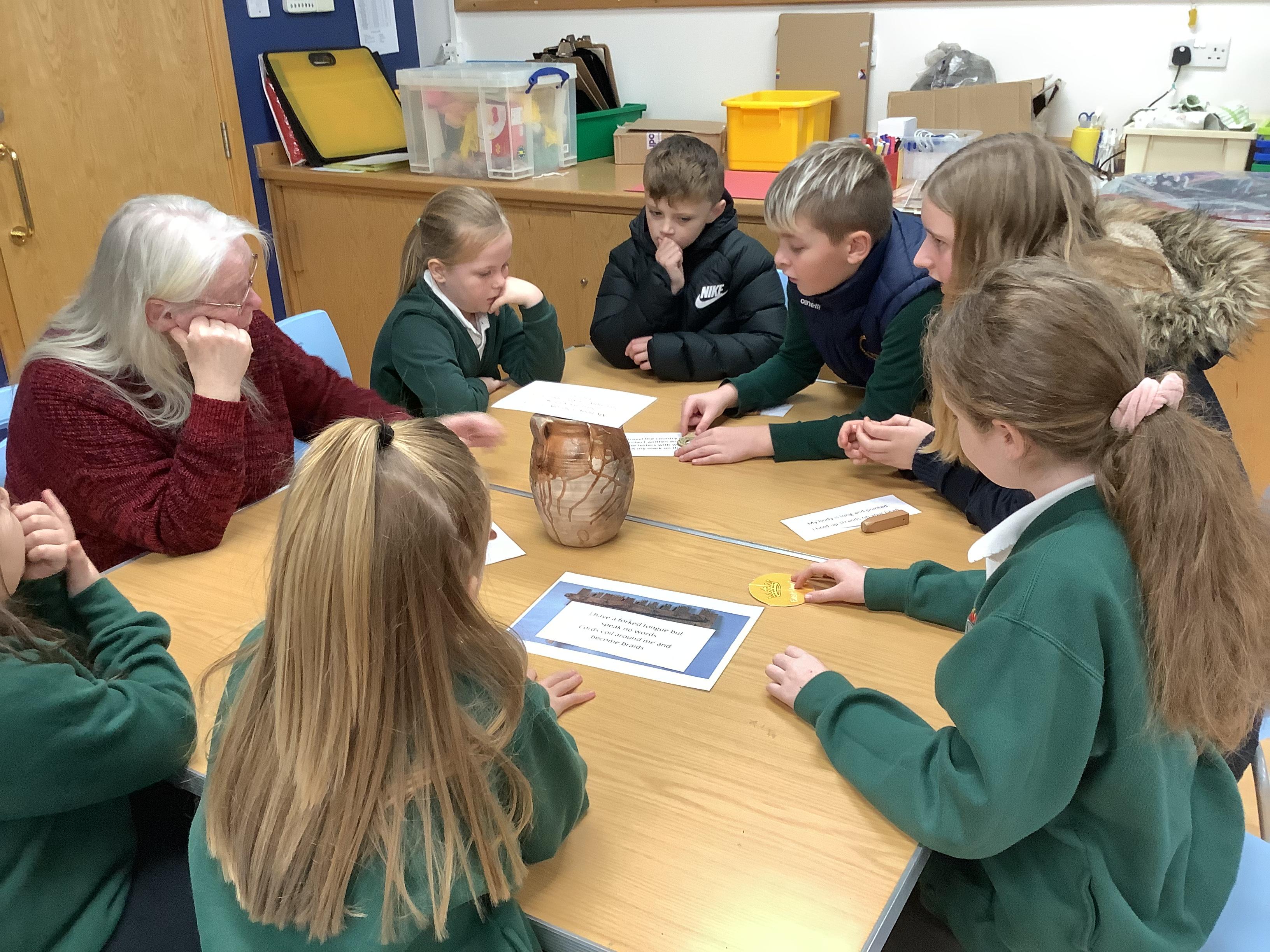History
Autumn 2 - Anglo-Saxons
This half term we have been learning all about the Anglo- Saxons.
Sutton Hoo
We were in role as archeologists today. Each team had to search for the pieces of artefact and then build it up in to the full object. We then worked together to decide what it was and who might have owned it. Some of us changed our initial idea when a clue was given.
Tullie House Anglo Saxon Workshop - 4th December 2024
David and Claire visited us from Tullie house to show us some real Anglo-Saxon artefacts.
Exploring artefacts
We had a look at some real Saxon artefacts. We also spoke about items in the resource box being from different eras and why we have to unearth Victorian artefacts to eventually find Saxon pieces.

Pre-historic artefacts study
Crummock enjoyed studying their pre-historic artefacts we borrowed from Tullie House and putting their archaeologists hats on and trying to figure out what they might have been.
Spring 2 - The Vikings
This half term we will be studying the struggle between the Vikings and Anglo- Saxons to rule the Kingdom of England.
We have a workshop in school lead by Moorforge at Gilcrux to launch the topic and a virtual Viking assembly ran by Tullie house to finalise our topic at the end of term.
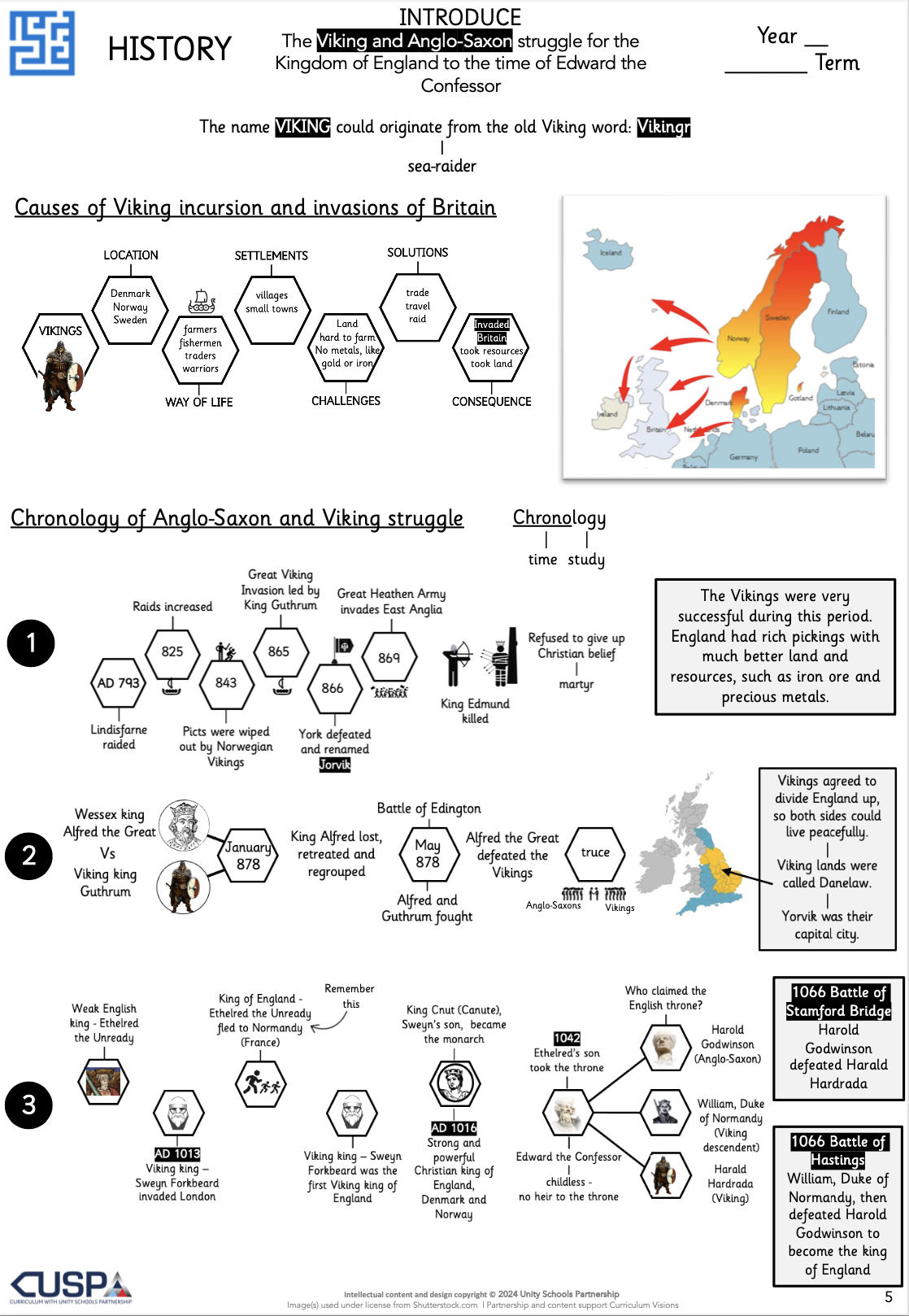
Tullie House Zoom Assembly - 19th March
As Crummock class approached the end of our Viking topic, we engaged with a Viking Assembly through Tullie House. This assembly challenged our pupils to test their knowledge of our topic and apply what they had learnt.
The assembly started with a game of True and False, and the host struggled to catch our class out! Everyone knew that Vikings didn’t have horns on their helmets and instead used horns to drink from during celebrations, they also knew that Vikings didn’t only fight and also had jobs such like farming. It was fantastic to hear our pupils relaying information from what has been a very interesting topic.
When answering a question regarding how we know about the Vikings, our pupils referred to artefacts found during archeological digs. This led us on nicely to a game where we guessed the artefacts from the materials left in the graves.
We looked at graves in Cumbria. Sadly not many artefact have been found here as our soil is rich in clay which means any organic materials such as clothing, flesh, wood etc decompose very quickly. We were however able to use clues from the left over metal and glass, plus the placement of the items, to guess what the artefact was originally. Again I was very impressed with our interpretations with us guessing each item correctly…. I’m sure we have some future archeologists here in Crummock class!
David also told us about how some of the towns local to us actually still have Viking names:
Caldbeck - cald = cold, beck = river.
Threlkeld - keld = clearing in a forest.
Rosthwaite - Ros = Horse
Viking workshop - 28th February 2024
Wow! What an action packed day!
We have learnt so much from the visit today. We followed the journey of Egil, a seven year old Viking whose day was a Viking warrior.
We learnt all about everyday life, learning about what would happen in a day of a Viking. We learnt about items in the home (looking at real Viking artefacts in the afternoon), food that Vikings would eat, and the jobs of everyday Vikings.
We also learnt about Viking battles and weaponry, observing the damage a real axe could cause with the use of a cabbage!!!
Trade was another key part of Viking life. We were able to strike our own Viking coins however these would only be owned by the rich. The everyday Vikings would exchange goods they had produced so to gain items they required.
Examining Artefacts
Can you children explain what any of these items are and how they were used?
Autumn 2 - The Stone Age
This half term we will be learning about Pre-history and the Stone Age. We will look at the different stages of The Stone Age - Palaeolithic, Mesolithic and Neolithic - and the changes between each stage.
The museum had mixed up artefacts from the Skara Brae site with other areas in the museum!
Luckily these were areas we had studied before, such as Egyptians, Romans and Victorians, so we were able to help!
History Day - 24th November 2023
As we have been learning about the Stone Age for our history day we completed lots of activities based around the Stone Age.
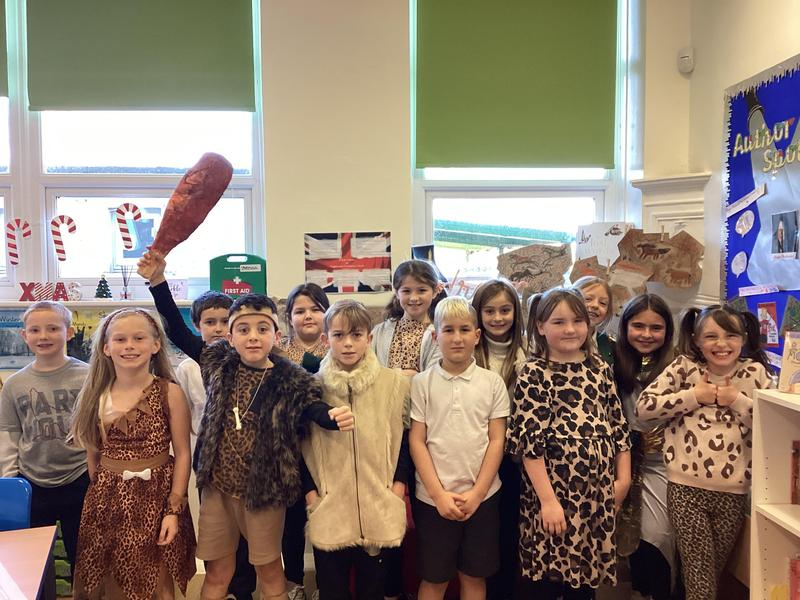
Take a look at the work we produced below!
We read the book 'How to wash a Woolly Mammoth' during English and wrote our own instructions in teams.
Remembrance Day
As part of our learning about Remembrance Day, we had a visit from Tim. Tim is extremely knowledgeable about the war and spoke to the children about WW2. He also brought in lots of memorabilia to show the children and even his WW2 Jeep.
Fabulous to see such great discussion amongst the children and lots of questions!
Celebrating Black History Day - 19th October 2023
For Black history day we decided to learn about Black History in Cumbria. We learnt about John Kent, the first black police man in Britain, who was first stationed in Maryport. Only 5 miles from school! He then worked in the City of Carlisle police.
We then looked at historical paperwork from the Cumbrian archives. A big thank to Dianne from the Whitehaven archives team who sourced useful resources for me to share with Crummock class. We found out that some rich Cumbrian families actually owned plantations in America and the West Indies.
We were able to study a document outlining purchases made by Sir John Lowther who built Whitehaven Castle and owned a plantation in Barbados. The children answered historical questions using the document. They found out that:
- John Lowther bought 118 slaves on this day; women, men, boys and girls.
- John Lowther also bought item such as cows, bulls, rum, and sugar.
- The slaves were sorted into job roles with roles such as drivers, field workers, and butlers.
- It was sad to see that the slaves were treated like objects, simply wrote down on the receipt alongside and food.
We also looked at a painting of a plantation owned by the Crosier family in Carlisle, seeing the difference between where the workers were housed compared to the owners.
If you would like to look at these documents at home, please use the link below.
If you would like to find out more about the passage of enslaved people from their West African villages to the sugar plantations, and it’s links to Cumbria, the Rum story in Whitehaven is an informative day out.
Documents from Cumbrian Archives
Summer 2
This half term we have been learning about Ancient Egyptians. This links with our English book for this term ‘The story of Tutankhamun’ so we have been linking these lessons.
We have used books and websites to find facts in non-fiction books. We used the contents page and glossary to help us find information on different topics and made a class fact book.
We also learnt about mummification. After mummifying a tomato ��, we wrote our own instructions on how to mummify a pharaoh.
Researching Egyptian Life
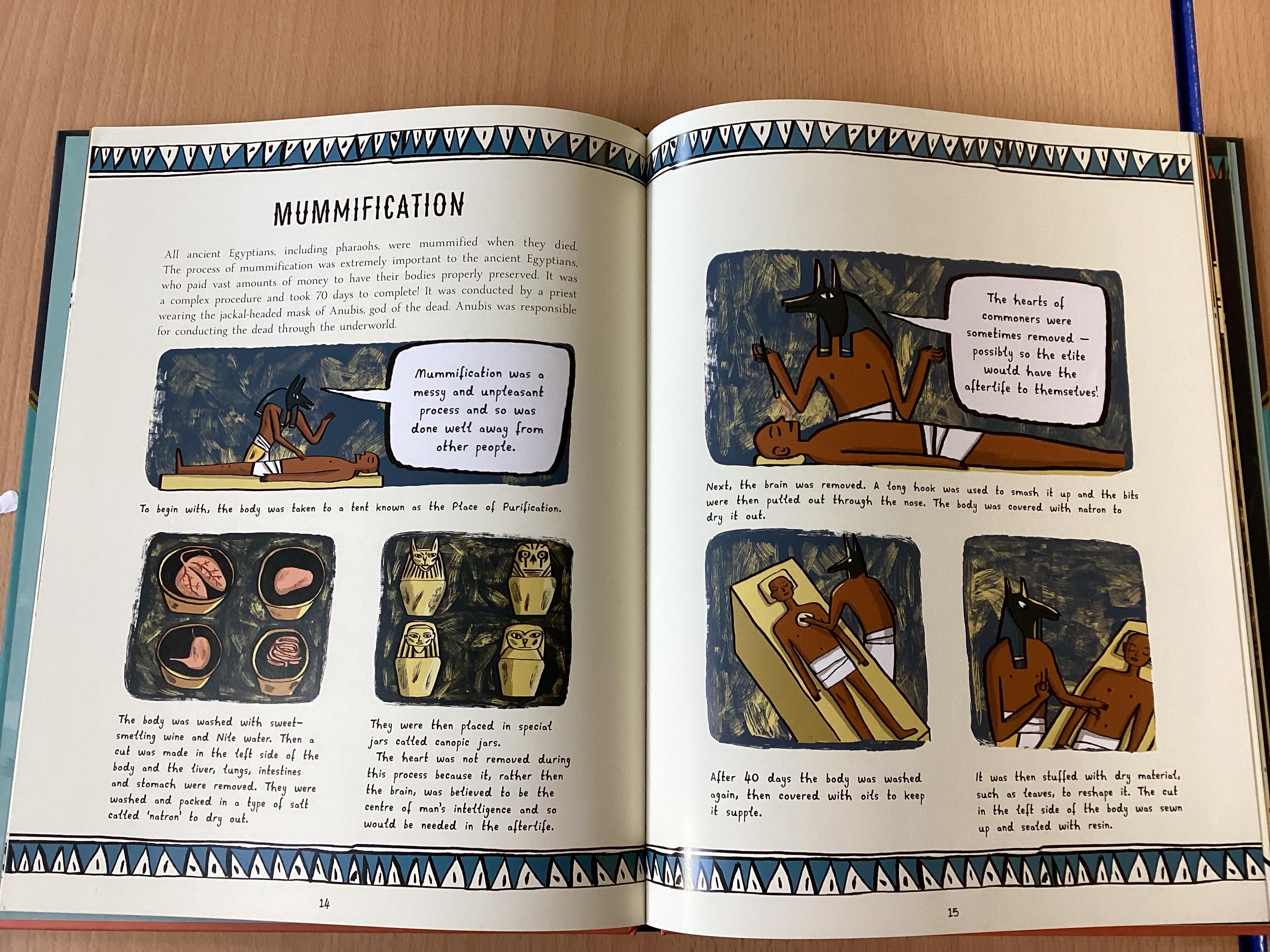
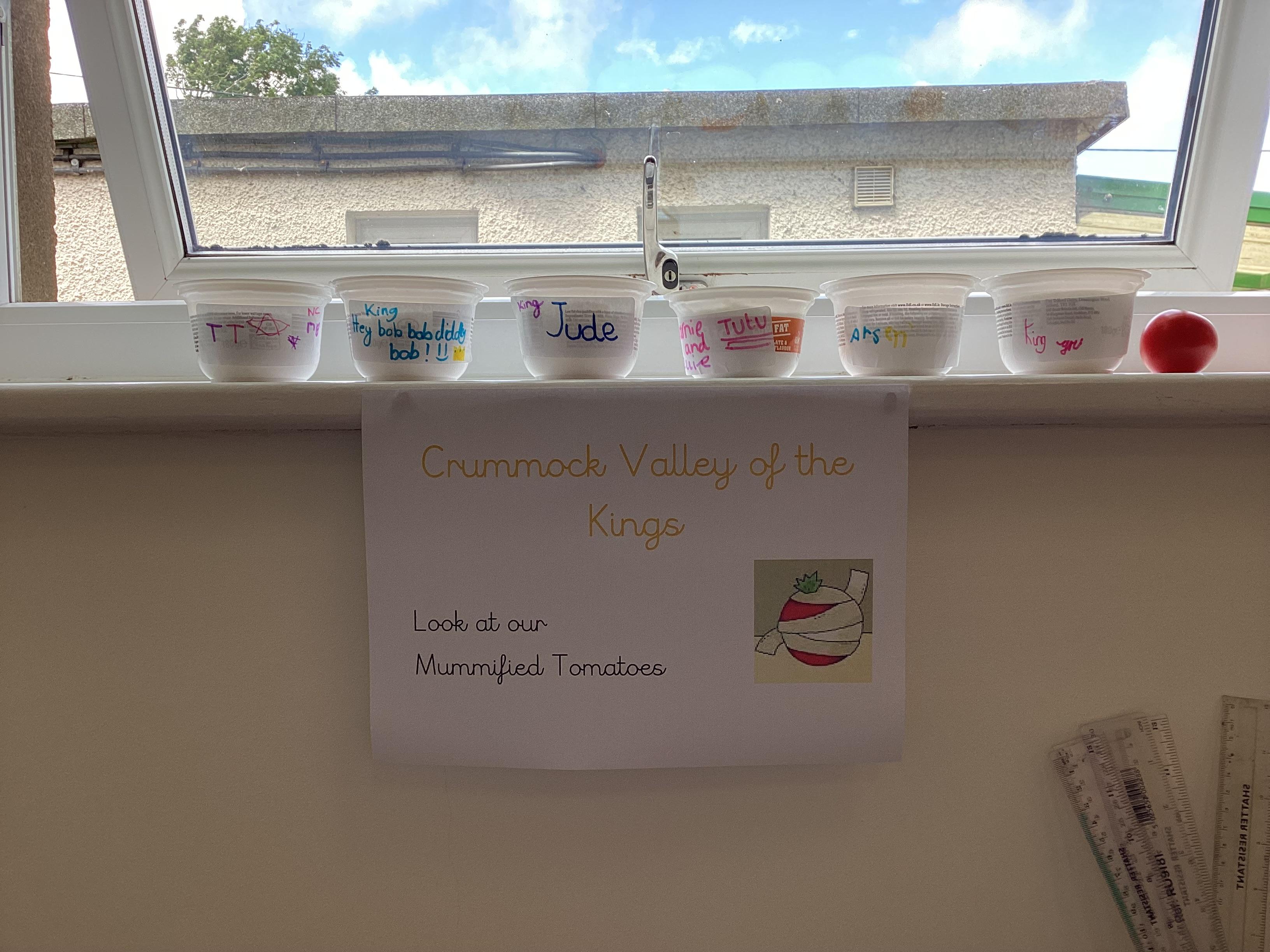
Independent Instruction Writing
Spring 2 - Romans
This half term we will be learning about the Ancient Romans. We will be researching Roman life, why Romans invaded Britain, the technology and architecture that the Romans brought to Britain, and Roman beliefs.
Fly over of Rome
We kick started our Roman topic with a ‘fly over’ of Rome to see what evidence of the Romans we could still see in left in Rome from 476 AD! We popped our our sunglasses and explored the city using our iPads ��
-
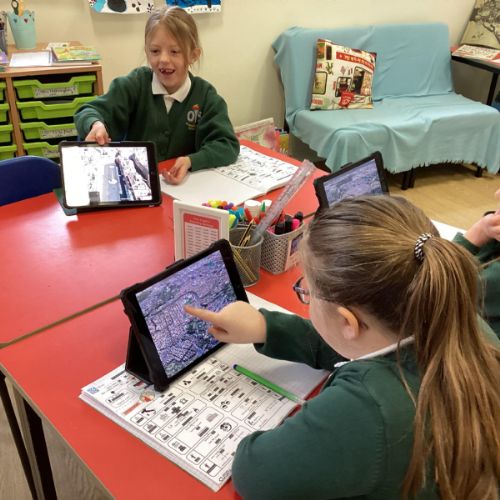
4E664DD1-2661-4831-BECD-498CD8A11F32.jpeg
-
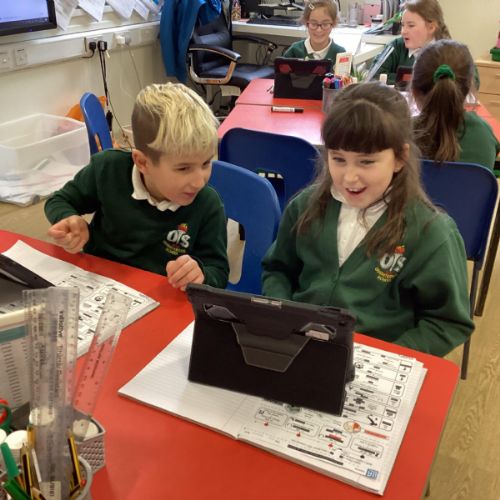
40138F9E-6A31-4BCE-9BD1-E97A93178151.jpeg
-
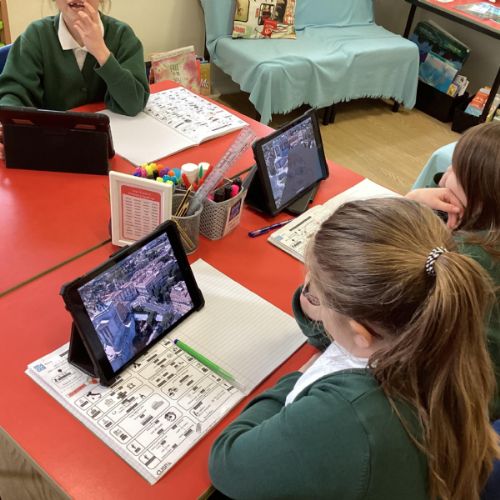
9B622994-578A-411E-ABD6-781C2E829B95.jpeg
-
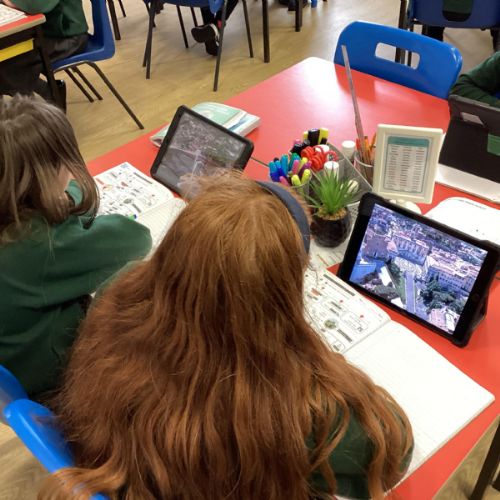
D9971A7A-9AE1-47AC-998A-61EA0D7022AA.jpeg
-
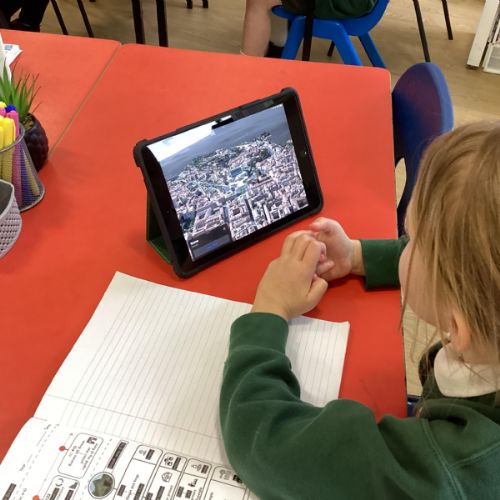
C65F01B8-304E-4A18-8D60-B0A375E386E9.jpeg
-
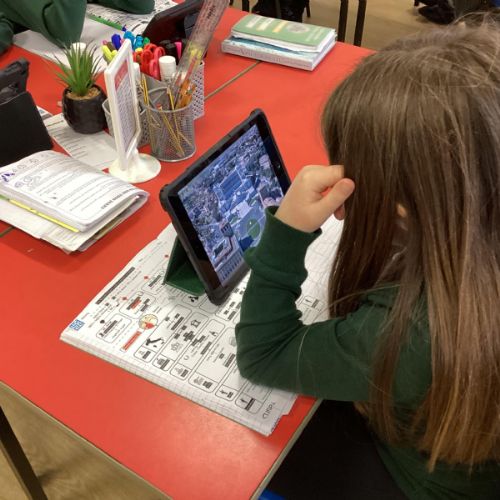
5179F487-AB45-45A0-8A00-17BB04AB1145.jpeg
-
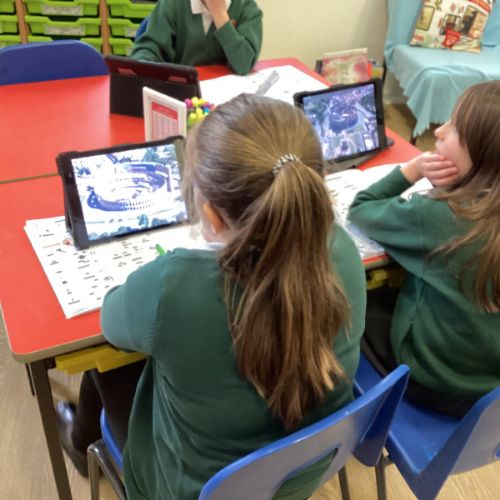
B8399434-4DE0-490A-B7C3-96BED3C22B05.jpeg
-
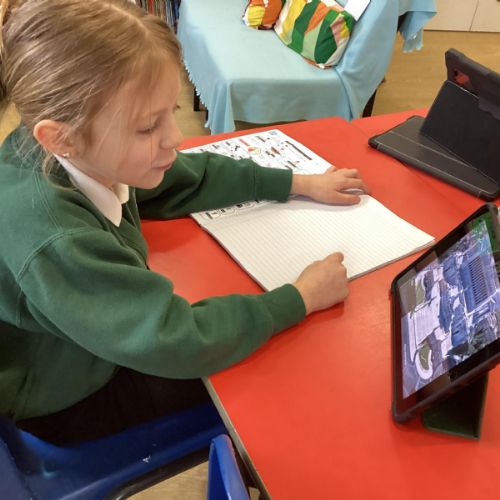
F6EB3A2C-87E2-4D35-8E46-8B281980605E.jpeg
Tullie House Roman Assembly
David lead a session on the Romans via zoom. He spoke to the children about Roman daily life. The children had remembered lots of information from our previous lesson and were very excited to speak to David about how advanced the Romans were in comparison to Britain.
He also spoke about the invasion of Britain and talked about local Roman sites!
He shared lots of interesting facts about how the Romans impacted Britain.
Did you know that Britain comes from the Roman name for us, Britannia. Britannia means ‘land of tin’ which is one of the reasons Romans came to Britain, to use our tin and other metals! They also brought rabbits to Britain as it was their favourite food to eat! They also loved to eat Honey Roasted Dormouse! ��
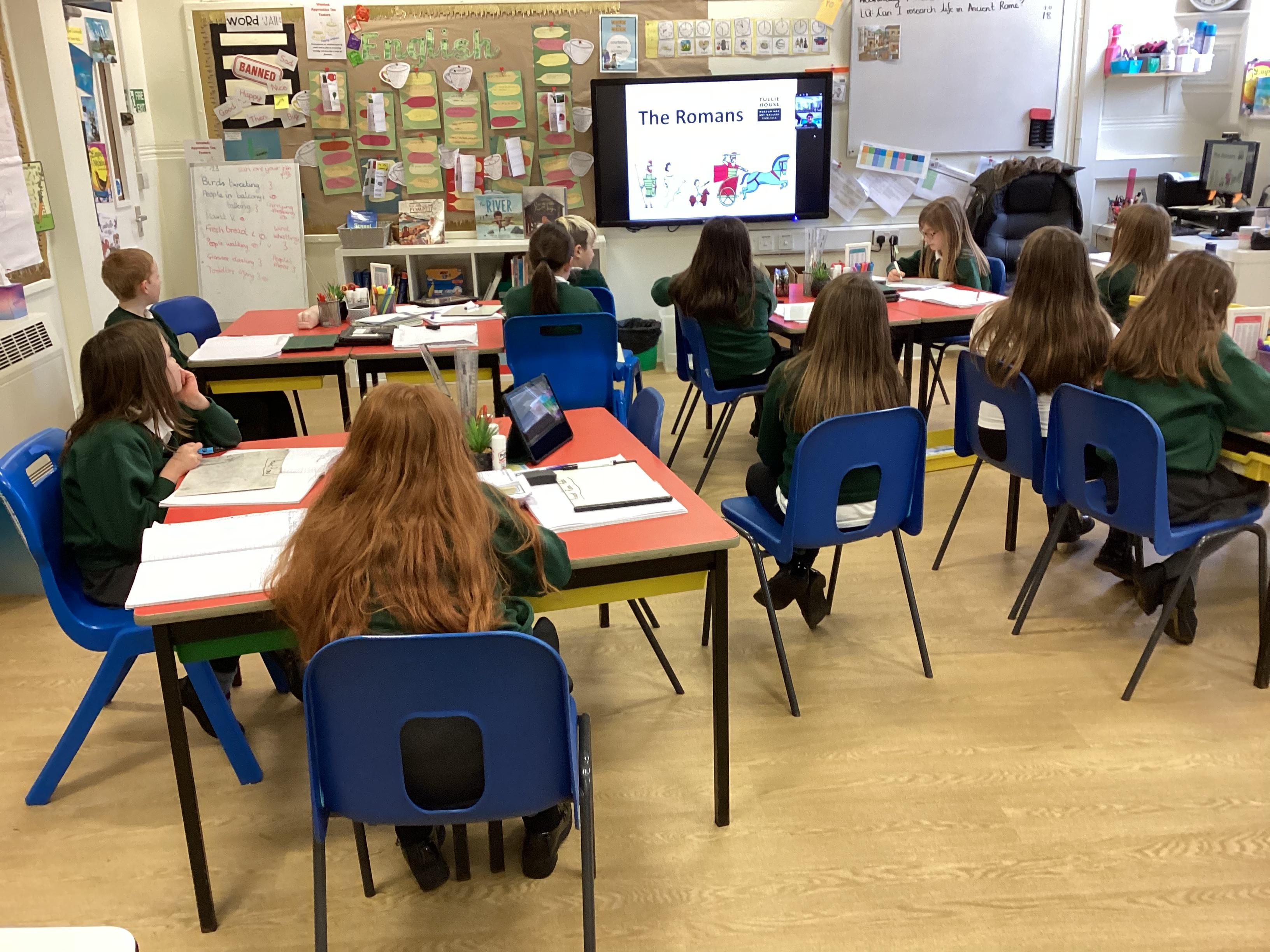
Senhouse Roman Museum
We had a fantastic time at Senhouse Roman Museum learning about the Roman settlements along our own coastline. Who would have thought that we had Roman Forts only 10minutes from our school!
We learnt all about how the Romans used sandstone found on our coastline to build their forts and alters. We also found out why we had forts along our coastline, looking at the remains that are still visible and comparing these to models of the original fort.
As the promenade was a short walk from the museum, we walked down to see if we could spot the sandstone that the Romans would have used to build the artefacts in the museum.
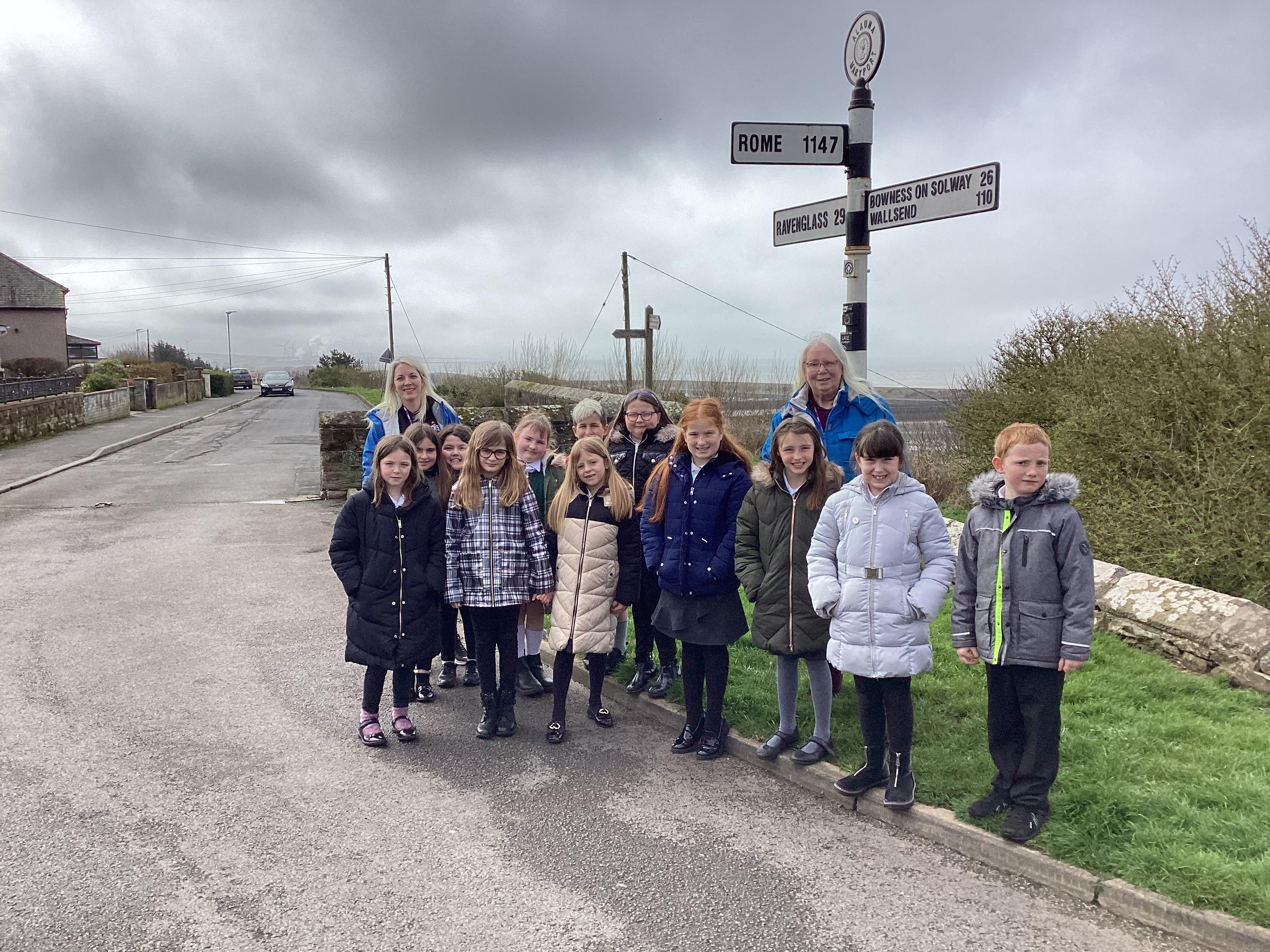
Exploring The Museum
Meet Oughterside Roman Army
-

33D47FDE-7461-47A0-BB48-6BE95F1F9C90.jpeg
-
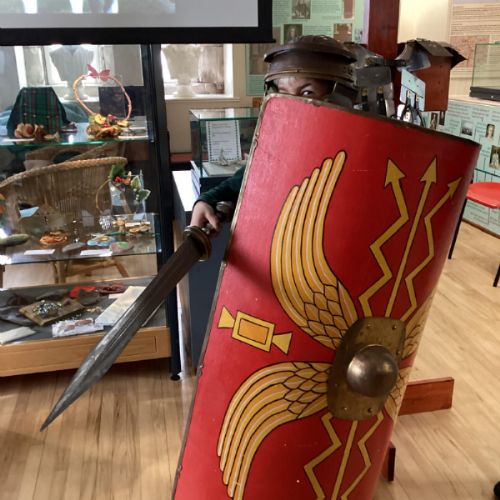
CFAE0D47-95EF-446C-A42C-D36C2641F971.jpeg
-
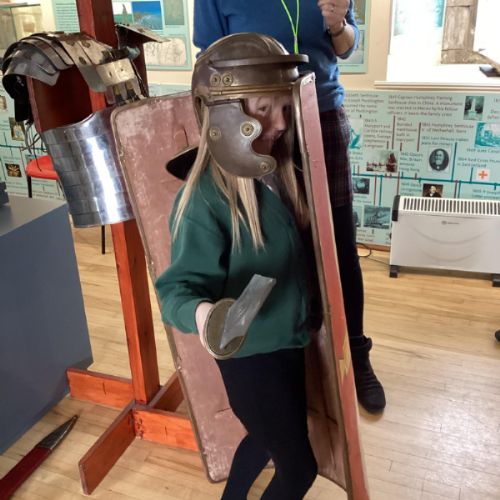
9457659D-8776-4473-A0AB-BA45B35F5189.jpeg
-
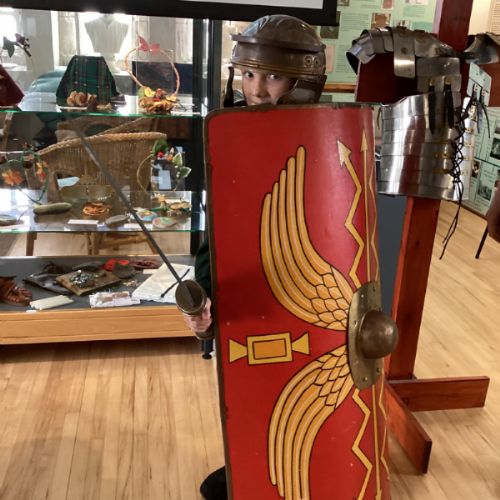
171161F4-18B0-44EA-904C-7F33E05BB539.jpeg
-
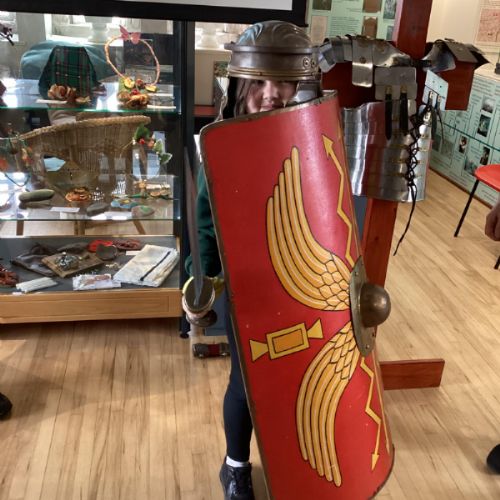
8592FFB7-D06E-458A-827A-433FA3A46E54.jpeg
-
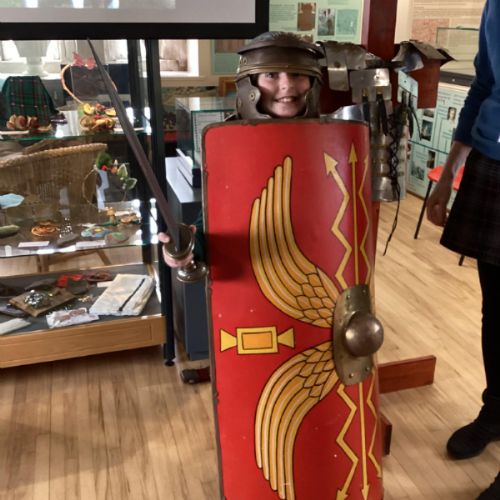
3518F614-D842-40BA-ADDA-6397388C1292.jpeg
-

9041B4E7-861B-4C9B-839A-681E1CD8E40E.jpeg
-
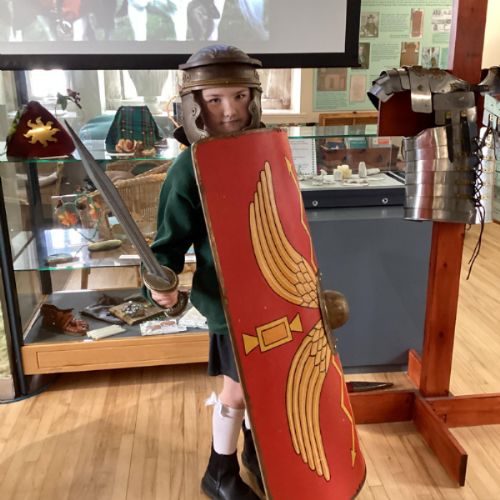
3F5CDFAD-5BE6-46C7-83F0-5C790557E0E1.jpeg
-
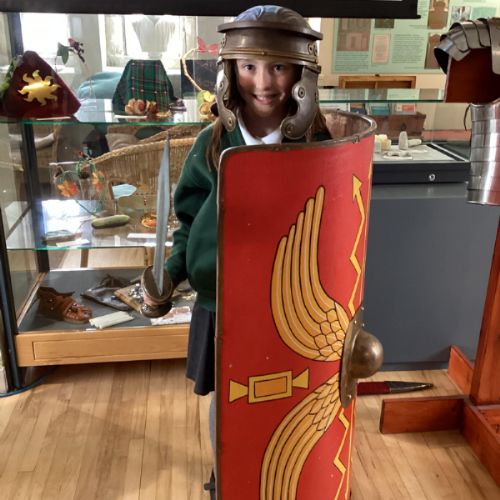
94841C0D-26C2-4E33-A89F-013714B86710.jpeg
-
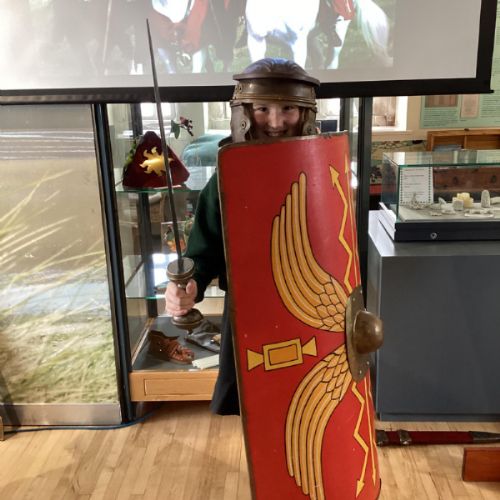
1BC5D8F9-6422-41B3-A980-D58C1C2A3D99.jpeg
-
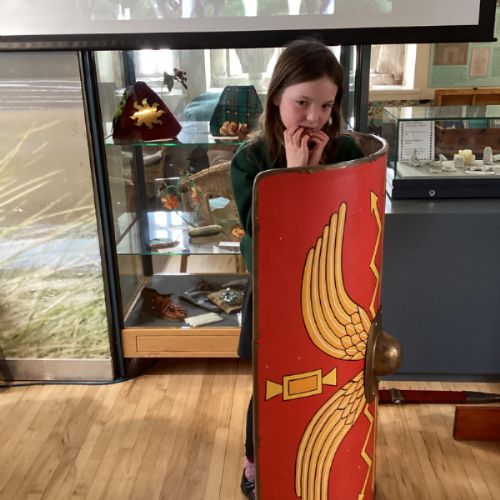
E9B11521-FD19-4F7B-A59D-2571280EECE0.jpeg
-
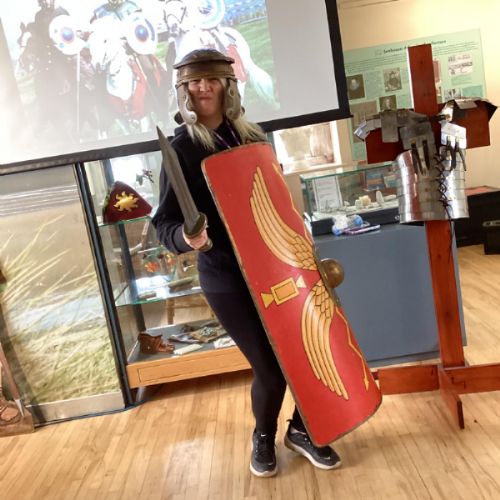
D496B7AB-280D-4D5B-A09C-409DC60BEE2B.jpeg
Exploring Anglo Saxon life
Enjoying learning about the Anglo-Saxons at Tullie House
We enjoyed using our history skills to look at the artifacts and try and figure out what they told us about what life for the Anglo-Saxons and compared it to our lives now.
